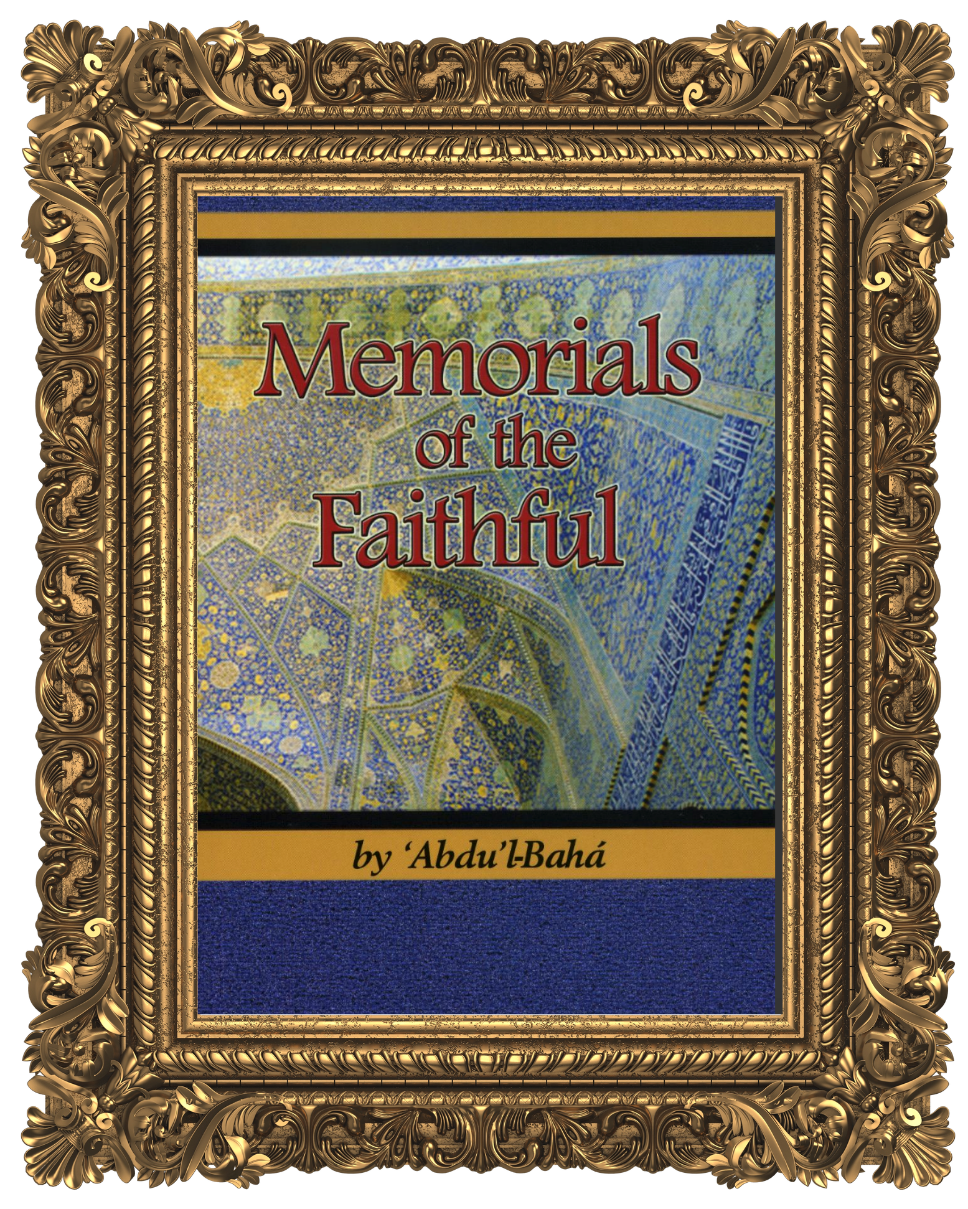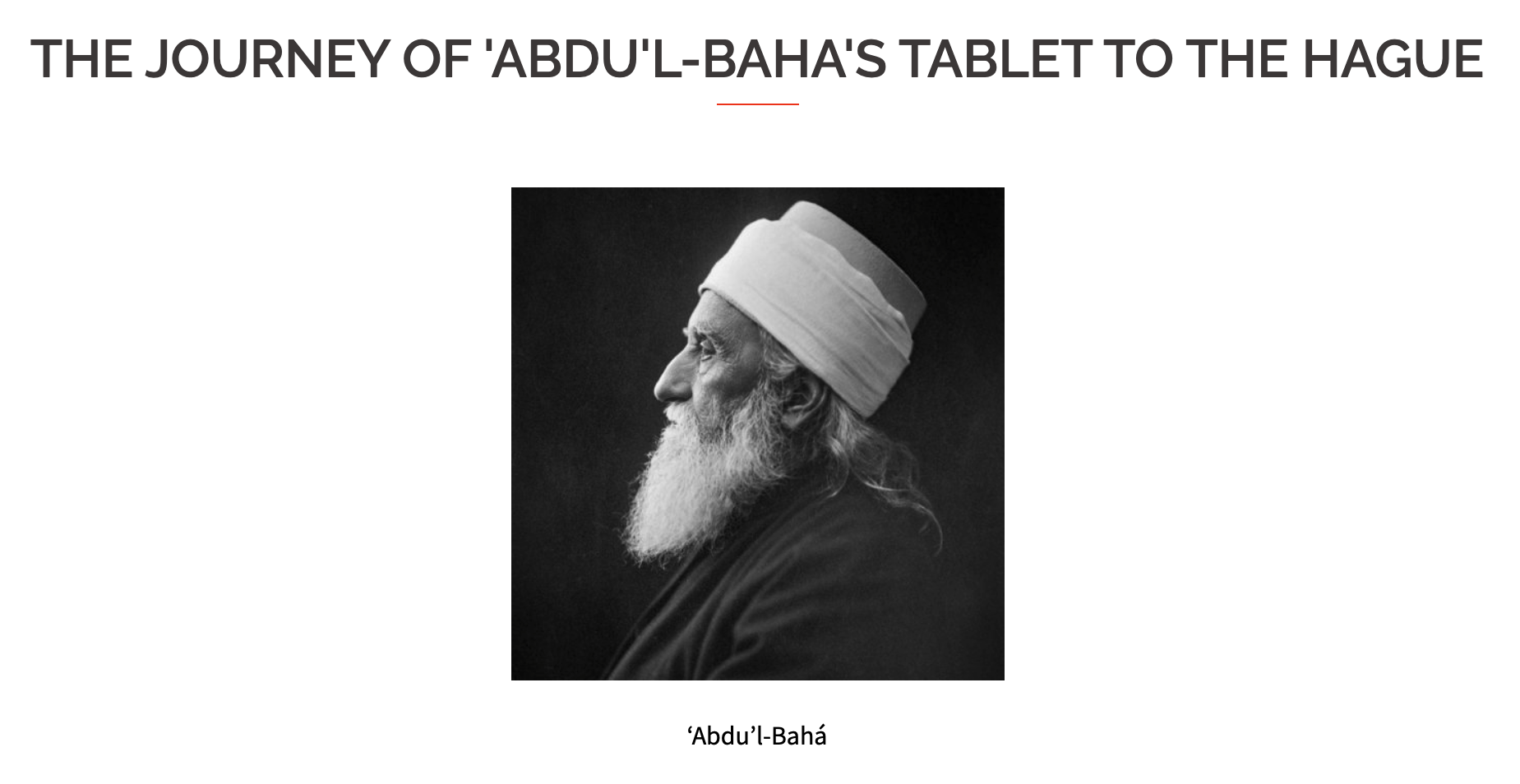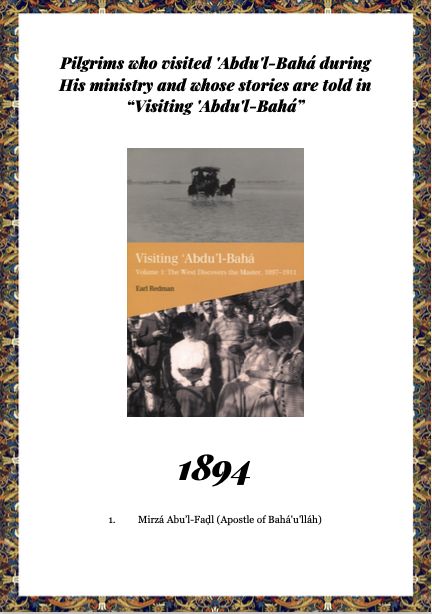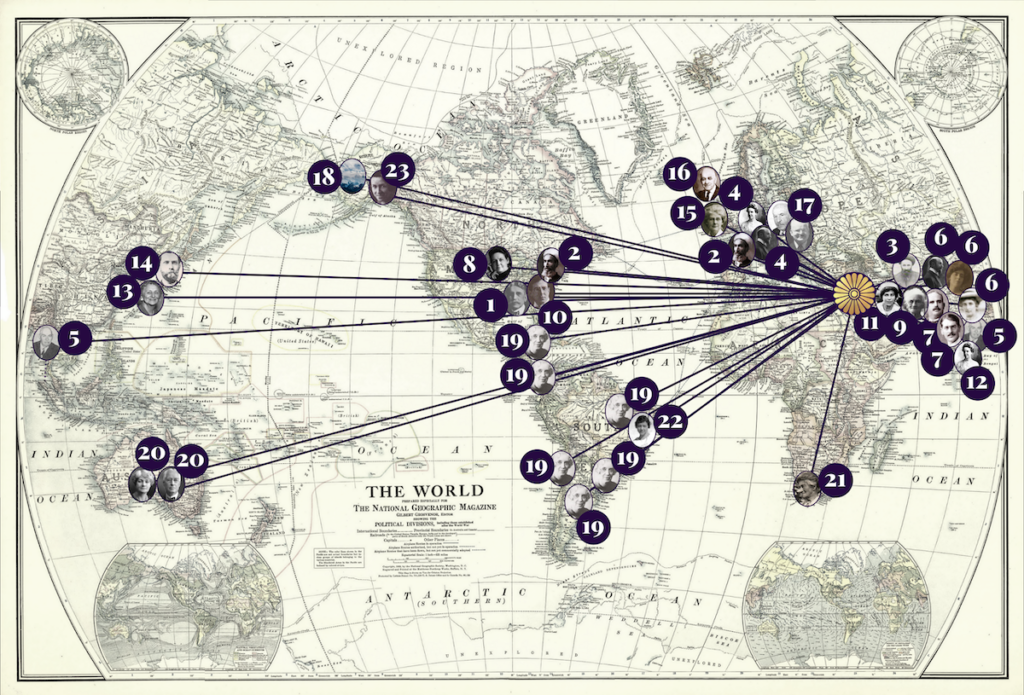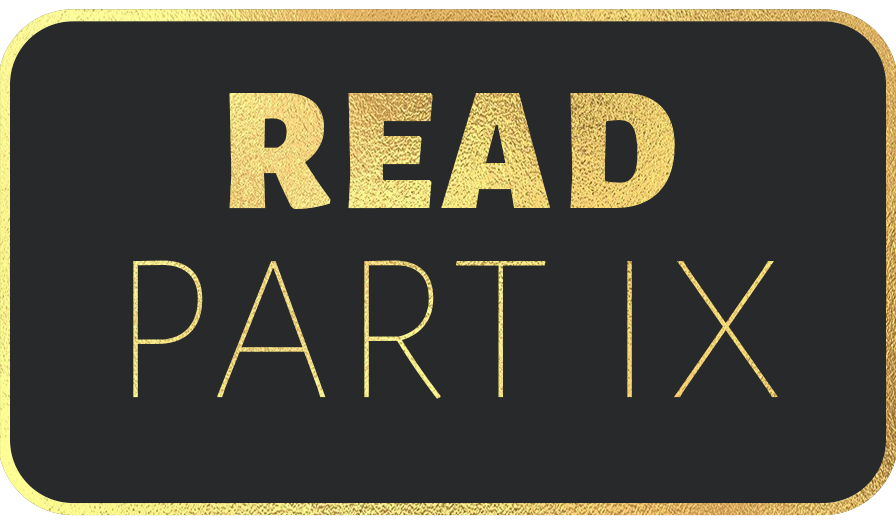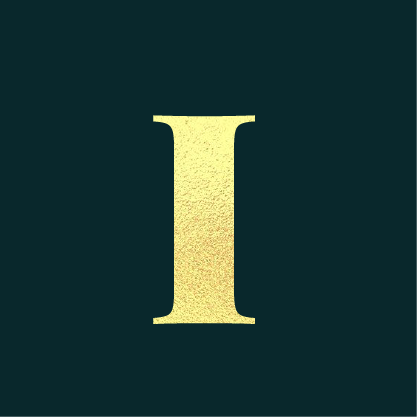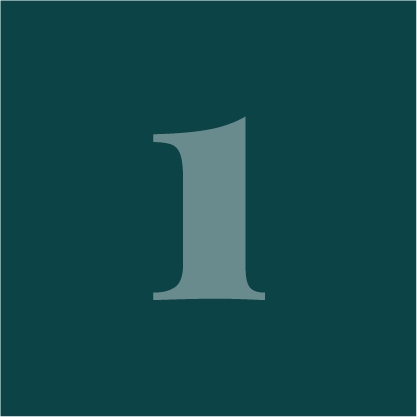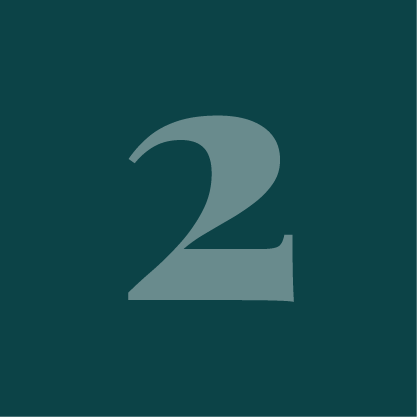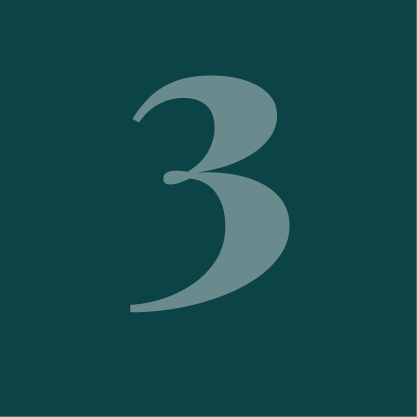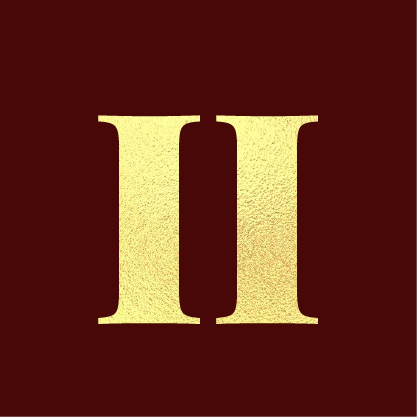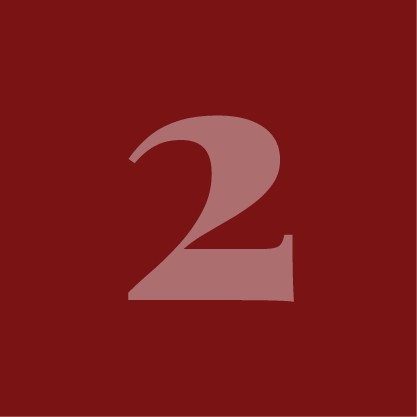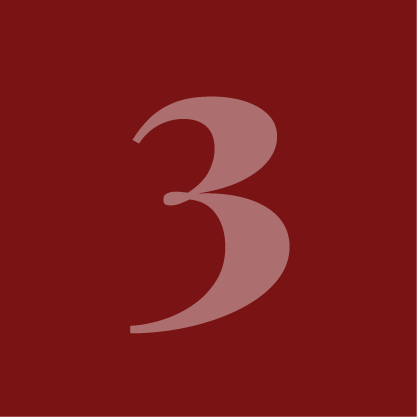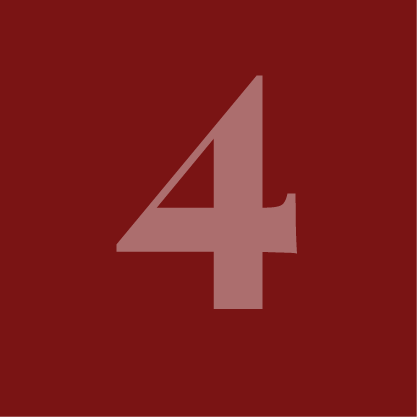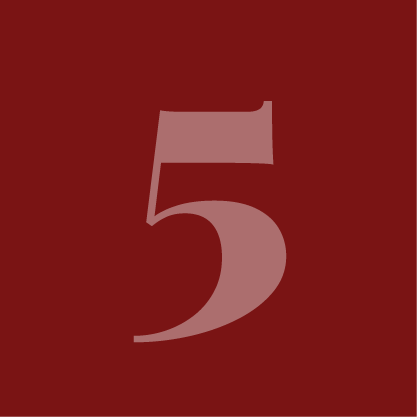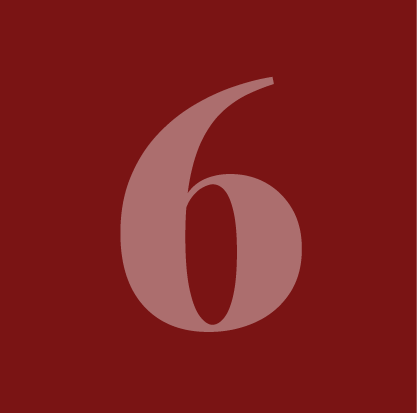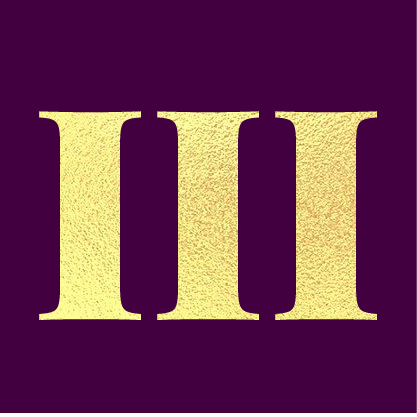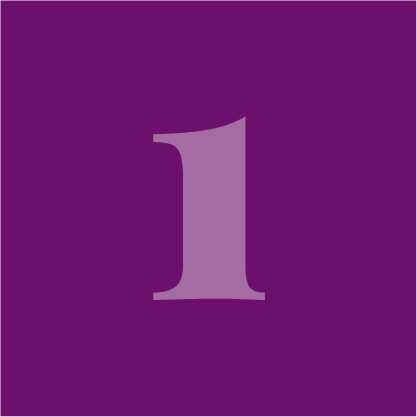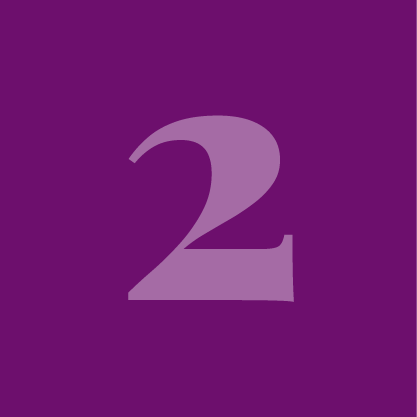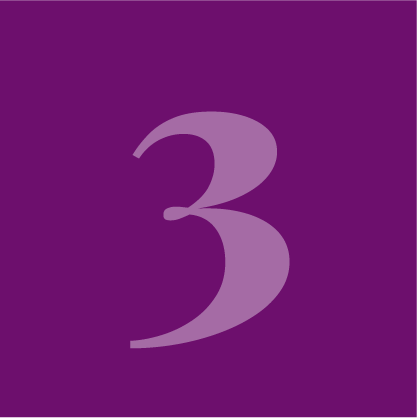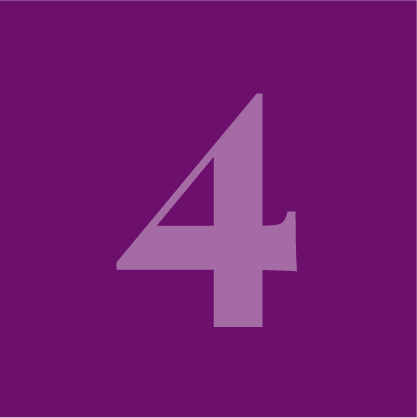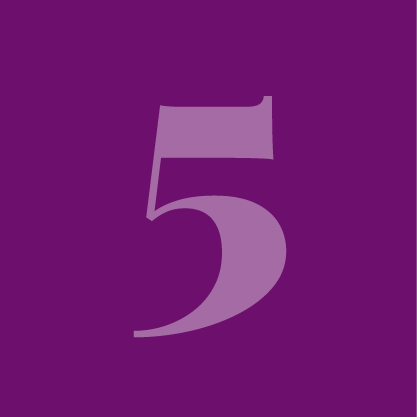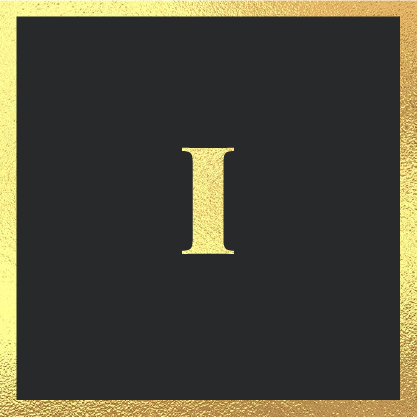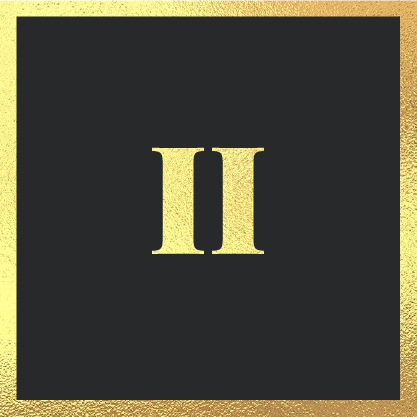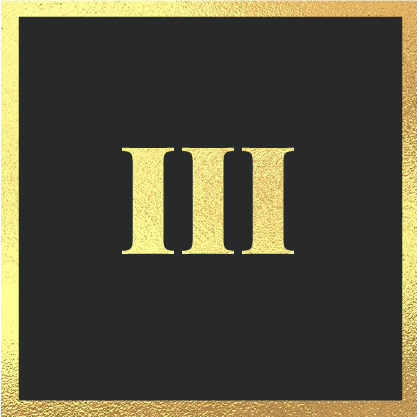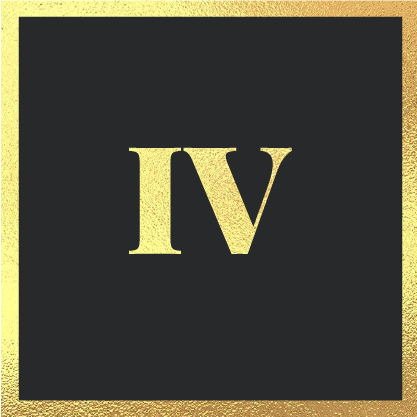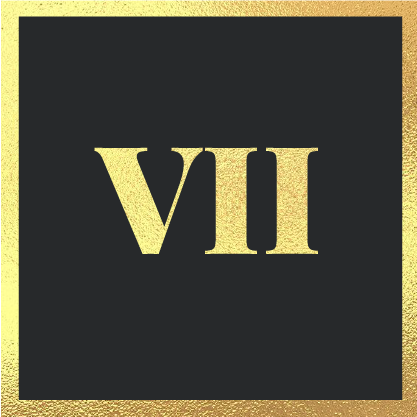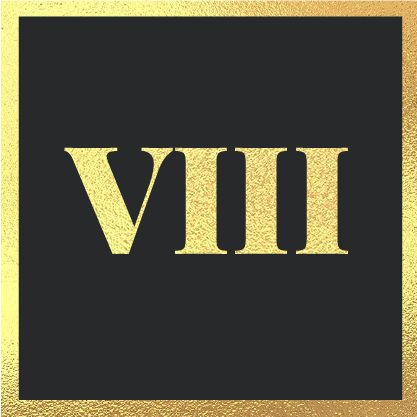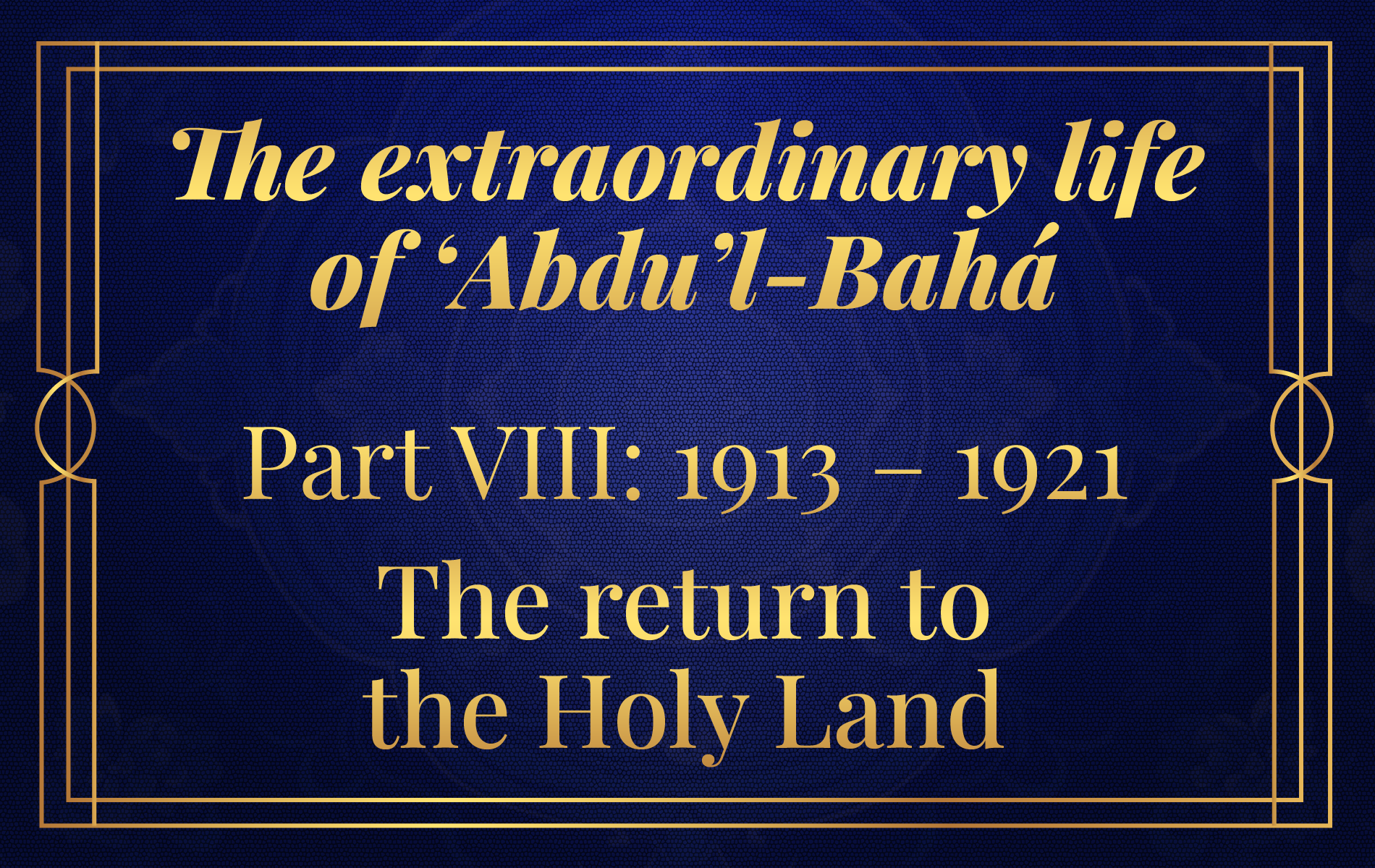
Written and illustrated by Violetta Zein
This part covers the life of ‘Abdu’l-Bahá from the age of 69 in 1913 to the age of 77 in 1921.
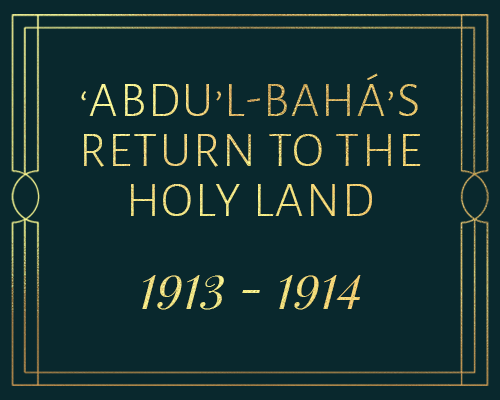

On the first evening aboard the Baron Call, ‘Abdu'l-Bahá gathers His companions and gives them an important address, imparting to them not only the significance of what has just taken place, His three-year Journeys to the West, but also making them aware of the new chapter that opens before them, as they finally return home:
Let us all remember, we have travelled over many countries and upraised the Flag of Truth over many climes. People everywhere listened to the words with great attention, and the Fragrances of the Paradise of Abhá were spread. Now we must render due thanksgiving to the Blessed Perfection, for He hath under all circumstances guided Our steps to promulgate His Words amongst mankind. Oh! We are now returning home after accomplishing our work. There we will put our brow at the Holy Threshold, and pray in behalf of all the friends throughout the world, supplicating His Confirmations so that they may arise to diffuse the sweet scent of His Utterances and summon all men to the Standard of Universal Peace, Brotherhood, Divine Civilization and Spirituality. May their hearts be inspired with the Holy Spirit and the powers of the Kingdom of Abhá!
The Diary of Ahmad Sohrab, 2 December 1913
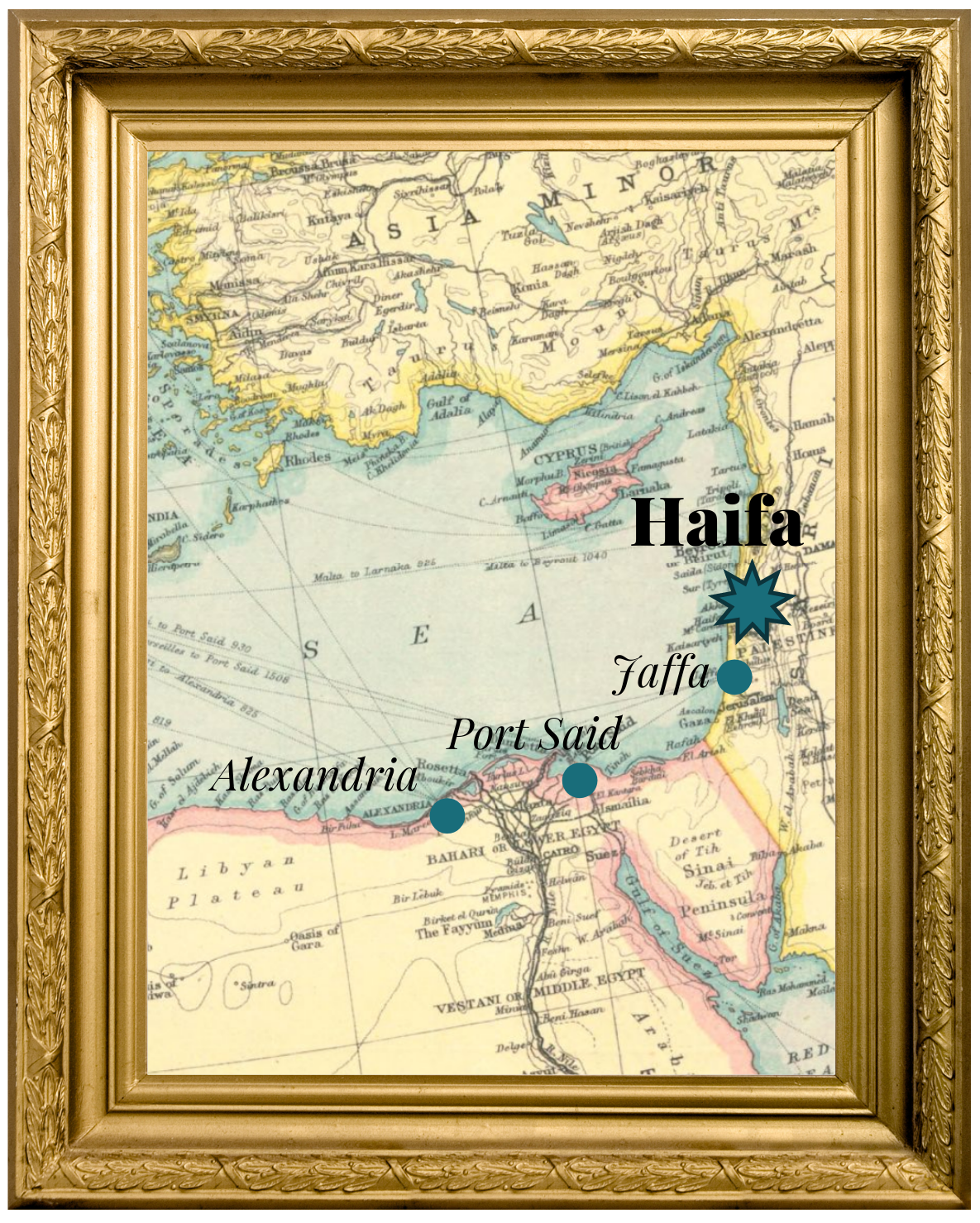
Docking at Port Said for the day, 'Abdu'l-Bahá allows His companions to disembark, but prefers to remain aboard the Baron Call Himself. He receives Bahá'ís onboard all day but also speaks to passengers of the ship who come up from third class, including a Jewish man who has known the Master for many years. Throughout this day, we see ‘Abdu'l-Bahá addressing individuals or small groups of people, one after the other and speaking on various topics such as the need to develop as strong an educational system in Persia as they have in the West, the abusive working conditions of the coal workers aboard steamships, the bounties of teaching the Faith, the spiritual importance of virtues and a good character, detachment and trust in God, the attributes of a true Bahá'í, and finally, how every single Messenger of God, at some point in His Ministry, faces the question: Why do we need a new religion? In answer to this age-old question, 'Abdu'l-Bahá gives a powerful metaphor, equating all religions with trees that grow and bear fruit until they pass their fruit-bearing years, when fresh, new shoots grow out from their original roots.
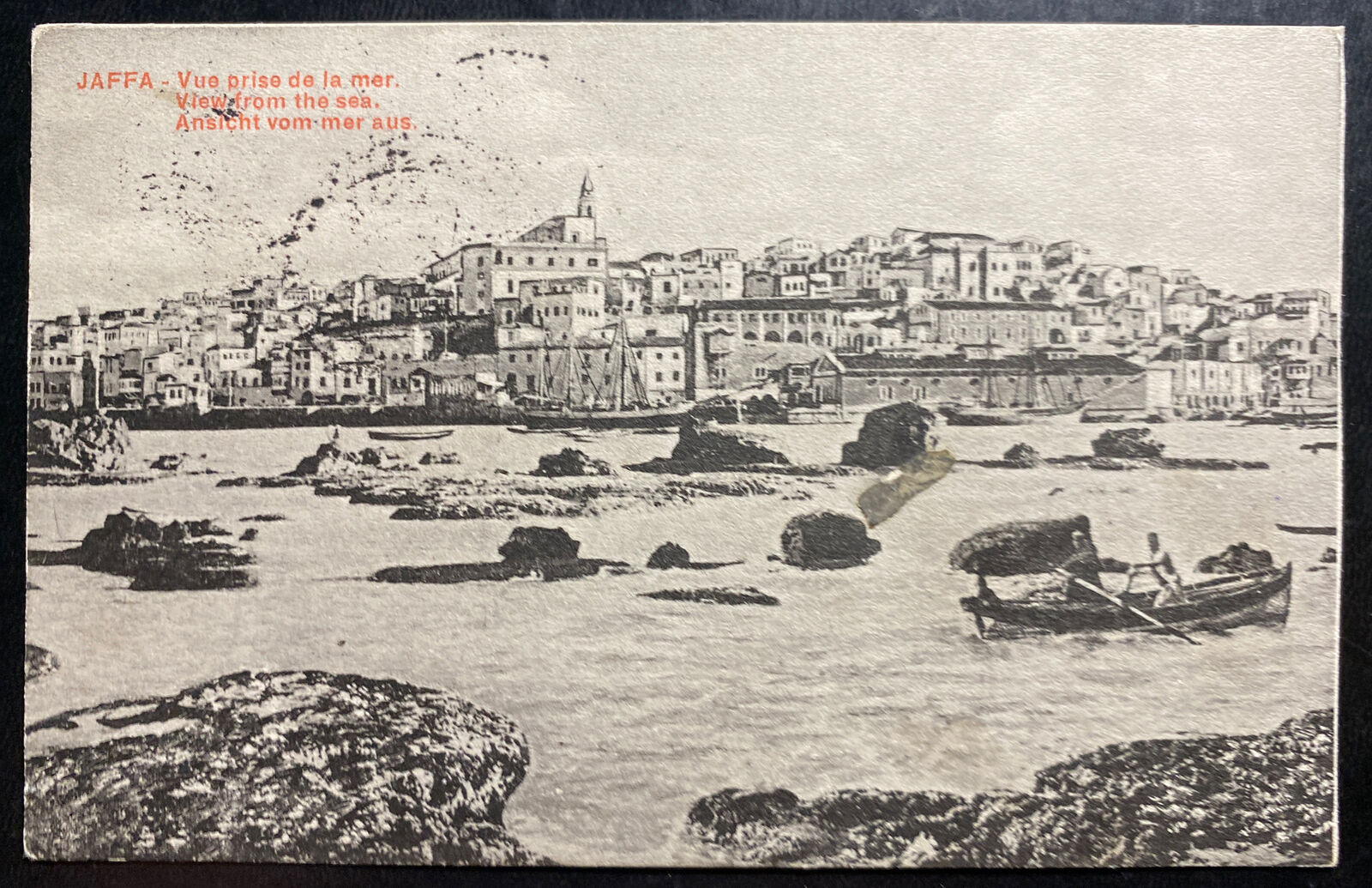
Jaffa from the sea in 1913, as 'Abdu'l-Bahá would have seen it upon dropping anchor. Source.
Arriving in the Holy Land on a rough sea, The Baron Call drops anchor off the coat of Jaffa at 5:00 in the morning on December 4, 1913, where it spends twenty-four hours. Because Jaffa has no harbour, all the ships drop anchor in deep sea, or as close as they can get to the city. Two Bahá'ís brave through the rough seas and come to visit ‘Abdu'l-Bahá on board, bringing two full baskets of oranges, but only staying half an hour. In the afternoon, ‘Abdu'l-Bahá calls for Ahmad Sohrab and requests a summary of the news contained in the letters received last night from Washington, New Bedford, Massachusetts, New York, San Francisco, Oakland, Chicago, Minneapolis, Budapest, London and Stuttgart, as well as a report from Lua Getsinger from Aden, Yemen, on her way to India. All the letters brought wonderful news of the growth of the Faith.
While they are anchored at Jaffa, part of the Baron Call's rich cargo of sugar and other goods in rowboat after rowboat for two or three hours. 'Abdu'l-Bahá waits, patiently, drinking tea, silent and in a prayerful attitude, and finally, the Baron Call raises anchor at 9 in the evening, for the five-hour sail to Haifa, north of Jaffa.
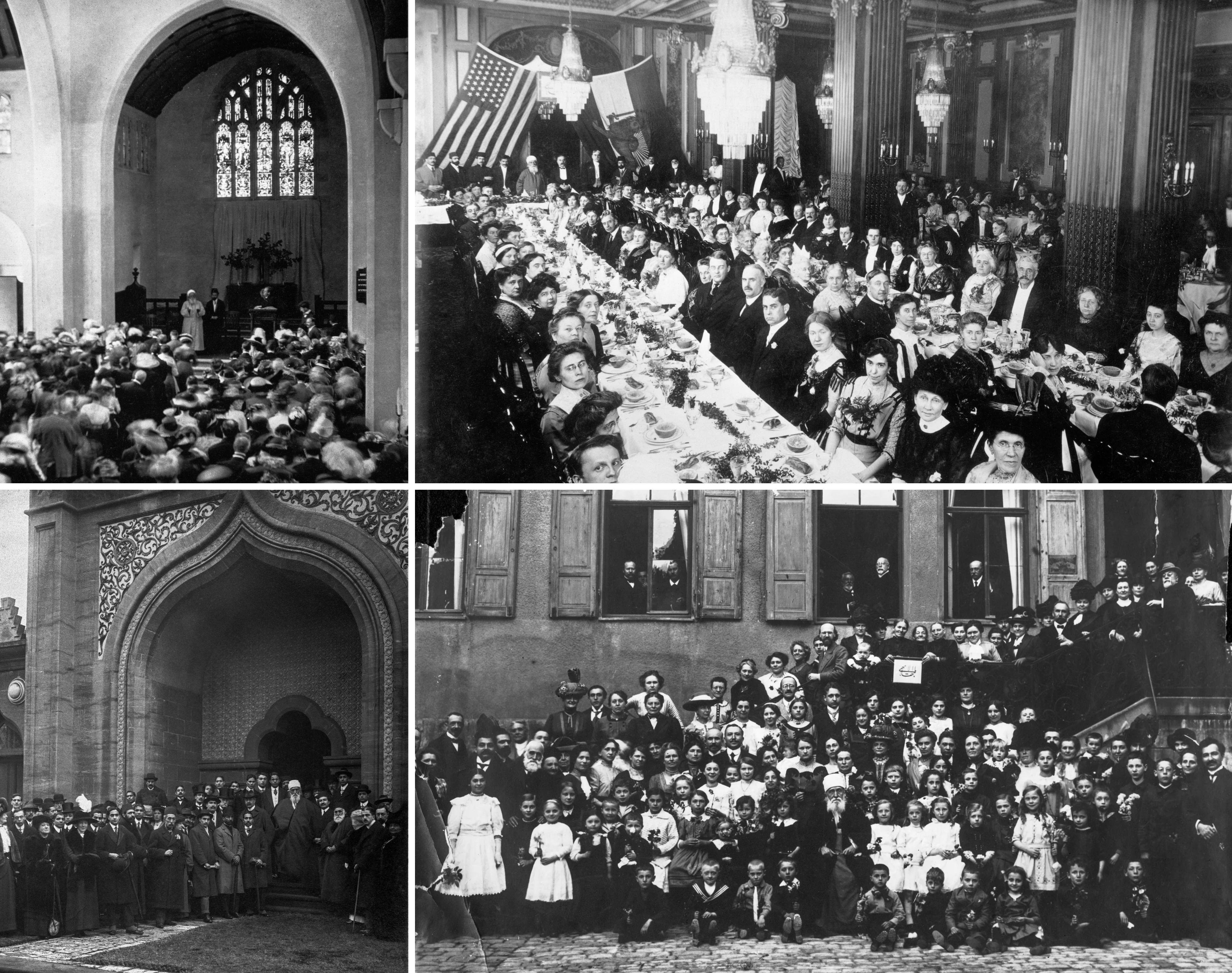
Photographs of 'Abdu'l-Bahá surrounded by large crowds during His Journeys to the West, two in Europe and two in America, one in a church, and one outside a mosque: Top left: ‘Abdu’l-Bahá addressing a large gathering at the Plymouth Congregational Church, Chicago, Illinois, 5 May 1912; Top right: ‘Abdu’l-Bahá at a banquet given in His honor at the Great Northern Hotel, New York, New York, 23 November 1912; Bottom left: ‘Abdu’l-Bahá with a group of Egyptian, Turkish, Indian and British friends in a mosque's courtyard in Woking, England, 17January 1913; Bottom right: ‘Abdu’l-Bahá with a group of friends in Stuttgart, Germany, 4 April 1913. All photos from Bahá'í Media Bank.
During the journey from Alexandria, many of the passengers on the Baron Call ask about 'Abdu'l-Bahá, and all those who meet Him, love Him. An Arab who has known 'Abdu'l-Bahá for many years approaches Ahmad Sohrab, and, in a whisper, tells him that Abbas Effendi has lived among them for 45 years and they never appreciated Him, but, suddenly, the Master leaves Palestine and goes alone to America and to Europe, gives lectures and addresses, thousands of men and women flock to listen eagerly to Him, appreciate His words and utterances, and instantly respond to His teachings.
When the Baron Call finally arrives in Haifa, two war ships are in the harbor, one French and one German. None of the local Bahá'ís or any of the 40 pilgrims, all impatiently awaiting His arrival, are ashore, waiting for 'Abdu'l-Bahá. The Master has sent explicit instructions for the believers to gather in His home at seven in the evening. A number of hours after arriving in Haifa, ‘Abdu'l-Bahá finally leaves the Baron Call, and starts to head home, at long last.
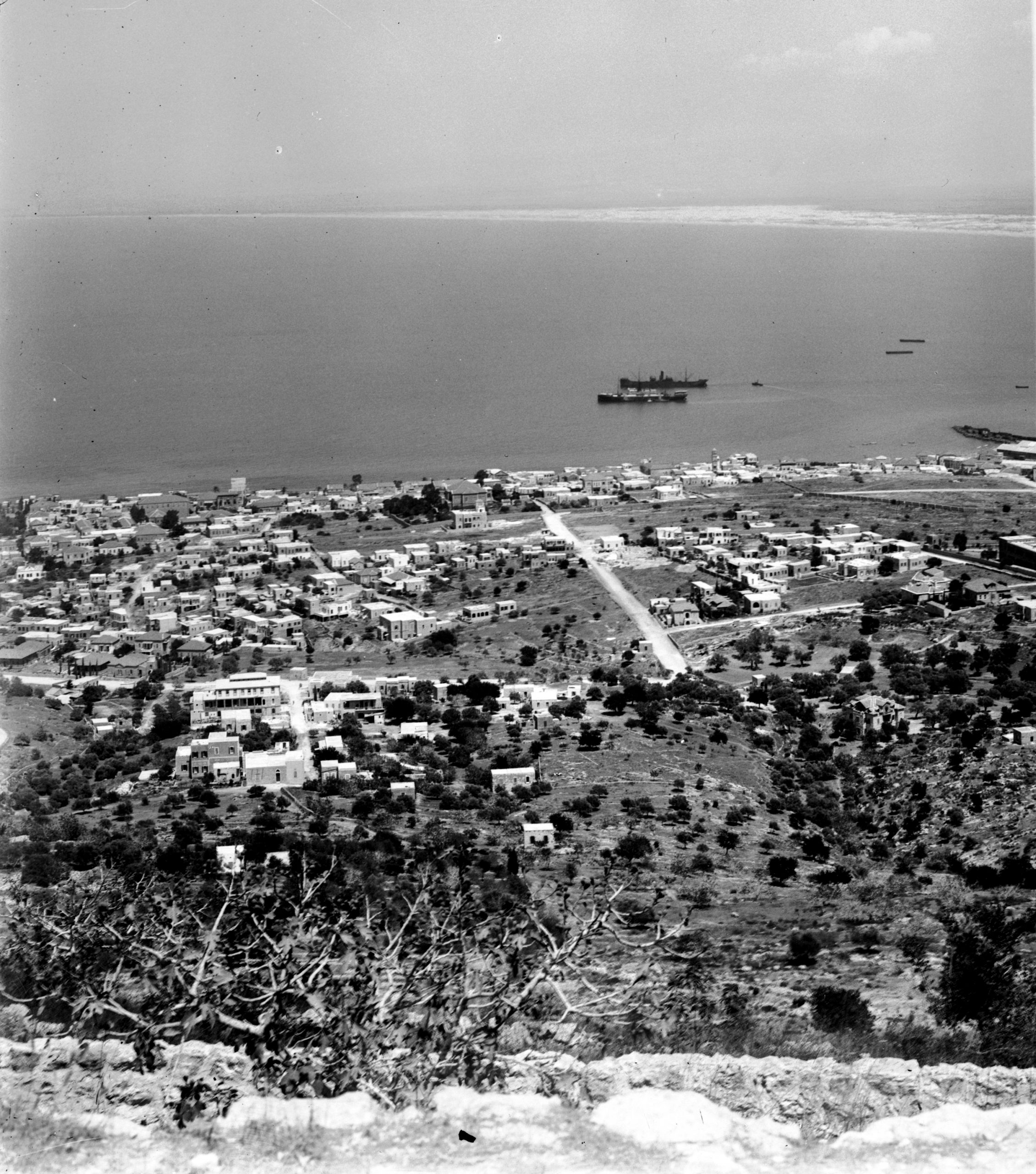
Anchorage at Haifa Bay in the early 1900s, the view the Greatest Holy Leaf would have been gazing at, looking at the Baron Call approaching on the night of December 4, 1913. Wikimedia Commons.
When Ibn-i-Aṣdaq returns from Alexandria, having delivered the Greatest Holy Leaf's message to 'Abdu'l-Bahá, he arrives around December 2, 1913. He mentions 'Abdu’l-Bahá's physical frailty and extreme fatigue from three constant years of traveling, but he also comes bearing momentous news: 'Abdu'l-Bahá is coming home.
As soon as Ibn-i-Aṣdaq delivers the glad-tidings of the Master's return, the Holy Family immediately starts making preparations for 'Abdu'l-Bahá's arrival. Rúḥá Aṣdaq, Ibn-i-Aṣdaq's daughter, her mother and sister Huvíyyih begin to make rishtih, a Persian noodle dish, and a favorite of the Master's, as well as sewing new clothes for ‘Abdu'l-Bahá. Knowing her brother's fountain-like generosity, The Greatest Holy Leaf tells the ladies: "These clothes I shall keep in safekeeping, for as soon as ‘Abdu'l-Bahá hears of His set of new clothes He will give them away and I shall not be able to find another set of hands who can do the job as well as you. The usual clothes are too rough on Him."
To the Bahá'ís feverishly preparing 'Abdu'l-Bahá's arrival, everything, everywhere seems radiant. They know the Master is coming but they have no idea when, He could arrive at any moment, and they rush to make sure everything is absolutely perfect for His arrival. Rúḥá Aṣdaq clearly remembers the precise evening preceding 'Abdu'l-Bahá's return:
It was a beautiful night with a gentle breeze caressing the sea and the brilliant stars above heralding a bright and clear day. Early at dawn, a ship could be seen in the distance, gracefully aiming its way along the bay. The Greatest Holy Leaf cast a deep look and said, "O vessel, what is it you bring that makes you sway so gracefully?"
Rúḥá Aṣdaq, One Life, One Memory: Memories of Pilgrimage in 1914.
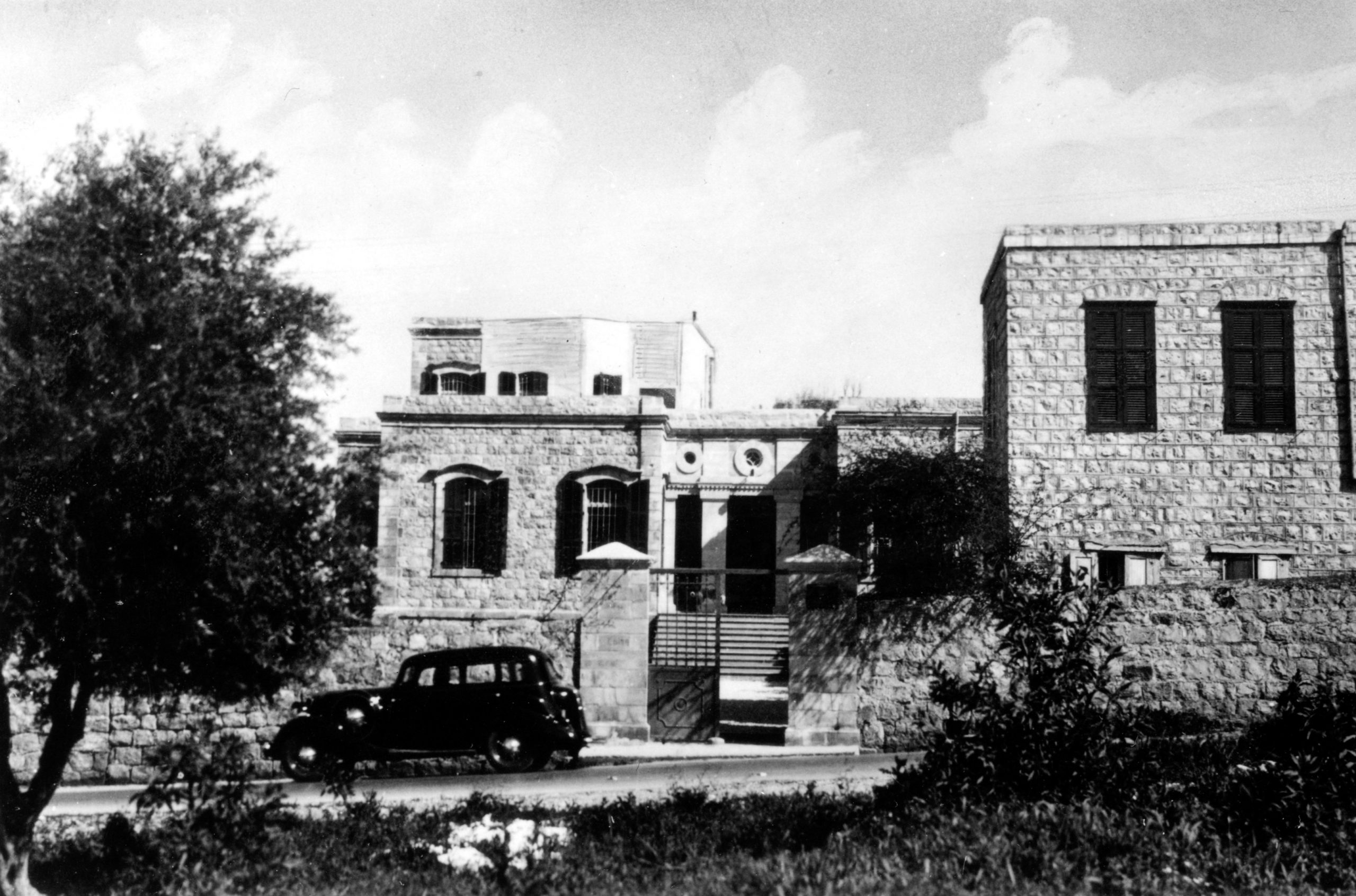
The house of ‘Abdu'l-Bahá at 7, Persian street (now Haparsim). This photograph was taken at some time between 1923 and 1937 as it shows Shoghi Effendi's apartment (the second story rooms) built in 1923, but not the expanded apartment built after his marriage in 1937. Detailed caption provided by Andrew Blake. Bahá'í Media Bank.
A few hours after the Greatest Holy Leaf gazed at the approaching ship, wondering about its passengers, that ship, the Baron Call, approaches Haifa harbour and its loud whistle is heard far and wide. The main hall of the Master’s house has being prepared for ‘Abdu'l-Bahá's arrival. The floor of the large, spacious downstairs hall, is covered with magnificent rugs, and in the center a table filled with fruit and delicacies has been placed. Scattered along the walls are a few chairs, but most of the Bahá'ís, pilgrims and residents, sit on the floor. As is the custom, women and members of the Holy Family are behind a curtain, venerable eldery believers with their white beards on one side, younger ones on the the other, all eagerly await ‘Abdu'l-Bahá's entrance. When the Master alights from His carriage, the Greatest Holy Leaf and His daughters rush towards Him and embrace Him. Utterly exhausted from the long trip, the Holy Family ensures He takes time to go to His room, rest briefly and change clothes.
At last, when ‘Abdu'l-Bahá enters the large downstairs hall, everyone rises to their feet and star prostrating on the ground, ignoring the Master's protestations. "Welcome! Welcome!" are ‘Abdu'l-Bahá's words to those gathered around Him. A chair is set aside for Him to sit on, but ‘Abdu'l-Bahá sits on the floor and gives a short speech about His long journey through the west, His return and the spiritual beauty of Mount Carmel. After His daughter, Ḍíyá’íyyih Khánum chants a prayer, the ladies withdraw from the main hall, the men taking their place. ‘Abdu'l-Bahá asks Apostle of Baháu'lláh Mírzá Maḥmúd-i-Furúghí, who has a beautiful voice, to chant a supplication, and the latter obliges, chanting the Tablet of Ru’yà (the Tablet of the Vision).
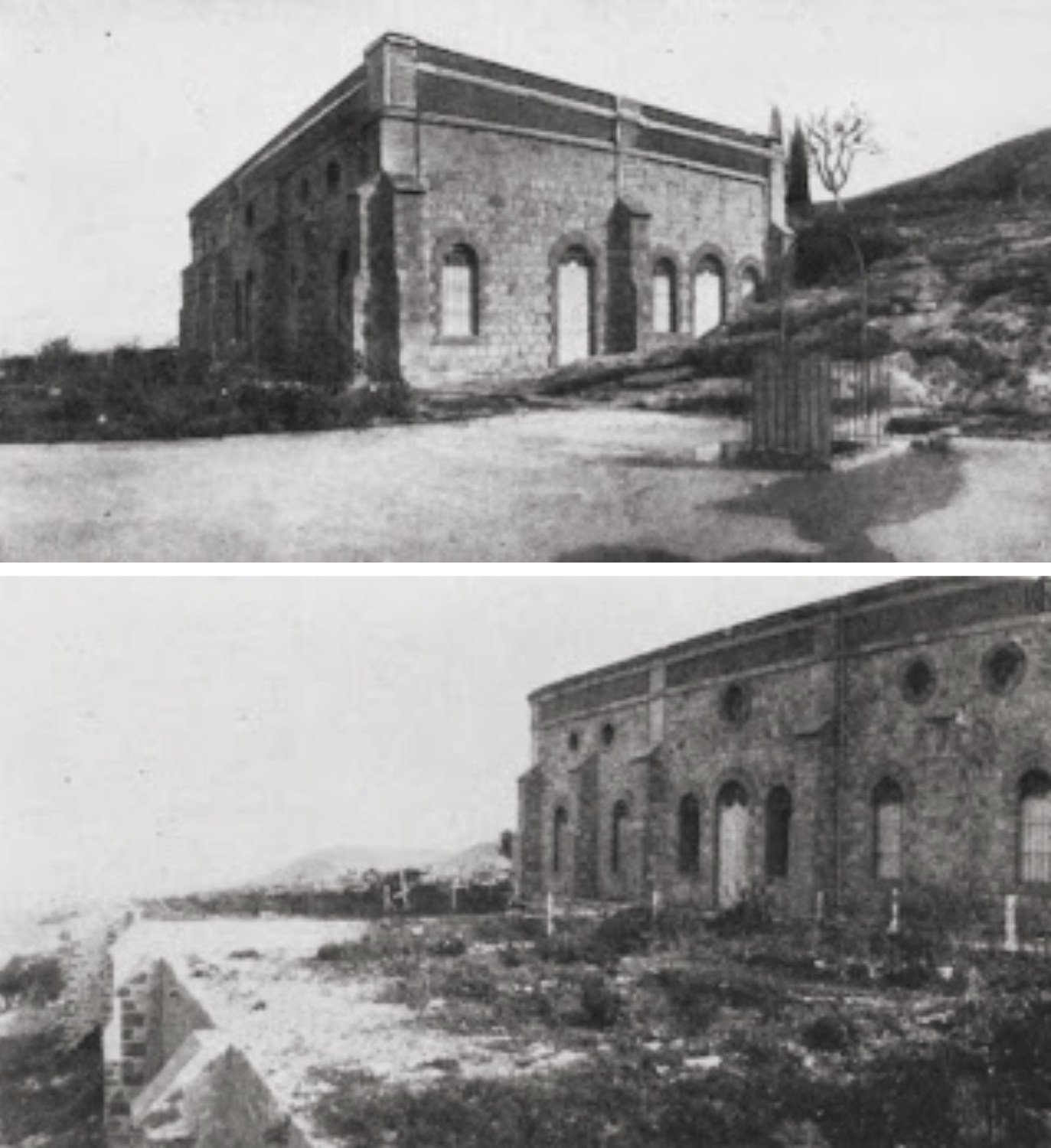
The Shrine of the Báb in 1907, from Thornton Chase's book "In Galilee". In Thornton Chase' 1907 photos, the Shrine construction has only just been completed and the garden in front was being started. The small fence in the foreground surrounds a 'manhole' - the opening to the large water cistern constructed before the Shrine. Detailed caption provided by Andrew Blake. Source.
The day after His arrival, ‘Abdu'l-Bahá boards His carriage and heads to the Shrine of the Báb. Hearing the news, the pilgrims hurry and form two lines to welcome Him to the holy place, heads bowed, as the Master passes, greeting them with "Marhaba! Marhaba!" (Welcome! Welcome!". ‘Abdu'l-Bahá enters through one of the nine doors, and the pilgrims file into another room after kissing the Holy Threshold. Mírzá Maḥmúd-i-Furúghí chants the Tablet of Visitation, and the pilgrims exit the Shrine after again prostrating at the Threshold. After the visit to the Shrine, ‘Abdu'l-Bahá receives the pilgrims in the pilgrim house of the Shrine, which has a vast reception room covered with a large Persian carpet and a beautiful view of the sea. Pausing to admire it, ‘Abdu'l-Bahá says: "What a charming view! what a delightful panorama!" Then, ‘Abdu'l-Bahá instructs the believers to be at Bahjí the next day, to visit the Shrine of Bahá'u'lláh.
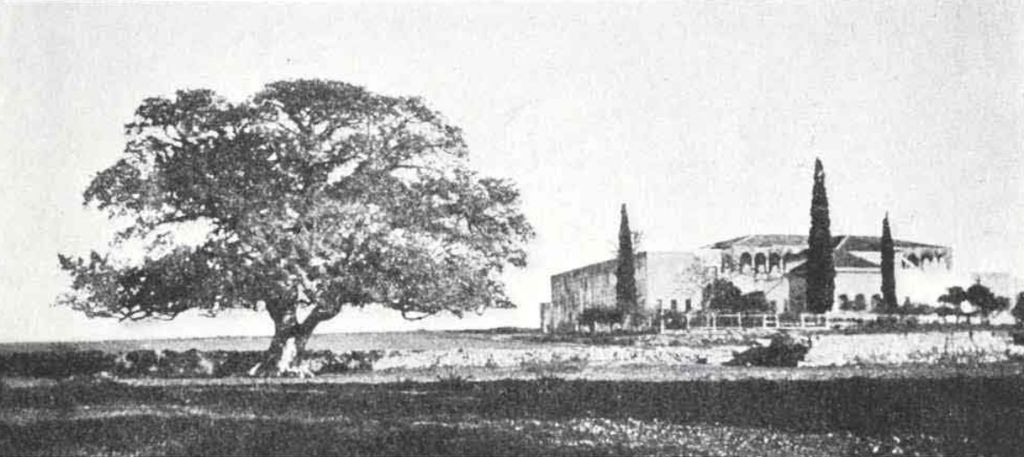
View of the Shrine of Bahá'u'lláh and the mansion of Bahjí in the late 1920s. Source.
Around the 1900s, the only way of reaching Bahjí from Haifa was by horse-drawn carriage along the crescent beach, but in 1913, there is a railroad with excellent stations at both ends, connecting the two cities, and the round-trip ticket costs 25 cents. December 7 is a rain day. The rain started falling before sunrise and will continue past midnight the next morning. Nevertheless, nearly a hundred singing believers gather at the Haifa train station. One of them cleverly asks the conductor to give the Bahá'ís two dedicated train cars with a capacity of 50 each. Among the pilgrims is one of only two remaining Bahá'ís having traveled with Bahá'u'lláh from Baghdád to Adrianople and 'Akká: Áqá Ḥusayn-i-Áshchí. After arriving in 'Akká, the large group heads to the House of 'Abbud for lunch, then head towards Bahjí. Less than a hundred meters from the Shrine itself is a pilgrim house in front of which is a lovely rose garden, where the pilgrims can rest from their long walk, have some tea, and chant Tablets before starting on their pilgrimage to the Shrine of Bahá'u'lláh. After their visit, the pilgrims return to the train station to welcome ‘Abdu'l-Bahá, arriving on the next train from Haifa. Faithful Isfándyar is also there, with the Master's carriage. Also present are many of the officials of 'Akká who have come to welcome ‘Abdu'l-Bahá, their former prisoner, as an equal. Isfandyar takes ‘Abdu'l-Bahá to the Shrine of Bahá'u'lláh, while the pilgrims all take the next train back to Haifa.
‘Abdu'l-Bahá enters the Shrine of Bahá'u'lláh alone and spends a long time in private prayer and supplication, reunited at long last with the Holy Dust of His beloved Father, after a very long separation. ‘Abdu'l-Bahá does not return to Haifa, but stays in 'Akká for a few days.
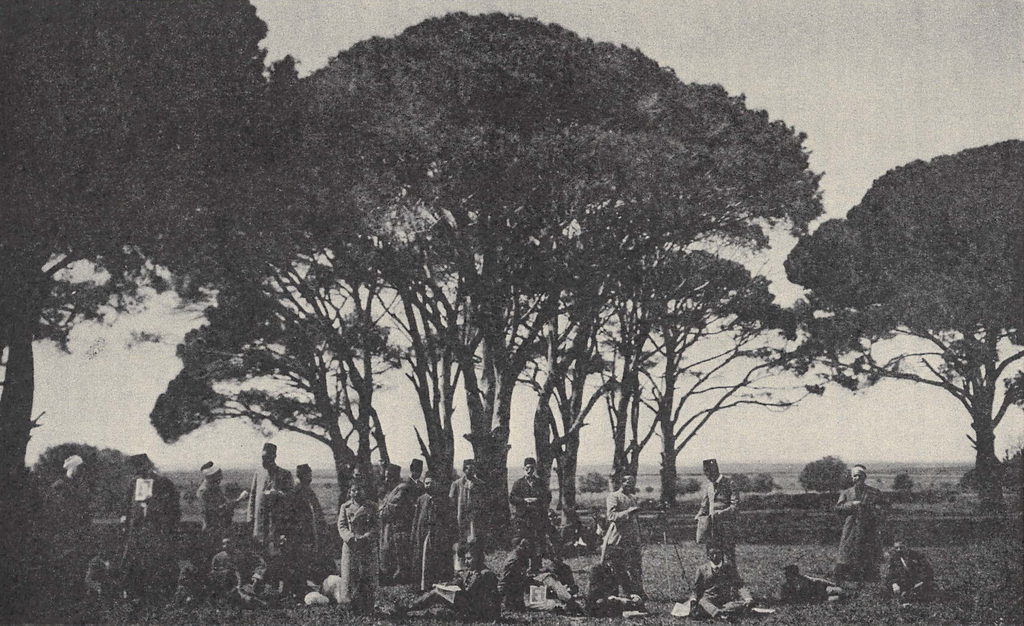
Eastern Pilgrims at Bahjí in 1914, one year after the group of Eastern pilgrims accompany ‘Abdu'l-Bahá to the Shrine of Bahá'u'lláh in Bahjí upon His return to the Holy Land on December 7, 1913. Source.
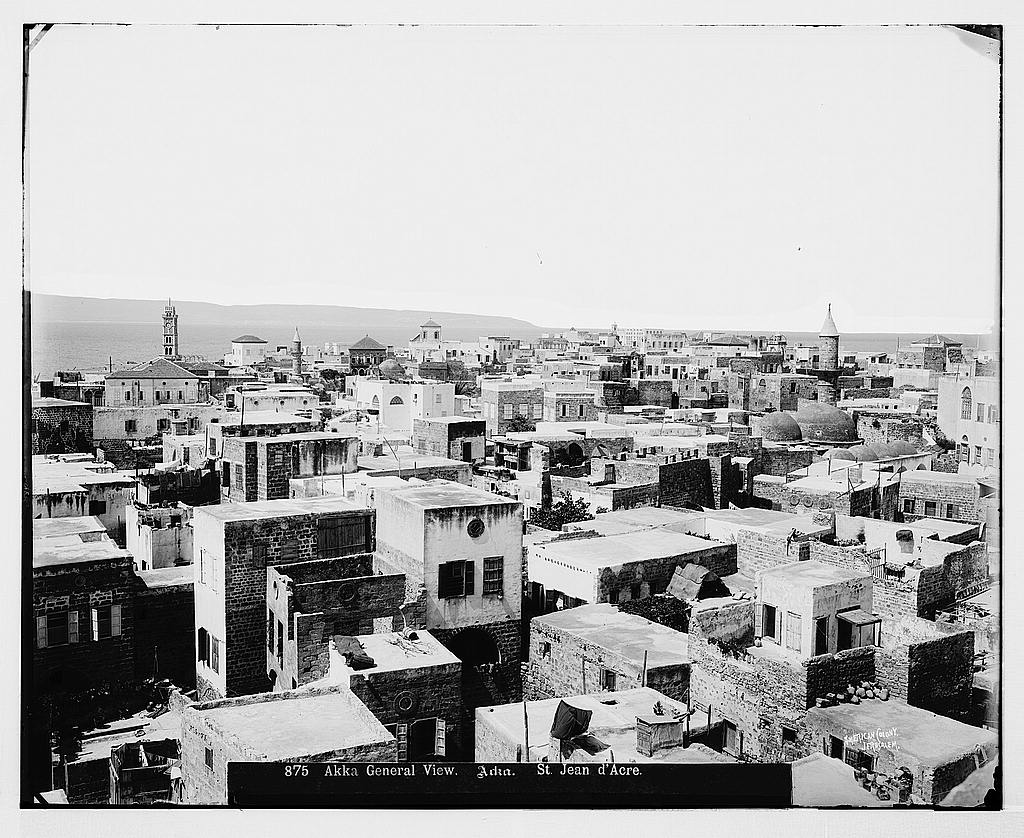
General view of 'Akká before 1914. Library of Congress.
‘Abdu'l-Bahá is back in 'Akká, occupying the room of Bahá'u'lláh while He stays in the House of 'Abbud. Western pilgrim ladies and members of the Holy Family leave Haifa on December 8, 1913 and spend the day with ‘Abdu'l-Bahá then return to Haifa that evening. During His two weeks in 'Akká after a three-year absence, ‘Abdu'l-Bahá is constantly occupied with receiving not only the Bahá'ís of 'Akká, but its many citizens as well as city officials.
An important meeting takes place during these two weeks in 'Akká when Sháykh Asdaq, a representative of the Turkish Parliament in Haifa and 'Akká gathers many civil and officials men of 'Akká to call on ‘Abdu'l-Bahá and officially welcome Him to 'Akká. A well-known orator first delivers an eloquent welcome address, then praises ‘Abdu'l-Bahá's virtues and greatness. Sháykh Asdaq then speaks at length on religious prophecies pointing to Bahá'u'lláh and ‘Abdu'l-Bahá and on ‘Abdu'l-Bahá's long journey through the West. (The Diary of Ahmad Sohrab, 21 December 1913)
His days in 'Akká are filled with meetings, but ‘Abdu'l-Bahá also spends many hours each day calling personally on 'Akká residents and visiting a long list of friends. From Ahmad Sohrab's diary for this time, it is abundantly clear that the great majority of the people of 'Akká rejoice in finally finding ‘Abdu'l-Bahá back among them after such a long absence. During His stay in 'Akká, ‘Abdu'l-Bahá also receives the visit of thirty-two farmers, their wives and their children, who have come from the village of 'Adasiyyíh, where the Master purchased 1,700 acres of land in 1901, and where He has begun building an agricultural enterprise. The masses of ‘Abdu'l-Bahá's correspondence during this time sometimes overwhelm the 'Akká telegraph office, whose manager one day tells Mírzá Jalal, that he cannot find San Francisco or Montreal, lamenting: "These cities are not in my books!" During these two weeks, the Master visits Bahjí daily, walking the nearly four kilometers to the Shrine of Bahá'u'lláh from 'Akká.
The long tradition of Bahá'í residents and pilgrims waiting for ‘Abdu'l-Bahá in the reception room of the house of 'Abbud is finally resurrected, to ‘Abdu'l-Bahá's great joy, on one night, December 13, the Master tells the assembled friends:
How I longed for the re-appearance of these divine nights! While away, I often asked myself; "Will the time come when like those olden spiritual days I may sit in 'Akká and associate and converse with my beloved friends and companions in exile and prison?" Praise be to God that this object is attained.
The Diary of Ahmad Sohrab, 13 December 1913
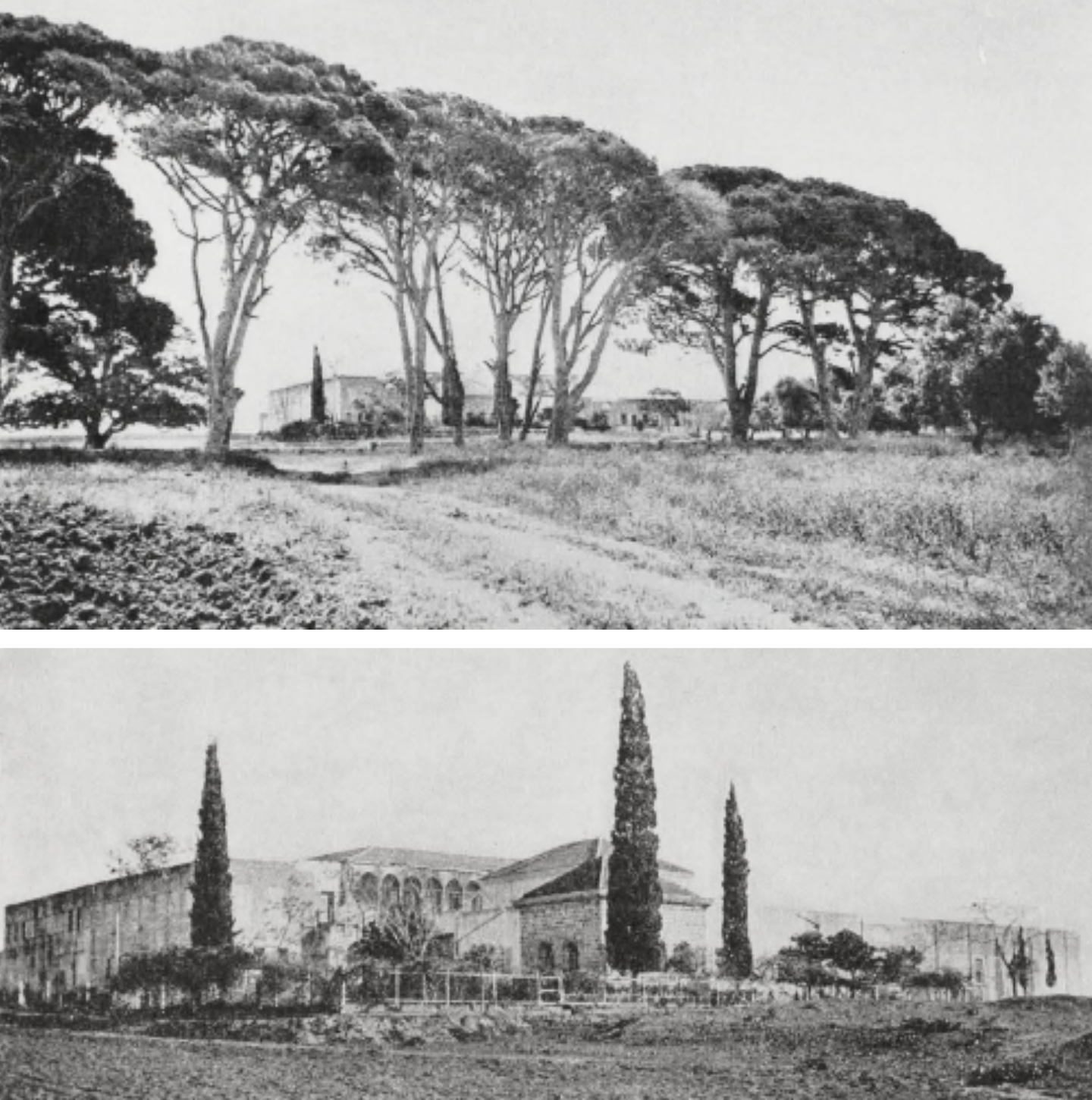
Bahji in the early 20th century: Top: the approach to Bahjí on foot, as ‘Abdu'l-Bahá would have seen it. Bottom: A view of the Shrine of Bahá'u'lláh with the mansion of Bahjí behind it. The Bahá'í World Volume 2 (1926-1928)
On December 9, Ahmad Sohrab, summoned by ‘Abdu'l-Bahá, rejoins Him in 'Akká with a parcel of letters that have just arrived at the Pilgrim House, but when he arrives, ‘Abdu'l-Bahá is not in the city: He has gone, on foot, to Bahjí. When He returns, ‘Abdu'l-Bahá poignantly speaks to the believers about His love for the Shrine of Bahá'u'lláh, how much He missed it during His journeys, and the spiritual power of the Holy Threshold:
As long as a person is not separated from the sacred surroundings of the Threshold of Bahá'u'lláh, he does not realize the magnitude of his loss, neither can he conceive the grandeur of this bounty...No matter how unhappy and sorrowful a person may be, when he arrives at the Divine Threshold of the Tomb of the Blessed Perfection, he forgets all. Another world and its calm influence are unfolded to him, and he remembers naught else save the Beauty of the Beloved.
The Diary of Ahmad Sohrab, 9 December 1913
Before leaving to visit His old friend, ‘Abdu'l-Bahá dictates a cable: "Arrived safely Holy Land" to be. sent to Washington, DC, New York, Montreal and San Francisco. When He returns, an hour later, a number of the citizens of 'Akká and city officials are waiting for Him at the House of 'Abbud. When ‘Abdu'l-Bahá speaks to them in great detail about America and the American people, the vastness of the continent, the monumental cities, the well-built harbours, their prestigious educational institutions, their giant factories, their progressive civilization, their great museums, their brilliant ideals, their large parks, their seemingly-illimitable resources, their skyscrapers, their colossal railroads, their subways and elevated trains, their Dreamlands and Luna Parks. His audience is spellbound, they look at each other with amazement, thinking of these almost unimaginable things within their small town of 'Akká, and one of them blurts out, so earnestly:
How did you conquer such people?
And ‘Abdu'l-Bahá replies:
GOD conquered them!
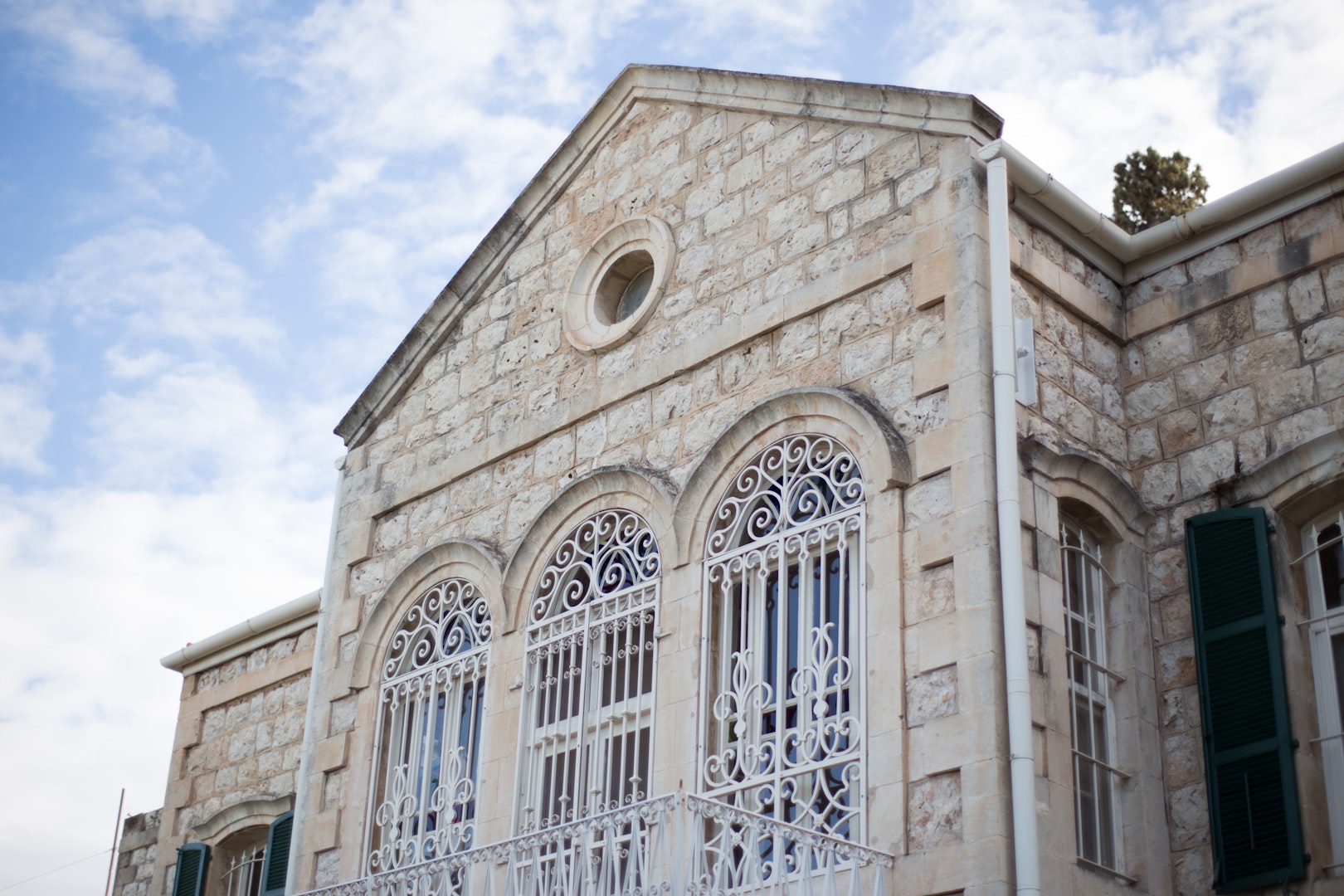
Windows on the Haifa Pilgrim House. Source: Bahá'í Media Bank, © 2023 Bahá'í International Community.
Between December 1913 and April 1914, ‘Abdu'l-Bahá continues to receive pilgrims and visitors in Haifa and visits 'Akká. A large number of pilgrims arrive on December 22, 1913. Shoghi Effendi, now an impressive young man, returns from Beirut for Christmas vacation. Memorial services are held in February 1914 in memory of Mírzá 'Abu'l-Faḍl', who passes away in Cairo on January 21, 1914. An event of note is the completion of the Eastern Pilgrim House by Mírzá Jaffar Shirazi, a Bahá'í from 'Ishqábád. Among the pilgrims who come during this time are Emogene Hoagg, Maude Holbach and her husband, Alice Beeded, Persian Bahá'ís from Azerbaijan and Khúrasán, and German and Indian Bahá'ís among others.
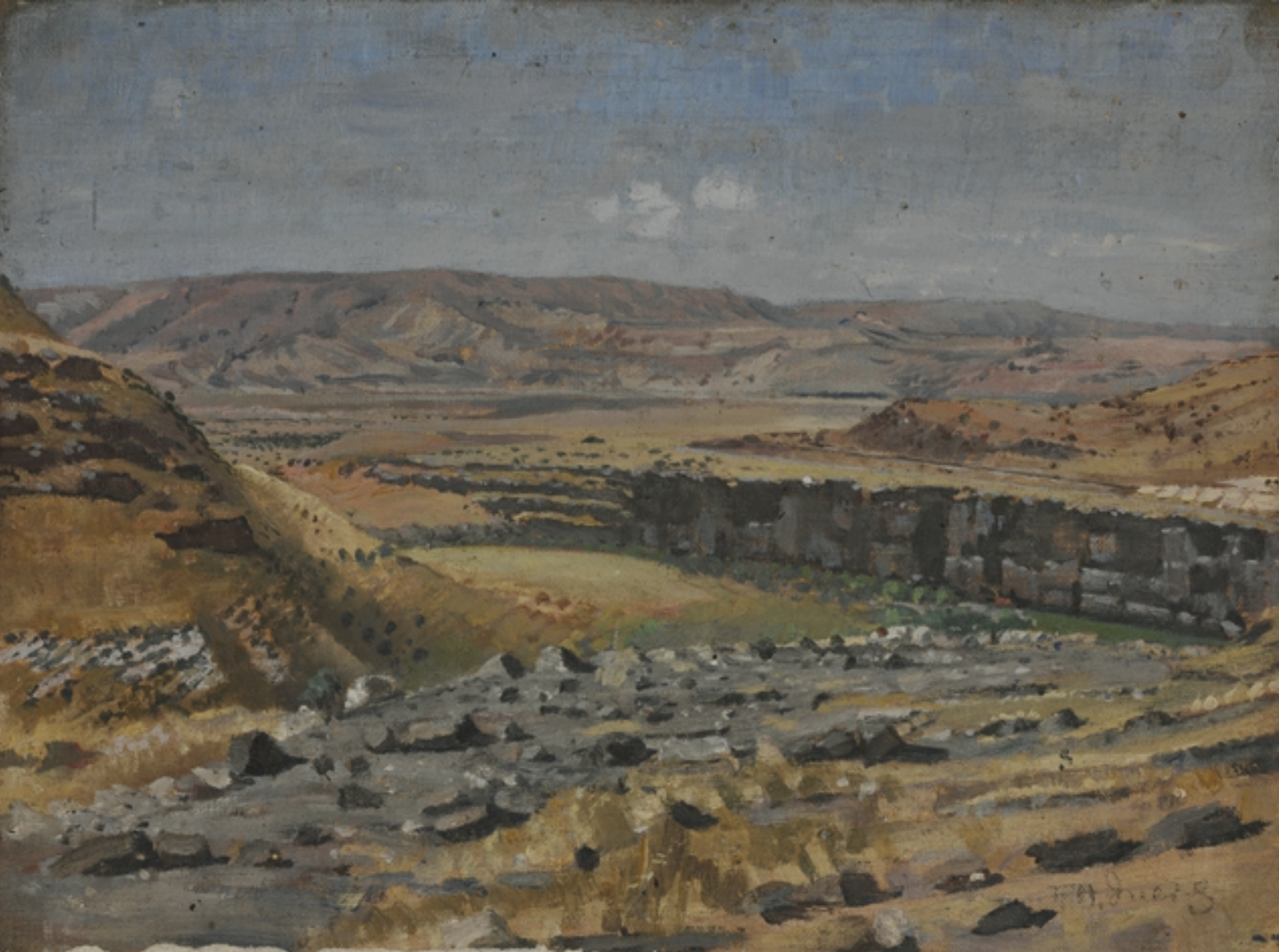
June 1919 oil painting by T. H. Ivers of The mouth of the Yarmuk Gorge at its junction with the valley of Jordan, where 'Adasiyyíh is located. Public domain painting from the website Australian War Memorial.
In 1901, ‘Abdu'l-Bahá had purchased 1,700 acres of fertile farmland in the Jordan River Valley, comprising an entire village, 'Adasiyyíh, and parts of two others villages. After writing to the Local Spiritual Assembly of Ṭihrán to arrange for Bahá'í farmers to be sent to the Holy Land to settle the villages, ‘Abdu'l-Bahá had often given guidance and encouragement to the farmers, ranging from relations with non-Bahá'í neighbors to agricultural advice. On May 16, 1914, five months after returning home to the Holy Land, ‘Abdu'l-Bahá makes the four-hour train journey to Al-Hammah, a village in the valley of the same name, three kilometers away from 'Adasiyyíh, and located 60 kilometers slightly south-east from Haifa. In the train, He shares His compartiment with Zakki Bey, the Commander of the Army. Some members of the Holy Family, accompanied by a few Bahá'ís, precede the Master by two days in order to arrange His accommodations.
During His visit, ‘Abdu'l-Bahá stays in a tent of flowering oleander branches and makes daily use of the lukewarm hot spring at Al-Hammah, the other two, being nearly boiling hot or very hot, being less to His liking. Munírih Khánum and at least two of ‘Abdu'l-Bahá daughters reside in two rooms on the second floor of the train station, graciously offered by the station master. During His two-week visit, the Bahá'ís of 'Adasiyyíh and two other Bahá'í villages nearby do their utmost to keep the Master and members of His family comfortable, bringing eggs, milk, bread, cucumbers, butter and onions every day, which faithful Khusráw prepares.
‘Abdu'l-Bahá receives many important local Arab and Ottoman commanders, chiefs and officials, including one Habbakom Komandaz, the Governor of Hammah. 'Abdu'l-Bahá patiently counsels these men on leadership, and teaches them the principles of the Faith. Throughout His stay, ‘Abdu'l-Bahá continues to dictate Tablets in Persian, Arabic and Turkish. Pilgrims and Bahá'ís arrive at al-Hamma nearly every day to visit with ‘Abdu'l-Bahá and some rent bungalows nearby. ‘Abdu'l-Bahá's party during this time hovers at 30-50 people. During this short stay, ‘Abdu'l-Bahá rides a horse again, and Ahmad Sohrab describes His riding as "kingly."
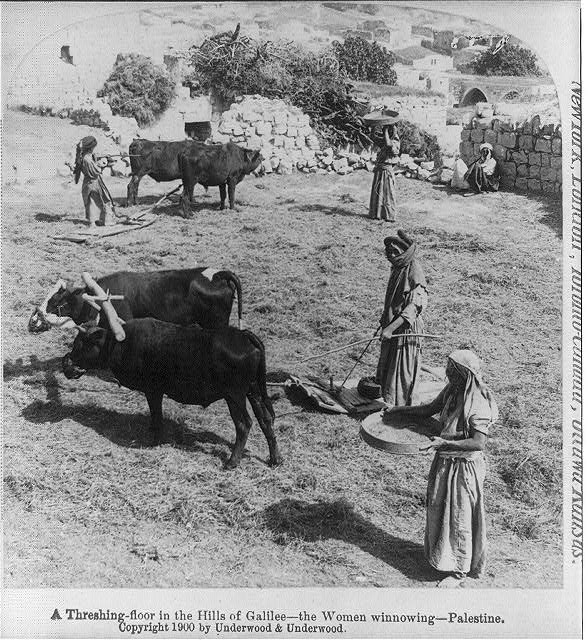
A threshing-floor (where the grain is manually separated from the straw and husks by beating it) somewhere in the hills of Galilee (in the same geographical region as 'Adasiyyíh)in the 1900s, showing women winnowing (blowing to remove the chaff). Library of Congress.
On May 16, 1914, ‘Abdu'l-Bahá takes a fifteen-minute train ride to the next station from Al-Hammah, Es-Samach, where 20 of the 'Adasiyyíh farmers have come to welcome the Master. In the company of 20 other riders including Sháykhs and prominent heads of the farming village, ‘Abdu'l-Bahá rejoins 'Adasiyyíh on horseback, riding next to then, accompanied by twenty other riders, mounts a horse and visits 'Adasiyyíh. ‘Abdu'l-Bahá rides side by side for nearly an hour with a war commander, dressed in full uniform and shining black boots with gilded epaulettes and a sword at his side. The cavalcade passes wheat fields as far as the eye can see, reapers, men and women working the fields. when they finally reach the garden in 'Adasiyyíh, everyone partakes of tea under the shade of apricot trees. After a delicious dinner, they spend the night there then, the next morning, travel to Tiberias, about 17 kilometers northwest of 'Adasiyyíh, on the western coast of the Sea of Galilee.
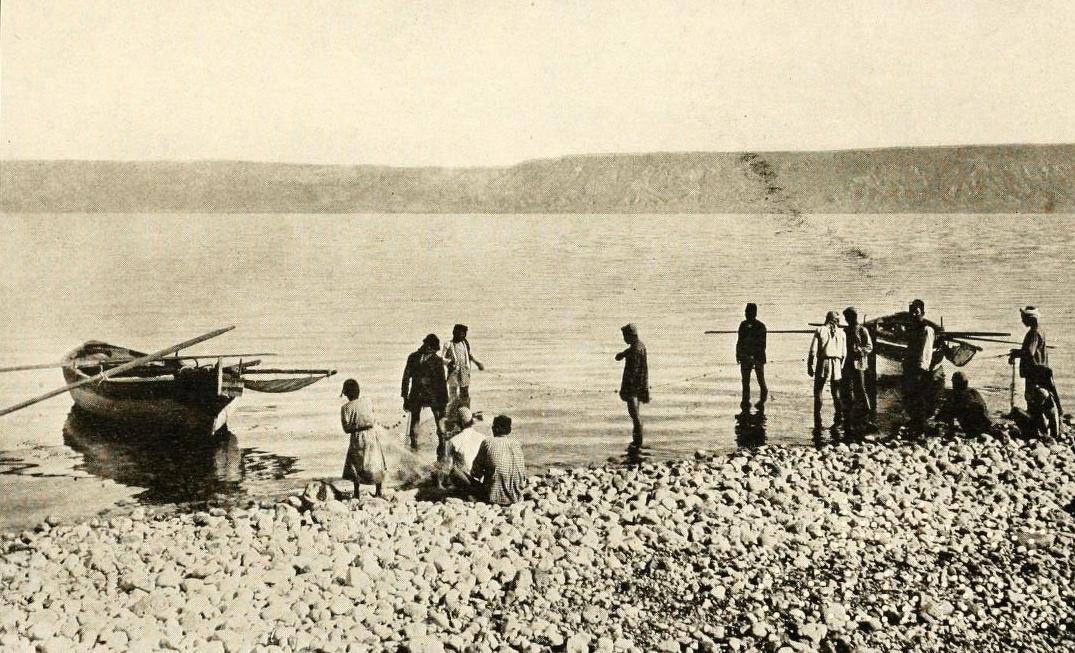
Fishermen on the Sea of Galilee in June 1914, at the time ‘Abdu'l-Bahá was in Tiberias. Photograph by E. M. Newman in "The Spell of the Holy Land," page 297.
‘Abdu'l-Bahá arrives in Tiberias, on the shores of the Galilee, a place sacred because it is here Jesus Christ, 19 centuries ago, spent the greater part of His ministry, often sailing on this very sea. The proprietor of the hotel in which 'Abdu'l-Bahá stays, which still stands today, is a German named Mr. Grossman, hailing from Stuttgart, a city very close to the heart of the Master.
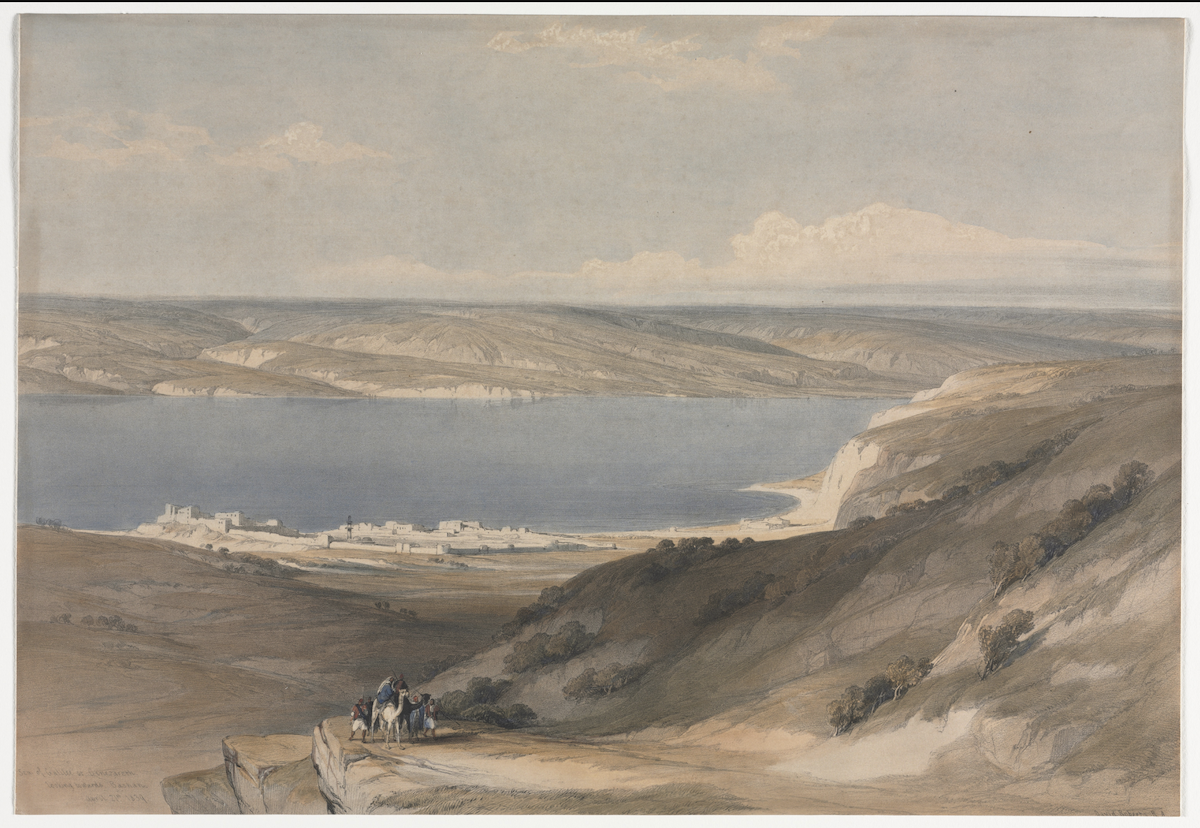
Sea of Galilee at Genezareth looking Towards Bashan, 1839. David Roberts (Scottish, 1796–1864). Color lithograph; The Cleveland Museum of Art, Gift of the Ohio C. Barber Estate through Andrew C. Squire 1927.85. Source: Internet Archive.
When ‘Abdu'l-Bahá arrives in Tiberias, friends and strangers alike are already there waiting to meet with Him. During His stay in Tiberias, ‘Abdu'l-Bahá spends time with a Commander, and meets with Sháykhs and the Governor of Tiberias.
One night at dinner, the Commander mentions Turkish families of Baghdád, and ‘Abdu'l-Bahá, to everyone's astonishment, proceeds to relate each family's history. when the Commander leaves Tiberias for Haifa he says:
'Abbás Effendi has made me a prisoner of love. The hardest thing for me is to leave his companionship, but I am obliged to leave him now very soon. I have learned from him many things and he has instructed me in many problems of life. Eternally, I am indebted to him.
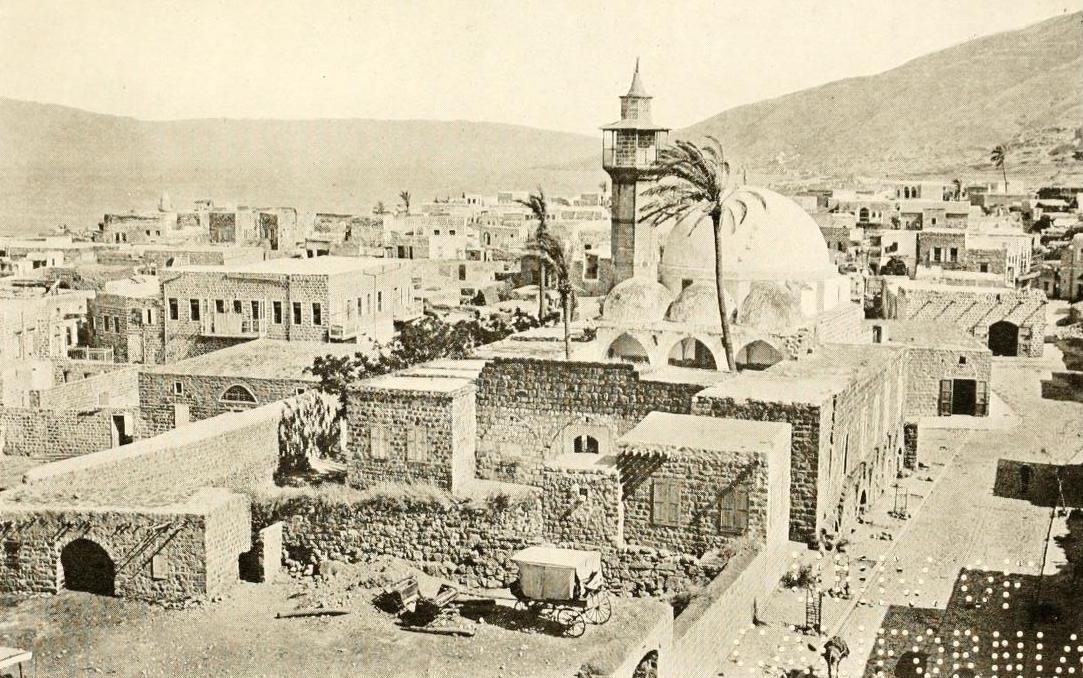
Tiberias in June 1914, at the time ‘Abdu'l-Bahá was there. Photograph by E. M. Newman in "The Spell of the Holy Land," page 285.
‘Abdu'l-Bahá meets people from many walks of life in Tiberias: large numbers of German tourists, French travelers, newspaper reporters, Muftís of Tiberias, Arab journalists, a crowd of English ministers, many Jewish Rabbis, deeply unhappy souls seeking comfort, and as usual pilgrims from around the world who come from Haifa to spend time with the Master.
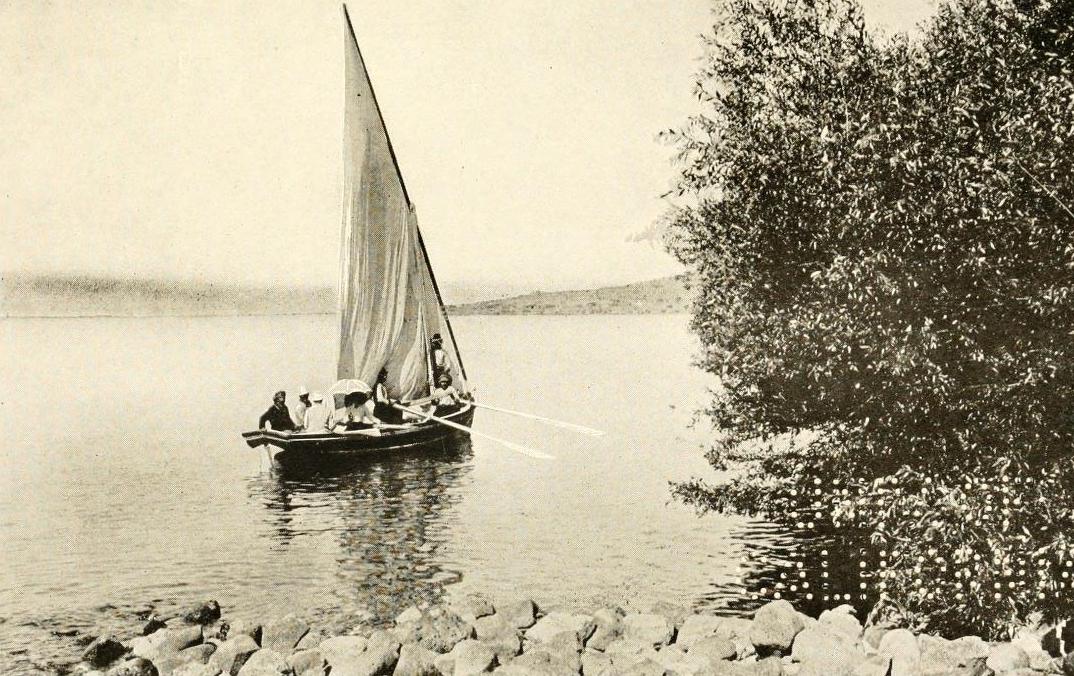
Oleanders on the shore of the Sea of Galilee in June 1914. Photograph by E. M. Newman in "The Spell of the Holy Land," page 293.
On Friday June 5, 1914, ‘Abdu'l-Bahá invites officials of the government of Tiberias to spend a day with Him in Al-Nuqayb (today Ein Gev), on the other side of the Sea of Galilee. Ahmad Sohrab recounts an impressive list of guests: Muḥammad-‘Alí Bey, the Governor; Taqí Bey, Inspector General of Syria; Rashíd Effendí, Director of Finances; Tawfíq Effendí, a judge; ‘Abdu'l-Bahá great Tiberias friend, the old Muftí and his two sons; Shaykh Sa‘íd Ṭaharí, President of the Board of Municipality; Ashraf Effendí, the City accountant; Rustam Ramaḍán, head of the tax department; Qadrí Effendi, a lawyer; Ibáahím Effendí, a recruiter for the military; Ḥasní Effendí Fahwá, a surveyor, Ḥasmí Effendí Khalíf, the Governor's secretary; Salím Effendi, first assistant to the Director of Finances; ‘Alí Effendí, superior of the village; Sa‘úd Effendí Mulkí, chief clerk; as well as a number of merchants and prominent men of Tiberias.
Altogether, the party numbers 33 people, and they cross the 9 kilometers of lake in two boats in an hour and fifteen minutes. During the crossing, the guests drink tea from a samovar while ‘Abdu'l-Bahá, seated between the Governor and the Inspector General, alternatively speaking Turkish and Arabic, expounds on fascinating subjects, ranging from minute theological discussions on the significance of Holy verses, to the Copernican system of astronomy, deeper meaning and spiritual significance of a verse in the Holy books, the concept of compass declination and His New York meeting with Admiral Peary, the explorer best known for claiming to have reached the North Pole in 1909.
When the party arrives in Al-Nuqayb, a very elaborate lunch is served to nearly a hundred people, and the guests then take an afternoon rest under shade of orange trees in the nearby grove, with nightingales singing above. After dinner, the party returns to Tiberias close to 9:30 in the evening, but the sea is so rough they sail slowly, the trip takes twice as long on the return leg, nearly three hours.

‘Abdu'l-Bahá on the narrow balcony of His hotel room in Tiberias, facing the Sea of Galilee, on June 6, 1914. Photograph by E. M. Newman in "The Spell of the Holy Land," page 305.
On June 9, 1914, ‘Abdu'l-Bahá meets Archie Bell and E. M. Newman, both travelers and writers journeying through the Holy Land writing a book called "The Spell of the Holy Land," third in a series after China and Egypt. E. M. Newman is the photographer and he takes a half-dozen portraits of ‘Abdu'l-Bahá, including one of the Master alone on His balcony, and one of ‘Abdu'l-Bahá and Archie Bell. Newman sees ‘Abdu'l-Bahá walk into the hotel and immediately asks someone who He is, impressed, as many people are upon first meeting the Master, with His majestic bearing. Upon finding out it is ‘Abdu'l-Bahá Newman is pleasantly surprised, as He had recently missed the Master in 'Akká, and had been disappointed. During their meeting, ‘Abdu'l-Bahá speaks to them about the Bahá'í teachings, and Archie Bell turns the encounter into an entire chapter in "The Spell of the Holy Land," entitled "Meeting a Prophet.", which you can read online. In it, Archie Bell describes ‘Abdu'l-Bahá as a "dynamo of energy," and, though just the slightest bit too familiar for the Center of the Covenant, it is nonetheless interesting to see ‘Abdu'l-Bahá through the awed eyes of an objective journalist, and to see the Master's day described in such feeling detail:
Abbas Effendi is a dynamo of energy. He was born in 1844, and is therefore an old man. His life as a prisoner might have left him a physical wreck, but instead of that he seems to have undergone an almost superhuman recuperation. He rises early in the morning, receives visitors of all nationalities and creeds during the day, often attends the services of the Jews in the synagogues, goes to prayer with the Moslems in their mosques, and attends Christian churches. He carries on a correspondence with his followers in all parts of the world, and directs any number of momentous affairs ; but his secretary tells me that after the affairs of his busy day are over he will often call him, assure him that he is not weary, and will either read, dictate or talk until far into the hours of the night. He knows not fatigue, but attendance upon him often wearies the younger men, who carefully record his sayings and habits, day and night.
Archie Bell, The Spell of the Holy Land, page 312.
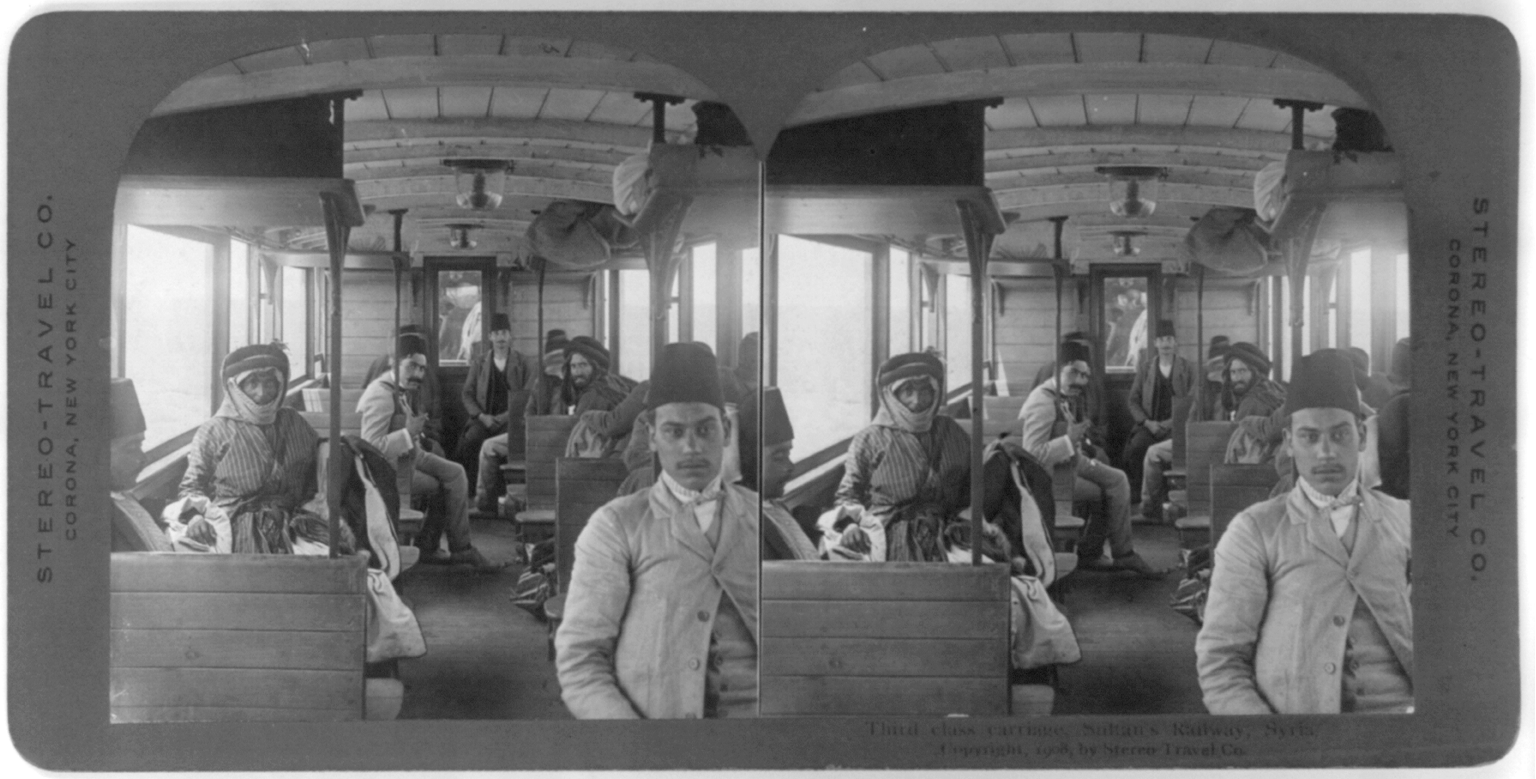
The inside of a third-class carriage of Sultan's Railway in Syria circa 1908. These are not the accommodations ‘Abdu'l-Bahá would have traveled in, but gives an idea of the inside of a contemporary train. Library of Congress.
After six weeks away in the Jordan Valley at the Sea of Galilee, ‘Abdu'l-Bahá returns to Haifa on June 15, 1914. When He left Tiberias that morning, ‘Abdu'l-Bahá bid farewell to many of the prominent citizens of Tiberias, then boarded a steamer to the train station south of the Sea of Galilee for the four-hour train ride West. Speaking of Tiberias that same day, ‘Abdu'l-Bahá says:
I went to Tiberias, but I stayed there longer than I expected. Tiberias is situated in an out-of-the-way place. It is a place of seclusion and contemplation. There is no noise of men or the uproar of industry. It is as though one lived in a remote desert, far away from the haunts of men. It is a spot hallowed with the presence of His Holiness Christ . . . Often he walked around the shore of the Sea of Galilee, and as He walked, taught His disciples. As I walked on the shore, those immortal deeds were brought back to my memory.
Redman, Earl. Visiting 'Abdu'l-Baha Volume 2: The Final Years, 1913–1921 (p. 43)
It is a blessing ‘Abdu'l-Bahá was given these last six weeks of peace and contemplation in grounds hallowed by Jesus Christ. World War I starts in two weeks, and peace will be nowhere to be seen for the next four years.
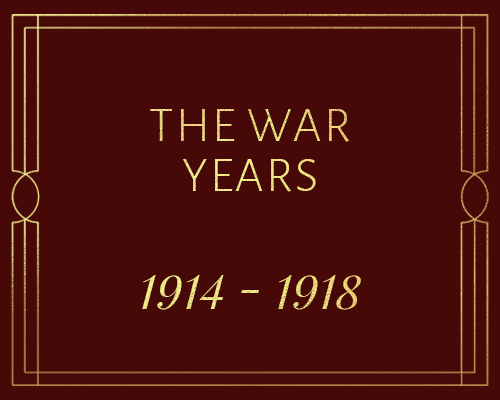
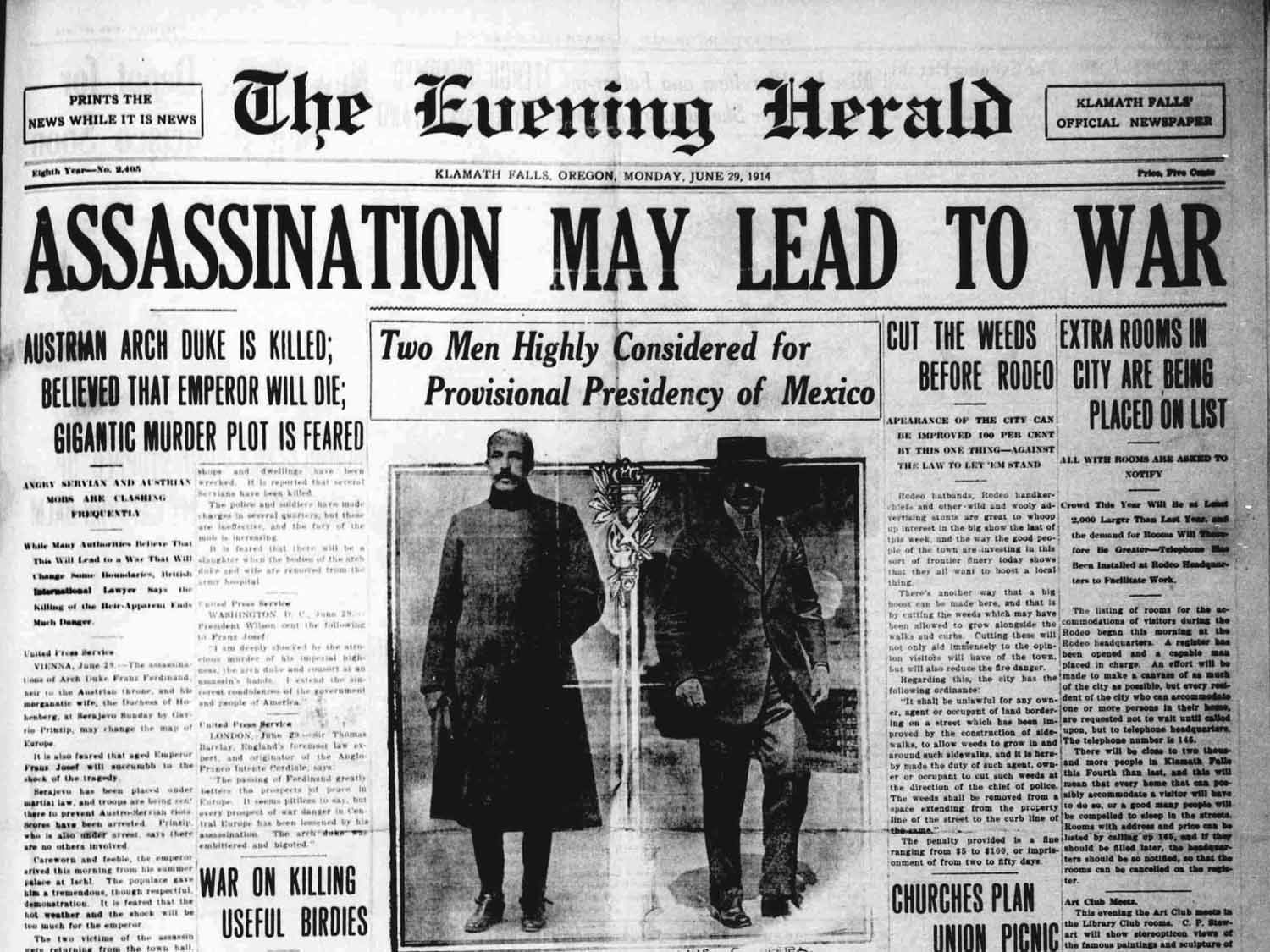
The Kalamath Falls Evening Herald headline for the day after the assassination. Source.
The assassination of Archduke Franz Ferdinand and his wife is the spark that ignites World War I less than a month later. ‘Abdu'l-Bahá had traveled for three years in the West, warning about a threat of war, pleading for peace and arbitration, unity, an end to racialism, and had even participated in the foremost Peace Conference in America at Lake Mohonk. War, it seems, was inevitable, much to ‘Abdu'l-Bahá's deep regret, as He expressed in the Holy Land on August 3, 1914:
The world is topsy-turvy! The wrong side of human character is up! A tremendous conflict is at hand. The world is at the threshold of a most tragic struggle . . . While in America I spoke before many Peace Societies, Churches and Conventions, and foretold the fearful consequences of armed peace in Europe. I said ‘Europe is like unto an Arsenal and one tiny spark will cause a universal combustion. O Men! Come ye together and as far as possible try to extinguish this world-raging fire’ . . . I found no one to listen to my advice . . .
The Diary of Ahmad Sohrab, 3 August 1914, Quoted in
Redman, Earl. Visiting 'Abdu'l-Baha Vol 2: Volume 2: The Final Years, 1913–1921 (p. 55)
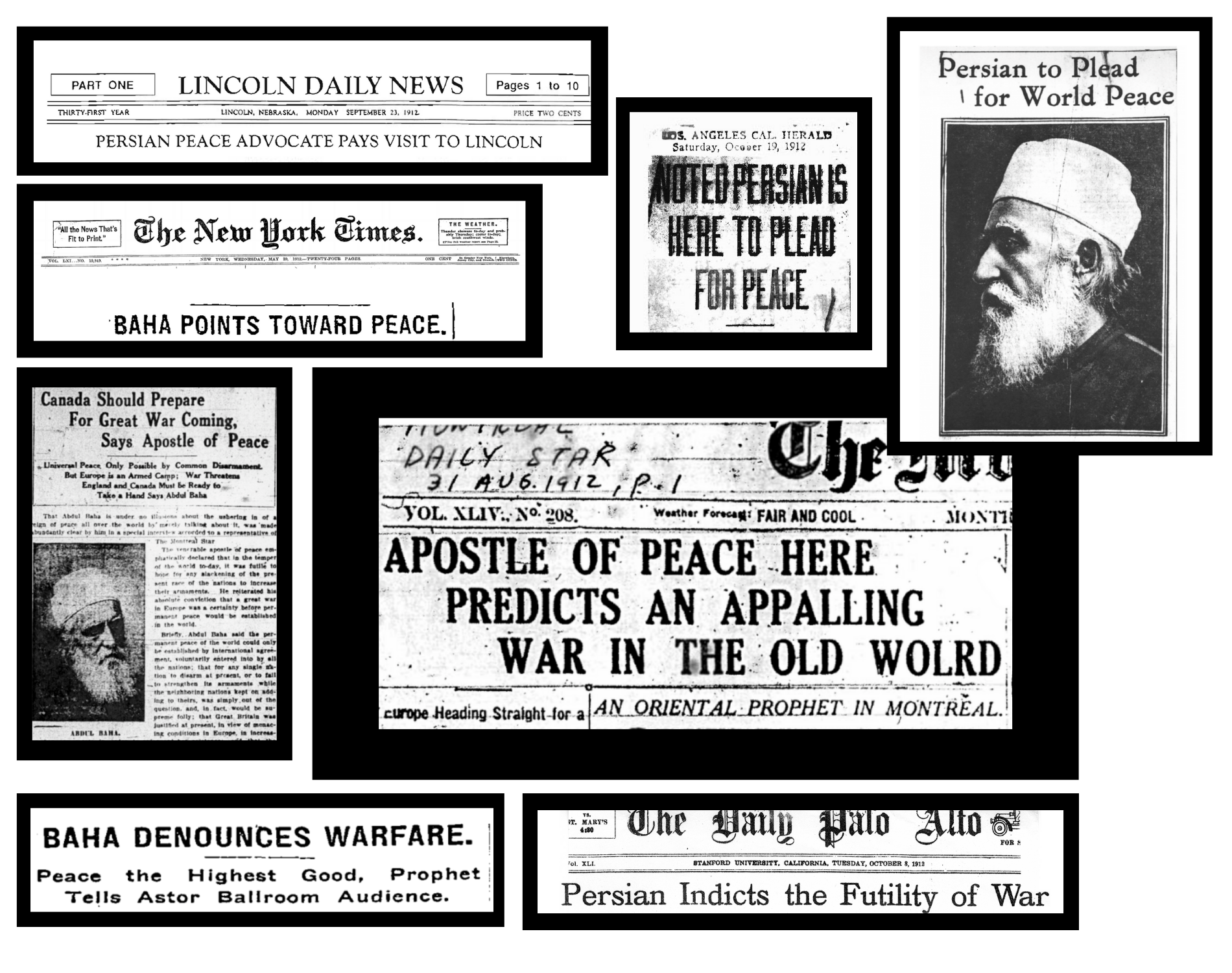
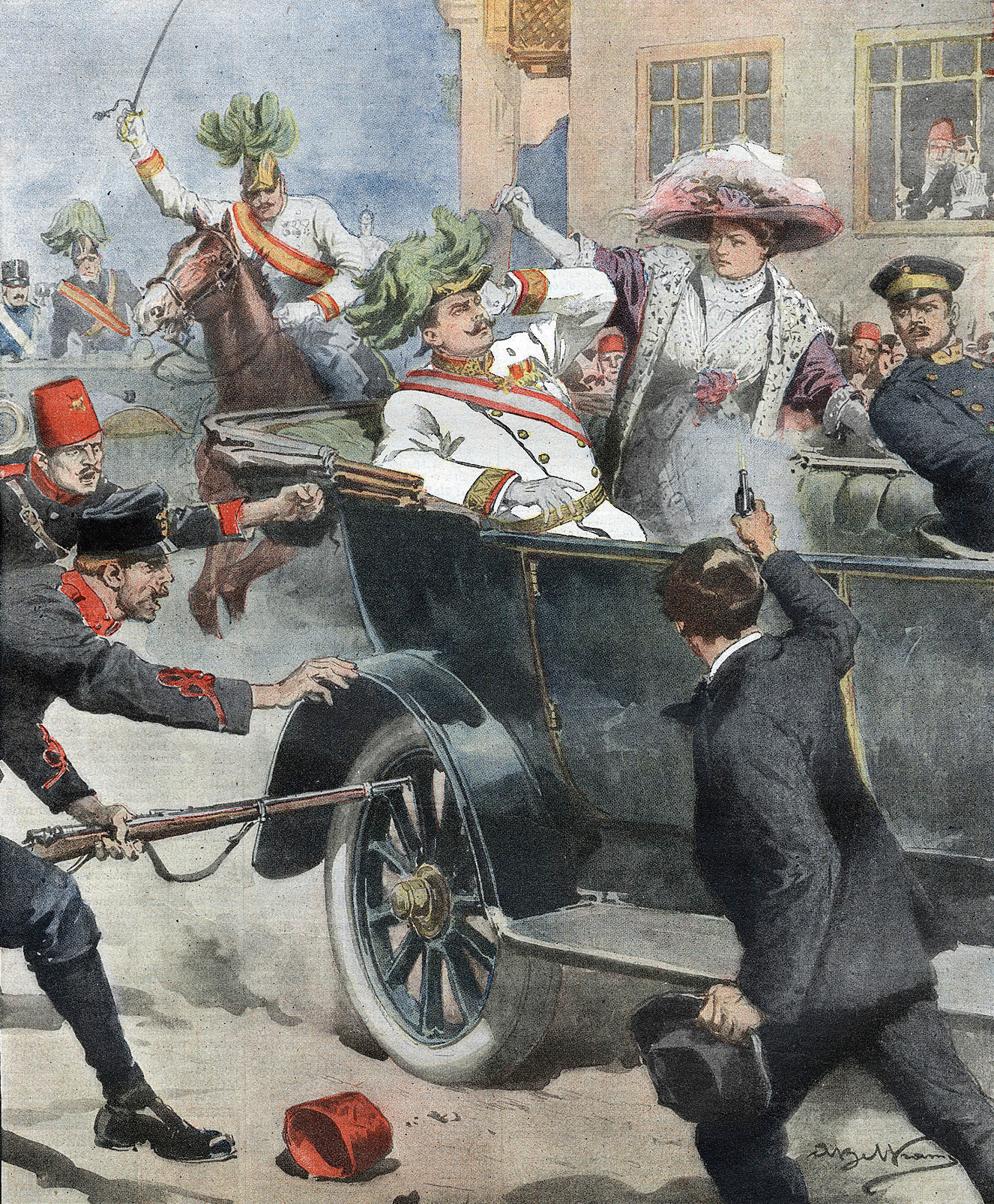
The first page of the edition of the Domenica del Corriere, an Italian paper, with a drawing by Achille Beltrame depicting a fantasy drawing by Achille Beltrame depicting how Gavrilo Princip could have killed the Archduke Franz Ferdinand of Austria and his wife Sophie, in Sarajevo, Bosnia, 28 June 1914, ©Bianchetti/Leemage, Source: Wikimedia Commons.
‘Abdu'l-Bahá had known for a long time war would come, as is evidenced by His repeated warnings to large audiences during His Journeys to the West. In preparation, ‘Abdu'l-Bahá had purchased a number of tracts of land along the Jordan River and around Haifa. The Master had arranged for Bahá'ís to work the land and grow corn, and wheat. The harvests were then hidden in special pits for safekeeping.
On June 29, 1914, one day after the Assassination of the Archduke Franz Ferdinand, ‘Abdu'l-Bahá dismisses all the pilgrims from Haifa, bidding them farewell in several addresses. Some Bahá'í residents of the Holy Land are also sent to the Caucasus or to Italy.
Between June and October 1914, the pressures of war mount in the Holy Land. Merchants in Haifa and 'Akká lose their customers who flee from the coast, and their goods are confiscated by the government. Arriving at the beginning of October 1914, Mason Remey reports that the army has been mobilized for some time, that the foreign post offices and banks are shuttered, businesses are at a standstill, and that the population is under "the spell of war panic," but that, in the middle of the unrest and confusion, ‘Abdu'l-Bahá is "serene, calm and peaceful."
On October 18, 1914, the Spanish Consul and his family and a group of Muslims ask to meet ‘Abdu’l-Bahá to ask for advice. ‘Abdu'l-Bahá describes these people's state of mind, representative of the general paranoia:
These people who called on us today were in a state of fright. They are expecting daily the bombardment of Haifa by foreign warships. As soon as they see a little moving speck in the horizon of the sea, they look through their glasses, anxiously scanning to see whether these are the expected cruisers. Their hearts are in a state of anxiety. They are terror-stricken. They have no peace of mind. This is one of the signs of absence of faith. It is stated in the Koran: ‘They imagine every cry raised is an enemy unto them.’ For example, when a thief enters a house, the least noise causes his flight. He trembles and quakes.
The Diary of Ahmad Sohrab, 18 October 1914
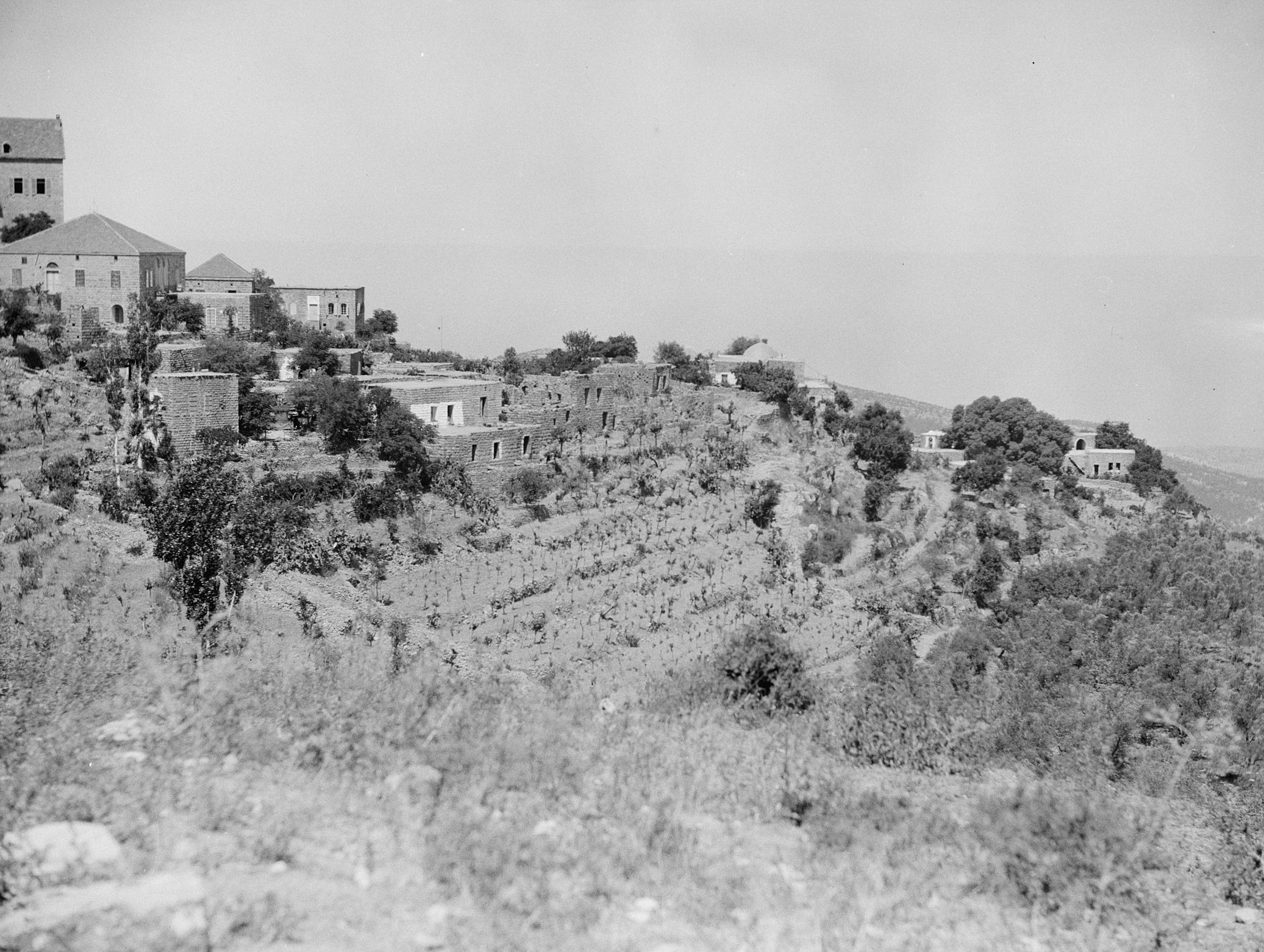
Aabey, a Druze village in Lebanon. There are, unfortunately, no photographs that we could find of Abú Sinán, and so this image is of another mountain-top Druze village in the same geographical region as Abú Sinán. Wikimedia Commons.
In the months preceding, Haifa has been under constant threat of bombardment, which at times felt imminent. The war panic spreading through Haifa and 'Akká has affected the Bahá'ís and especially the children who are terrified by the stories they are hearing. About eight kilometers northeast of Bahjí was a Druze village called Abú-Sinán. The village chief, Shaykh Sálih, extended ‘Abdu’l-Bahá an invitation to his village putting his own home at the Master's disposal. By September, ‘Abdu'l-Bahá arranged for His family and about 140 Bahá'ís, and as many children to move from Haifa and 'Akká into Abú-Sinán, a much quieter place, away from the stresses and panic of Haifa and the coast. Shaykh Sálih hosted the entire Holy Family, Edith Sanderson and Lua Getsinger, and the rest of the Bahá'ís were welcomed into the villager's homes.
At ‘Abdu'l-Bahá's request, both a small school and a dispensary were established in the village. The last of the Western Bahá'ís, Edith Sanderson leaves the Holy Land in January 1915. During these months, other than Hájí Mírzá Haydar-‘Alí, too old and ill to travel; and in between visits to 'Akká and Bahjí, ‘Abdu'l-Bahá is the only Bahá'í left in Haifa.
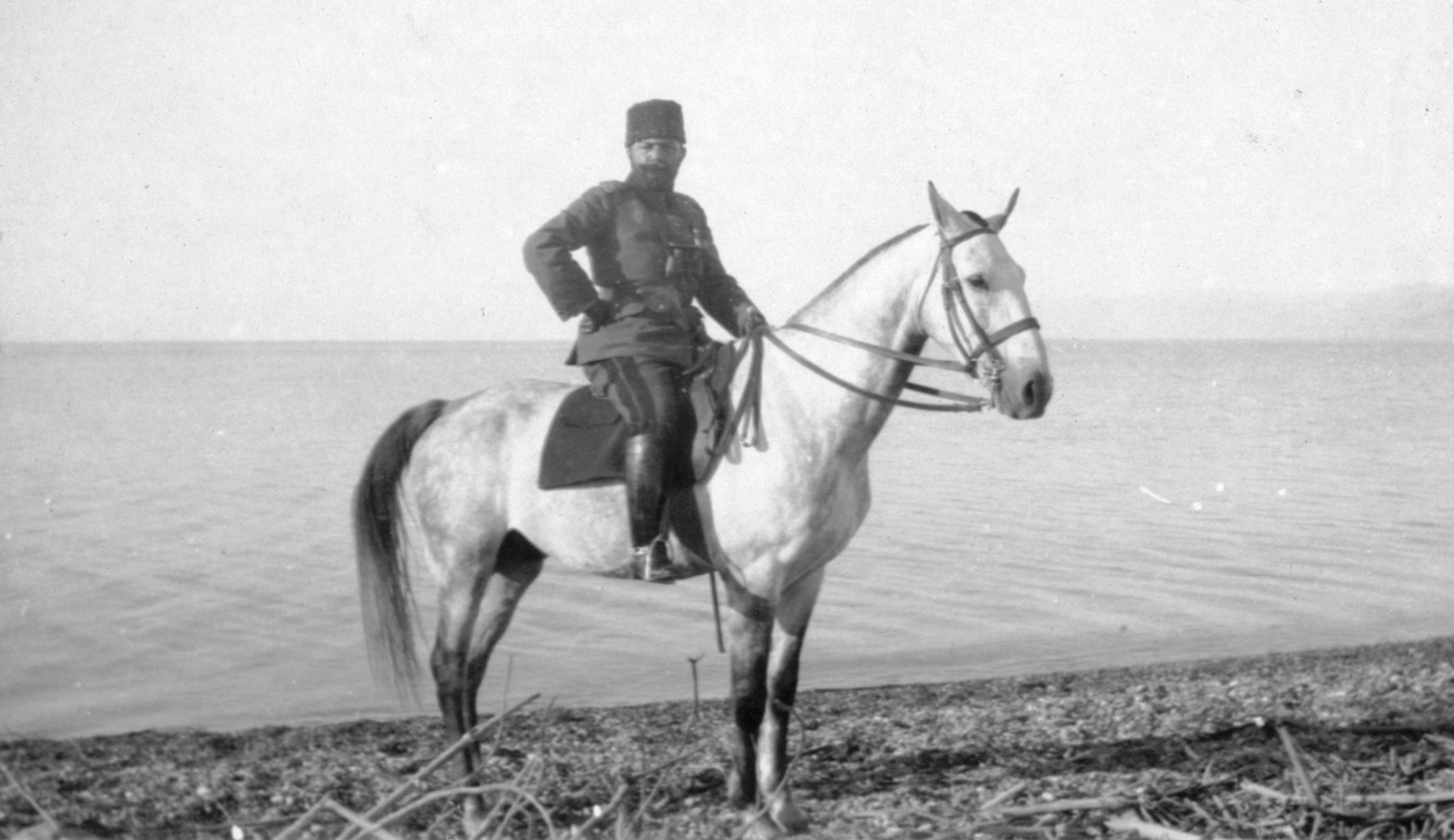
Jamál Pásha on the shores of the Dead Sea, May 3, 1915. Wikimedia Commons.
During World War I, the Ottoman empire was essentially led by three Páshas, among which Jamál Páshá. After being assigned Governorship and the military command for the southern provinces of the Ottoman Empire and leading the Black Sea Raid, Jamál Páshá is appointed Governor of Syria in 1915 with full powers in military and civilian affair, and begins a reign of terror.
Jamál Páshá is such a cruel and merciless dictator that he is nicknamed by local Arab populations al-Saffah, "the Blood Shedder," known for mercilessly hanging his opponents. He is also an inveterate enemy of the Bahá'í Faith and the Covenant-breakers waste no time in provoking Jamál Páshá further against the Faith by depicting ‘Abdu'l-Bahá as a political enemy and a foreign agent.
Jamál Páshá meets ‘Abdu'l-Bahá in person in 'Akká in early 1915 when he arrives in Palestine, but he swears to hang ‘Abdu'l-Bahá from the gates of 'Akká upon his triumphant return from his campaign to destroy the British in February 1915. George Latimer, reports ‘Abdu'l-Bahá response to these threats:
Let Jemal Pasha go and conquer Egypt. Then I will give myself up. Let him conquer Egypt and I am ready.
The Raid on the Suez Canal took place on 26 January and 4 February 1915 and was a staggering defeat for the Ottoman army and Jamál Páshá.
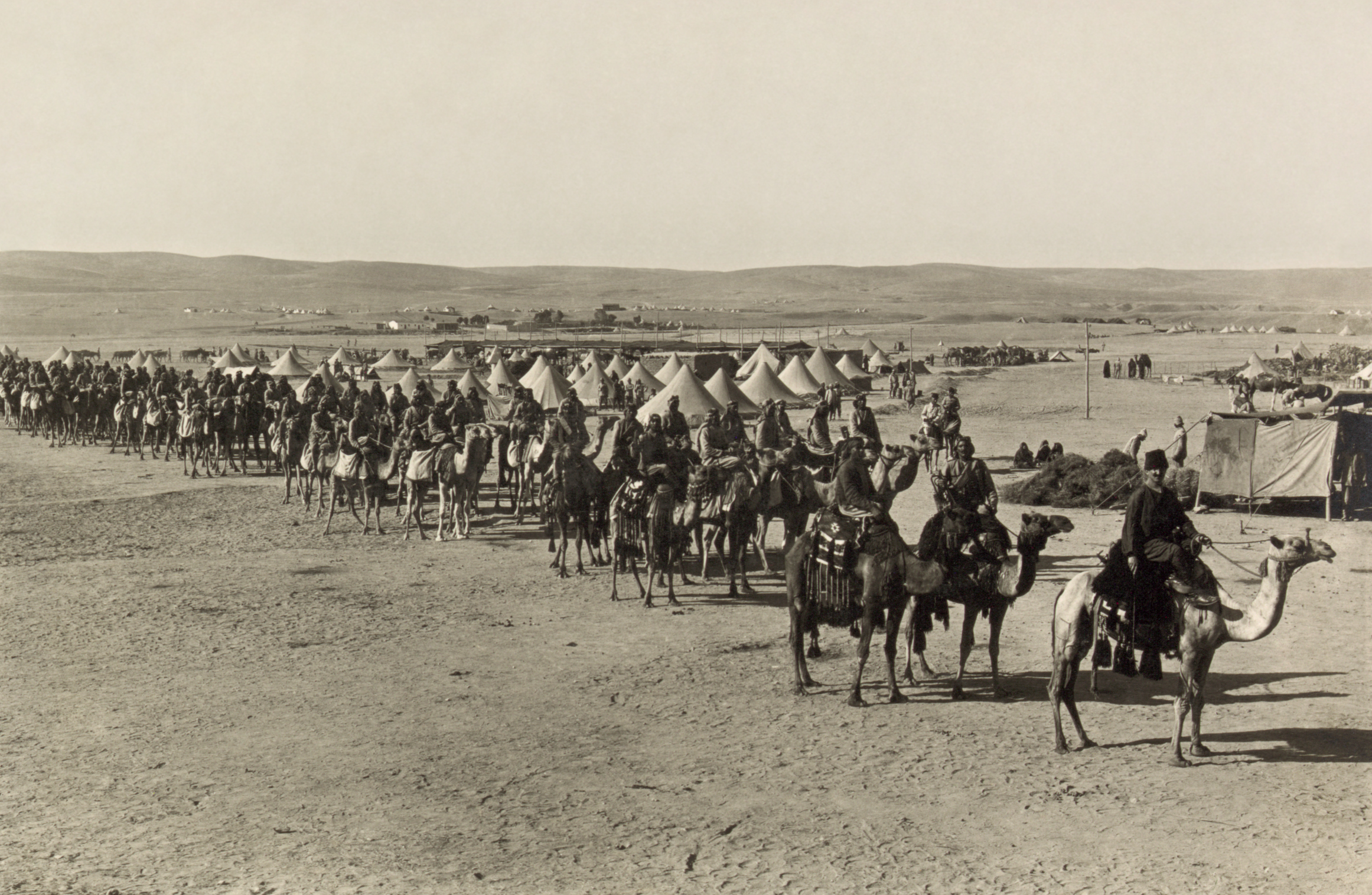
Ottoman camel corps at Beersheba, during the Raid on the Suez Canal (26 January & 4 February 1915), a defeat of the Ottoman army and Jamál Páshá. Wikimedia Commons.
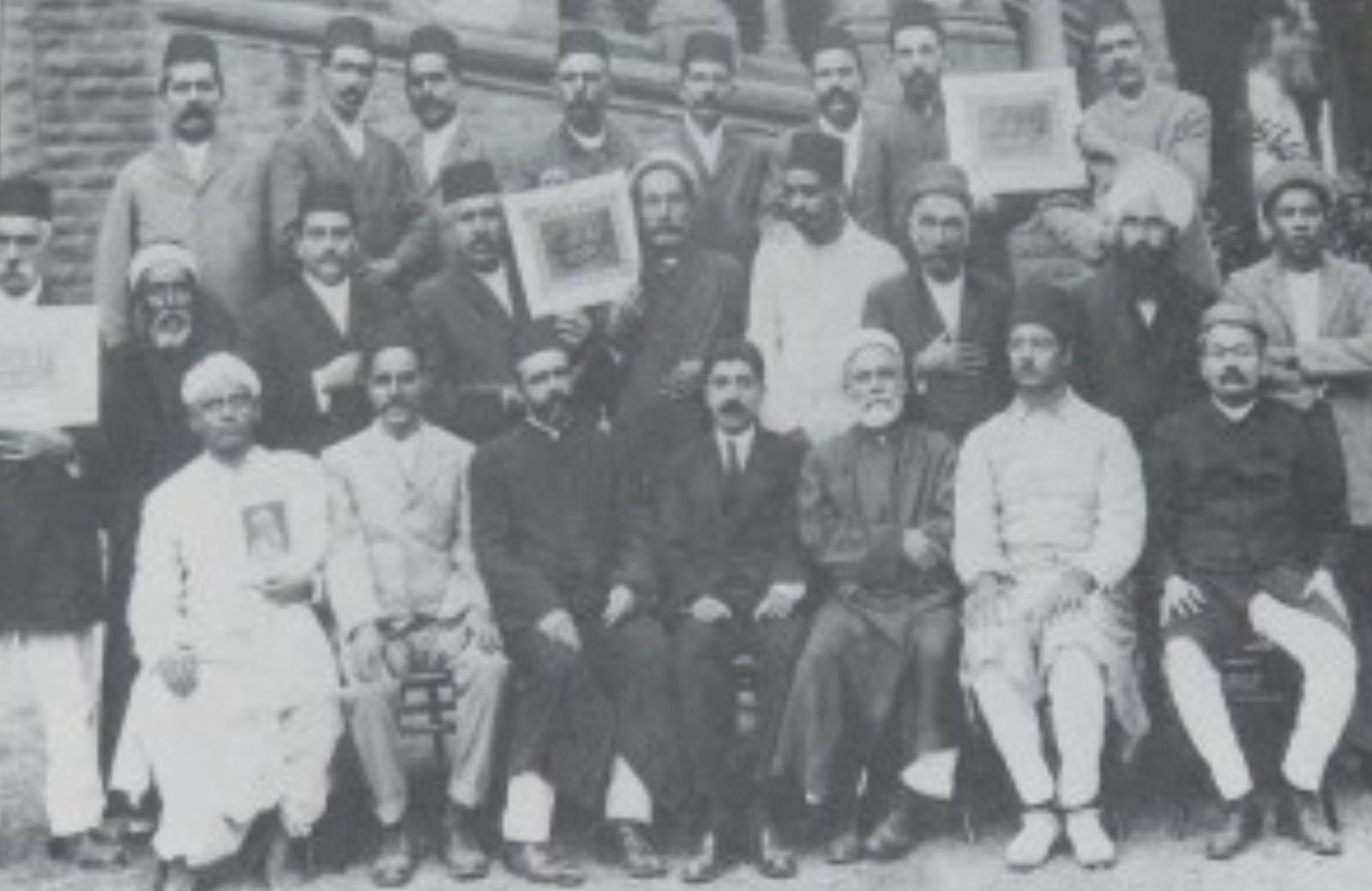
The first Baha’i National Convention, held on the lawns of Bombay University’s Fort campus, in 1920. From left, the multi-lingual Siyyid Mustafa Rumi (fifth), who accompanied Baha’i teacher Jamal Effendi on his tours; Narayan Rao Shethji Vakil (eighth), and just behind him, Pritam Singh, the first Sikh to become a Baha’i. Source: Gateway House.
The early months of 1915 are incredibly quiet, inactive, and isolated. ‘Abdu'l-Bahá is alone in Haifa, and He, at one point, remarks that He wishes He had gone to India, where His presence had been fervently requested. ‘Abdu'l-Bahá says that not having work to do has an adverse effect on His physical health. Even though pilgrims can no longer come to the Holy Land and mail is virtually halted, ‘Abdu'l-Bahá keeps Himself occupied with local concerns, and soon, the task of growing food and providing for the Bahá'í community and some of the population of 'Akká and Haifa will keep Him constantly busy. Jamál Páshá's mismanagement and abuse will gradually sink the Holy Land into a state of near famine.
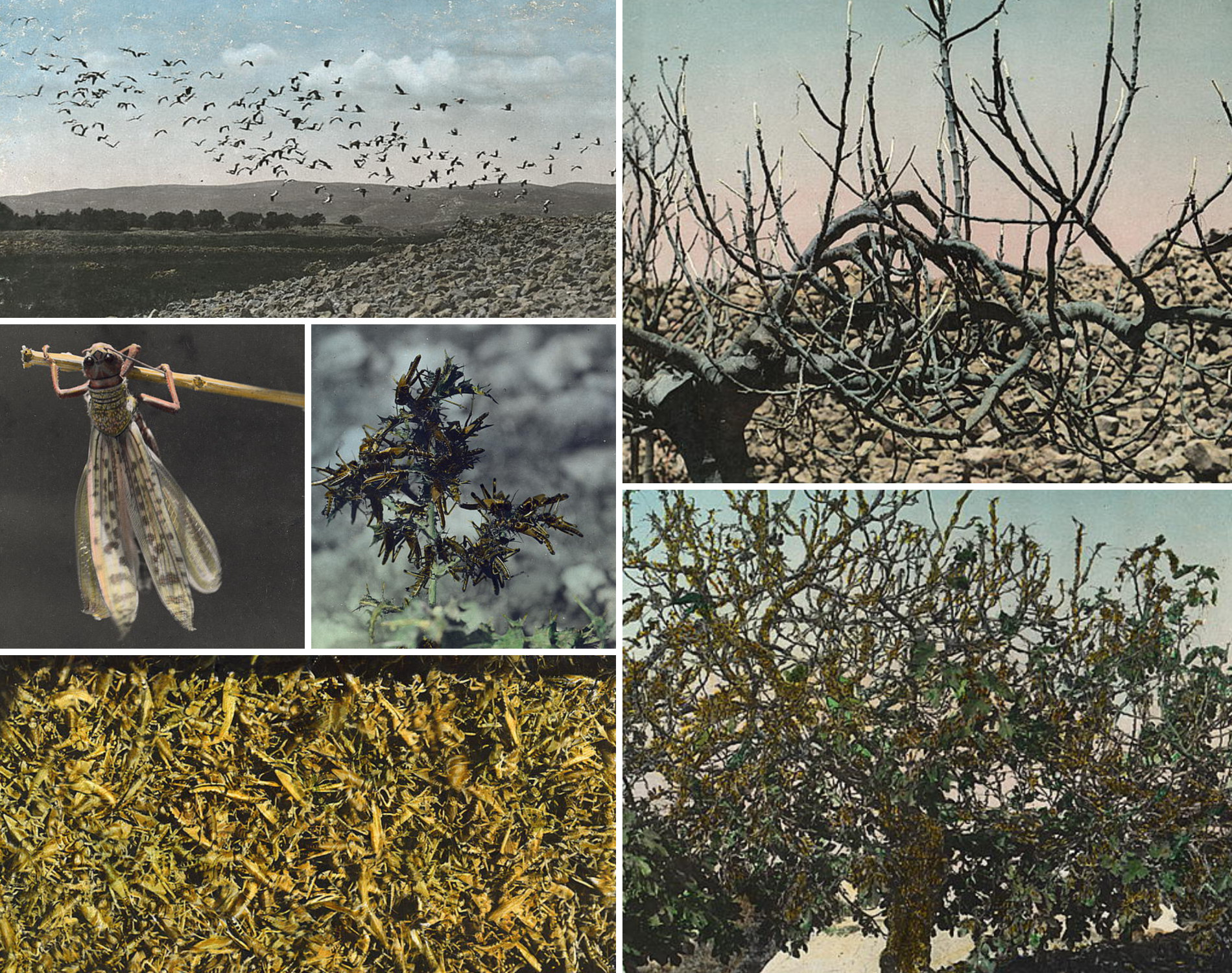
Six photos from the Library of Congress "Locust Plague of 1915" 57-photo-album, showing the damage caused by the infestation.
At the end of March 1915, a plague of Biblical proportions crashes down on Ottoman Palestine: an infestation of millions of locusts from March to October. The insects stripped areas in and around Palestine, Mount Lebanon and Syria of almost all vegetation and was the worst locust attack in decades. It could not have come at a worse time. Food supply was already depleted because of the war, and the locusts, it is argued, devoured a huge percentage of the region's foodstuffs and sources of livelihood, including fruits, vegetables, legumes, fodder and a small but not insignificant amount of the cereals. The attack diminished the 1915 winter harvest (wheat and barley) by 10–15 per cent, and caused the Great Famine of Mount Lebanon, (around the region of Beirut) in which close to 200,000 people died of famine.
During the entirety of the war, ‘Abdu'l-Bahá ministered to the poor and hungry populations of Haifa and 'Akká. On February 7, 1915, to give just one example, ‘Abdu'l-Bahá asked Isfandíyár, His carriage driver, and Dr. Habíb Mu'ayyád to take Him to the Cave of Elijah. There, ‘Abdu'l-Bahá found 200 poor women and children, and the Master instructed Isfandíyár to provide each with a sum of money.
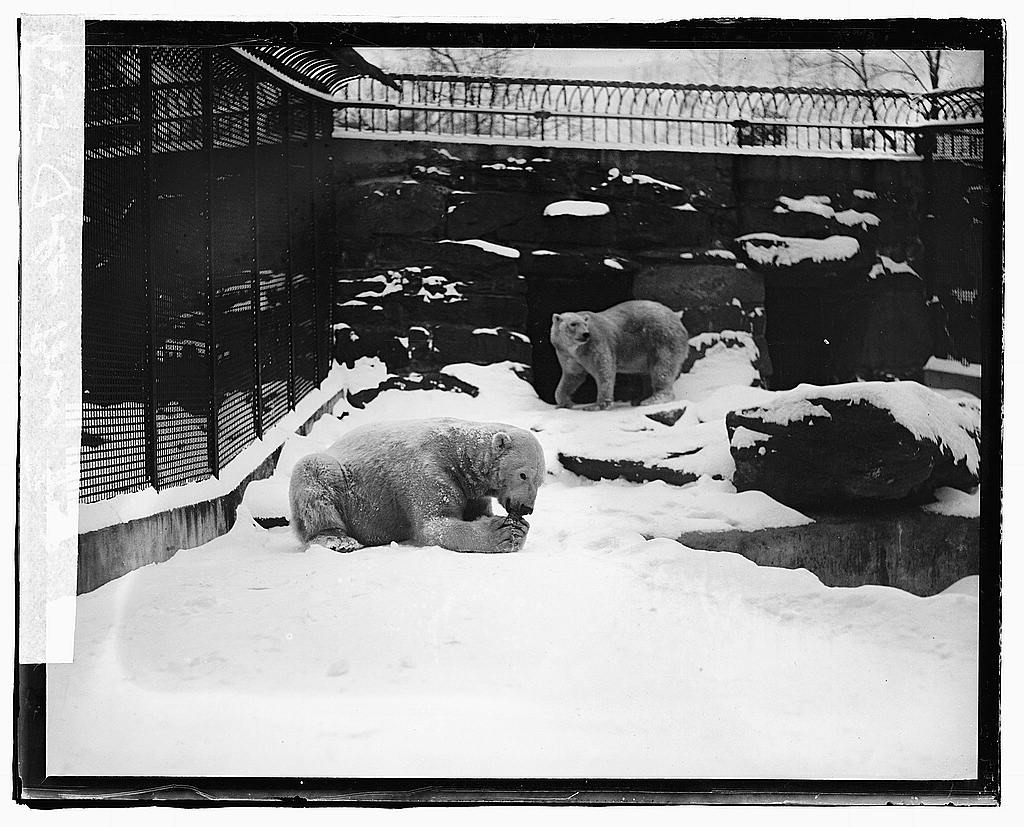
To illustrate one of 'Abdu'l-Bahá's funny stories about a polar bear in a zoo, a photograph of two polar bears at the Washington, D.C. Smithsonian Zoo between 1918 and 1920. Source: Library of Congress.
It is a trait of the Holy Family, and especially ‘Abdu'l-Bahá to maintain a wonderful, healthy sense of humor, especially in the direst of outward circumstances, and these very short vignettes of His comments during the First World War is no exception. ‘Abdu'l-Bahá would regularly cheer arduous living conditions by making a lively observation, such as commenting on a passing cat about how joyful, carefree and free of fear the little animal appears.
‘Abdu'l-Bahá would see a donkey and remember how, when traveling in the United States, He never saw donkeys, anywhere. This would remind Him of the Paris Zoo and looking at a polar bear, and at the time He had thought: the polar bear must be wondering "How did I get entangled with these people?"
One day, a man passes in front of ‘Abdu'l-Bahá's house in Haifa, and sets down the heavy basket he is carrying, making excuses about how he couldn't find a porter and had to do the labor himself. ‘Abdu'l-Bahá observed later that a man should never feel ashamed of doing useful work. when someone wrote in to ask where ‘Abdu'l-Bahá was, ‘Abdu'l-Bahá replied, with a smile: "In front of a cannon."
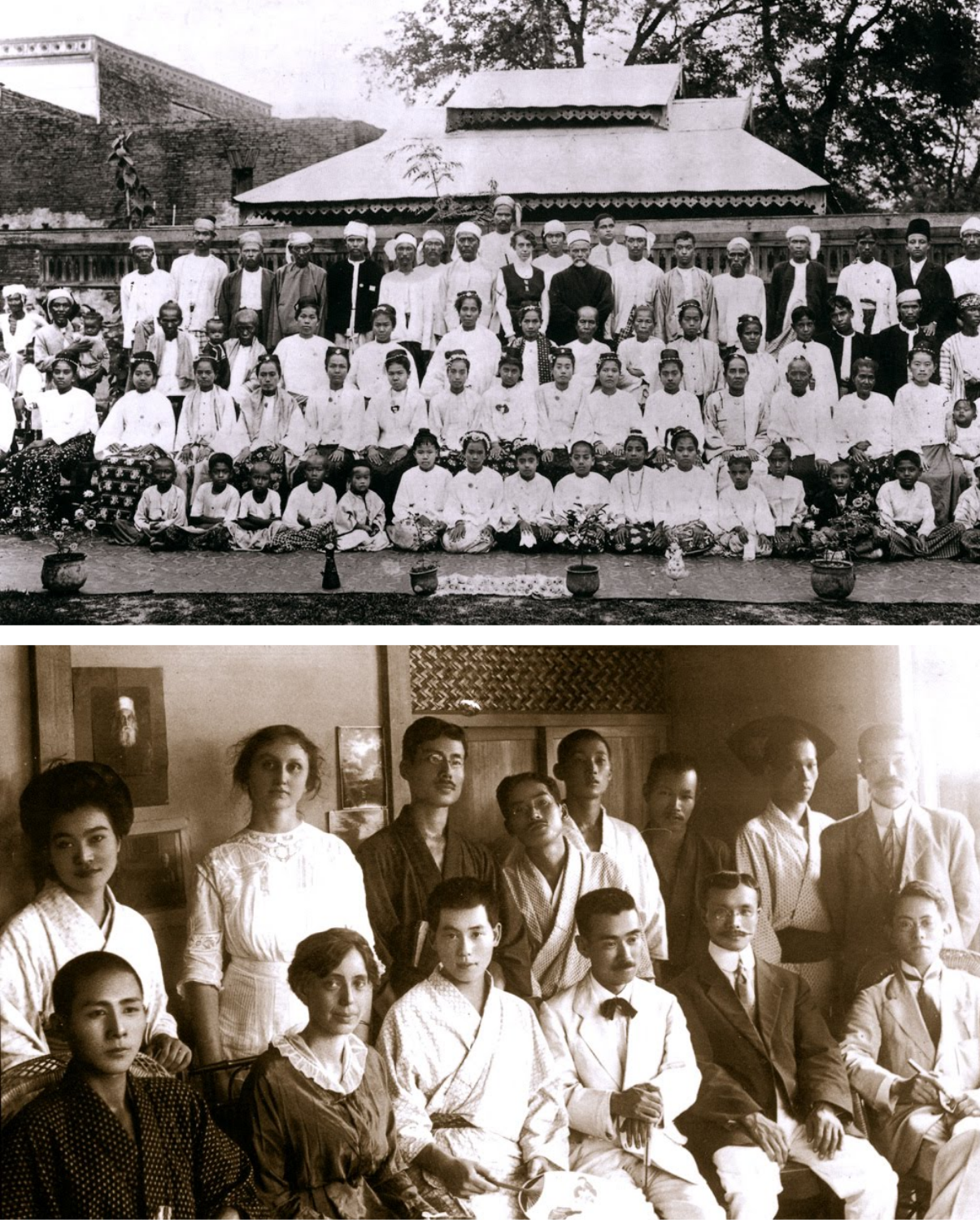
The latter part of Martha Root's first world tour takes her to India, Burma (top photograph in May 1915) and Japan (bottom photograph, with Agnes Alexander, July 1915)
Martha Root set out from America on January 15, 1915, on her first tour around the world. In the middle of the First World War, afraid of nothing, Martha Root wanted to visit Bahá'í communities around the world to see if they were living according to the example of ‘Abdu'l-Bahá. She traveled to Italy, Greece, Spain and Egypt, arriving in Port Said on March 13, 1915. The high point of her travels was to be a visit to the Holy Land, to spend time with ‘Abdu'l-Bahá and visit the Holy Shrines.
Martha Root was also carrying two thousand dollars in gold from Roy Wilhelm for ‘Abdu'l-Bahá. News from the Holy Land was scarce for American Bahá'ís but they did know that ‘Abdu'l-Bahá had been growing wheat, donating it, and caring for the poor and needy from his own funds, and they wanted to help. The determined Martha moved heaven and earth, but Palestine was in a state of war and closed to visitors.
Enlisting the help of Arthur Garrels, the American Consul in Egypt, she ensured the gold was transported to ‘Abdu'l-Bahá. While in Egypt, Martha Root learned from a Haifa refugee that the city suffering from famine and distress and the people lived under the threat of massacres. But, the refugee reported, ‘Abdu'l-Bahá came down from Mount Carmel into Haifa every day to help and cheer up the inhabitants, saying:
They love ‘Abdu'l-Bahá in Haifa so much they would go on their hands and knees to get food for Him if He was in need. He helps them all and is not in fear of any danger.
R. M. Garis. Martha Root: Lioness at the Threshold, page 61.
After spiritually rewarding experiences during her six weeks in Egypt, Martha Root left for India on April 24, 1915. She did not know at the time that ‘Abdu'l-Bahá had written her two Tablets, which she received much later. In them, one senses the danger ‘Abdu'l-Bahá is in in, as He advises her: "If thou comest to Haifa, do not bring with thyself even one written page, though it be a note-book of accounts. Also do not bring any books or pamphlets, because they are extremely suspicious of anything in writing, even an account-book."
When the Bahá'ís return to Haifa from six months in Abú Sinán, ‘Abdu'l-Bahá resumes weekly gatherings in His house, and in the latter part of 1915, His master biographical work of early heroes and heroines of the Bábí and Bahá'í Faith is born: Memorials of the Faithful. In it, ‘Abdu'l-Bahá leaves to posterity biographies of sixty-nine of the most famous early believers such as Ṭáhirih, Nabíl-i-Akbar, Mullá ‘Alí-Akbar (known as Hájí Akhúnd), but what is unique about this book is that ‘Abdu'l-Bahá tells the stories of faithful, pure-hearted, devoted believers who would have been forgotten by history and historians if he had not cast a light upon their lives, people like ‘Abdu’ṣ-Ṣáliḥ, the Gardener, who grew up an orphan, the dishwashers and helpers during the long exile, Áqá Mírzá Maḥmúd and Áqá Riḍá, or Muḥammad-‘Alíy-i-Iṣfahání, whose joy in life was, after he had finished his business in town, to wrap up his samovar in a converted saddlebag and have tea in a meadow or a field, exclaiming “How delicious my tea is today, what perfume, what color! How lovely this meadow is, and the flowers so bright!”
Memorials of the Faithful is unparalleled in religious history: it is not the classic "biographies of saints" category of books, but it is so intimate, there is so much love, deeply etched in every single portrait, that it is truly more than a book, it is a love letter from ‘Abdu'l-Bahá to the humble, detached, selfless, often poor people He loved the most. It is not a list of what the men and women portrayed have accomplished, but very much a spiritual list of their greatest qualities and spiritual attributes. One of the most extraordinary things about this book is that in some portraits, like the one of Hájí Akhúnd, ‘Abdu'l-Bahá not only describes their Abhá Kingdom in detail, but He recounts a recent dream and conversation He has had with the Hájí Akhúnd in the Abhá Kingdom, as the latter as recently completed a teaching journey in a part of the Kingdom. One of the lesser-known features of Memorials of the Faithful is that it contains beautiful descriptions of the Abhá Kingdom, and with nearly each biography, ‘Abdu'l-Bahá uses a different metaphor to describe their passing: "he left this world of dust behind him and hastened away to the unsullied world above;" "he left this darksome, narrow world and hastened away to the land of lights;" and "he hastened upward to the Well-Beloved, soared out of this dust heap to pitch his tent in a fair and shining place."
Who else but ‘Abdu'l-Bahá would spend so much time remembering the lives of sixty-nine other people, who would have been forgotten by history, at a time in His life, aged 71, when others would be busy writing their own biographies? Although present during many of the stories He tells, ‘Abdu'l-Bahá almost never mentions Himself.
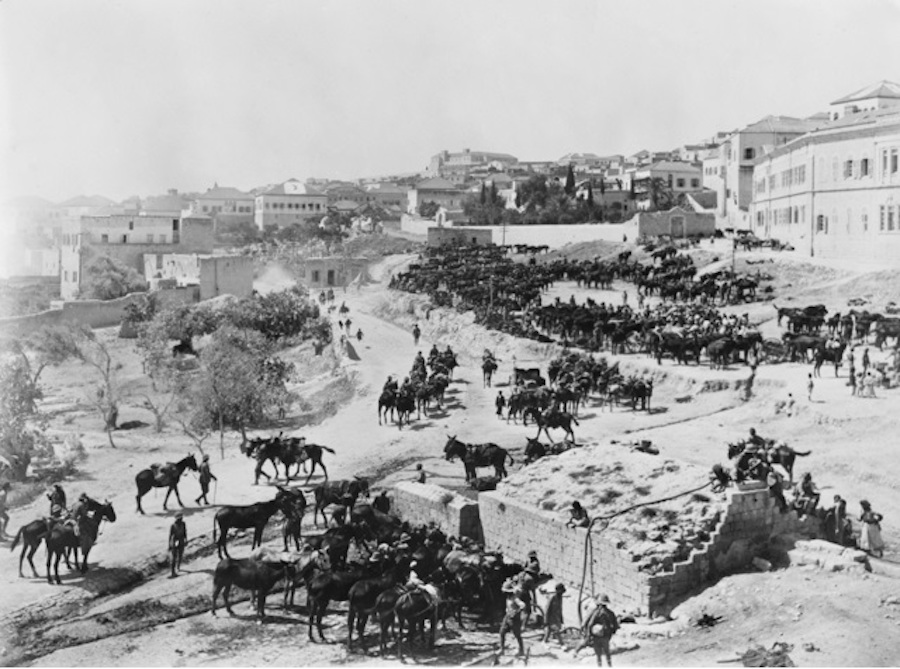
Cavalry watering at St. Mary's Well in Nazareth in September 1918, one year after ‘Abdu'l-Bahá visits Nazareth. Wikimedia Commons.
Mírzá Jalál, one of ‘Abdu'l-Bahá's son-in-laws, recalls that one morning in early 1916, at 7 in the morning, 'Abdu'l-Bahá tells him: "Tell Isfandiyar to have my carriage brought, and you and Khusráw be ready to accompany me to Nazareth in half an hour." At that time in the war, Jamál Páshá, the Commander-in-chief of the Syrian and Palestine fronts is in Nazareth and 'Abdu'l-Bahá is determined to meet him there, The journey of thirty kilometers takes twelve hours and 'Abdu'l-Bahá arrives at seven in the evening, and takes a room at the German Hotel.
The next day, ‘Abdu'l-Bahá is invited for lunch at the home of a notable of Nazareth, a member of the Fahum family. Jamál Páshá and 200 war officials are also present. The lunch lasts from one to four in the afternoon, and during those three hours, ‘Abdu'l-Bahá speaks in Turkish on spiritual, philosophical and scientific subjects. His address is so intense that the guests stop eating while they listen to Him speak. Jamál Páshá himself, who had been turned against ‘Abdu'l-Bahá by the Covenant-breakers when he first arrived in Palestine, becomes respectful towards the Master. When ‘Abdu'l-Bahá rises to leave, Jamál Páshá politely takes ‘Abdu'l-Bahá's arm and helps Him leave the table, leads Him to the reception room and seats Him comfortably, continuing the conversation.
After answering a few more questions, shedding light on a variety of topics, ‘Abdu'l-Bahá takes His final leave and Jamál Páshá walks Him out of the house and down the steps, the same Jamál Páshá who was never in the habit of rising from His seat to show deference to anyone, the same Jamál Páshá who, in that same year of 1915-1916 had 34 political opponents executed, and who will again on 6 May 1916 in Damascus and Beirut, execute a large number of Lebanese and Syrian Shi'a Muslims as well as Christians, all wrongly accused of treason.
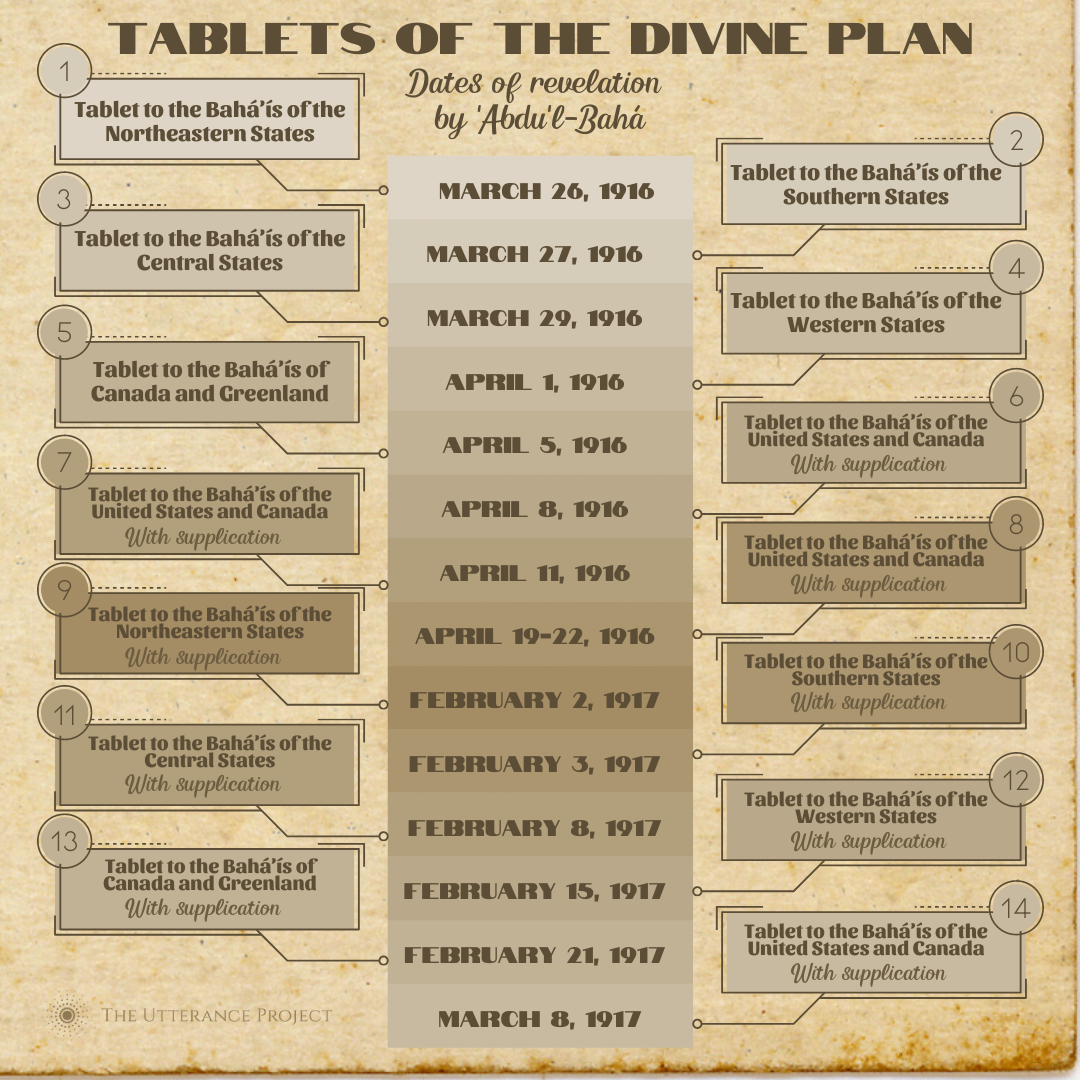
In the midst of the tensions of the First World War, between the springs of 1916 and 1917, ‘Abdu'l-Bahá reveals one of the greatest works of His entire Ministry: Fourteen Tablets that comprise His Tablets of the Divine Plan. Shoghi Effendi describes the Tablets of the Divine Plan, along with His Will and Testament and the Lawḥ-i-Karmil (the Tablet of Carmel) by Bahá’u’lláh as the three Charters for the promulgation of the Bahá'í Faith, and the Universal House of Justice, in a letter addressed to an individual believer on September 29, 1977 emphatically confirms the importance of the Tablets of the Divine Plan by saying: "All the teaching plans launched by the beloved Guardian, as well as those subsequently directed by the Universal House of Justice, are stages in the implementation of this master plan conceived by the Centre of the Covenant for the diffusion of the Message of Bahá’u’lláh."
The situation and solution addressed by ‘Abdu'l-Bahá in the Tablets of the Divine Plan are the heart and matter of the Bahá'í Revelation: ‘Abdu'l-Bahá assigns the problems facing humanity, at a moment when the entire world is embroiled in a worldwide conflict, as a spiritual illness arising from a crisis of Faith, essentially, humanity being deprived of the Revelation of Bahá'u'lláh. ‘Abdu'l-Bahá's solution to these problems is a "Plan," the very first systematic teaching Plan in Bahá'í history, to spread the Cause of Bahá'u'lláh to every corner of the globe, in the Master's own words, "carry the fame of the Cause of God to the East and to the West and spread the Glad Tidings of the appearance of the Kingdom of the Lord of Hosts throughout the five continents." So momentous is ‘Abdu'l-Bahá's Divine Plan that after His passing, Shoghi Effendi, the Guardian of the Faith, and later the Universal House of Justice will continue to implement the Master's "master plan."
Lameh Fananapazir, in his essay published in Lights of Irfán Volume 18, explains that the Tablets of the Divine Plan "mandate members of the North American community to undergo a spiritual baptism and arise to proclaim the advent of the Kingdom of God, relying on the support of the Holy Spirit and confident that their efforts will bear fruit in a fertile field and that the Divine Word will transform souls and create unity and harmony." The letters are replete with direct and indirect references to the Bible and the Qur’án, demonstrating that the Source of inspiration of all Dispensations is One, and that Bahá’u’lláh is the Promise and fulfillment of the Glad-tidings of the Bible and of the Qur’án. The Tablets remind us that Christianity triumphed through the exemplary sacrificial efforts of the disciples to propagate far and wide the ‘Good News’ of the coming of the Kingdom.
Below are the first eight Tablets of the Divine Plan revealed in the Spring of 1916, with links to the Tablets on Bahá'í Reference Library, date and place of revelation and recipients. When Tablets contain one of the celebrated "teaching prayers," they are indicated and a link is provided. In the sixth Tablet of the Divine Plan, addressed to the Bahá'ís of the United States and America, ‘Abdu'l-Bahá directs the friends to the territories in Central and South America. In the seventh Tablet, ‘Abdu'l-Bahá calls on the American believers to look to the "other continents of the globe", such as "Europe, Asia, Africa, Australia and the Islands of the Pacific."
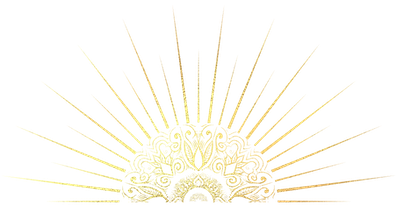
First Tablet of the Divine Plan
Sunday morning, 26 March 1916
Revealed in ‘Abdu'l-Bahá's room in the Mansion of Bahjí
Addressed to the Bahá'ís of the Northeastern States: Maine, Massachusetts, New Hampshire, Rhode Island, Connecticut, Vermont, Pennsylvania, New Jersey and New York

Second Tablet of the Divine Plan
Monday morning, 27 March 1916
Revealed in the garden adjacent to the Shrine of Bahá'u'lláh at Bahjí
Addressed to the Bahá'ís of the sixteen Southern States of the United States: Delaware, Maryland, Virginia, West Virginia, North Carolina, South Carolina, Georgia, Florida, Alabama, Mississippi, Tennessee, Kentucky, Louisiana, Arkansas, Oklahoma and Texas.

Third Tablet of the Divine Plan
Wednesday morning, 29 March 1916
Revealed outside of the Mansion of Bahjí
Addressed to the Bahá'ís of the twelve Central States of the United States: Michigan, Wisconsin, Illinois, Indiana, Ohio, Minnesota, Iowa, Missouri, North Dakota, South Dakota, Nebraska and Kansas.

Fourth Tablet of the Divine Plan
Saturday morning, 1 April 1916
Revealed in ‘Abdu'l-Bahá's room in the Mansion of Bahjí
Addressed to the Bahá'ís of the eleven Western States of the United States: New Mexico, Colorado, Arizona, Nevada, California, Wyoming, Utah, Montana, Idaho, Oregon and Washington.

Fifth Tablet of the Divine Plan
Wednesday morning, 5 April 1916
Revealed in the garden adjacent to the Shrine of Bahá'u'lláh at Bahjí
Addressed to the Bahá'ís of the Canada—Newfoundland, Prince Edward Island, Nova Scotia, New Brunswick, Quebec, Saskatchewan, Manitoba, Ontario, Alberta, British Columbia, Yukon, Mackenzie, Keewatin, Ungava, Franklin Islands—and Greenland.

Sixth Tablet of the Divine Plan
Saturday morning, 8 April 1916
Revealed in the garden adjacent to the Shrine of Bahá'u'lláh at Bahjí
Addressed to the Bahá'ís of the United States and Canada.
This is the first tablet containing one of the teachings prayers from the Tablets of the Divine Plan. This one, addressed to the Bahá'ís of the United States and Canada, begins with the words, "O Thou incomparable God!"

Seventh Tablet of the Divine Plan
Tuesday morning, 11 April 1916
Revealed in the garden outside the Shrine of Bahá'u'lláh at Bahjí
Addressed to the Bahá'ís of the United States and Canada.
This Tablet contains a teaching prayer, addressed to the Bahá'ís of the United States and Canada which begins with the words, "O God my God! Thou seest me enraptured"

Eighth Tablet of the Divine Plan
Wednesday morning, 19 April 1916
Thursday morning, 20 April 1916
Saturday morning, 22 April 1916
Revealed in ‘Abdu'l-Bahá's room in the Mansion of Bahjí (19 April)
Revealed in the pilgrim's quarters of the mansion of Bahjí (20 April)
Revealed in the garden adjacent to the Shrine of Bahá'u'lláh at Bahjí (22 April)
Addressed to the Bahá'ís of the United States and Canada.
This Tablet contains a teaching prayer, addressed to the Bahá'ís of the United States and Canada which begins with the words, "O God, my God! Thou seest how black darkness is enshrouding all regions"
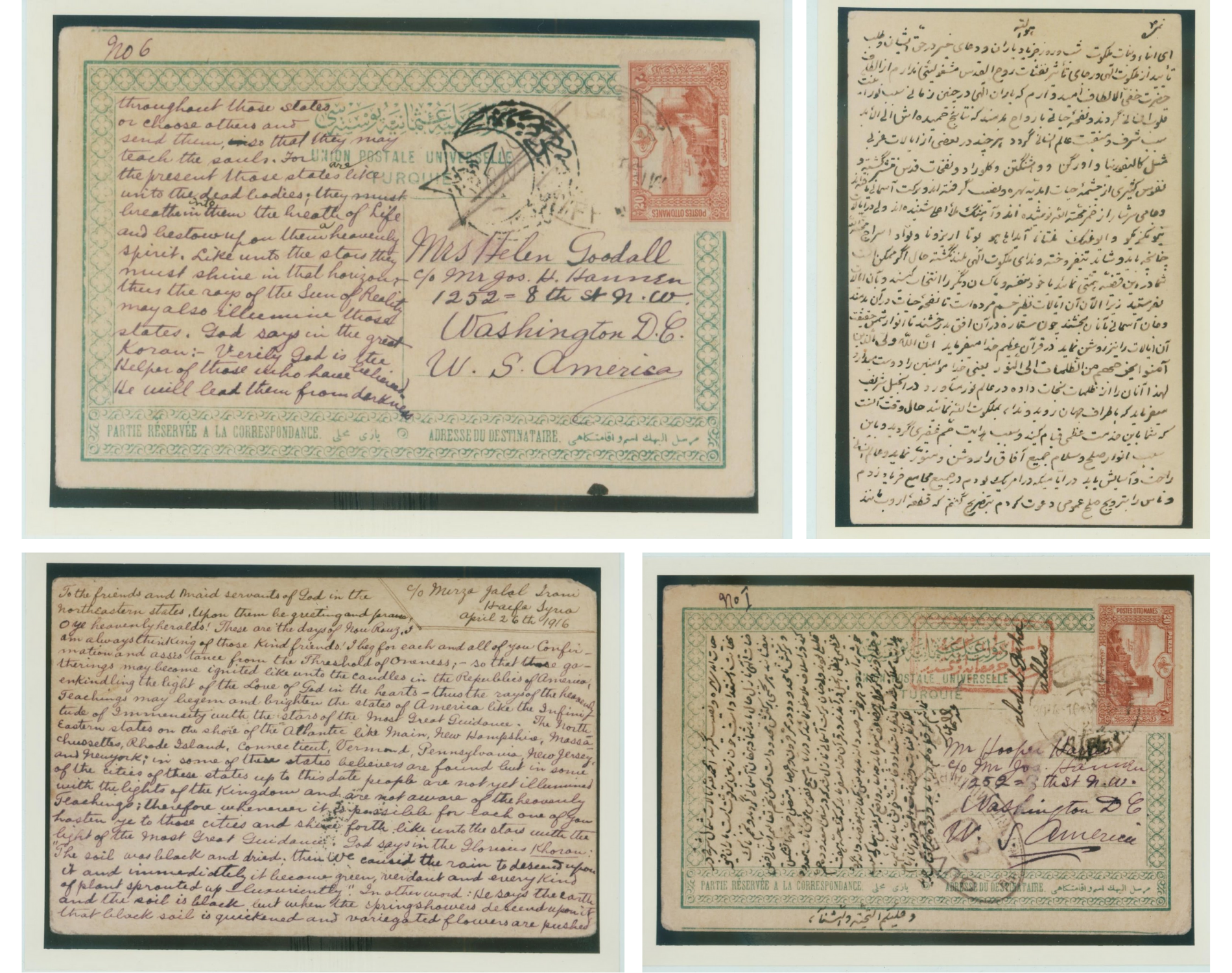
The first Tablets of the Divine Plan were sent to various individuals (Helen Goodall in the West, Joseph Hannen in the East) on series of postcards (sometimes up to eight) that contained the Persian and Arabic originals and the English translations. Top row: English front postcard and Persian back postcard for the first (1916) Tablet to the Western States. Bottom row: English back postcard and Persian front postcard for the first (1916) Tablet to the Northeastern States. National Bahá'í Archives of the United States. Source: Brent Poirier's website: Tablets of the Divine Plan.
"The first five Tablets reached the American believers in 1916 before the final connection between East and West was severed because of the war, and were published in the 8 September 1916 issue of Star of the West." (Redman, Earl. Visiting 'Abdu'l-Bahá Volume 2: The Final Years, 1913–1921)
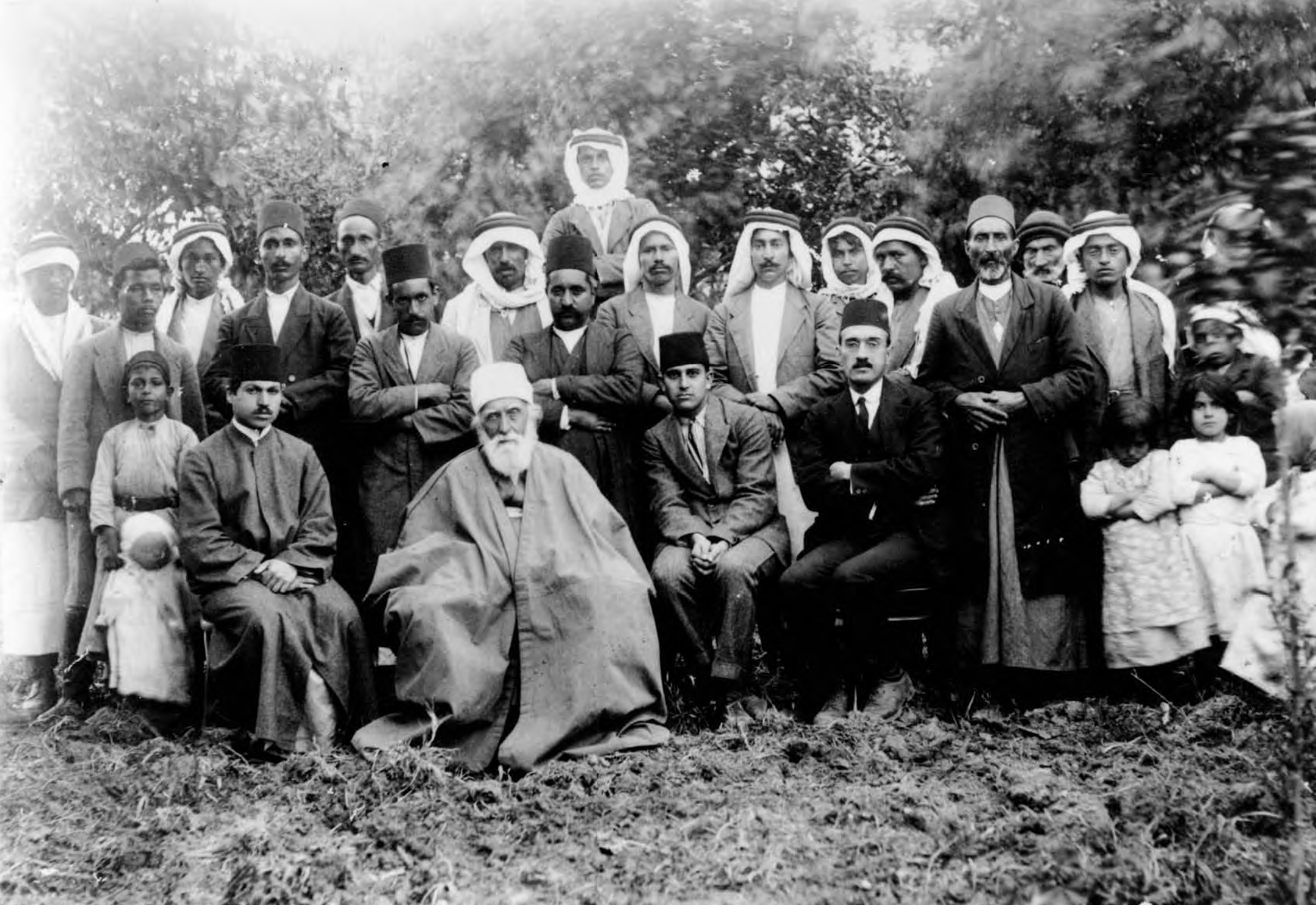
Photograph of ‘Abdu’l-Bahá with some of the Baha’i farmers of 'Adasiyyíh (It is possible this photograph could be from Naw Rúz 1916, as the farmers hired a professional photographer from Tiberias to take pictures of the event, but because this is not confirmed, Iraj Poostchi dates the photograph as "taken during or shortly after World War I"; For a detailed identification of each Bahá'í in the photograph, please see Iraj Poostchi, ‘Adasiyyah: A Study in Agriculture and Rural Development (2010) page 76.
At the end of March 1916, the Ottoman forces are heavily engaged in the war and the authorities intend to mobilize the men of 'Adasiyyíh and other villages in the district, and send them to war. The community sends a Bahá'í to Haifa to inform ‘Abdu'l-Bahá of this new development. The Master sends the messenger back and arrives in 'Adasiyyíh the next day, two days before Naw Rúz, receives a warm welcome, and spends Naw Rúz with the farmers, who have hired a photographer from Tiberias to take pictures of the celebrations. On the day of Naw-Rúz, the Ottoman government declares exemption from military service for all exiled Persians, Bahá'ís and others.
‘Abdu'l-Bahá stays in 'Adasiyyíh for a week, receiving local notables and Ottoman government officials in a wooden cottage close to the west wall of the Guest House. ‘Abdu’l-Bahá enjoys the cottage and its garden, resting in the shade of a lemon tree by the running brook, and refreshing Himself by washing His hands and face in the fresh water.
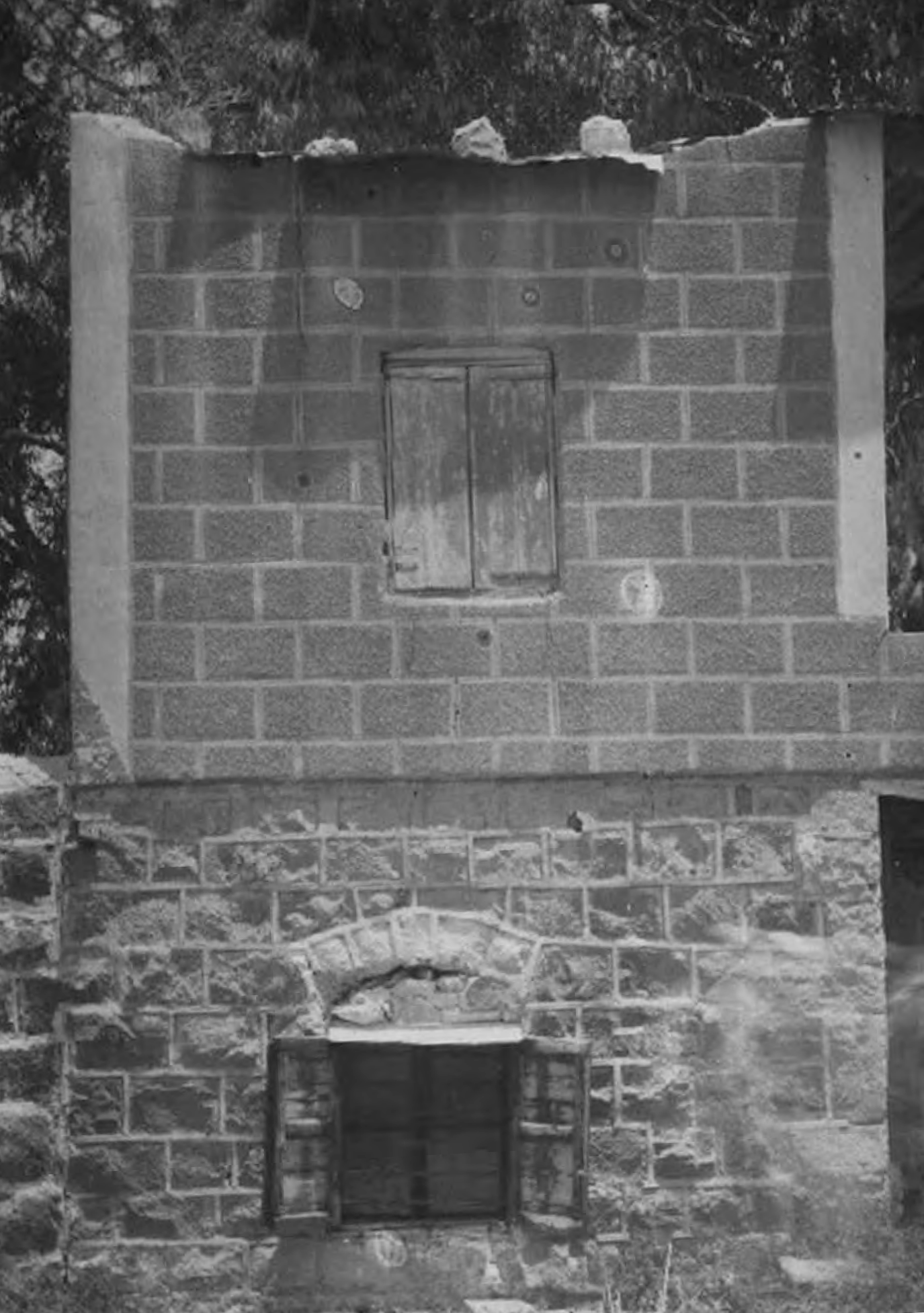
Building of the Dar-al-Maṣlaḥah which ‘Abdu’l-Baha used when in ‘Adasiyyah, probably taken in 1960s or 1970s (photograph from Hossein Ashchi), Source: please see Iraj Poostchi, ‘Adasiyyah: A Study in Agriculture and Rural Development (2010) page 74.
When He visits 'Adasiyyíh, ‘Abdu'l-Bahá rides a horse through the village lanes, to the neighboring village of Baqura near the Yarmuk river, and to the dam. He also spends time at the Dar-al-Maṣlaḥah, the administrative building of 'Adasiyyíh, and the first building built by the farmers. Shoghi Effendi's father, Mírzá Hádí Afnán, lives in the Dar-al-Maṣlaḥah and manages a farm in the village. Before returning to Haifa, ‘Abdu'l-Bahá blesses the building and asks Mírzá Hádí Afnán to look after it.
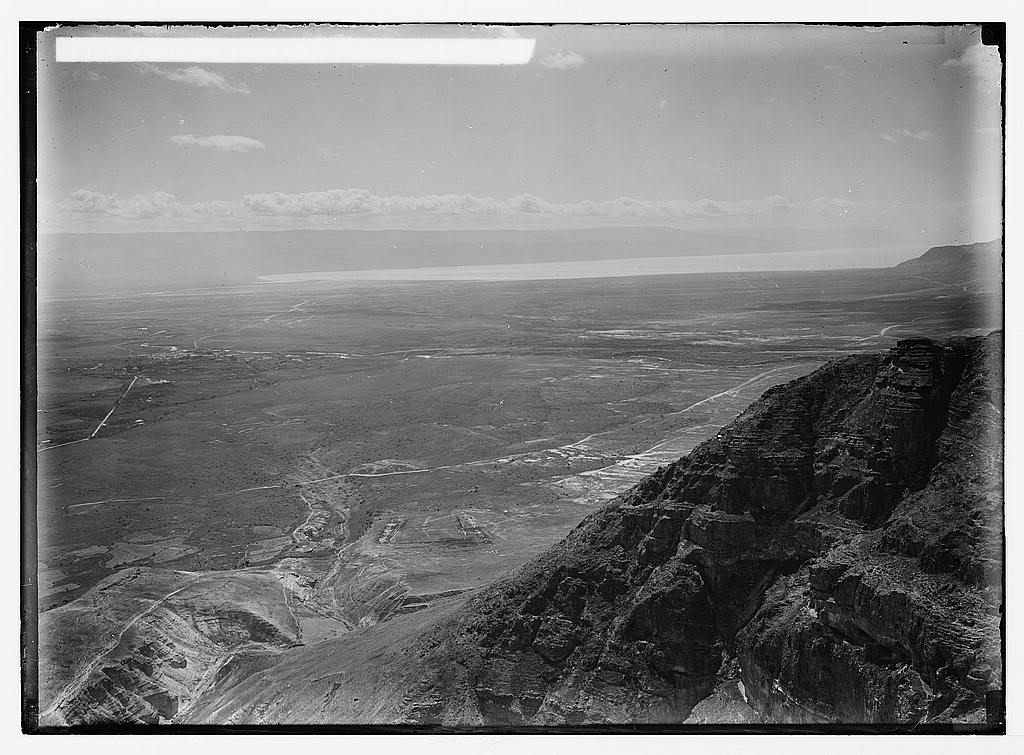
The Jordan Valley between 1900-1920. Library of Congress.
Because of the famine caused by the locust plague of 1915, the abusive. mismanagement of Jamál Páshá, and the overall restrictions due to the ongoing world conflict, ‘Abdu'l-Bahá's responsibility to care for the Bahá'ís and as many people as He can round Him, puts new pressures on Him: He needs to grow wheat and corn in the Jordan and Yarmuk Valleys on the shores of the Sea of Galilee and He needs to send those tons of wheat by camel to Haifa and 'Akká. Accordingly, it should be kept in mind that during the years 1915-1918, ‘Abdu'l-Bahá will spend days and weeks in and around Tiberias. He does not stay put in Haifa and 'Akká. The wheat to be sent to 'Akká is entrusted to a woman by the name of Sakínih Sulṭán in whom ‘Abdu'l-Bahá has great confidence. He regularly writes Tablets to Sakínih Sulṭán, about His comings and goings, often dictated by how hot the weather is and where He will be staying, but also very detailed lists of how to distribute the wheat in 'Akká, how. many families and individuals get how many kilograms of wheat, also discussing the shortage of camels to transport the wheat and when more will be available. ‘Abdu'l-Bahá also brings up the cost of transportation which at times doubles and even triples from one year to the next. At times He confides that he yearns to visit the Shrine of Bahá'u'lláh and that this work has kept Him so busy He has been prevented from visiting Bahjí.
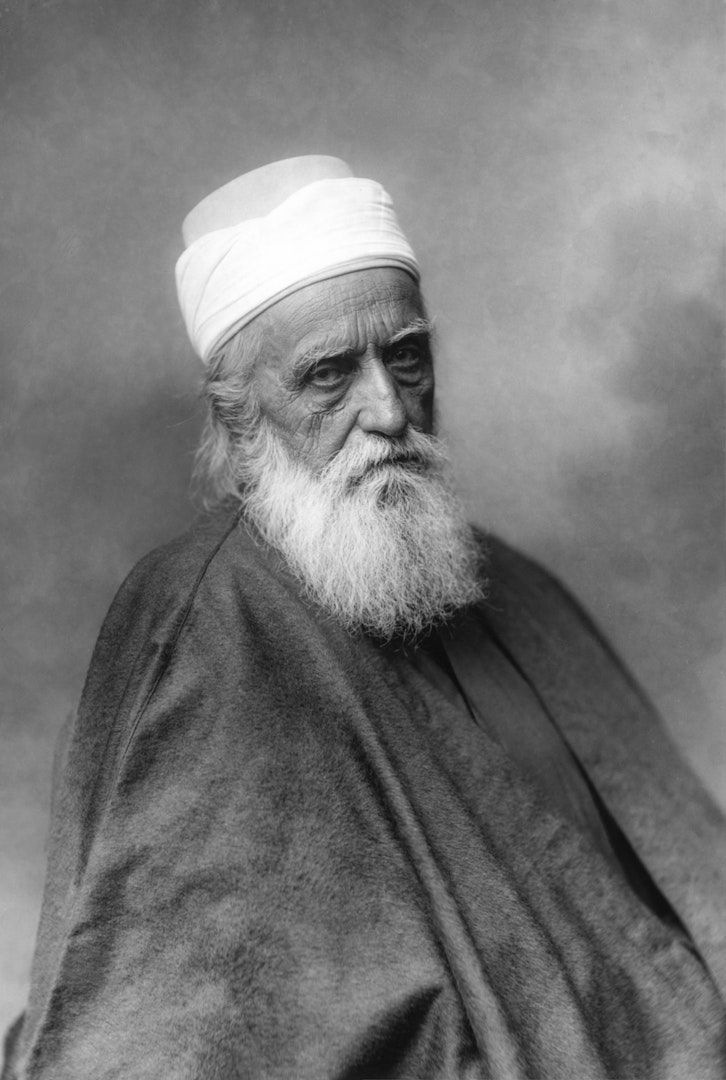
Portrait of ‘Abdu’l-Bahá taken in Paris, France, October 1911. Source: Bahá'í Media Bank, © 2023 Bahá'í International community.
Shoghi Effendi poignantly describes ‘Abdu'l-Bahá state of mind at this stage of the World War:
Agony filled His soul at the spectacle of human slaughter precipitated through humanity’s failure to respond to the summons He had issued, or to heed the warnings He had given. Surely sorrow upon sorrow was added to the burden of trials and vicissitudes which He, since His boyhood, had borne so heroically for the sake, and in the service, of His Father’s Cause.
Shoghi Effendi, God Passes By
Again, in the Spring of 1917, ‘Abdu'l-Bahá is moved to distinguish the American believers, for a second and last time, a mark of His special favor, by investing them with a divine mission that will continue to unfold for decades, through the Guardianship of Shoghi Effendi and the guidance of the Universal House of Justice. From February 2 to March 8, ‘Abdu'l-Bahá reveals the last six Tablets of the Divine Plan. These Tablets continue to reinforce and expand upon ‘Abdu'l-Bahá's guidance to the five regions of the United States and Canada. In the fourteenth and last Tablet, addressed to the United States and Canada, ‘Abdu'l-Bahá lays out the various "collective centers" of the world, which are conducive to association and unity between people, such as nationalism, shared interests, political parties, but He contrasts those, qualifying them as "child's play" with the "Collective Center of the Kingdom." In the twelfth Tablet, addressed to the Western States of the United States, ‘Abdu'l-Bahá describes in great detail the spiritual attributes of teachers of the Faith. In all, 120 territories and islands are mentioned to which the Faith must be carried, when at the time He revealed these Tablets, there were Bahá'ís present in only 35 territories in the world.
These six Tablets, along with the remaining two Tablets from 1916 that were not able to be sent by mail are kept in a vault under the Shrine of the Báb until the end of the First World War, when they will be sent to the United States and unveiled.
Below are the last six Tablets of the Divine Plan revealed in the Spring of 1917, with links to the Tablets on Bahá'í Reference Library, date and place of revelation and recipients. These six Tablets also contain the well-known teaching prayers, and you will find those links in the prayers' opening words.

Ninth Tablet of the Divine Plan
Friday morning, 2 February 1917
In the room of Isma‘il ‘Áqá at the House of ‘Abdu'l-Bahá in Haifa (this room is known as the summer-house)
Addressed to the Bahá'ís of the nine Northeastern States of the United States: Maine, Massachusetts, New Hampshire, Rhode Island, Connecticut, Vermont, Pennsylvania, New Jersey and New York.
This Tablet contains a teaching prayer, addressed to the Bahá'ís of the Northeastern States of the United States which begins with the words, "O Thou kind Lord! Praise be unto Thee that Thou hast shown us the highway"

Tenth Tablet of the Divine Plan
Saturday morning, 3 February 1917
In the room of Isma‘il ‘Áqá at the House of ‘Abdu'l-Bahá in Haifa (this room is known as the summer-house)
Addressed to the Bahá'ís of the sixteen Southern States of the United States: Delaware, Maryland, Virginia, West Virginia, North Carolina, South Carolina, Georgia, Florida, Alabama, Mississippi, Tennessee, Kentucky, Louisiana, Arkansas, Oklahoma and Texas.
This Tablet contains a teaching prayer, addressed to the Bahá'ís of the Southern States of the United States which begins with the words, "O my God! O my God! Thou seest me in my lowliness and weakness"

Eleventh Tablet of the Divine Plan
Thursday late morning/early afternoon, 8 February 1917
Revealed in the room of Bahá'u'lláh at the house of ‘Abbúd
Addressed to the Bahá'ís of the twelve Central States of the United States: Michigan, Wisconsin, Illinois, Indiana, Ohio, Minnesota, Iowa, Missouri, North Dakota, South Dakota, Nebraska and Kansas.
This Tablet contains a teaching prayer, addressed to the Bahá'ís of the Central States of the United States which begins with the words, "O Lord, my God! Praise and thanksgiving be unto Thee"

Twelfth Tablet of the Divine Plan
Thursday evening, 15 February 1917
Revealed in the room of Bahá'u'lláh at the house of ‘Abbúd
Addressed to the Bahá'ís of the eleven Western States of the United States: New Mexico, Colorado, Arizona, Nevada, California, Wyoming, Utah, Montana, Idaho, Oregon and Washington.
This Tablet contains a teaching prayer, addressed to the Bahá'ís of the Western States of the United States which begins with the words, "O God! O God! This is a broken-winged bird"

Thirteenth Tablet of the Divine Plan
Wednesday morning, 21 February 1917
Revealed in the room of Bahá'u'lláh at the house of ‘Abbúd
Addressed to the Bahá'ís of Canada and Greenland: Canada—Newfoundland, Prince Edward Island, Nova Scotia, New Brunswick, Quebec, Saskatchewan, Manitoba, Ontario, Alberta, British Columbia, Yukon, Mackenzie, Keewatin, Ungava, Franklin Islands—and Greenland
This Tablet contains a teaching prayer, addressed to the Bahá'ís of Canada and Greenland which begins with the words, "O God, my God! Thou beholdest this weak one"

Fourteenth Tablet of the Divine Plan
Thursday afternoon, 8 March 1917
In the room of Isma‘il ‘Áqá at the House of ‘Abdu'l-Bahá in Haifa (this room is known as the summer-house)
Addressed to the Bahá'ís of the States of the United States and Canada.
This Tablet contains a teaching prayer, addressed to the Bahá'ís of the United States and Canada which begins with the words, "O God! O God! Thou seest my weakness, lowliness and humility"
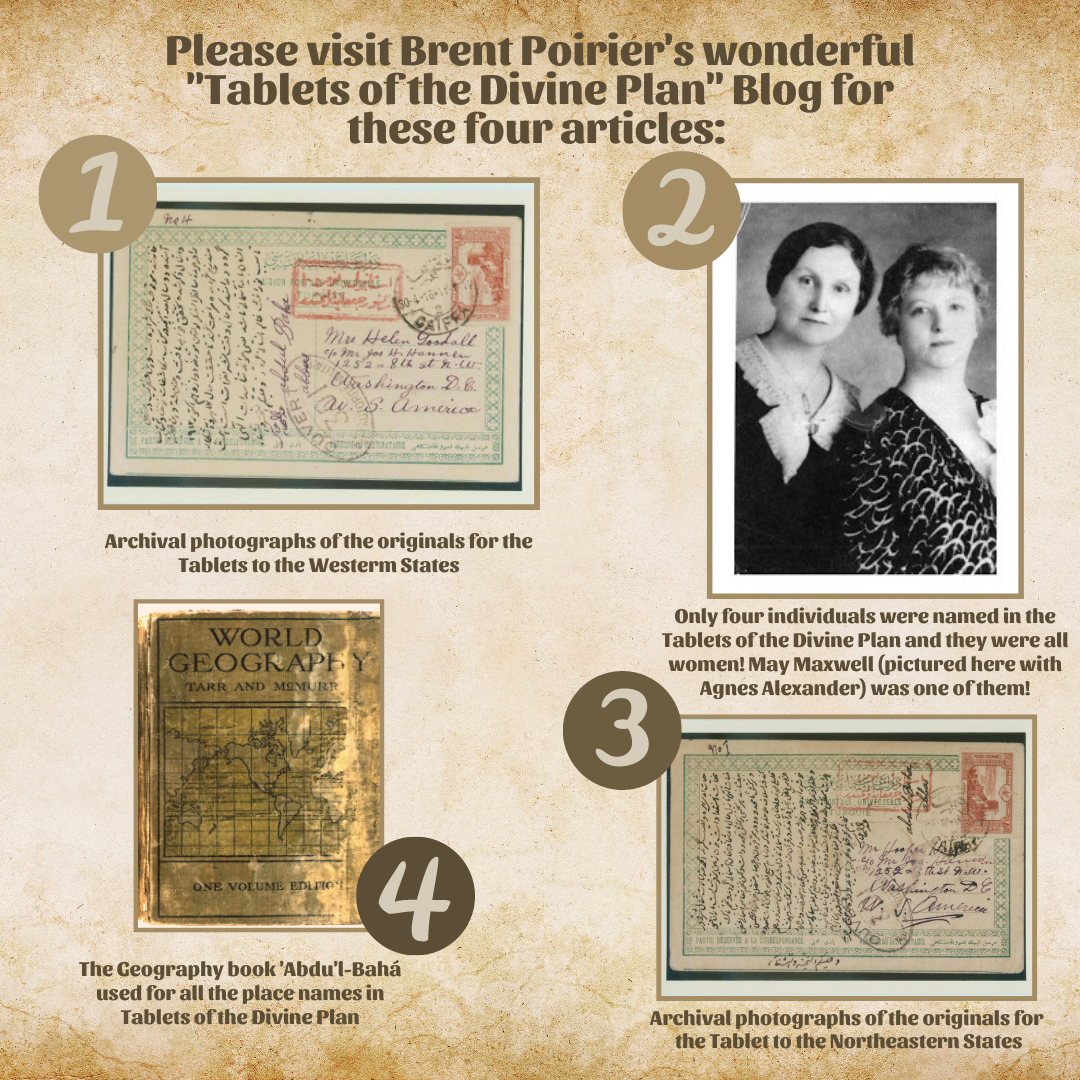
If you would like to learn more about the Tablets of the Divine Plan, Brent Poirier has created a specialized website dedicated to the Tablets of the Divine Plan where you can find information and many archival photographs of the originals for the first Tablet to the Western States and the first Tablet to the Northeastern States, an article written on the four individuals that were named in the Tablets of the Divine Plan (all women), and a article on the geography book ‘Abdu'l-Bahá used for the 120 place names in the Tablets of the Divine Plan.
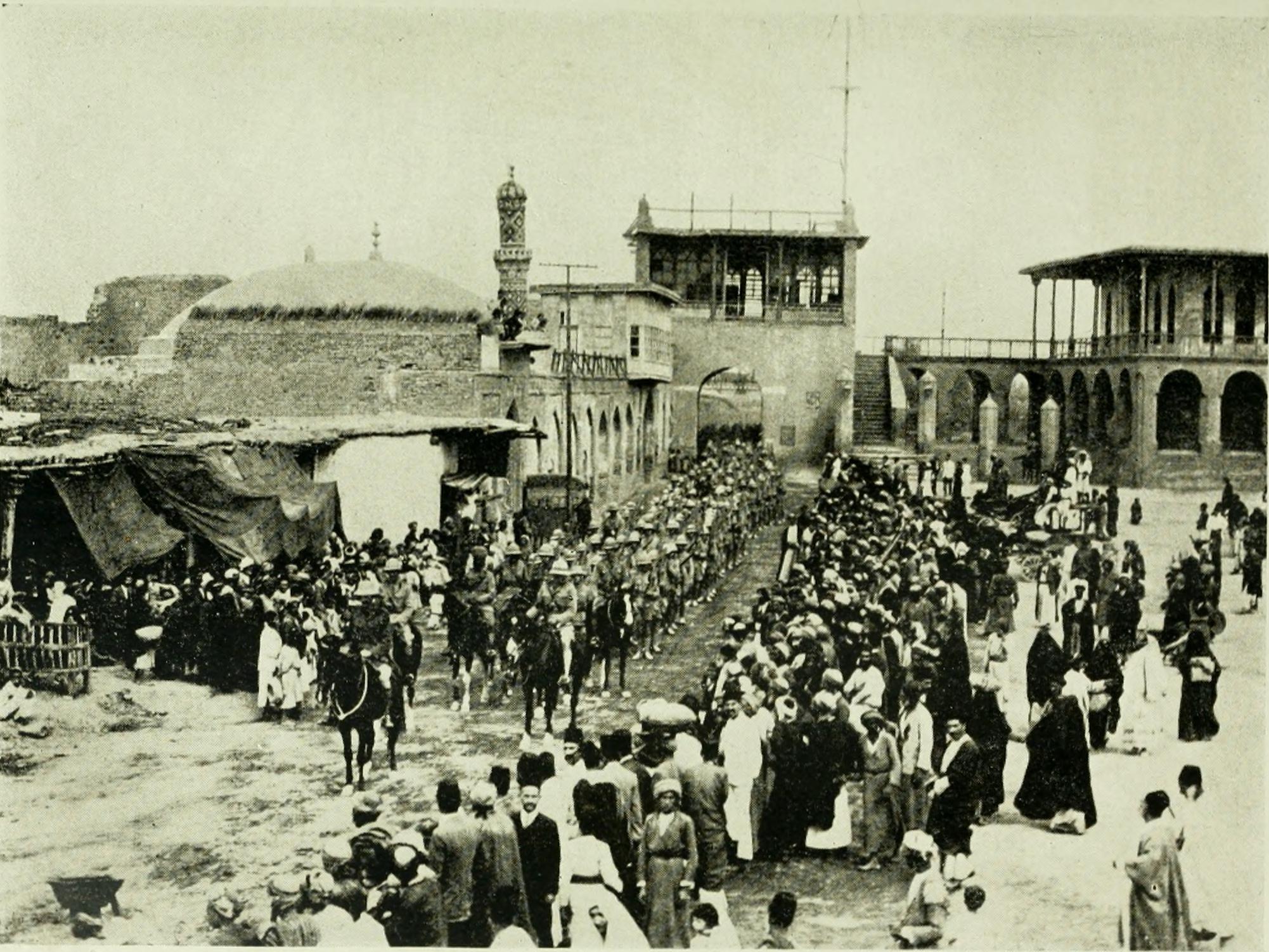
Sir Frederick Stanley Maude leads the Indian Army into Baghdad in March 1917. Wikimedia Commons.
The British-Indian Mesopotamian campaign pushes forward, and, in spite of setbacks, the British capture Baghdád on March 11, 1917. One month later, on April 6, 1917, after more than two years of President Woodrow Wilson trying to avoid this outcome, the United States declares war on Germany. The Holy Land is almost completely isolated from the rest of the world.
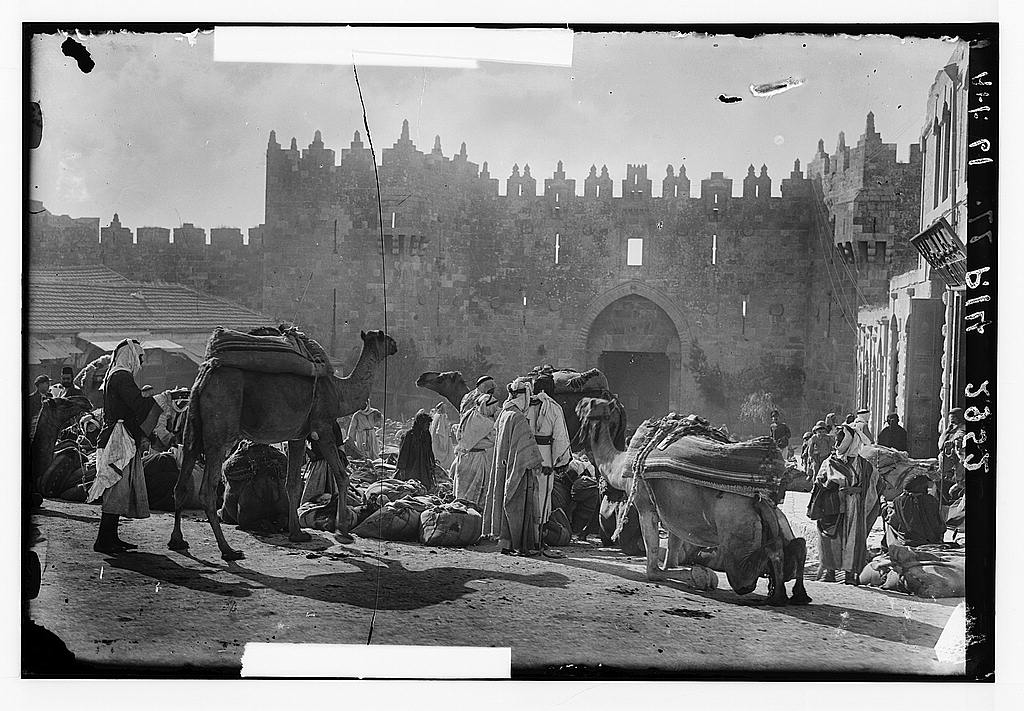
Unloading wheat-laden camels near Damascus Gate in Jerusalem, circa 1920-1933. Library of Congress.
In July 1917, the First World War was at its peak of combat and destruction. Added to this general misery, rainfall has been below average and crop yields are much lower than previous years. Famine is imminent and the population is distressed. This is when 'Abdu'l-Bahá sets off for ‘Adasiyyíh. When He arrives, He informs the farmers that He has arrived to secure wheat to avert starvation among the Bahá'ís in Haifa and ‘Akká, and all those He can help. The ‘Adassiyyíh farmers offer 'Abdu'l-Bahá what they have in their barns and storage, but ‘Abdu’l-Bahá, over the course of a 15-day stay, also buys all the wheat He can find from neighboring farming villages and arranges the logistics for the shipping.
On 'Abdu'l-Bahá’s instructions, a caravan of 200 camels is mobilized and ships the wheat to Haifa over a two-week period. bought all the wheat that could be found. On ‘Abdu’l-Baha’s instructions, the consignments of wheat were sent over a period of 15 days. In total, 400 camel sacks of wheat were delivered following 'Abdu'l-Bahá’s visit. The wheat was delivered at the Firdaws gardens and in places in both ‘Akká and Haifa and hundreds of poor, needy and destitute people in the region benefitted from this bounty.
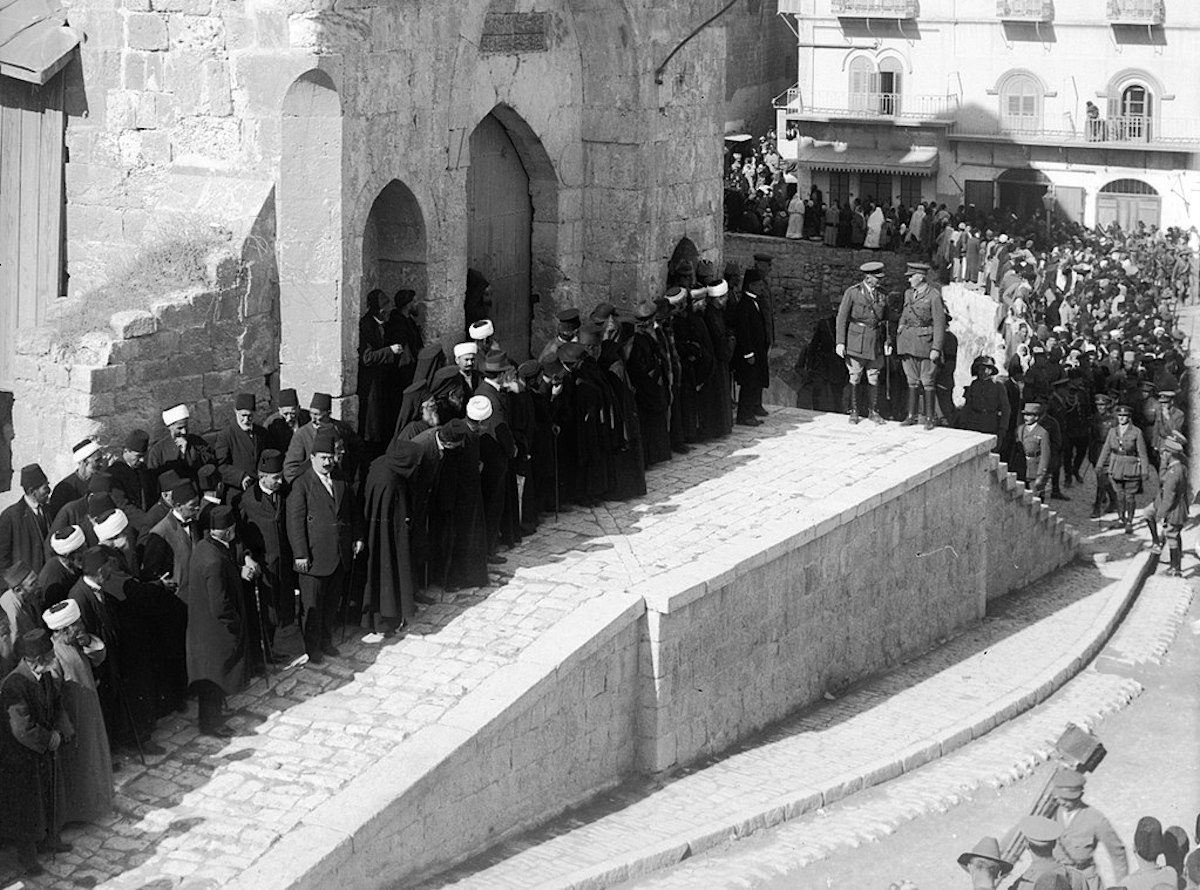
Entry of General Allenby in Jerusalem, on December 11, 1917. Wikimedia Commons.
The British have advanced through the Middle East and are now deep in the Ottoman Empire. After a period of stalemate in Southern Palestine from April to October 1917, General Allenby captures Beersheba on October 30, 1918 in the Southern Palestine Offensive, and the pursuit begins. After two victories at the Mughar Ridge in November and at the Battle of Jerusalem on 30 December 1917, but the Western Front (in Europe) is experiencing serious losses and the British Empire is forced to send reinforcements from the Egyptian Expeditionary Force. This unplanned shortage of men and munitions puts the British advance on Palestine on hold until Summer 1918.

As the British Palestine Campaign drags on, and the Holy Land is completely cut off from the rest of the world, ‘Abdu'l-Bahá's friends, Bahá'ís and others, start to feel an increasing sense of panic. Rumors begin circulating as early as the beginning of 1917, that ‘Abdu'l-Bahá is in great danger, but no one knows what the situation is in Haifa because communications have been cut. By late 1917, the war in Palestine is at its peak. The graphic above attempts to sketch the communications between ‘Abdu'l-Bahá's friends and the British Government that are outlined one by one, below:
24 December 1917
Wellesley Tudor Pole, who first met ‘Abdu'l-Bahá in Egypt in 1910 and whom ‘Abdu'l-Bahá came to visit twice in Bristol during His Journeys to the West is currently a captain working for British Military Intelligence in Egypt. Worried for ‘Abdu'l-Bahá, he writes a letter to Sir Mark Sykes, a Member of Parliament in London, about the danger to ‘Abdu’l-Bahá’s life. His letter does not arrive until two months later in February 6, 1918.

December 1917 - January 1917
Rumors have now been circulating around London for almost a year, since early 1917, that 'Abdu'l-Bahá is in great danger. Around the end of December 1917, Lady Blomfield receives a call that says ‘‘Abdu’l-Bahá in serious danger. Take immediate action." According to Lady Blomfield, as the call comes from an “authoritative source, she believes there is not a moment to lose, and that she must do everything in her power to do what she can for 'Abdu'l-Bahá. She immediately goes to Lord Lamington, a British politician and colonial administrator, who, in turn, writes to Arthur Balfour, the Foreign Secretary.

24 January 1918
Arthur Balfour, writes a memo to the Department of Foreign Affairs on January 24, 1918. In his cover letter to the memo, Balfour says "I have been asked to intervene in the interest of Abdul Behar . . . I enclose a Memo about him and I should be grateful could the action be taken." Balfour's memo itself reads:
Abdul Behar sometimes known as Abbas Effendi, leader of the Bahai movement, having for its object the true peace of the world is believed to be at his home in Haifa, or else on M. Carmel. In the past he has undergone much persecution at the hands of fanatics and anxiety is felt by his many friends in Gt. Britain and America lest he, his wife and family should not receive adequate protection during the British advance owing to his identity not being known to our authorities. His friends therefore would be grateful if instructions would be cabled to secure on his behalf the good offices of those in command.
This very same day, January 24, 1918, the Department of Foreign Affairs receives another letter, this time from Frederick Whyte, a Member of Parliament for Scotland and the son of Jane Whyte, the first Scottish Bahá'í, in whose home ‘Abdu'l-Bahá spent four days in January 1913, five years prior. Frederick Whyte's letter to the Department of Foreign Affairs reads:
I have just received a letter from my Mother saying that she understands that Abdul Baha is living in some risk of his life at Haifa. My Mother’s correspondent, as you will see from the enclosed letter, seems to think that we could do something to save him. I presume I need not waste your time in giving an account of Abdul Baha himself, whose personality and work must be well known to you

30 January 1918
These letters create sufficient noise for a telegram to be sent from the Department of Foreign Affairs to Sir Reginald Wingate of British High Commissioner in Egypt, asking that General Allenby be made aware of the situation:
My attention has been called to the presence at Haifa of Abdul Baha, head of the Bahais. Please warn the General Office Commanding that he and his family should be treated with special consideration in the event of our occupying Haifa.

6 February 1918
Sir Mark Sykes finally receives Wellesley Tudor Pole's letter.

Spring 1918
In the Spring of 1918, Wellesley Tudor Pole begins to feel "acute anxiety," in his words, for ‘Abdu'l-Bahá's safety in Haifa, and the safety of His family and local Bahá'ís. Because he is in Military Intelligence, he is aware that the British are preparing a move towards Haifa, but have been delayed for a few months due to a shortage of men and ammunitions. The news reaching him concerning ‘Abdu'l-Bahá becomes so alarming that Tudor Pole tries to bring the matter to the Intelligence Service, and to his own commander, Sir Arthur Money, the Chief Administrator of Occupied Enemy Territory. He manages to meet someone with political connections and gets an urgent message through to to the British Foreign Office. As a result of the many actions of ‘Abdu'l-Bahá's friends, General Allenby passed on orders to the General Commanding Officer in command of the Haifa operations that as soon as Haifa was entered, a British guard immediately be placed at ‘Abdu'l-Bahá's disposal. Word was sent through enemy lines that retribution would follow any attempt on ‘Abdu'l-Bahá.
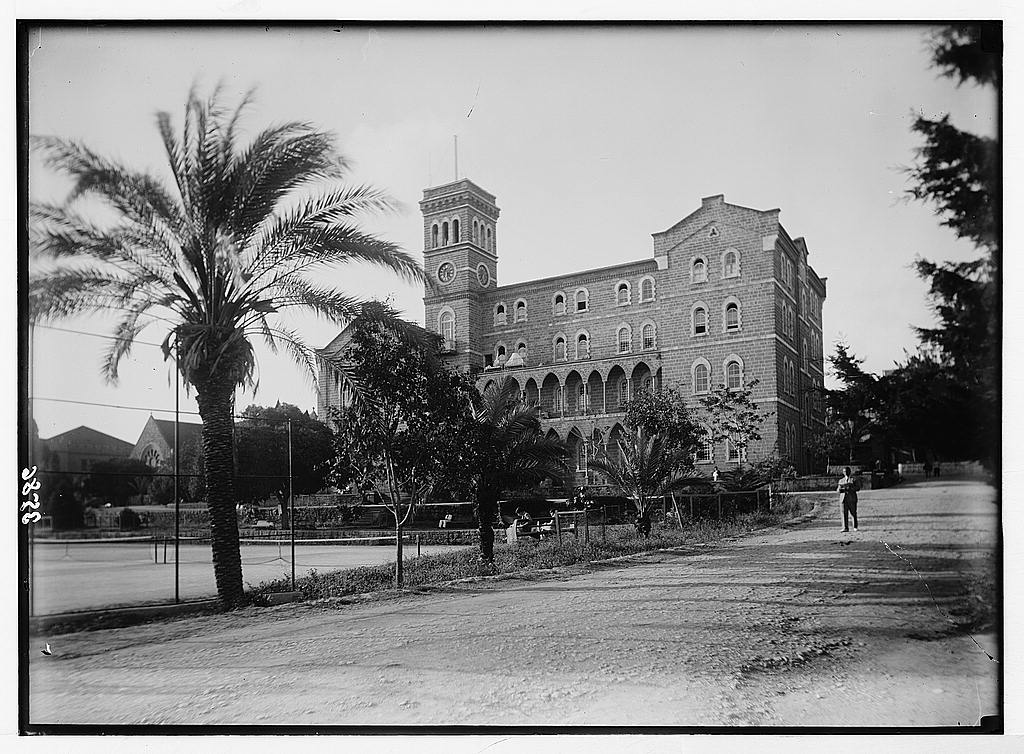
Syrian Protestant College, later known as American University. Beirut, (A.U.B.). College Hall, where Shoghi Effendi studied for six years, circa 1920-1933. Library of Congress.
Shoghi Effendi started attending Syrian Protestant College in 1912, and graduates on June 13, 1917 with a Bachelor's of Arts. He completes one year of graduate studies, then returns to Haifa to serve ‘Abdu'l-Bahá full time in the summer of 1918, now a young man. Life for ‘Abdu'l-Bahá, Shoghi Effendi, the Holy Family and the Bahá'ís goes on, and they are unaware of how worried their British friends have been over their safety, and their contacts with the British Foreign Office. By the time Shoghi Effendi arrives in Haifa, there is only one month left before the liberation of the city from Ottoman yoke, once and for all.
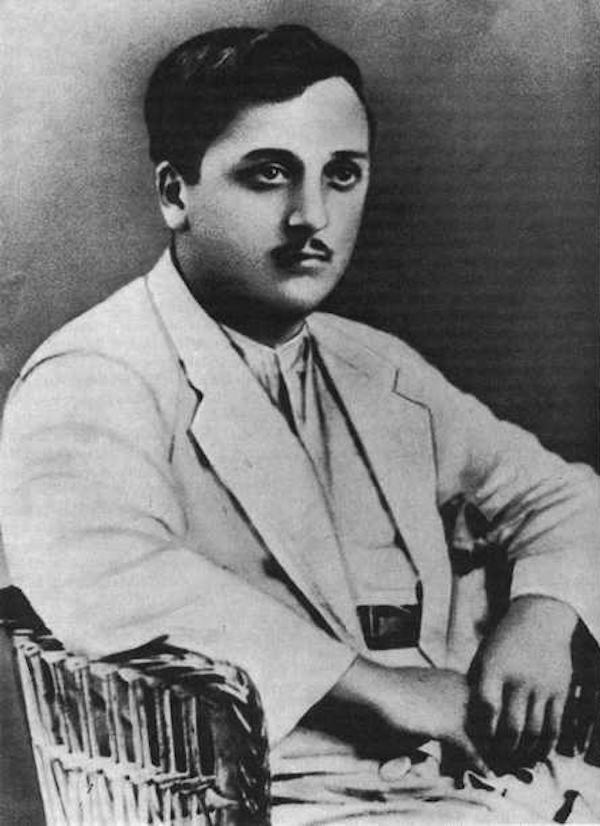
Shoghi Effendi circa 1918-1920. Source.
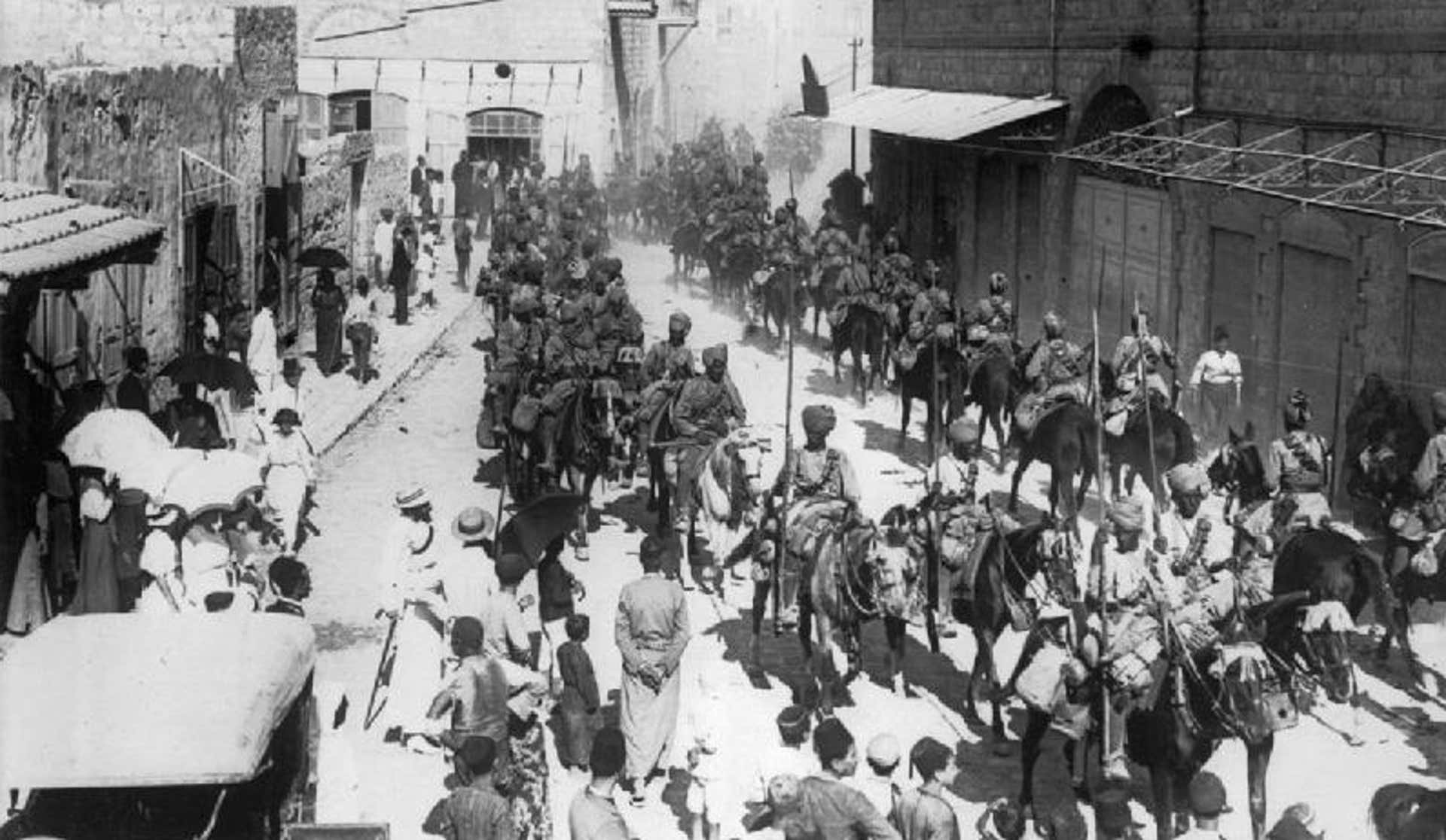
Indian Mysore Lancers march through Haifa after it was captured, September 23, 1918. Wikimedia Commons.
The British army's advance stalls from March 1918 until Field Marshall Allenby's force resumes the offensive at the Battle of Megiddo in September 1918. The British capture Nazareth, Samakh, Afulah, Beisan, Jenin and Tiberias. Tasked with capturing Haifa on September 23, 1918, the Jodhpur and Mysore lancers (both from India) do so brilliantly, led by Field Marshall Allenby, capturing 1,350 German and Ottoman prisoners, with only eight casualties for their two regiments.
Haifa is now free, for the first time in four years. The same day 'Akká and Haifa, a telegram is dispatched to London , saying: "I have now received a telegram from the Chief Political Officer in Palestine, reporting that on the occupation of Haifa, Abdul Behar was found to be still in the town in good health, and that he is being well cared for." The same day Haifa and 'Akká are captured, September 23, General Allenby sends an assistant to check on ‘Abdu'l-Bahá's health. The next day, September 24, General Allenby calls on the Master himself. Three days later, on September 27, Colonel Ronald Storrs, who had met the Master once before in 1909 in 'Akká, paid ‘Abdu'l-Bahá a visit and reported His good health by cable to the friends in Egypt. He was very impressed with ‘Abdu'l-Bahá's conversation during this visit, equating the Master's speech to that of "an ancient prophet, far above the perplexities and pettiness of Palestine politics, and elevating all problems into first principles." ‘Abdu'l-Bahá, in His characteristic courtesy and generosity, gifted Colonel Storrs with beautiful samples of His own and that of Mishkín-Qalam.
Over the course of the next two months following the Battle of Haifa (which the Indian Army celebrates each year), the Allies drive the Germans back with a continual series of attacks, and one by one the Central Powers quit, first Bulgaria, then the Ottoman Empire at the end of October and the Austro-Hungarian empire a few days later. Kaiser Wilhelm abdicates on November 9 and Germany signs the armistice that formally ends the war two days later on November 11, 1918. 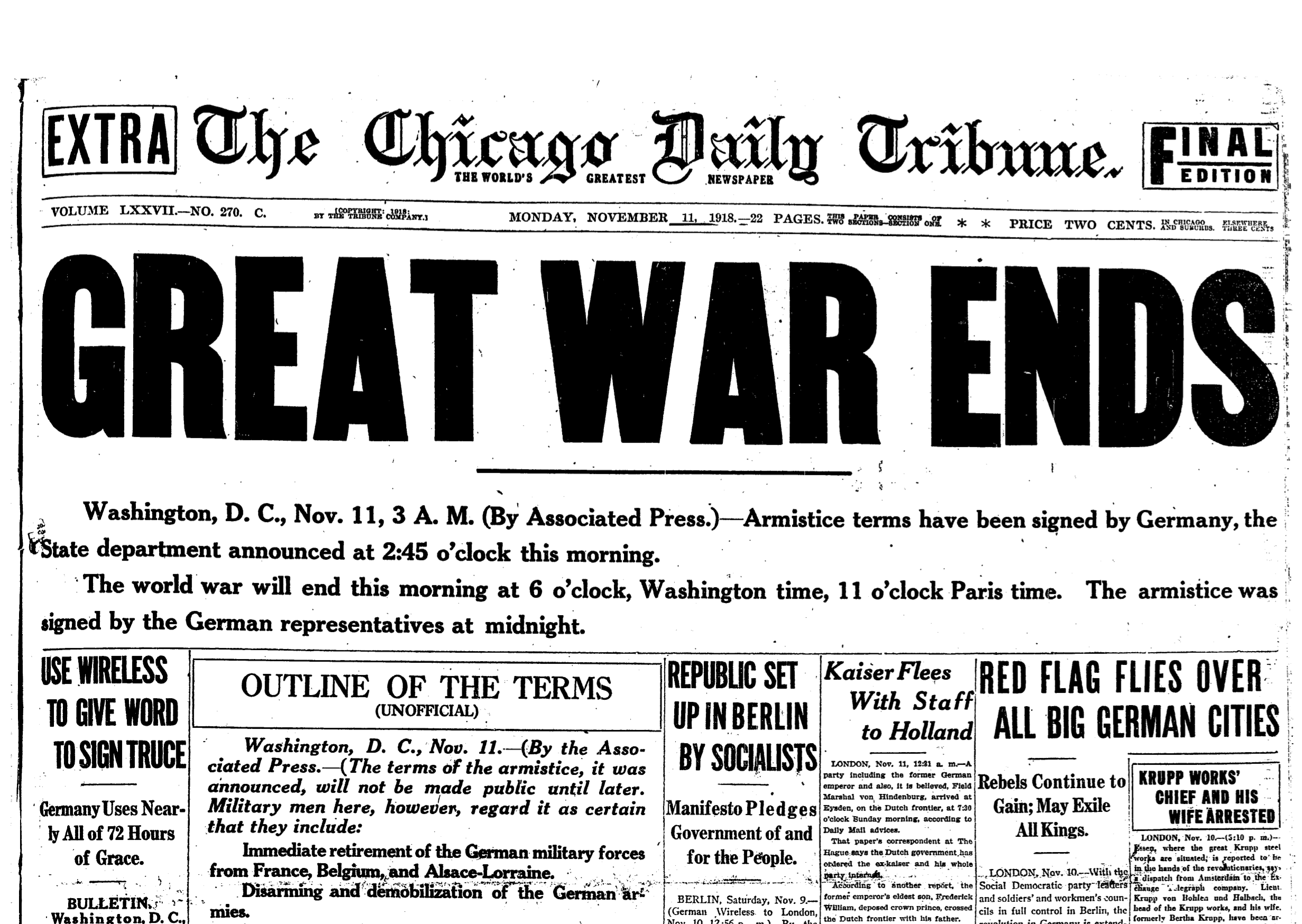
The Chicago Daily Tribune headline for November 11, 1918: GREAT WAR ENDS. Source: The Chicago Tribune.

A train of camels in 1917 on the Plain of Sharon carrying supplies to the front in Palestine. Supply trains during war could be actual trains or camels, as in this photograph. New York State Archives.
Soon after Haifa is captured, the British face a major problem. The army has advanced so rapidly to Haifa that they have outrun their supply train, the convoy (could have either been a railroad convoy or a camel train), and the British army is soon going to find itself lacking food supplies. A British officer, no doubt hearing from the population that ‘Abdu'l-Bahá has been shipping wheat and corn to Haifa for most of the war, arrives to consult with the Master.
I have corn, says ‘Abdu'l-Bahá.
Surprised, the officer asks:
But for the army?
And ‘Abdu’l-Bahá responds:
I have corn for the British army.
During the war ‘Abdu’l-Bahá had spent months in and around Tiberias and 'Adasiyyíh, not only arranging logistics for shipping wheat to the coast, but He had also taught the Bahá’í farmers how to grow corn, and His advice had yielded abundant harvests, which, when they arrived in Haifa, 'Akká, the Firdaws Gardens or other locations, had been stored in covered pits.
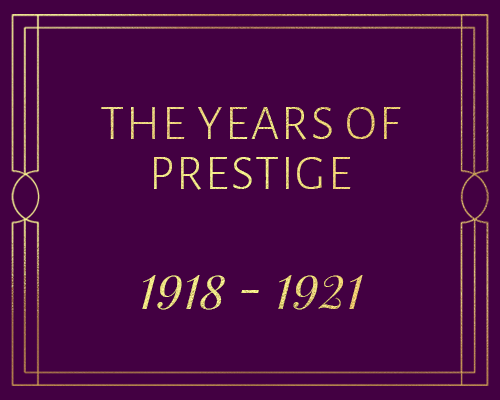
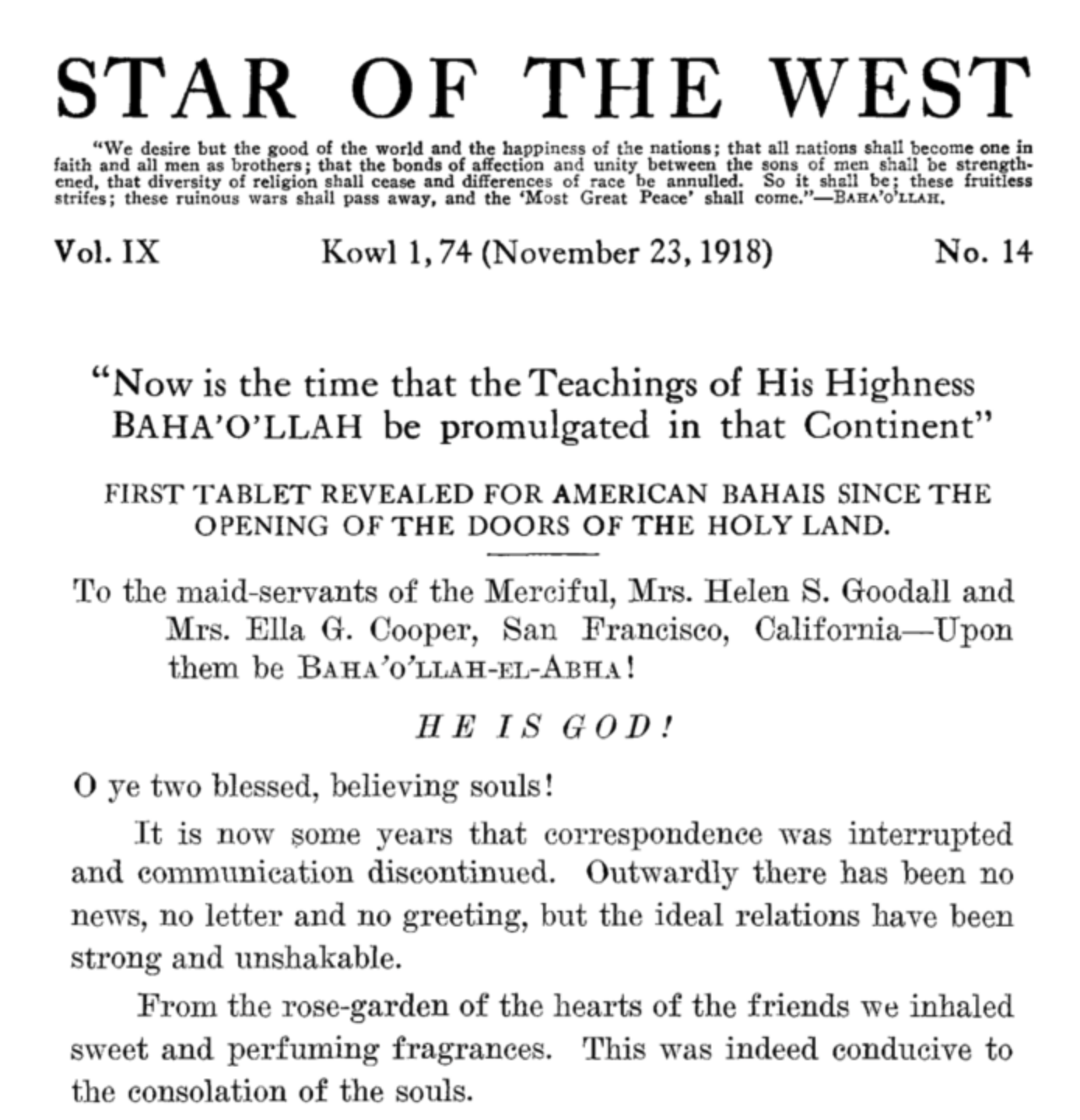
Front page of Star of the West Volume IX, number 14, with the first Tablet revealed for the American Bahá'ís since the liberation of Haifa.
When peace finally returns to Haifa after four years, there is, almost instantly, an effervescence of activity. With peace comes a re-establishment of communications. Letters and cables pour in and volumes of responses are sent out, news, magazines and periodicals finally start to arrive again.
After four years of isolation, ‘Abdul-Baha, is once again surrounded by visitors who respect Him, understanding His ideas and respect His convictions. British officers of all ranks, Major Generals, Brigadier Generals, Colonels, Majors, Lieutenants, Captains and non-commissioned officers call on the Master and listen to His words of wisdom. ‘Abdu'l-Bahá receives the military Governors of 'Akká and Haifa.
Shoghi Effendi himself, lays out the years of prestige that await the Bahá'í Faith after the end of World War I in a letter published in Star of the West Volume IX, number 17:
The past four years have been years of untold calamity, of unprecedented oppression, of indescribable misery, of severe famine and distress, of unparalleled bloodshed and strife, but now that the dove of peace has returned to its nest and abode a golden opportunity has arisen for the promulgation of the word of God. This will be now promoted and the Message delivered in this liberated region without the least amount of restriction. This is indeed the Era of Service.
Letter from Shoghi Effendi dated 19 November 1918
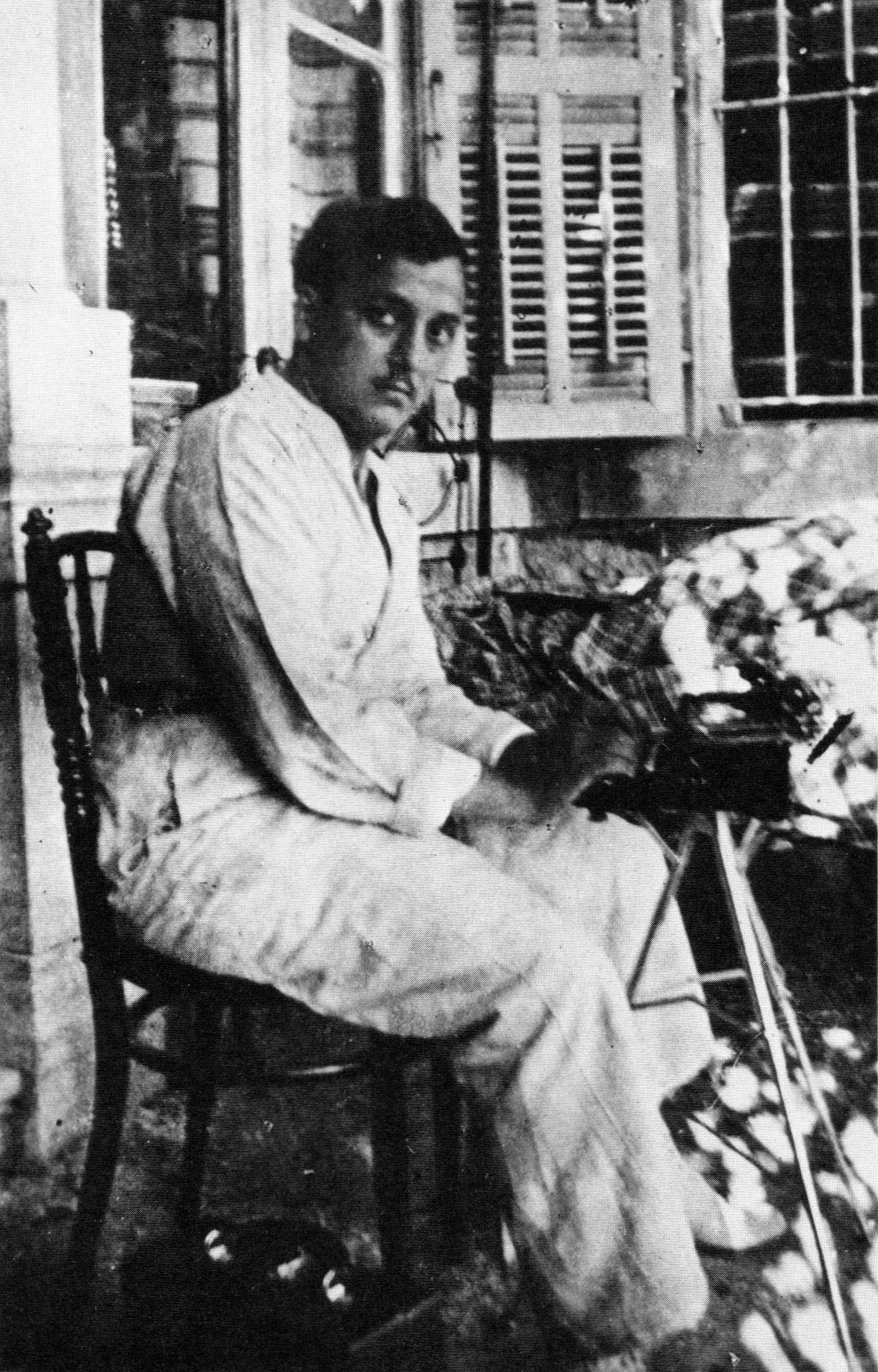
Shoghi Effendi as secretary of ‘Abdu'l-Bahá, seated at his typewriter in Haifa in 1919. Source.
From the time he arrives in the Holy Land, and more so after Ahmad Sohrab leaves a few months later, Shoghi Effendi becomes ‘Abdu'l-Bahá's main secretary, translator and assistant. By January 1919, ‘Abdu'l-Bahá reveals more than 100 Tablets to the friends in America. Shoghi Effendi, starting from his arrival in the Summer of 1918, begins a period of 18 months in his beloved Grandfather's service, and this is to be the sweetest period of his entire life. He spends a tremendous amount of time in the presence of the Center of the Covenant and learns from ‘Abdu'l-Bahá precious lessons in encouraging believers and managing the affairs of the Faith. Shoghi Effendi also frequently accompanies ‘Abdu'l-Bahá to an increasing number of official functions at which the Master is invited. This includes visits to the British Military Governor of Haifa and interviews with the Commander-in-Chief, General Allenby.
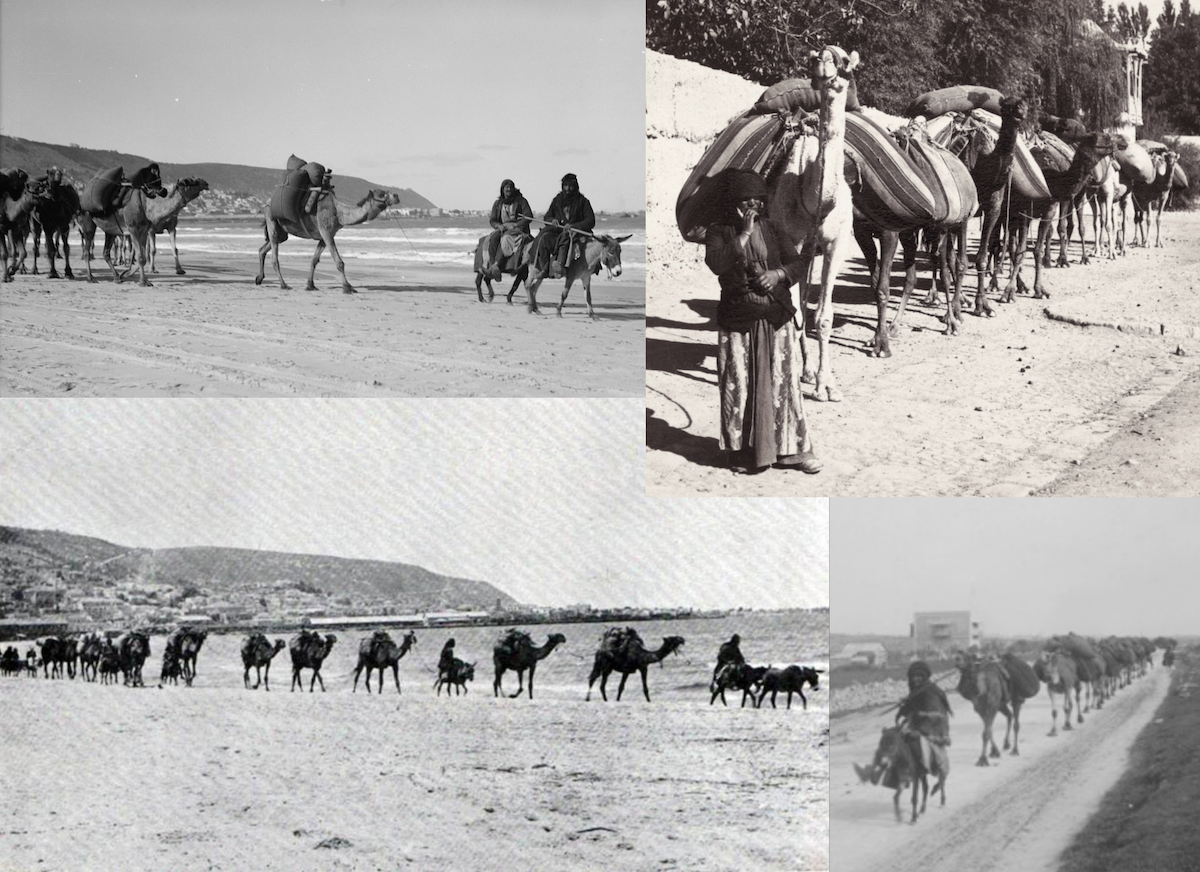
A few images of camel caravans in Palestine in the beginning of the 20th century. The top and bottom photographs on the extreme left side of the photo-montage both show caravans travelling to 'Akká from Haifa (which is seen in the background). Detailed caption provided by Andrew Blake.
No date is given for this story, but it is interesting on two levels: it shows ‘Abdu'l-Bahá giving Shoghi Effendi a major responsibility at a young age, sending him to deal alone with the British army, and it shows Shoghi Effendi, at twenty-one, displaying the leadership and confidence he will lifelong exhibit as Guardian of the Bahá'í Faith. At some point during Shoghi Effendi's stay in the Holy Land after the end of the war, one of ‘Abdu'l-Bahá's camel caravans carrying sacks of wheat arrives at the gates of Haifa. The British soldiers guarding the gate of the city refuse to allow the caravan to enter. Bahram Furudi and two Bahá'ís, each carrying a sack of wheat, enter Haifa and go straight to ‘Abdu'l-Bahá, and explain the situation to the Master. ‘Abdu'l-Bahá listens very carefully to what Furudi has to say, then sends him with Shoghi Effendi to resolve the situation. When they arrive at the gate, the commander of the guards, a British Major is relaxing in an armchair, smoking a pipe. In his eloquent and fluent English, Shoghi Effendi explains to the Major that the caravan of wheat is for ‘Abdu'l-Bahá. According to Furudi, the Major, amazed by such eloquent English from one so young, immediately orders the soldiers to open the gates for the caravan to enter Haifa.
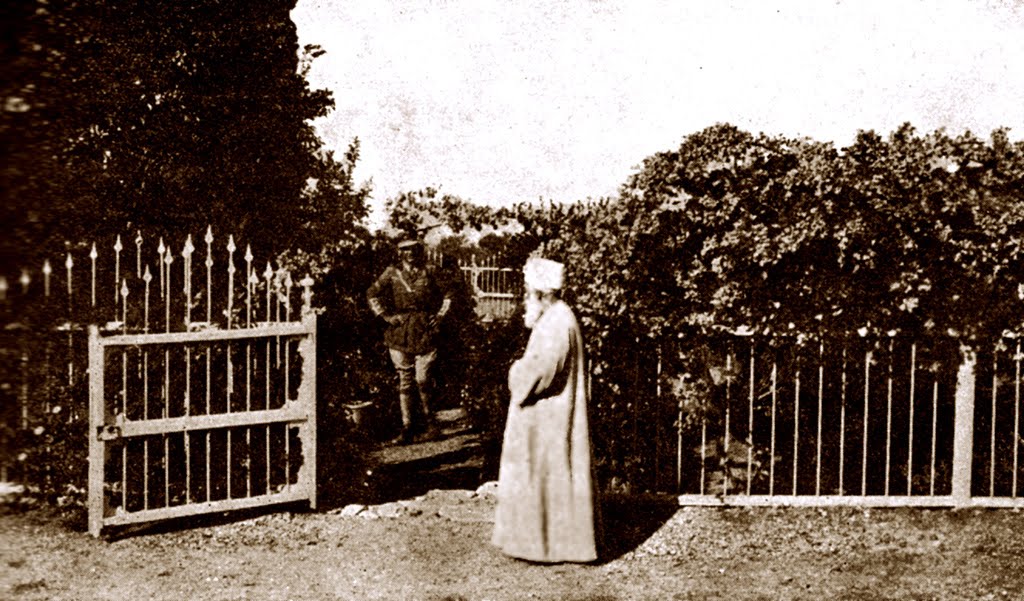
In this picture, undated, but soon after the end of the First World War, we can see ‘Abdu'l-Bahá and a British officer. The photograph shows ‘Abdu'l-Bahá standing at the northern entrance gate to the garden in front of the Shrine of Baha'u'llah at Bahji. The Master stands facing the Shrine of Bahá'u'lláh. Detailed caption provided by Andrew Blake. Source: 'Abdu'l-Bahá in the Holy Land.
As soon as He can after Haifa is captured by the British and Indian lancers, ‘Abdu'l-Bahá spends a month and a half in 'Akká, visiting Bahjí almost daily, which He has sorely missed. This photograph, which was published in Star of the West Volume IX, number 17, the very first photograph of ‘Abdu'l-Bahá after World War I, was taken by Lieut. H. E. Eckersley in the Garden of Bahjí at the end of October, 1918.
During this time, ‘Abdu'l-Bahá hosts eight members of the Australian Flying Corps, whose airfield is located at the bottom of Mount Carmel, for a day at Bahjí, where they visit the Shrine of Bahá’u’lláh, and hear a lecture from ‘Abdu'l-Bahá on the history of the Faith and its principles.
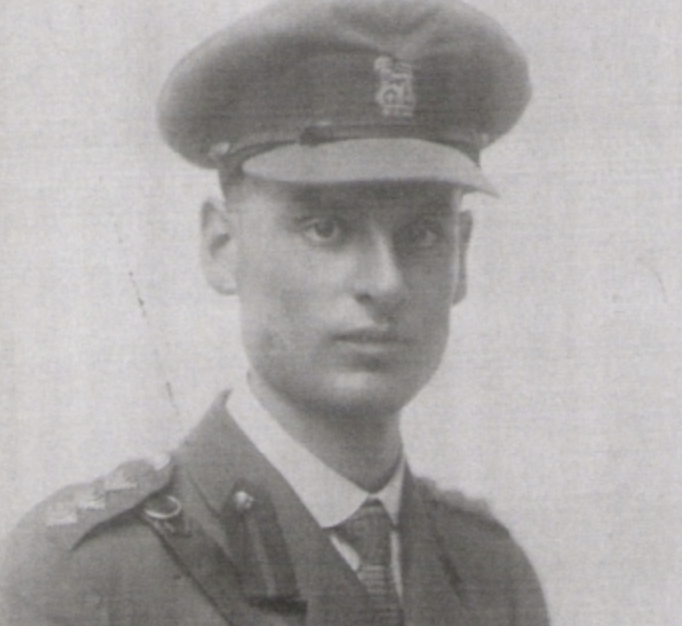
Wellesley Tudor Pole in officer's uniform, 1917. Source.
‘Abdu'l-Bahá's longtime and devoted friend, Wellesley Tudor Pole arrives to visit the Master as soon as he can. When he arrives, ‘Abdu'l-Bahá warmly welcomes him and takes him to visit the Shrine of Bahá'u'lláh. When they return to 'Akká, close to 40 people are waiting for them. ‘Abdu'l-Bahá serves everyone tea and tells them about visiting Tudor Pole in Bristol. While he is 'Akká, Tudor Pole brings ‘Abdu'l-Bahá to the attention of the Military Governor, who had not been informed of His stature. Tudor Pole also brings stacks of mail for ‘Abdu'l-Bahá and a new camel-hair coat, which he makes ‘Abdu'l-Bahá promise to keep and not give away.
When he leaves Haifa, Wellesley Tudor Pole writes an introductory article about the Bahá'í Faith in Palestine News, and Shoghi Effendi will report on 14 February 1919, in a letter to Star of the West that the article has generated a great deal of interest on the part of active service men in London, but also in Haifa.
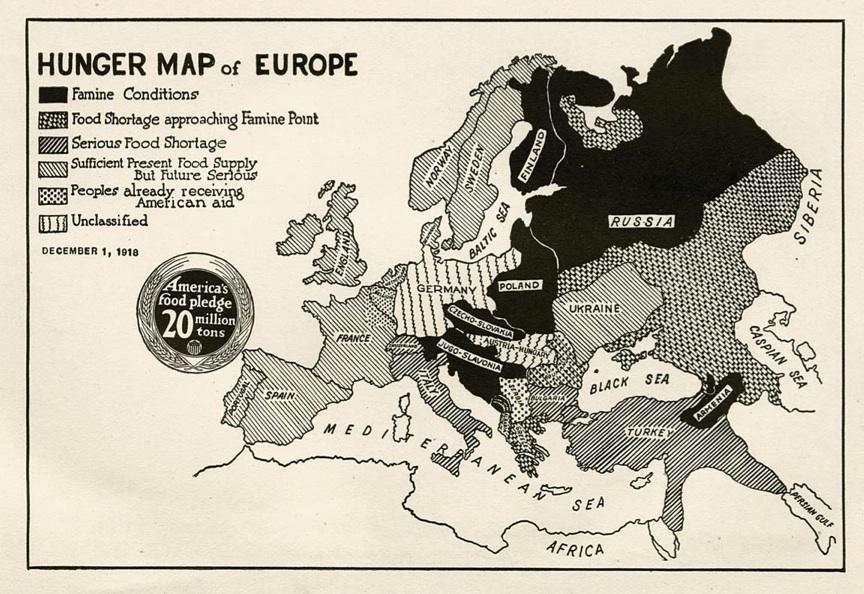
In 1918, the U.S. Food Administration made a book for the kids in the U.S. that was supposed to tell them about this situation and motivate them to help. The book was titled “Food Saving and Sharing: Telling How the Older Children of America May Help Save From Famine Their Comrades In Allied Lands Across the Sea” this map was in the book, dated December 1, 1918, three weeks after the end of the war and showing all the places in "Famine conditions" in black. The Holy Land is categorized as "Serious Food Shortage." Source: Vivid Maps.
‘Abdu'l-Bahá consistently supported charities, wherever He was, gave generous donations to them, and always encouraged Bahá'ís to do the same. In the aftermath of the ravages caused by the famine and the war, the military administration started the Haifa Relief Fund to alleviate the suffering of the Haifa population. ‘Abdu'l-Bahá first contributes fifty Egyptian pounds (equivalent to about $3,550 today, as 50 Egyptian pounds equated 48,75 British pounds in 1919, adjusted for inflation), a substantial sum of money in 1918. After the first contribution, ‘Abdu'l-Bahá's name is placed first on the list of contributors. ‘Abdu'l-Bahá then has another fifty Egyptian pounds contributed by Shoghi Effendi in person, and received a letter from the Military Governor, G.A. Stanton, dated February 10, 1919 which speaks for itself:
Your Eminence:
I have today received from your grandson [Shoghi Effendi] the sum of £50 as a further donation from yourself to the Haifa Relief Fund. Please accept on behalf of the committee of management, my very sincerest and most grateful thanks for this further proof of your well-known generosity and care of the poor, who will forever bless you for your liberality on their behalf. Please accept the sincerest assurance of my deepest regards and respect.
(Signed) G. A. Stanton, Colonel, Military Governor.
The palpable respect in the letter from the Military Governor is a sign of the maturity of the Faith, and the twenty-seven years of service and selflessness on the part of ‘Abdu'l-Bahá in the local community that are being recognized and honored at the very highest levels. The letter is also indicative of a newly-established British administration deep ties of friendship and appreciation with the Center of the Covenant of the Faith of Bahá'u'lláh, and, in a sense, the embryonic Bahá'í World Centre in Haifa.
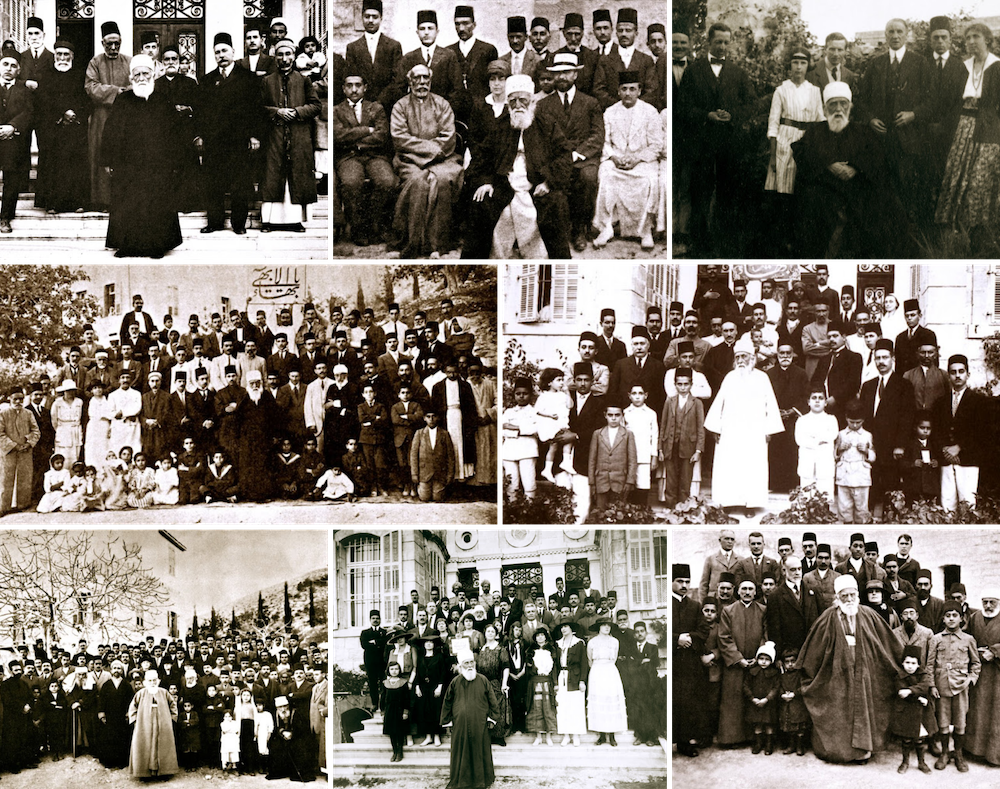
Collage of photographs of ‘Abdu'l-Bahá with pilgrims from 1919, 1920 and 1921 from 'Abdu'l-Bahá in the Holy Land.
By April 1919, mail is no longer the only thing to arrive in the Holy Land: Pilgrims return, finally. Hippolyte and Laura Dreyfus-Barney arrive from France, Muhammad-Taqí Isfáhání and others come from Cairo; and Husayn Ikbal and his family comes from Adana, Turkey. The streams of pilgrims from now on will be uninterrupted until the Ascension of ‘Abdu'l-Bahá. These pilgrims, flowing in from the world over, are a growing sign of the prestige of the Faith and a large section is devoted to them at the end of this part.

Delegates and participants at the 1919 Bahá'í Congress. Source.
Once the war ends, ‘Abdu'l-Bahá removes the nine remaining Tablets of the Divine Plan that have not been received in America from the vault where they have been safeguarded during the war and sends them to America with Mírzá Ahmad Sohrab. The first five Tablets had been mailed on postcards in 1916 before mail was interrupted. ‘Abdu'l-Bahá cables the American Bahá'ís ahead of the Eleventh Mashriqu'l-Adhkár (House of Worship) Convention and Bahá'í Congress of April 1919 with a prayer in the form of a telegram:
Let this be the Convention of the Covenant
The Convention is organized over four days broken up in nine sessions, during which the Tablets of the Divine Plan are progressively unveiled by a group of young girls, which include nine-year-old Mary Maxwell, Shoghi Effendi's future wife, and Hand of the Cause 'Amatu'l-Bahá Ruhiyyíh Khánum.
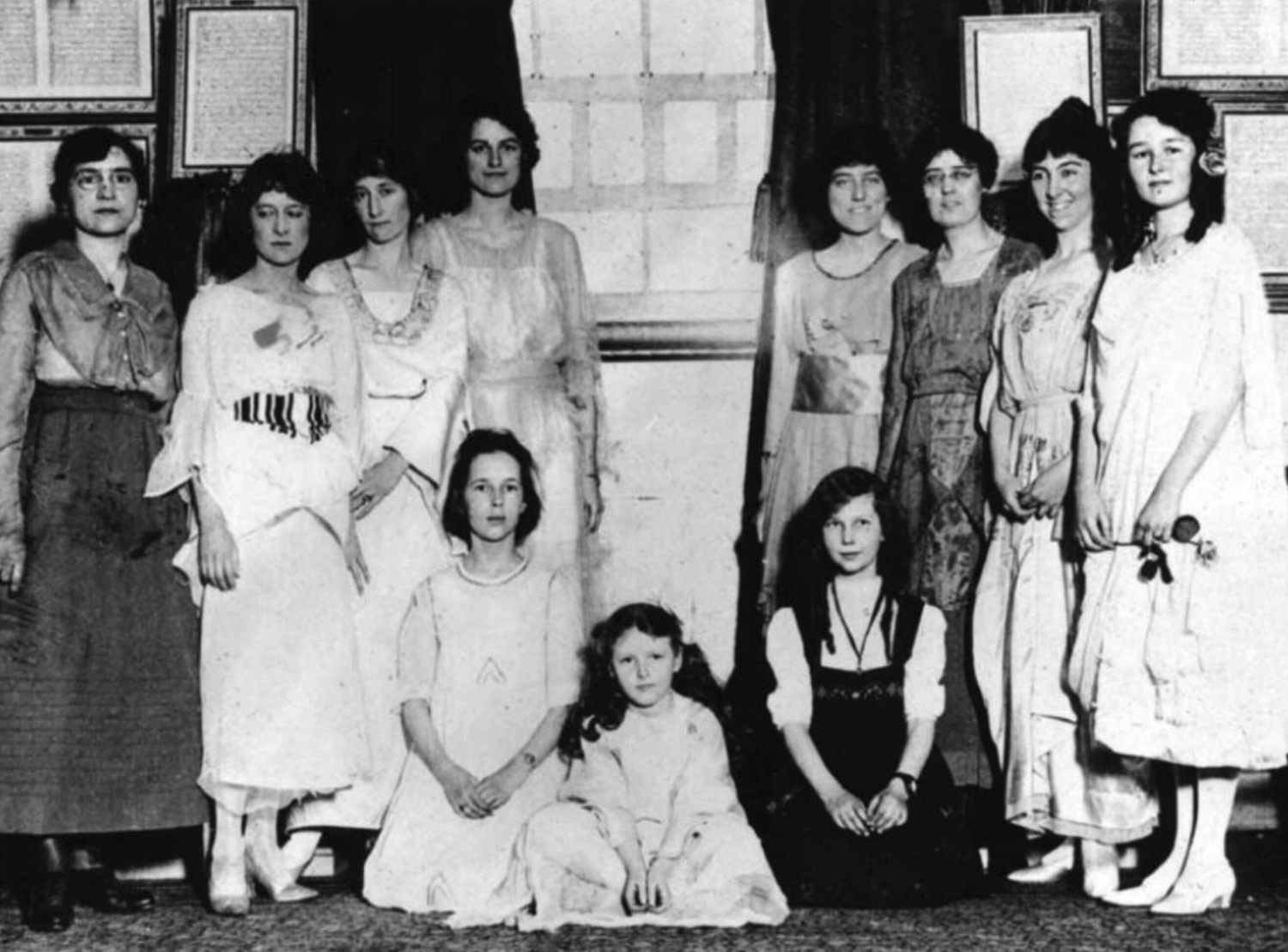
Some of the young girls and women who unveiled the Tablets of the Divine Plan. The Tablets are seen behind them. Mary Maxwell (seated, center) and Elizabeth Coristine (seated, right), unveiled the Tablets addressed to Canada. Seated to the left of Mary is Bahiyyih Randall. Source: Baha'i Historical Facts.

Saturday 26 April 1919
FIRST SESSION
Before each unveiling of the Tablets in Sessions one through eight, Mírzá Ahmad Sohrab is listed as "Unveiling the Divine Plan."
The 1916 and 1917 Tablets to the Bahá'ís of the Northeastern States (Maine, Massachusetts, New Hampshire, Rhode Island, Connecticut, Vermont, Pennsylvania, New Jersey, and New York) are unveiled by Margaret P. Randall and Bertha Holley.
Sunday 27 April 1919
SECOND SESSION
The 1916 and 1917 Tablets to the Bahá'ís of the Southern States (Delaware, Maryland, Virginia, West Virginia, North Carolina, South Carolina, Georgia, Florida, Alabama, Mississippi, Tennessee, Kentucky, Louisiana, Arkansas, Oklahoma, and Texas) are unveiled by Helen and Mary Hotchkiss.
Sunday 27 April 1919
THIRD SESSION
The 1916 and 1917 Tablets to the Bahá'ís of the Central States (Michigan, Wisconsin, Illinois, Indiana, Ohio, Minnesota, Iowa, Missouri, North Dakota, South Dakota, Nebraska, and Kansas) are unveiled by Rouhieh Jones and Jeffrey Parsons.
Monday 28 April 1919
FOURTH SESSION
The 1916 and 1917 Tablets to the Bahá'ís of the Western States (New Mexico, Colorado, Arizona, Nevada, California, Wyoming, Utah, Montana, Idaho, Oregon, and Washington) are unveiled by Lenore Powell and Juanita Storch.
Monday 28 April 1919
FIFTH SESSION
The 1916 and 1917 Tablets to the Bahá'ís of Canada are unveiled by Mary Maxwell and Elizabeth Coristine.
Tuesday 29 April 1919
SIXTH SESSION
The sixth (1916) and fourteenth (1917) Tablets to the Bahá'ís of the United States and Canada, which both speak of spreading the Bahá'í Teachings to Alaska, Central and South America and the West Indies are unveiled by Dorothy Hoar and Elfrida Martin.
Tuesday 29 April 1919
SEVENTH SESSION
The seventh (1916) and eighth (1916) Tablets to the Bahá'ís of the United States and Canada, which both speak of spreading the Bahá'í Teachings to Australia, New Zealand, Tasmania, the Pacific Islands, Asia, Africa, and Europe, are unveiled by Zeenat Khánum and Jessie Revell.
Wednesday 30 April 1919
EIGHTH SESSION
The last Tablet is a "Teaching Tablet of General Instruction, revealed by ‘Abdu'l-Bahá" and it is unveiled by Amy K. Wilkinson and Pearl Porter.
The ninth session marks the closing of the Eleventh Bahá'í Congress. Very few people apart from ‘Abdu'l-Bahá and Shoghi Effendi would perceive at the time what had just happened with the unveiling of the Tablets of the Divine Plan. Its true unfoldment would only take place with Shoghi Effendi as Guardian at the helm, guiding the Bahá'ís with his visionary letters, to a real understanding of the spiritual conquest meant by ‘Abdu'l-Bahá in the closing years of His Ministry. A small handful of dedicated believers did perceive the vision of ‘Abdu'l-Bahá, however, and between the years 1918 and 1922 set out to accomplish some of the goals He specifically lists. These truly peerless individuals are Margaret Duncan Green, Martha Root, Hyde and Clara Dunn, Fanny Knobloch, Leonora Holsapple and Orcella Rexford. They are honored in the last map of this part entitled "Worldwide Missions in the time of ‘Abdu'l-Bahá."
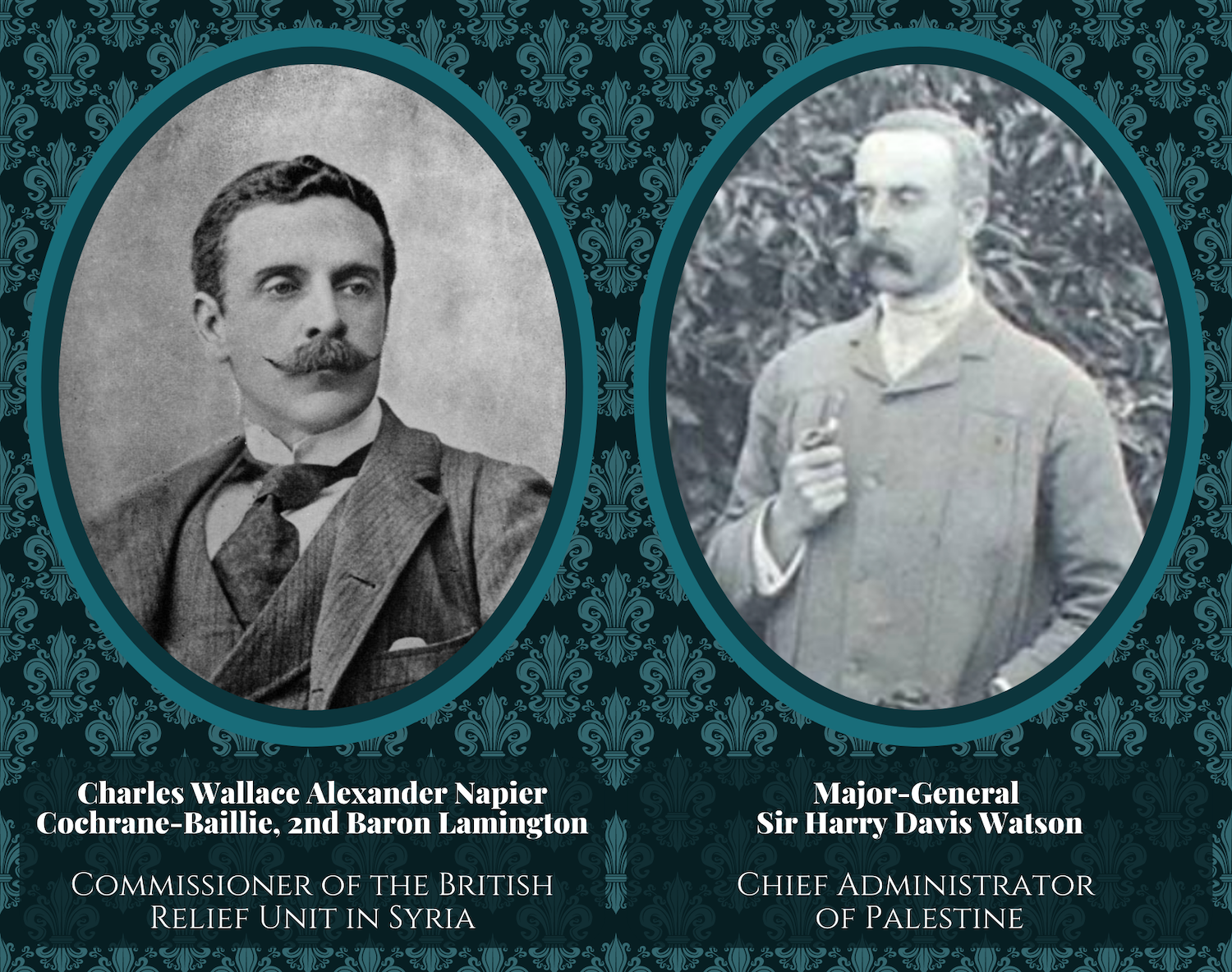
Charles Wallace Alexander Napier Cochrane-Baillie, 2nd Baron Lamington and Major-General Sir Harry Davis Watson, who both met ‘Abdu'l-Bahá in 1919. Images from Wikimedia Commons and Great War Forum.
Lord Lamington
Charles Wallace Alexander Napier Cochrane-Baillie, 2nd Baron Lamington, more commonly referred to as Lord Lamington has known ‘Abdu'l-Bahá for a number of years, and met with Him in London, and most recently intervened on behalf of the Bahá'ís for the Master's safety in the Holy Land. In the early part of 1919, Lord Lamington is in the Holy Land himself, Commissioner of the British Relief Unity in Syria, and headquartered in Damascus. Lord Lamington calls on 'Abdu'l-Bahá on July 15, 1919, to receive in his own words "the blessings" of the Master. when ‘Abdu'l-Bahá offers to return the visit, Lord Lamington says: "No, my duty and my privilege is to call on you personally and I do not wish you to take the trouble to come over to me." Lord Lamington calls again on ‘Abdu'l-Bahá on July 17, 1919 to bid the Master farewell, as he is returning to Britain and on this occasion 'Abdu'l-Bahá gives him His ring.
Major-General Watson
Major-General Sir Harry Davis Watson, the Chief Administrator of the Southern Section of Palestine, meet 'Abdu'l-Bahá in Haifa, on August 23, 1919 at the home of Colonel Stanton, the Military Governor.
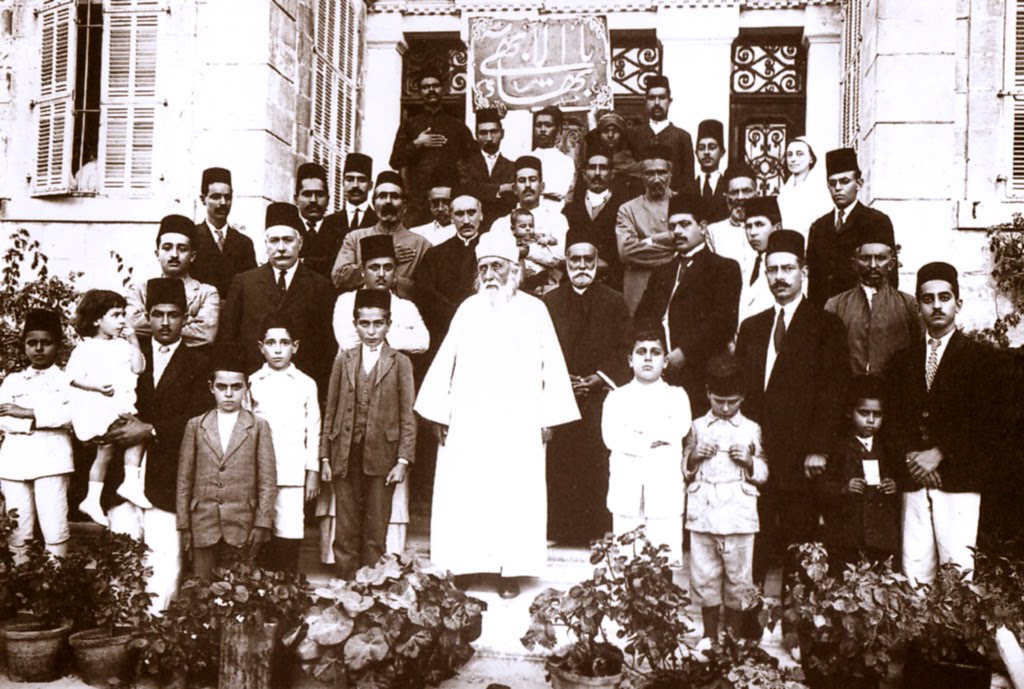
'Abdu'l-Bahá with resident Bahá'ís and pilgrims in Haifa, the day after the Twin Holy Day celebration mentioned below, on October 2, 1919. Shoghi Effendi is to ‘Abdu'l-Bahá's left. Source: 'Abdu'l-Baha in the Holy Land.
On October 1, 1919, ‘Abdu’l-Bahá celebrates the twin Holy Days: the birthdays of Bahá’u’lláh and the Báb according to the lunar calendar, where they follow each other over two days. This Holy Day is significant because it is the first Holy Day to be celebrated with Western pilgrims since the war, and a definitive sign that things have returned to normal in the Holy Land. between sixty and seventy Bahá'ís attend, almost completely filling the train from Haifa to 'Akká. The number of believers impress a group of British officers who have come to meet ‘Abdu'l-Bahá, about whom they have heard so much.
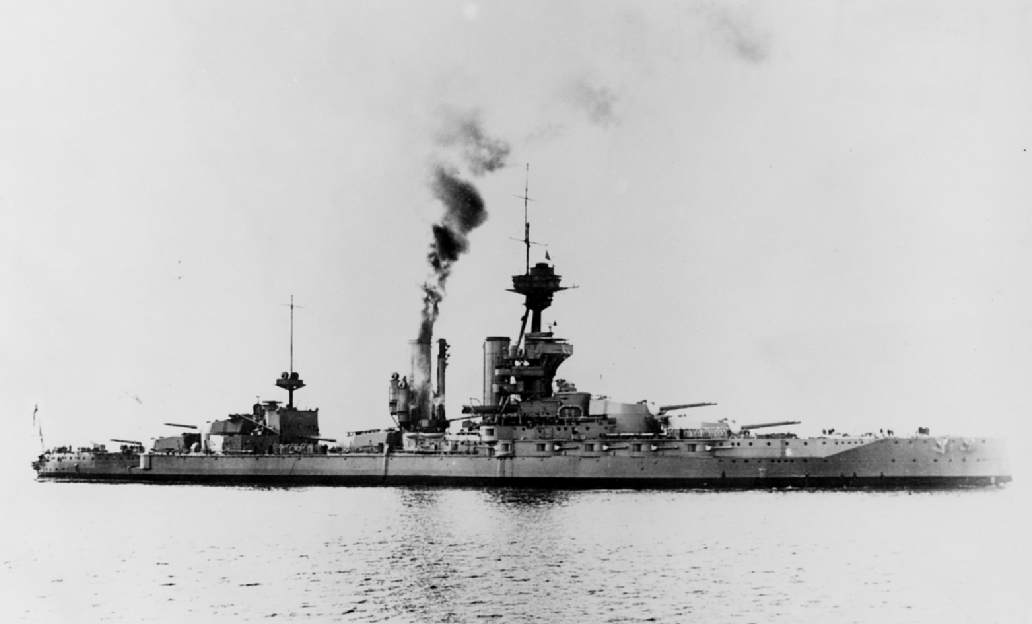
The HMS Marlborough battleship in 1912. Wikimedia Commons.
Three days after the Twin Holy Days, a warship anchors off the coast of Haifa: the British battleship HMS Marlborough, a dreadnought battleship of the Royal Navy. Dreadnoughts were the predominant type of battleships during World War I, and their deadly design was characterized by two main, revolutionary features: an "all-big-gun" armament scheme, with an unprecedented number of heavy-calibre guns, and steam turbine propulsion.
On October 4, 1919, the Commander of the HMS Marlborough invites ‘Abdu'l-Bahá, the world-famous "Apostle of Peace" onboard his warship and "give him the honour of visiting the battleship in person." This encounter is a perfect example of two things: ‘Abdu'l-Bahá having attained a level of prestige where it seems everyone, even those newly-arrived to Haifa know who He is, and, more importantly, how ‘Abdu'l-Bahá interacts with faultless courtesy and kindness with people whose worldviews He does not share. ‘Abdu'l-Bahá boards the battleship with a number of attendants and is greeted by a group of British officials, and a number of local notables, among which the Bishop and the Muftí of 'Akká. The Captain of the Marlborough orders naval officers to give ‘Abdu'l-Bahá a guided tour of the ship, showing the Master the ship's interior, the turret and the 13.5 inch guns. After the tour, ‘Abdu'l-Bahá joins the welcome party for tea, where ‘Abdu'l-Bahá jokes about the difference in weather between London and the "clear blue sky of the Holy Land." ‘Abdu'l-Bahá says:
It is the first time that I have come on board of a man-of-war. I hope and trust that all these implements and means of warfare will be turned into factors that shall promote peace and industrial prosperity, that these men-of-war will be turned one day into merchant ships, stimulating thereby trade and industry. This is my hope.
Before ‘Abdu'l-Bahá boards the small naval craft that is to bring Him back to shore, the Captain grasps His hand and heartily thanks Him for His visit. ‘Abdu'l-Bahá thanks the Captain for his hospitality and offers him His prayers for his success and safety, also shaking hands with Haifa's Military Governor and the Deputy Governor of 'Akká, who both express their satisfaction and appreciation to ‘Abdu'l-Bahá for having visited the battleship.
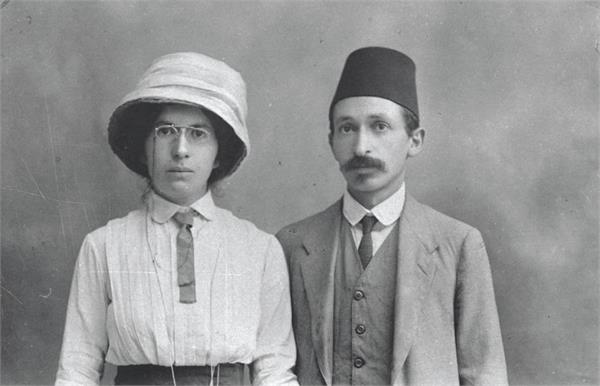
Yitzhak Ben Zvi and his wife Rachel Yanait in 1913, six years before they meet ‘Abdu'l-Bahá in Bahjí. Wikimedia Commons.
Sometime in about 1919, ‘Abdu'l-Bahá meets the future second president of Israel. At the time, in Bahjí, ‘Abdu'l-Bahá encounters a poor, young Jewish couple: Yitzhak Ben Zvi and his wife Rachel Yanait. They are walking through Palestine, and passing in front of Bahjí, they meet the Master who, warm and courteous, takes them into the Shrine of Bahá'u'lláh. The young couple are very impressed with ‘Abdu'l-Bahá and later recount this story to Hand of the Cause and Secretary of the Guardian, Leroy Ioas. Thirty-three years later, on April 26, 1954, President Yitzhak Ben Zvi and his wife Rachel Yanait visit the Shrine of the Báb at the invitation of Shoghi Effendi, Guardian of the Bahá'í Faith. This visit would mark the first time in the history of the Cause that the Head of an independent nation had ever made an official visit of this kind and it would constitute another milestone in the development of the World Centre of the Faith and the prestige of the Faith.
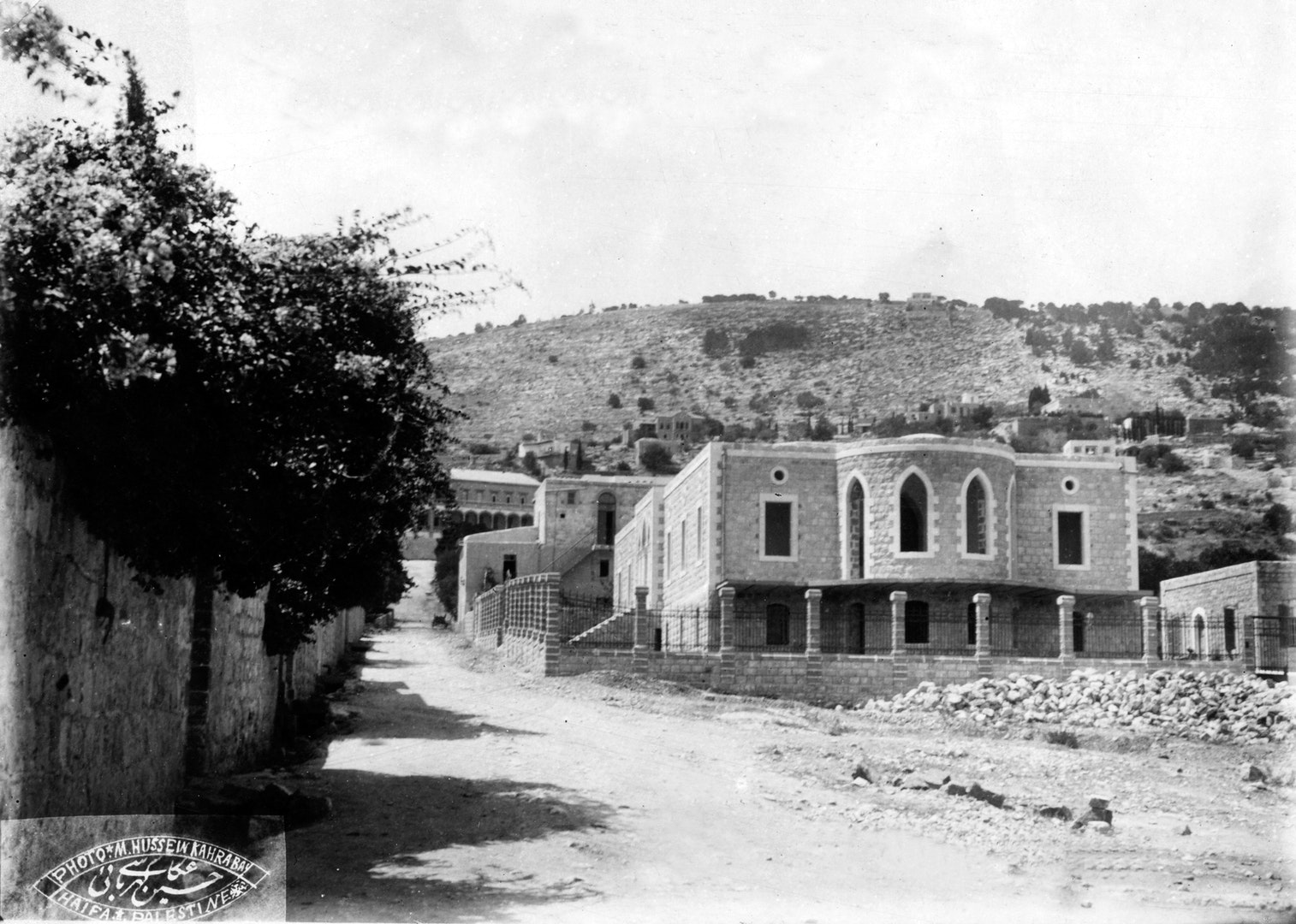
Construction of 10 Haparsim circa 1922. Bahá'í Media Bank.
After the end of World War I, large numbers of Western pilgrim start coming to the Holy Land. This is the first time that the many who became Bahá'ís and met ‘Abdu'l-Bahá during His Journeys to the West or in the years following can come and visit the Master during their pilgrimage. The small stone dwelling across from ‘Abdu'l-Bahá's house at 7 Persian Street is no longer sufficient, and there is already an adequate Eastern Pilgrim House, recently completed. A Persian believer donates a plot of land across from the home of the Master, a plot of land where Bahá'u'lláh used to pitch His tent, and William Henry Randall aks for the privilege of contributing money for the building of a Western Pilgrim House in November 1919. ‘Abdu'l-Bahá approves the final design but construction will begin in earnest in 1923.
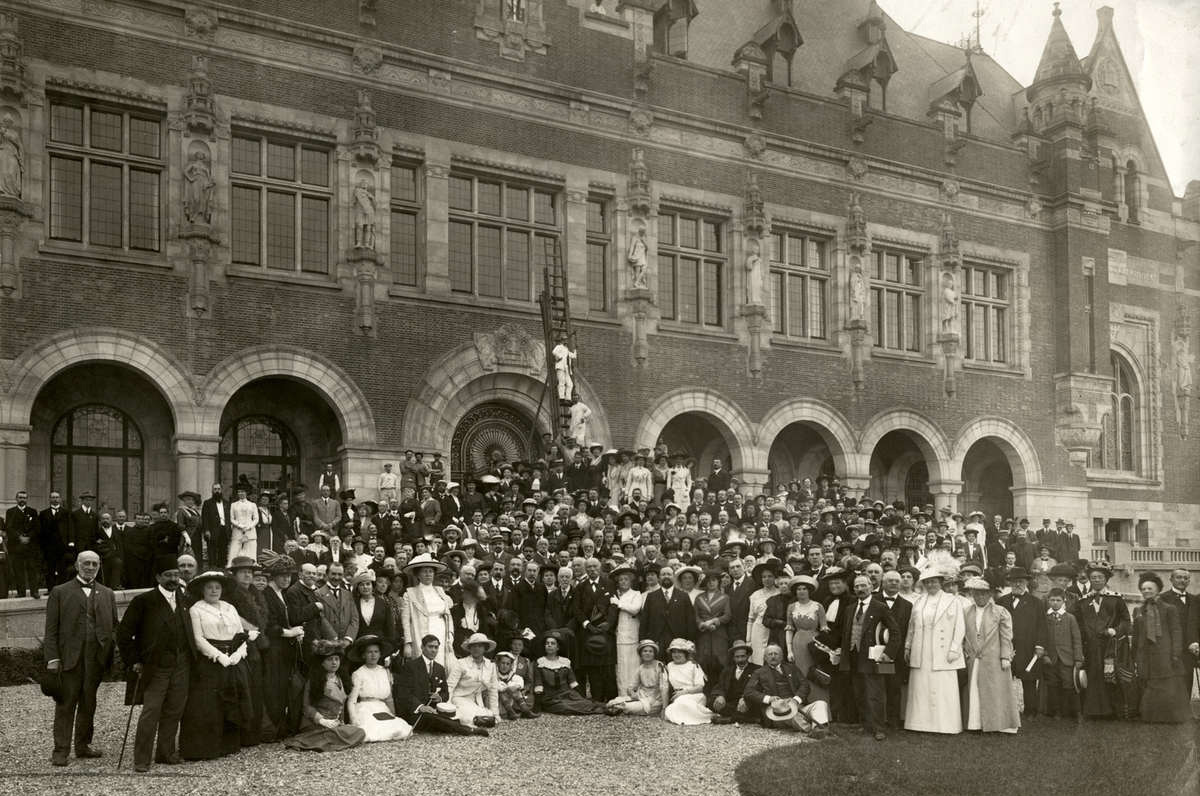
Participants of the World Congress for Peace held in 1913 in The Hague, one of many peace-related gatherings held in the Dutch capital city. (Credit: National Library of the Netherlands), Source: Bahá'í World News Service.

1899 - 1913
In 1899, at the initiative of Tsar Nicholas II of Russia, 26 delegates from European countries, as well as the United States, Mexico, China, Japan and Siam (now Thailand) meet in The Hague, in the Netherlands for the first international government-level world peace conference. Eight years later in 1907, a second conference takes place with delegates from 45 countries and the foundation stone is laid for the future seat of the International Court of Arbitration, funded by American steel magnate and philanthropist, Andrew Carnegie. The Court is inaugurated in 1913, and a third international peace conference is scheduled for 1916.
1915
In 1915, the Central Organization for a Durable Peace announces it is looking for peace specialists, not politicians, to represent their country at the third peace conference and publishes its constitution in newspapers all over the world. In Persia, Aḥmad Yazdání comes across this new Organization and, in consultation with Hand of the Cause and 'Alí-Muḥammad Ibn-i-Aṣdaq, writes a letter to the Organization regarding the Baháʼí Principles and suggesting they seek guidance from ʻAbdu'l-Bahá about the establishment of universal peace. regarding their aim to establish universal peace. Peace was a foundational subject of ‘Abdu'l-Bahá's talks during His journeys in the west and 140 selected talks during His journey to America in 1912 were collected under the apt title "The Promulgation of Universal Peace."
11 February 1916
On February 11, 1916, after corresponding with Ahmad Yazdání and his friends, the Central Organization sends a letter to Tihrán to be handed to 'Abdu'l-Bahá, but because of the war, the letter does not reach 'Abdu'l-Bahá until three years later, in December 1919 when it is finally delivered to the Master.
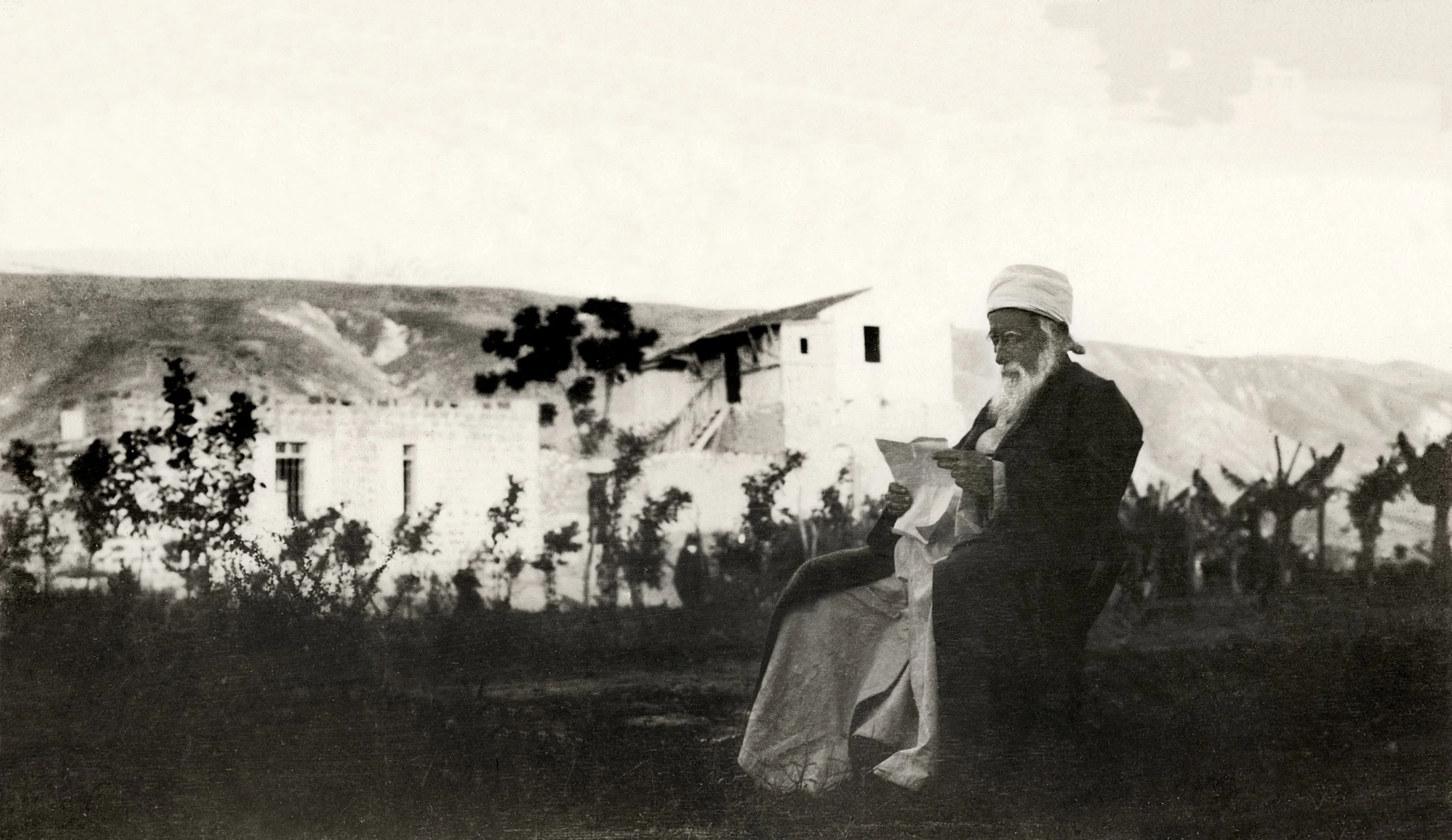
‘Abdu’l-Bahá in the Holy Land. Source: Bahá'í Media Bank, © 2023 Bahá'í International Community.
17 December 1919
As soon as 'Abdu'l-Bahá receives the letter from the Central Organization for a Durable Peace, He dictates a weighty and extremely long Persian Tablet in response, known the Lawḥ-i-Láhih, or the Tablet of the Hague.
A "Tablet of far-reaching importance"
In God Passes By, Shoghi Effendi refers to the Tablet of the Hague as a "Tablet of far-reaching importance." It is, in fact, the Tablet addressed to the most prominent international institution in ‘Abdu'l-Bahá's ministry, and rather than entrusting it to mail, ‘Abdu'l-Bahá has it delivered in person by hand-picked Bahá'ís He has summoned from Persia. The first Tablet, of substantial length at nearly 6,000 words, includes ‘Abdu’l-Baha’s analysis of the attainment of international peace within the context of the need for wider political, economic, and cultural change. ‘Abdu’l-Baha also identifies the most important Baháí principles, such as the abolition of all forms of prejudice, the harmony of science and religion, the equality of women and men, that religion must be the cause of love, and others.
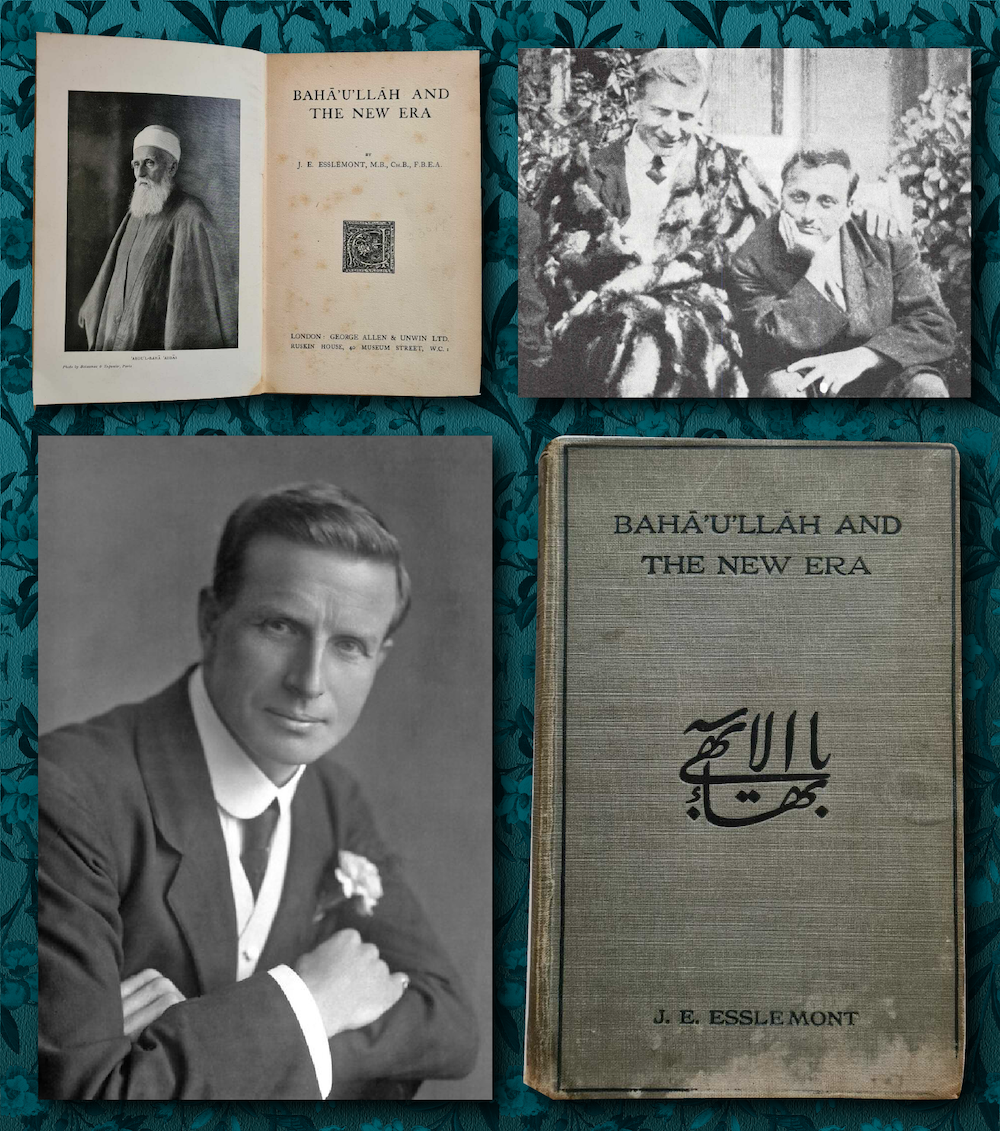
Frontispiece of the First Edition of Bahá'u'lláh and the New Era (1923), Source; Dr. John E. Esslemont and young Shoghi Effendi in Haifa in 1919-1920, Bahaipedia; A portrait of Dr. Esslemont, Bahaipedia; Cover of the First Edition of Bahá'u'lláh and the New Era (1923), Source.
Dr. Esslemont is born in Scotland, and from an early age, becomes interested in a wide variety of subjects and religious beliefs until he encounters the Bahá'í Faith. He is well-read and well-educated man who speaks fluent French, German, Spanish and Esperanto, and he begins learning Arabic and Persian very soon after he becomes a Bahá'í in March 1915, in order to access the Holy Writings in their original languages.
By October 1916, Dr. Esslemont has already started working on Bahá'u'lláh and the New Era, and begun a correspondence with Shoghi Effendi which the future Guardian hopes would be “continuous, inspiring and regular.”
In early January 1919, Dr. Esslemont receives from Shoghi Effendi a Tablet revealed in his honor by 'Abdu'l-Bahá, in which the Master hopes Esslemont will “become a torch …so that light and knowledge might shine out” from him, and adds, “concerning the book you are editing, send me a copy thereof.”
Dr. Esslemont immediately forwards 'Abdu'l-Bahá the first nine chapters of Bahá'u'lláh and the New Era, and mentions he has committed 'Abdu'l-Bahá’s Tablet to him to memory. It seems Dr. Esslemont had wanted to travel to the Holy Land in July 1919, but did not, telling Luṭu’lláh Ḥakím:
“I would have liked to come with you, but ['Abdu'l-Bahá] tells me to bring the whole book with me when I come and I am afraid it will take me a good many months to finish it.”
With Bahá'u'lláh and the New Era nearly finished, Dr. Esslemont at long last arrives in Haifa with a group of pilgrims which includes Corinne and Edna True on 5 November 1919. On their way to Haifa, Corinne had recognized John Esslemont at a distance, and when she says his name to her sister, Edna immediately refers to him as “the Scot who is writing a book about the Faith.”
During his pilgrimage, Dr. Esslemont is often ill with dysentery, staying in bed a number of days. He asks 'Abdu'l-Bahá to help him and 'Abdu'l-Bahá responds:
“I will pray for you. I will pray for your spiritual health – that is the essential thing. I suffered much when I came here (in the prison at Acca, where he had dysentery very badly) and you must have a portion. You must suffer a little too.”
Then, 'Abdu'l-Bahá gives Dr. Esslemont diet advice and sends him a rug from His own bed. Throughout his nearly three-month stay in Haifa, most of Dr. Esslemont’s time with 'Abdu'l-Bahá is spent discussing Bahá'u'lláh and the New Era. 'Abdu'l-Bahá makes many suggestions for the manuscript, including encouraging Dr. Esslemont to shorten it considerably.
During his pilgrimage, Dr. Esslemont also develops a close friendship with Shoghi Effendi, and takes assiduous notes for his book, questioning dozens of illustrious early Bahá'ís, gathering information, and accumulating material. Most of the material he gathers during this visit comes directly from 'Abdu'l-Bahá, in after-dinner conversations.
On 5 December, Dr. Esslemont and 'Abdu'l-Bahá take a drive through the rain. 'Abdu'l-Bahá teaches him a few words of Persian, and Dr. Esslemont teaches 'Abdu'l-Bahá a few words of Esperanto. A few days later, 'Abdu'l-Bahá, Shoghi Effendi, Dr. Esslemont and Luṭu’lláh Ḥakím visit ‘Akká, the Garden of Riḍván, and the Shrine of Bahá'u'lláh.
Because Dr. Esslemont is often sick during his months in the Holy Land, he devises a stratagem in order to not delay removing his shoes off when entering the presence of 'Abdu'l-Bahá: he flattens the backs of his dress shoes, effectively turning them into slip-ons!
'Abdu'l-Bahá had asked Zia Baghdadi to translate Bahá'u'lláh and the New Era into Persian, and around December 1919-January 1920, while Dr. Baghdadi is reading parts of his translation aloud to Him, 'Abdu'l-Bahá makes corrections as he reads, and says:
“There is so much work and so little time. However, this book must be translated as I do not wish [Dr Esslemont] to leave this place unhappy.”
Bahá'u'lláh and the New Era would be published in September 1923, and the impact of the book at the time of its publication would be nothing short of monumental, spreading accurate information, most of it reviewed by 'Abdu'l-Bahá Himself, about the Bahá'í Faith worldwide. Shoghi Effendi would call Bahá'u'lláh and the New Era “the textbook of the Bahá'í Faith,” and would actively promote its translation and publication in many languages. Perhaps more importantly, for us, a century later is Shoghi Effendi’s qualification of “the pure intention” of its author, whom Shoghi Effendi raised posthumously to the rank of Hand of the Cause of God.
John E. Esslemont, Bahá'u'lláh and the New Era.
Moojan Momen, M.A.M.B., Dr. John Ebenezer Esslemont, M.B., Ch.B., SBEA: Hand of the Cause of God, pages 1-40.
Bahaipedia: John Esslemont.
Earl Redman, Visiting 'Abdu'l-Bahá Volume 2: The Final Years, 1913-1921, Kindle Edition.
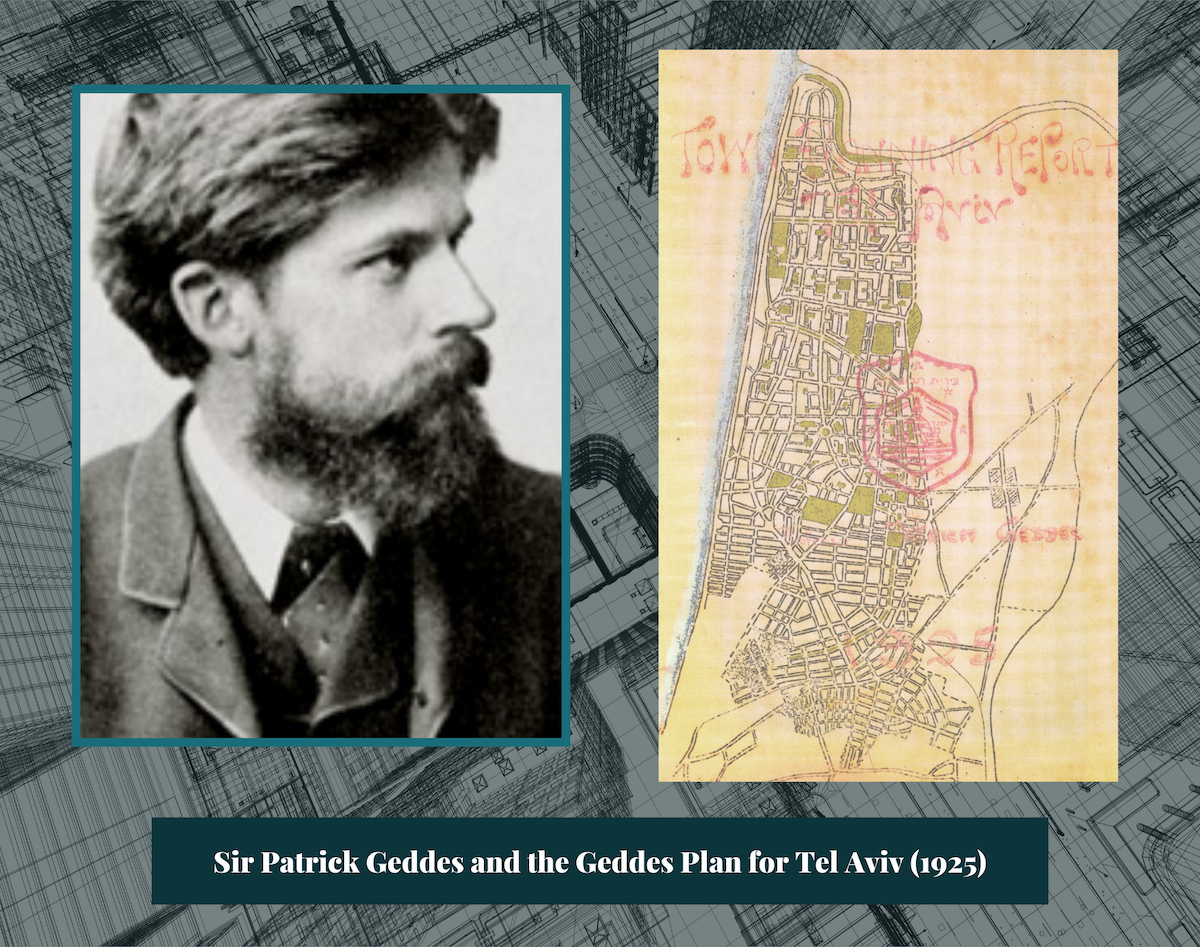
Sir Patrick Geddes, left, a pioneering urban planner and his Geddes Plan for Tel Aviv (1925).
Sir Patrick Geddes, who gave 'Abdu'l-Bahá a tour of the Outlook Tower in Edinburgh Scotland in January 1913, has been doing urban planning around Palestine for two years in Jerusalem and Haifa for about two years. Patrick Geddes is a fascinating figure, he is a biologist, a sociologist, a philosopher, a geographer, a philanthropist and a pioneering urban planner, well-known for his innovative thinking in city planning. In 1919 and 1920, Sir Patrick Geddes meets with 'Abdu'l-Bahá on more than one occasion. One memorable day, Geddes calls on the Master to convey a request from a new civic society called Pro-Carmel, whose purpose is to "advance all the common interests of the city, without distinction of race, party, or creed."
From what can be gathered from Patrick Geddes' description, the "Pro-Carmel" Society, seems to be a social and economic development initiative for the betterment of the lives of the people of Haifa. It unites Muslims, Christians, Jews and Bahá'ís who offer service together for the social and economic betterment of the city, with activities touching on morals and education, public health, and art. And the Pro-Carmel Society would like 'Abdu'l-Bahá to be its new President. 'Abdu'l-Bahá agrees to take on this leadership role, and Geddes hastens to add that everyone was entirely satisfied with this outcome because all of Haifa looks up to 'Abdu'l-Bahá who is "the foremost of their fellow-citizens."
In the same meeting, 'Abdu'l-Bahá approves an urban planning proposal put to Him By Sir Patrick Geddes and the Haifa City Engineer, Dr. Ciffrin. which centers around the Master's fairly extensive properties on Mount Carmel. Two public roads need access in order to cut through 'Abdu'l-Bahá's properties. 'Abdu'l-Bahá not only grants land for the roads, refuses to accept payment for it, AND donates 4,000 square meters of land for a public school needed in that neighborhood.
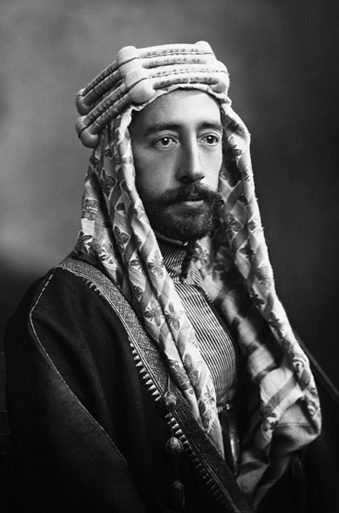
King Faisal of Iraq. Wikimedia Commons.
At some point during 1920, ‘Abdu'l-Bahá is visited by King Faisal, or as his full royal name states: Faisal I bin Al-Hussein bin Ali Al-Hashemi, King of the Arab Kingdom of Syria or Greater Syria. Martha Root interviews King Faisal on January 2, 1930 in his Secretariat in Baghdád, on the banks of the Tigris River, not far from where Bahá'u'lláh proclaimed His mission in 1863. After passing along Shoghi Effendi's greetings, Martha Root's first question to King Faisal is:
What was your impression of ’Abdu’l-Bahá, Center of the Covenant of the Bahá’i Movement?
King Faisal replies, thoughtfully:
’Abbas Effendi, for that was the name I always used in speaking with ’Abdu’l-Bahá, impressed me as a very great, intelligent, wise man. I had great respect for him because he was working for the welfare of all humanity. I met him just ten years ago, in 1920, in Haifa, Palestine.
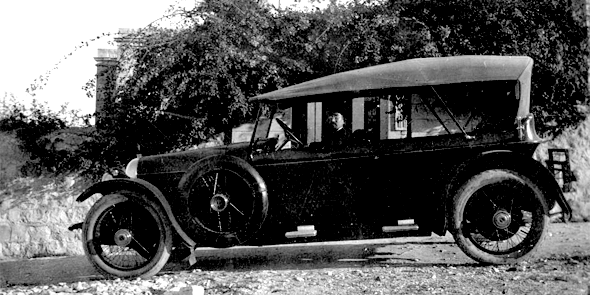
'Abdu'l-Bahá's Cunningham automobile, the 7-passenger touring car gifted by Ella Goodall, with Saichiro Fujita behind the wheel. Source: 239 Days.
In January 1920, along with an arrival of new pilgrims, is another arrival of an entirely new sort: the arrival of 'Abdu'l-Bahá's hand-built seven-seater Cunningham automobile. Cunningham automobiles are one of the earliest vehicles in the advent of the automotive age, and the Master's Cunningham automobile is a gift from Ella Goodall Cooper. Saichiro Fujita, who has been invited by ‘Abdu'l-Bahá to come and live in the Holy Land, accompanies the automobile from the United States to Haifa, where he stays on as one of the drivers and mechanics. When the automobile arrives in Haifa, ‘Abdu'l-Bahá instructs Shoghi Effendi to have it clear customs and delivered to His home. Although the automobile arrives on a weekend, Shoghi Effendi succeeds in getting it delivered by taking the papers to the homes of various city officials and asking them to sign the documents and give the necessary orders to release the car into ‘Abdu'l-Bahá's possession.
‘Abdu'l-Bahá would eventually ride in the Cunningham automobile on occasions but it would predominantly be used to transport pilgrims. The automobile was too wide for Haifa's narrow streets and therefore was confined to one-way streets. It was also too wide to drive through 'Akká's city gate. At times ‘Abdu'l-Bahá would join the pilgrims in the automobile for a drive up Mount Carmel to look at the view of the Mediterranean.
In her biography of Shoghi Effendi, The Priceless Pearl, Ruhiyyíh Khánum makes a stunning point: "This was typical of the way Shoghi Effendi did his work throughout his entire life. He always wanted everything done at once, if not sooner, and everything he had any personal control over progressed at that speed." In essence, in managing to clear the Master's car through customs on a weekend, at ‘Abdu'l-Bahá's express instructions, we see perhaps a training moment between Grandfather and grandson, between Center of the Covenant and future Guardian of the Faith. But this vignette is also a brief snapshot of what the Guardian will be like, just two years before those immense responsibilities fall on his shoulders.
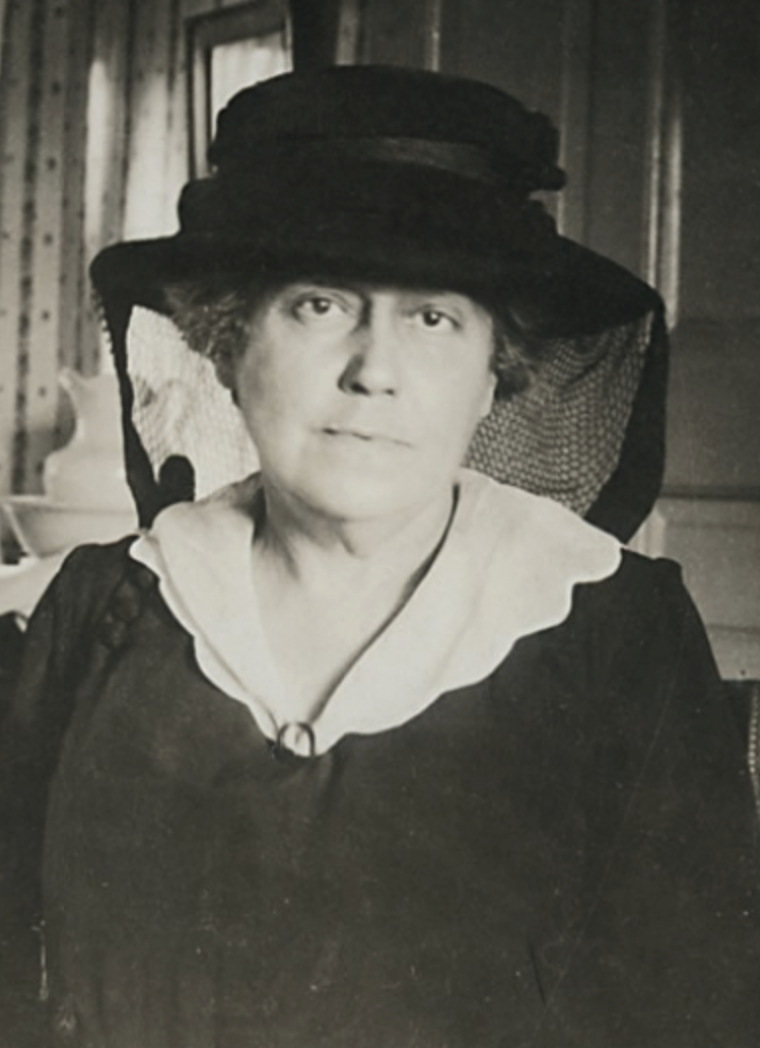
Agnes Parsons. Photo: Brilliant Star Magazine.
Agnes Parsons and ‘Abdu'l-Bahá have a special relationship. Agnes had invited ‘Abdu’l-Bahá to stay at her home in Washington D.C. in April 1912 and hosted the Master for three of His most pleasant weeks in her summer home in Dublin, New Hampshire in August of that same year. Now, nearly eight years later, Agnes Parsons comes to the Holy Land on pilgrimage between December 25, 1920 and mid-February 1920. At dinner, halfway through her pilgrimage on January 17, 1920, ‘Abdu'l-Bahá speaks to Agnes about the racial tensions in America which He witnessed firsthand during His visit to Washington D.C. ‘Abdu'l-Bahá directly asks Agnes why she does not have meetings in Washington with both white and black people. Agnes responds:
If the colored people come here, the white ones will not come. We had appointed a special place for the colored people, but they do not go there.
‘Abdu’l-Bahá explains that black people feel slighted by this arrangement, then tells Agnes to organize a Racial Amity campaign for the Bahá’í community to overcome the problems of racial inequality, saying:
I want you to arrange a Convention for unity of the colored and white races.
Upon her return to the United States, Agnes Parsons, always obedient to ‘Abdu'l-Bahá, throws herself into the task and works closesly with Louis Gregory, who will later be named a Hand of the Cause.
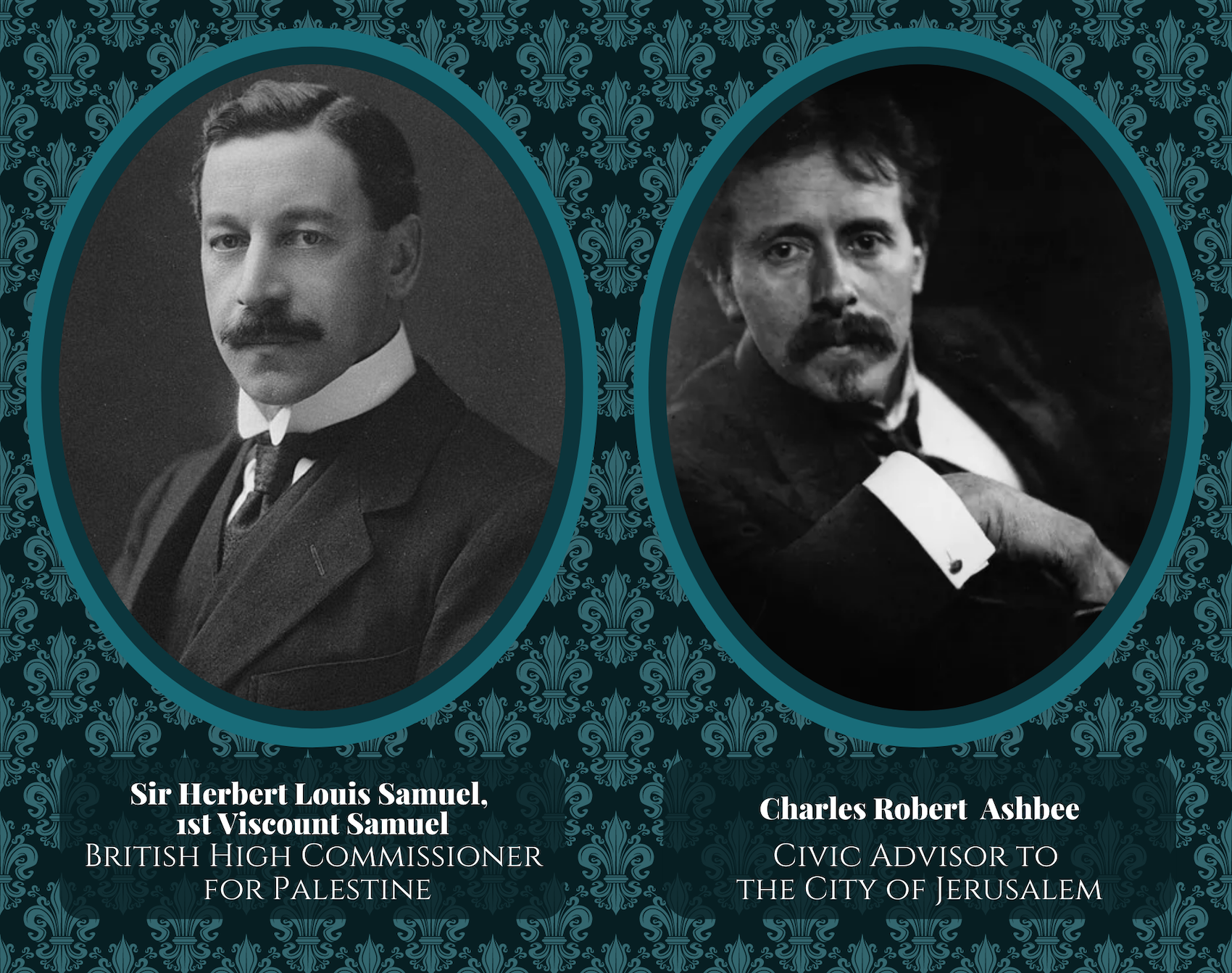
Sir Herbert Samuel and C. R. Ashbee, who both meet ‘Abdu'l-Bahá in 1920.
Sir Herbert Samuel
British High Commissioner for Palestine
Shortly after being appointed British High Commissioner for Palestine, Sir Herbert Samuel pays 'Abdu’l-Bahá a visit. Sir Herbert Samuel has previously met ‘Abdu'l-Bahá and has a long-standing interest in the Bahá'í Faith but with this visit, his intention is also to demonstrate the British commitment to tolerance and respect for all religions. During his visit in ‘Abdu'l-Bahá's home, the Master explains the fundamental teachings of the Bahá'í Faith, listens to Sir Herbert's comments and answers his questions. Sixteen years later in his memoires, Sir Herbert Samuel will say of ‘Abdu'l-Bahá: "I was impressed, as was every visitor, by ‘Abdu’l-Bahá’s dignity, grace and charm. Of moderate stature, his strong features and lofty expression lent to his personality an appearance of majesty."
Charles Robert Ashbee
Civic Advisor to the City of Jerusalem
C. R. Ashbee, a Civic Adviser to the City of Jerusalem, came across ‘Abdu'l-Bahá during a visit to Haifa in the company of his wife, Janet. He recorded his memories of the "wonderful hour" he spent with ‘Abdu'l-Bahá in A Palestine Notebook, where he has a sentence that sums up the impact the Master could have on people in just a short meeting: "I have rarely come across a man who so completely sums up the saint, or let us say saint and philosopher combined, for the presence and image of the man are of the Middle Ages, their spirit of personal holiness, while what he says has the lucidity of the Greek, is disruptive of all religions and mediaeval systems, is philosophic, modern and synthetic." A very long section is available in Earl Redman, Visiting ‘Abdu’l-Baha Volume 2: The Final Years, 1913–1921 pages 137-140.
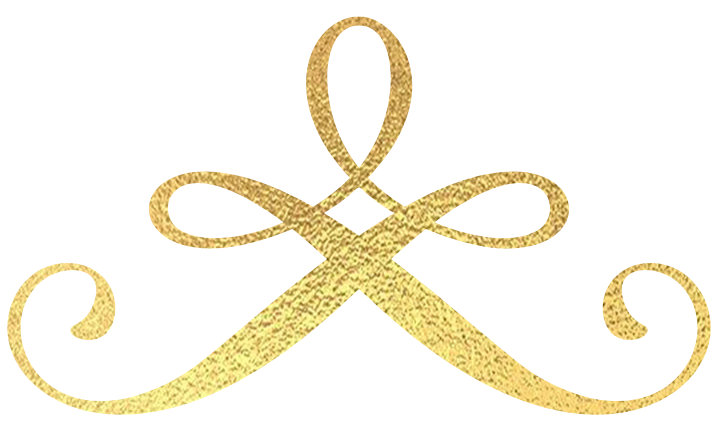
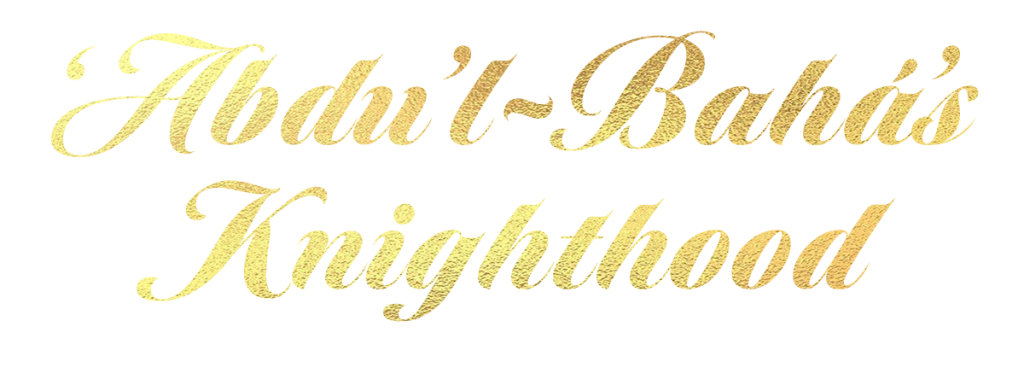
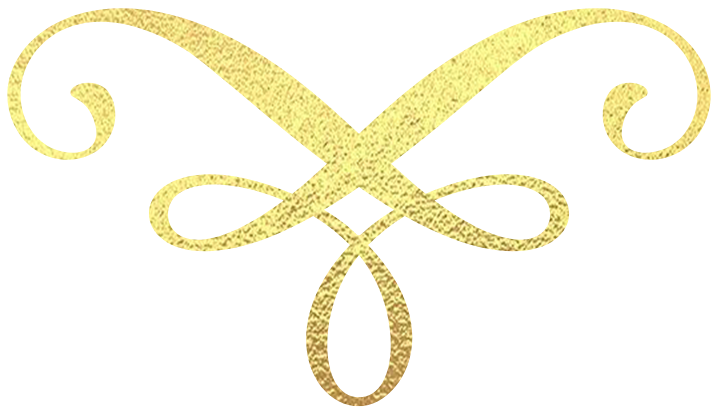
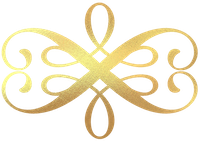
‘Abdu'l-Bahá's wartime humanitarian efforts
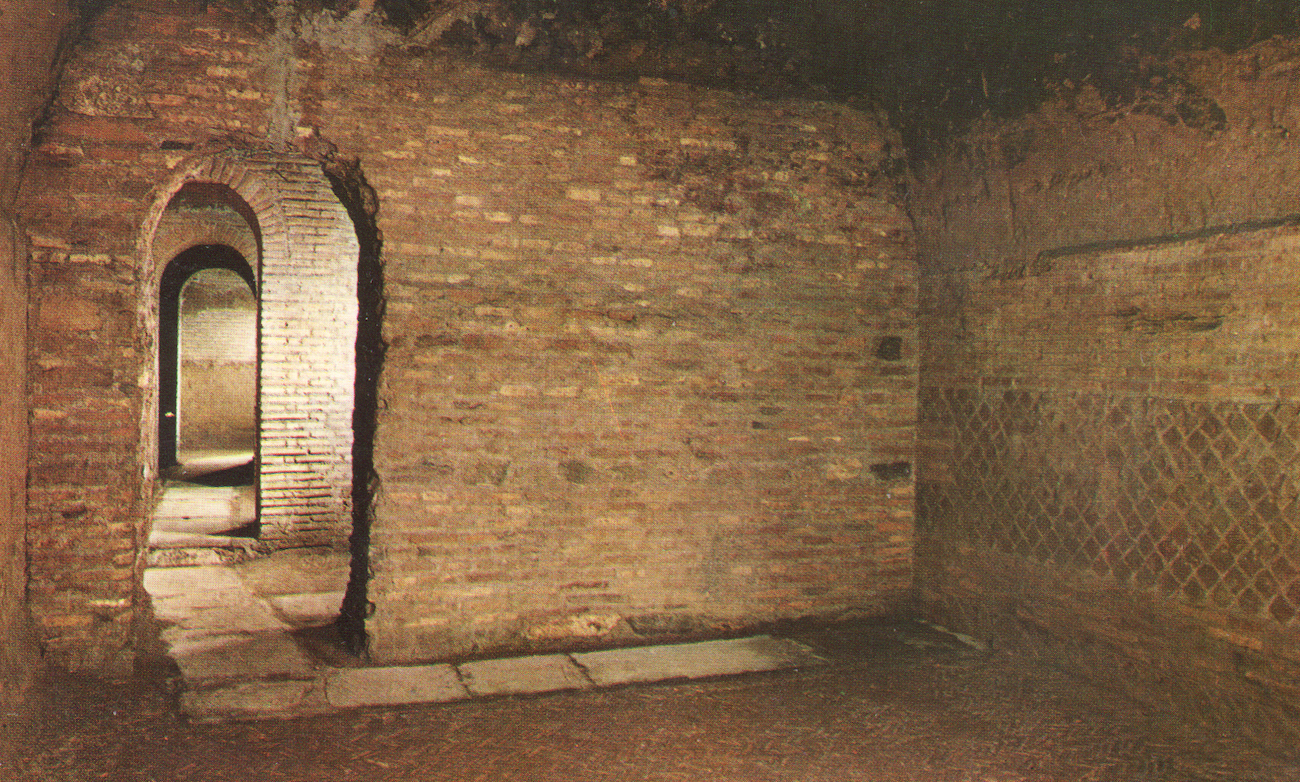
A Roman underground storage pit, called horreum, often used for grains. Those used by ‘Abdu'l-Bahá may not have looked identical, as this one is in Rome, but the concept is the same. Wikimedia Commons.
After the British arrive in Haifa, the situation was not what they had expected. Although the blockade had endangered the population, one man, alone, had essentially averted a famine in the Haifa/'Akká area. ‘Abdu'l-Bahá had perhaps been preparing for this since 1901, when He first bought 2,200 acres of farmland in 'Adasiyyíh, and dammed a stream for irrigation. But from 1912 onwards, the Master made more and more definite plans to increase production in all His farmlands, especially after He returned to the Holy Land in 1913. During the entirety of the war, starting even before the locust plague of 1915, ‘Abdu'l-Bahá had carefully grown absolutely prolific quantities of wheat and corn in several locations in the Jordan and Yarmuk Valleys, bought up all the cereals that could be bought in all the neighboring villages, single-handedly developed a complex logistical system of expediting the provisions, including 200-camel caravans, and storing them in Roman-era underground pits. Once the corn and wheat were in the Haifa/'Akká area, ‘Abdu'l-Bahá personally managed them with extraordinary efficiency, distributing the precious rations in an orderly, equitable way to all people living in the area, regardless of nationality or religion, preventing the starvation of thousands..And when Haifa had been liberated, and the British army was hungry, having outrun their supply train, ‘Abdu'l-Bahá also fed them, with corn He had saved in His underground granaries.
The U.S. Bureau of the Census, Religious Bodies: 1936 documents this episode in the life of ‘Abdu'l-Bahá in the following way:
During the World War communication with friends and believers outside was almost completely cut off and Abdul Baha and his followers suffered hardships. During those dreary years the resourcefulness and sagacious philanthropy of Abdu l Baha were strikingly shown. He personally organized extensive agricultural operations near Tiberias bringing under cultivation land had been untilled for centuries thus he secured a great supply of wheat by of which famine was averted not only for the Bahai's but for many of the of all religions whose wants he liberally supplied.
U.S. Bureau of the Census, Religious Bodies: 1936, page 54

‘Abdu'l-Bahá fed us
After the end of World War I, a group of pilgrims, which includes a Persian Bahá'í named Avron, leaves from Ṭihrán. The journey to Istanbul takes them three months, by trains, boat and carriage. When they arrive in Istanbul, the Bahá'ís entrust Avron with silver to bring as a gift to ‘Abdu'l-Bahá. When the group passes through 'Akká, they are set upon by thieves who tear their luggage open and steal their belongs. As they take the silver, Avron says: “That silver is for Abdu’l-Baha.” The thieves grow quiet then tell Avron: “Abdu’l-Baha fed us, he clothed us, and housed us. Here is your silver for Abdu’l-Baha.”
Annamarie Honnold, Vignettes from the Life of ‘Abdu’l-Bahá, page 163

Before the Knighthood
On July 18, 1919, General Sir Arthur Money sends General Allenby an official recommendation that ‘Abdu’l-Bahá be given the Order of the British Empire with the grade of Knight Commander. The Most Excellent Order of the British Empire is a British order of chivalry, rewarding contributions to the arts and sciences, work with charitable and welfare organisations, and public service outside the civil service. The reason for the award is stated as follows:
[‘Abdu’l-Bahá] Has given consistently loyal service to the British cause since the occupation. His advice has been most valuable to the Military Governor and officers of the Administration in Haifa, where all his influence has been for good. He was for many years placed in captivity by the Turks in the Citadel at Acre.
The recommendation is then received at the British Foreign Office and passed along with another note from an E. W. Light:
Perhaps this paper might now be sent on to Sir Frederick [Ponsonby] with a view to obtaining H.M. sanction for the award of a K.B.E. to the Head of the Bahai religion – Abdul Baha . . . I suppose we may take it that Sir A. Money in recommending Abdul Baha for the K.B.E., does not think that any injury will be done to that gentleman’s religious susceptibilities by giving him a cruciform decoration, but perhaps the War Dept. w[oul]d. advise on this point, which seems one of some special importance in this particular case.
‘Abdu'l-Bahá knighthood is approved by King George V on 7 November 1919.

The Story of the carriage
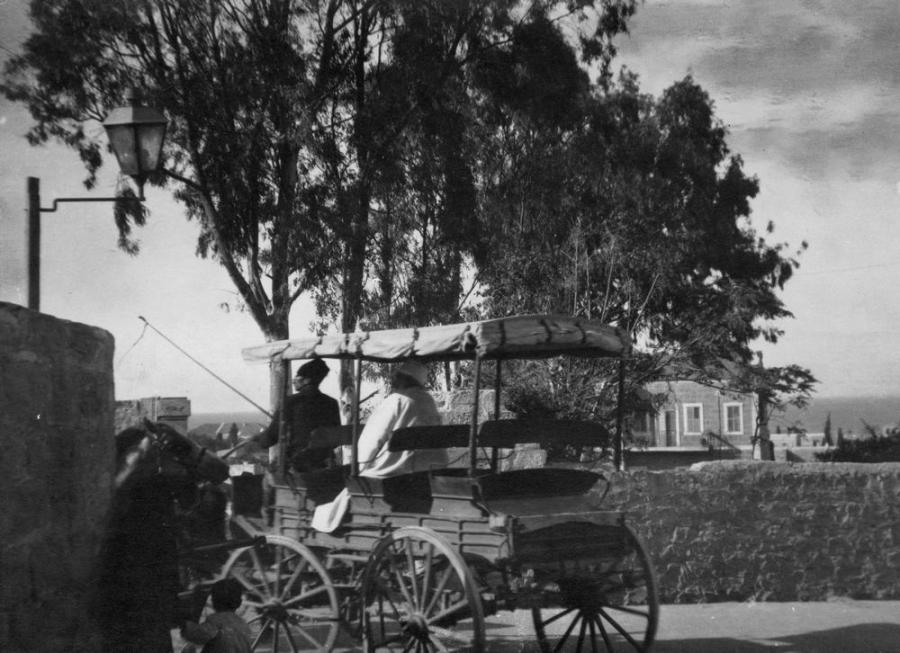
‘Abdu’l-Bahá being driven in His carriage to investiture as a Knight of the British Empire by Isfandiyar in His own carriage. Image: National Bahá'í Archives of the United States. Source.
Shortly before the presentation of the knighthood, on April 27, 1920, the British send a large automobile to pick up ‘Abdu’l-Bahá from His home and bring him to the Governor's house, where the ceremony is being held. Isfandíyár, for many years ‘Abdu'l-Bahá's faithful carriage driver, seeing the elegant car, feels sad and unneeded. No doubt Isfandíyár had hoped to be the one to bring ‘Abdu'l-Bahá to this great event. Meanwhile, the chauffeur of the fancy automobile is looking everywhere for ‘Abdu'l-Bahá, and the Master cannot be found. People rush in every direction to find Him. Suddenly, ‘Abdu'l-Bahá appears alone, walking His very distinctive kingly walk, and His eternal aura of both simplicity and greatness. ‘Abdu'l-Bahá turns to Isfandíyár and gives him a sign. Isfandíyár dashes off, harnesses the horses and brings them to the lower gate of 7 Persian street. When they arrive at the Governor's house, Isfandíyár drops ‘Abdu'l-Bahá off at a side entrance of the garden.

The Knighthood
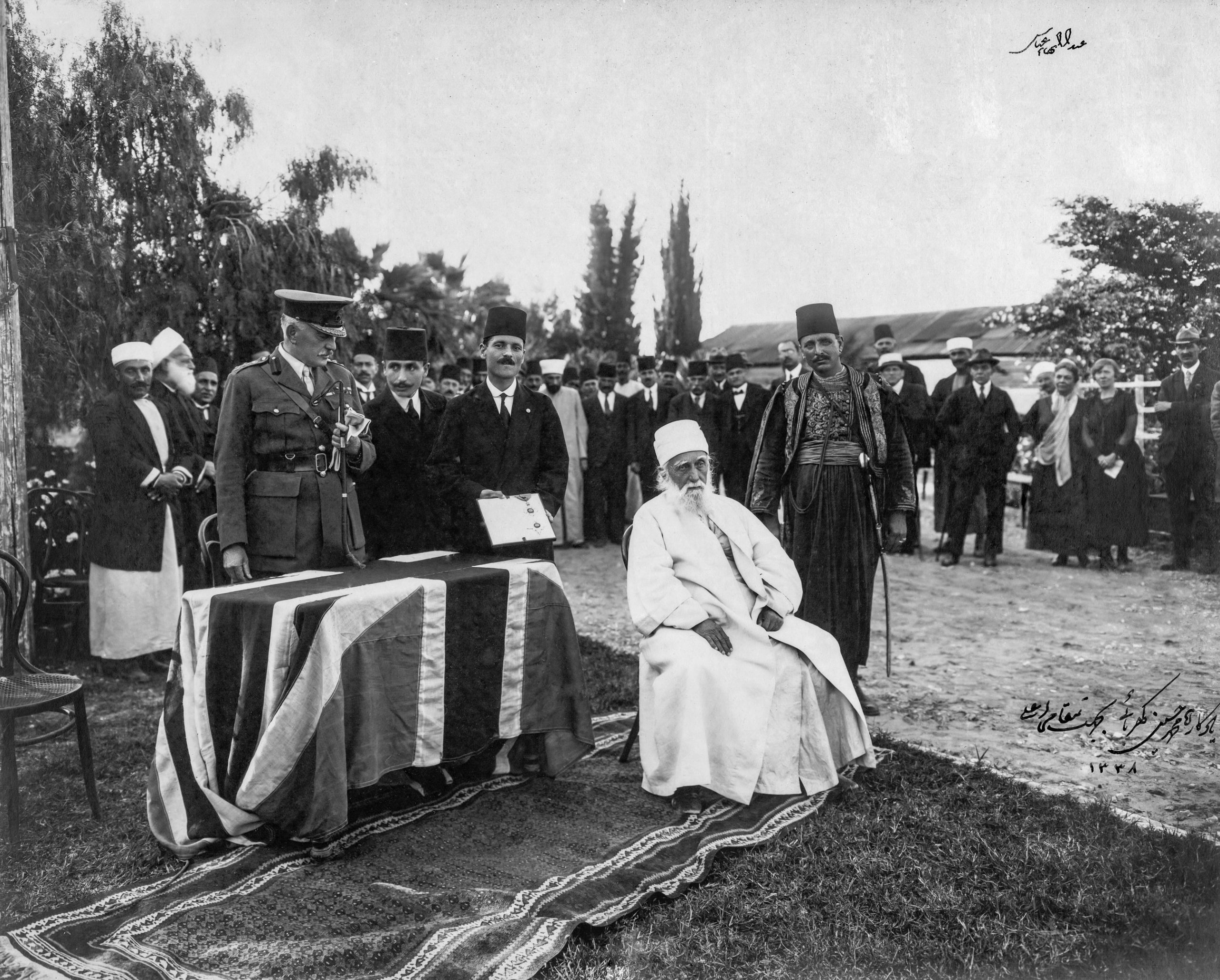
‘Abdu’l-Bahá receiving knighthood for relief of distress and famine during the war, April 27, 1920. Bahá'í Media Bank.
The knighthood ceremony takes place at the home of the British Governor, Colonel Stanton, in his beautiful garden. Also present to honor ‘Abdu'l-Bahá are British officials, and Muslim and Christian religious leaders, as well as local notables and officials. British troops line the alley of the garden, ready to make the guard of honor and a military band plays, while everyone waits for ‘Abdu'l-Bahá the guest of honor, to arrive in the elegant car, and pass the guard of honor. To everyone's surprise, ‘Abdu'l-Bahá enters quietly from the back and takes His seat. Standing behind the Master, General Allenby gives a short speech, followed by a few words by ‘Abdu'l-Bahá. who then offers a prayer for the British government. Once the ceremony is over, ‘Abdu'l-Bahá leaves as discreetly as He had arrived.

My name is ‘Abdu'l-Bahá
‘Abdu'l-Bahá had first refused the knighthood, then accepted it, as the gift of a "just King." The Master would never formally use the Title of "Sir ‘Abdu'l-Bahá 'Abbás," and the knighthood changed nothing for His reality, and R.C. Ashbee recorded ‘Abdu'l-Bahá even saying about the knighthood that, "as a teacher of God’s word it will make no difference to me." Perhaps the most significant elements of ‘Abdu'l-Bahá's knigthood are His utter humility at this moment, to outward-seeming eyes the "most prestigious" moment, receiving an honor from a King. ‘Abdu'l-Bahá stays true to Himself throughout the entire ceremony, caring for the feelings of Isfandiyar, using His own carriage instead of the luxurious automobile, and refusing to bow to pomp and circumstance, keeping His entrance and exit as humble, discreet and simple as possible.
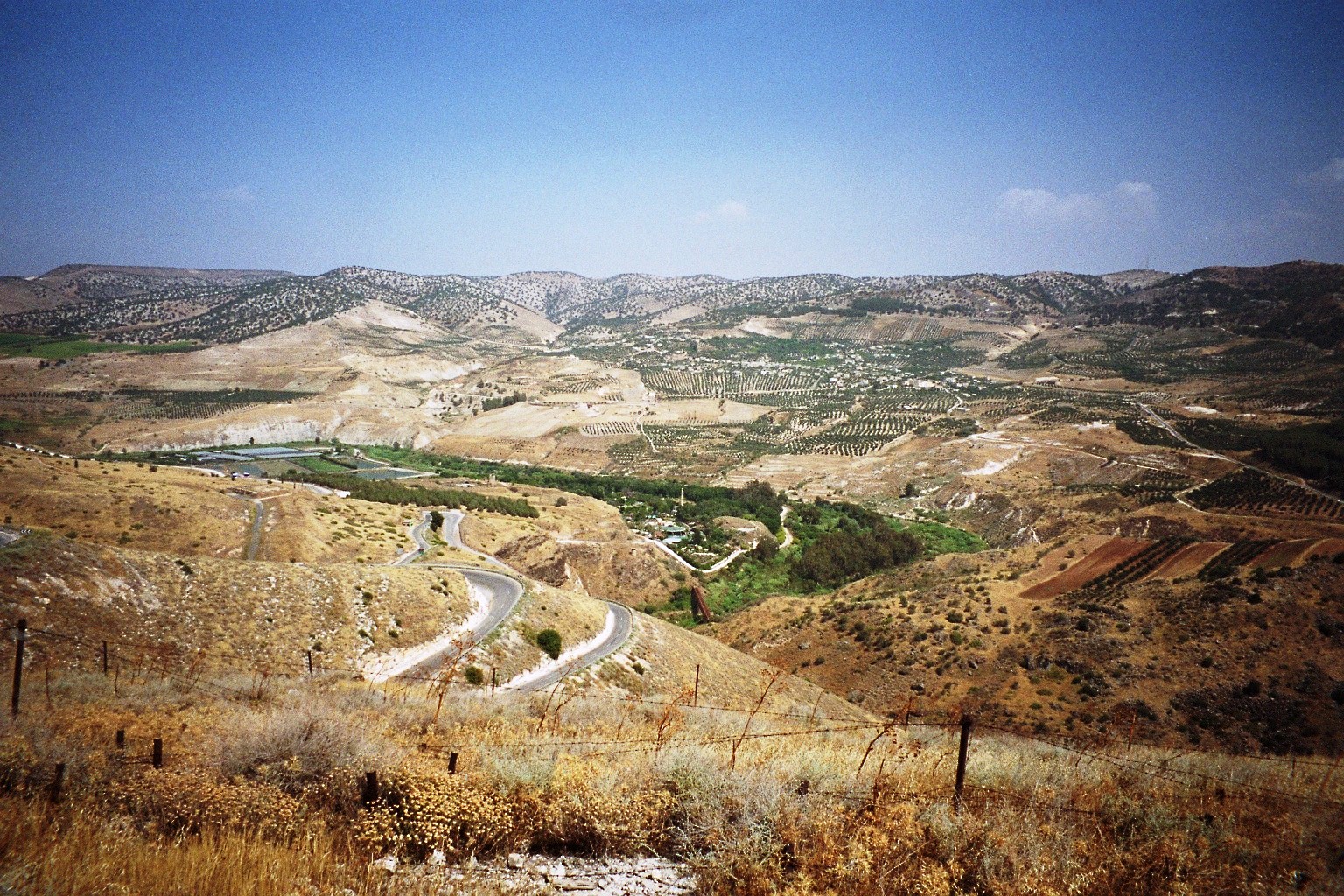
There are no current or past photographs of the fields and landscape around 'Adasiyyíh but this photograph of fields and valleys in Hamat Gader is very close. This photograph is taken less than five kilometers away from the lands of 'Adasiyyíh. Source.
Sometime in 1920, ‘Abdu'l-Bahá pays His fourth and last visit to ‘Adasiyyíh for a single day and night. Before He arrives, Bedouins (nomadic Arab tribes) have invaded the village but the Bahá'ís have not been harmed, even though the Bedouins outnumber them. Soon after His arrival, ‘Abdu'l-Bahá informs the Bahá'í farmers that the purpose of His visit is to put in place a permanent arrangement with them.
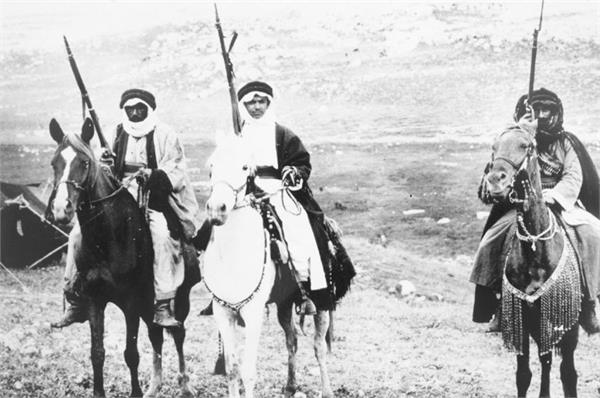
Bedouins riders in Galilee in January 1911. Wikimedia Commons.
Until 1920, the Bahá'í farmers in ‘Adasiyyíh have been paying one-third of their farm produce to the Holy House (i.e. ‘Abdu'l-Bahá), mainly because of His wartime needs and responsibilities. With peace returned, ‘Abdu'l-Bahá desired to revisit this ratio to a fairer distribution of the profits of ‘Adasiyyíh. ‘Abdu'l-Bahá proposes a system whereby the ‘Adasiyyíh farmers will only pay Him one-fifth of their profits, after paying 10% as tax to the government and 10% to the partners. ‘Abdu'l-Bahá gave more wise economic advice during this visit: He recommended the farmers pay their laborers a percentage of their net income, a system of shares.
During the course of this short visit, ‘Abdu’l-Bahá also emphasizes to the Baha’is the importance of daily devotional gatherings and practising consultation to resolve disputes. The Local Spiritual Assembly of the Bahá'ís of ‘Adasiyyíh would be formed four years later.
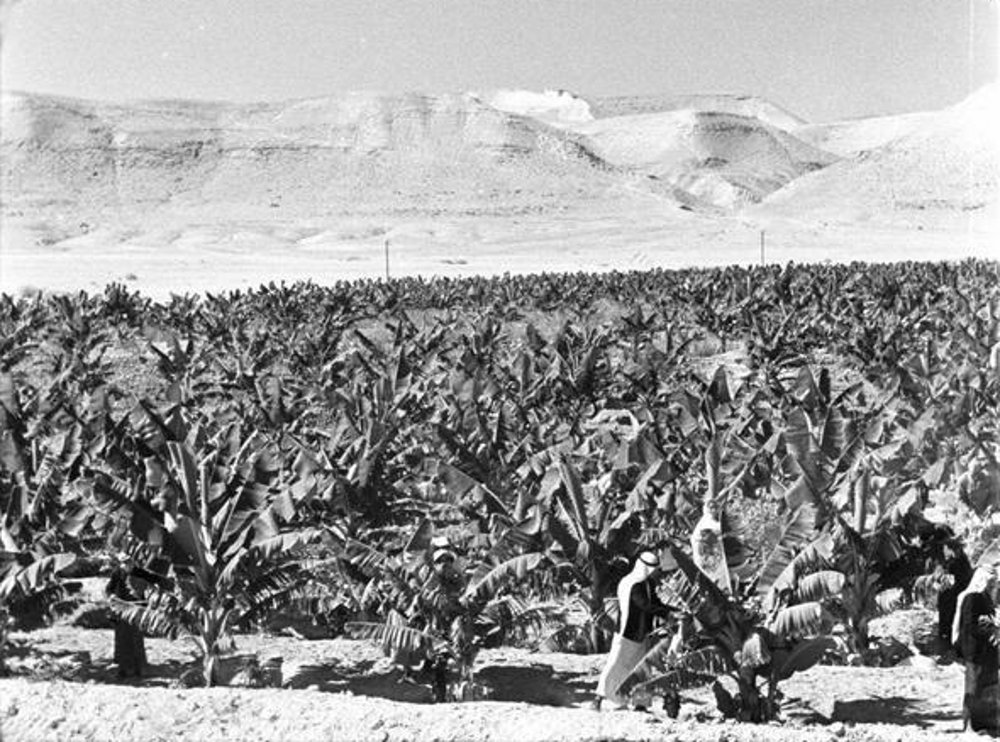
Banana Plantation in Palestine, 1930s. Source: Palestine Remembered, used with permission.
In the last years of His life ‘Abdu'l-Bahá introduced bananas to Palestine. When ‘Abdu'l-Bahá is given seven banana suckers (the proper name for banana shoots) from India, He gives them to the Bahá'í farmers in 'Adasiyyíh, asking them to plant the suckers and take good care of them. Despite never having either grown or cultivated bananas, ‘Abdu'l-Bahá so wisely guides the farmers that the experiment is a success.
It is believed, according to Iraj Poostchi, that the Bahá'í farmers in 'Adasiyyíh were, in fact, the first farmers to grow bananas in both Jordan and Palestine and that until ‘Abdu'l-Bahá introduced the fruit to the region, no one in Syria, Palestine or Jordan knew anything about bananas, let alone know how to grow the crop. Apparently, the villagers in the 'Adasiyyíh area found bananas quite unappealing at first. That is, until they were told they had to peel the outer skin, and that only the inside soft flesh was edible! Within a few years, everyone was growing bananas and profiting greatly from the lucrative crop, due to the high demand.
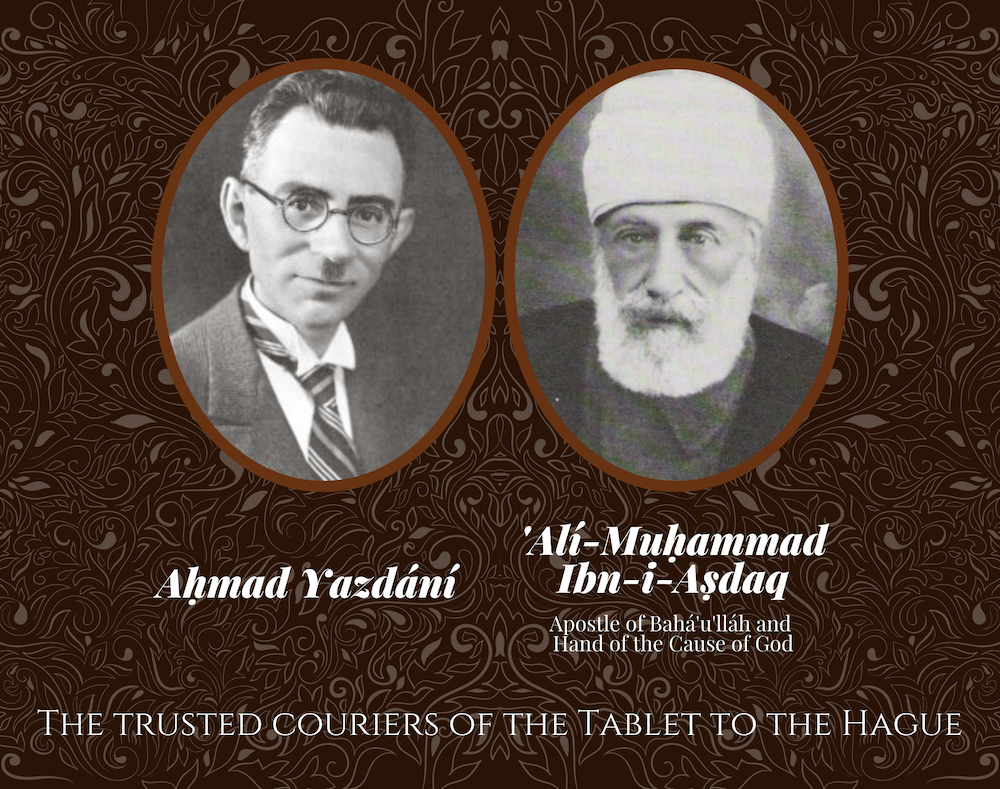
Early May 1920: Aḥmad Yazdání and 'Alí-Muḥammad Ibn-i-Aṣdaq arrive from Persia and have a brief stay in the Holy Land, during which ‘Abdu'l-Bahá gives them instructions, including relying on divine assistance and turning their thoughts to the Abhá Kingdom if they are asked to speak. The two and the two men begin their journey from the Holy Land to the Netherlands in early May 1920. For the step-by-step very detailed account of their adventures and travels, including an interactive map, please refer to "The Journey of ‘Abdu'l-Bahá's Tablet to the Hague."

22 May 1920
Aḥmad Yazdání and 'Alí-Muḥammad Ibn-i-Aṣdaq finally arrive in The Hague and stay at a hotel during the Pentecost holiday.
27 May 1920
After the holiday, Aḥmad Yazdání and 'Alí-Muḥammad Ibn-i-Aṣdaq are able to deliver 'Abdu'l-Bahá's Tablet to the Hague to the secretariat office of the Executive Committee of the Central Organization for a Durable Peace. Aḥmad Yazdání and 'Alí-Muḥammad Ibn-i-Aṣdaq are disappointed when they learn the Central Organization has effectively been dissolved since the establishment of the League of Nations in Geneva.
12 - 13 June 1920
The Executive Committee delivers its answer asking for further details on what Bahá'ís plan to do in order to bring about world peace, and Aḥmad Yazdání forwards it to 'Abdu'l-Bahá.
27 May - August 1920
Aḥmad Yazdání, a fluent Esperanto-speaker uses the next five weeks they have in the Netherlands to proclaim the Faith in a country where there is, at the time, only two resident Bahá'ís, George and Anna Enzlin, of Blaricum. Yazdání gives talks in various public and private meetings in six Dutch cities, and several newspaper articles are printed about the Bahá'í Faith during this time.
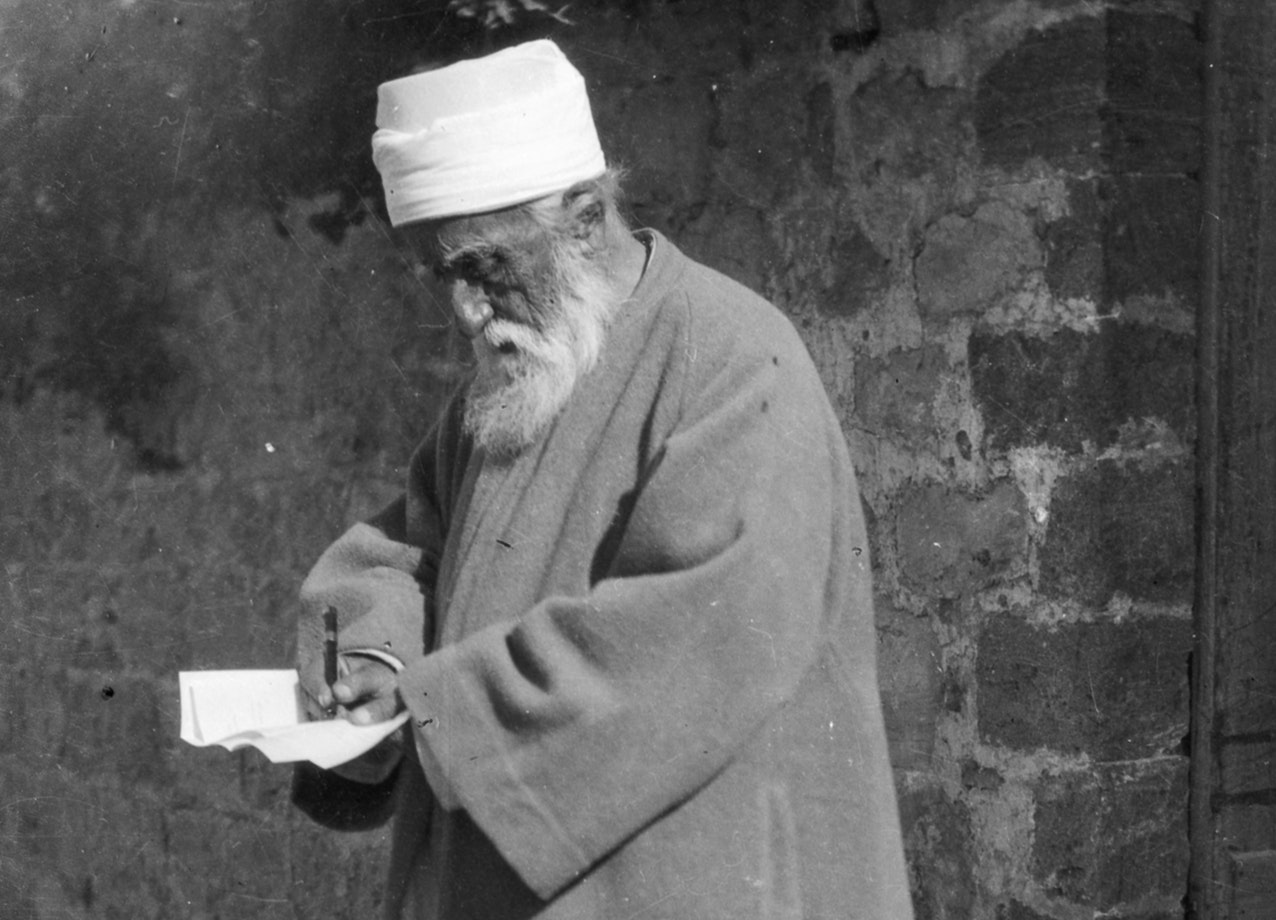
‘Abdu'l-Bahá writing in the Holy Land circa 1920. Bahá'í Media Bank.

1 July 1920
When ‘Abdu'l-Bahá receives Aḥmad Yazdání's June 13, 1920 cover letter enclosing the response from the Executive Committee of the Central Organization for a Durable Peace, the Master immediately responds, revealing the Second Tablet to the Hague. In this Tablet, nearly one-tenth of the length of the First Tablet to the Hague, ‘Abdu’l-Baha returns to the idea of the importance of religious faith to the establishment of peace, explaining that His “desire for peace is not derived merely from the intellect: It is a matter of religious belief and one of the eternal foundations of the Faith of God.” In this Tablet, ‘Abdu'l-Bahá also acknowledges that even if the "the benefits of universal peace are recognized amongst the people, and likewise the harmful effects of war are clear and manifest to all" peace cannot be attained with knowledge alone, but a "power of implementation is needed to establish it throughout the world." This power of implementation ‘Abdu'l-Bahá suggests is the awakening of conscience, so that souls may "feel compelled to evince a goodly character."
17 July 1920
‘Abdu'l-Bahá writes to Aḥmad Yazdání and tells him not to be disappointed about the disappointing meeting in The Hague. He has planted the seed, and He must now put his trust in God
1 August 1920
The First Tablet to the Hague is published in Star of the West
2 - 6 August 1920
Aḥmad Yazdání and 'Alí-Muḥammad Ibn-i-Aṣdaq receive 'Abdu'l-Bahá'ssecond Tablet to the Hague in answer to the letter of the Executive Committee and hand-deliver it to the secretary's office. This is their last contact with the Central Organization for a Durable Peace.
19 January 1921
The Second Tablet to the Hague is published in Star of the West
For more information on the Tablets to the Hague, two of ‘Abdu'l-Bahá most important Tablets, please read the beautiful photo chronology created by the National Spiritual Assembly of the Bahá'ís of the Netherlands, entitled "The Journey of ‘Abdu'l-Bahá's Tablet to the Hague" by clicking on the image below:
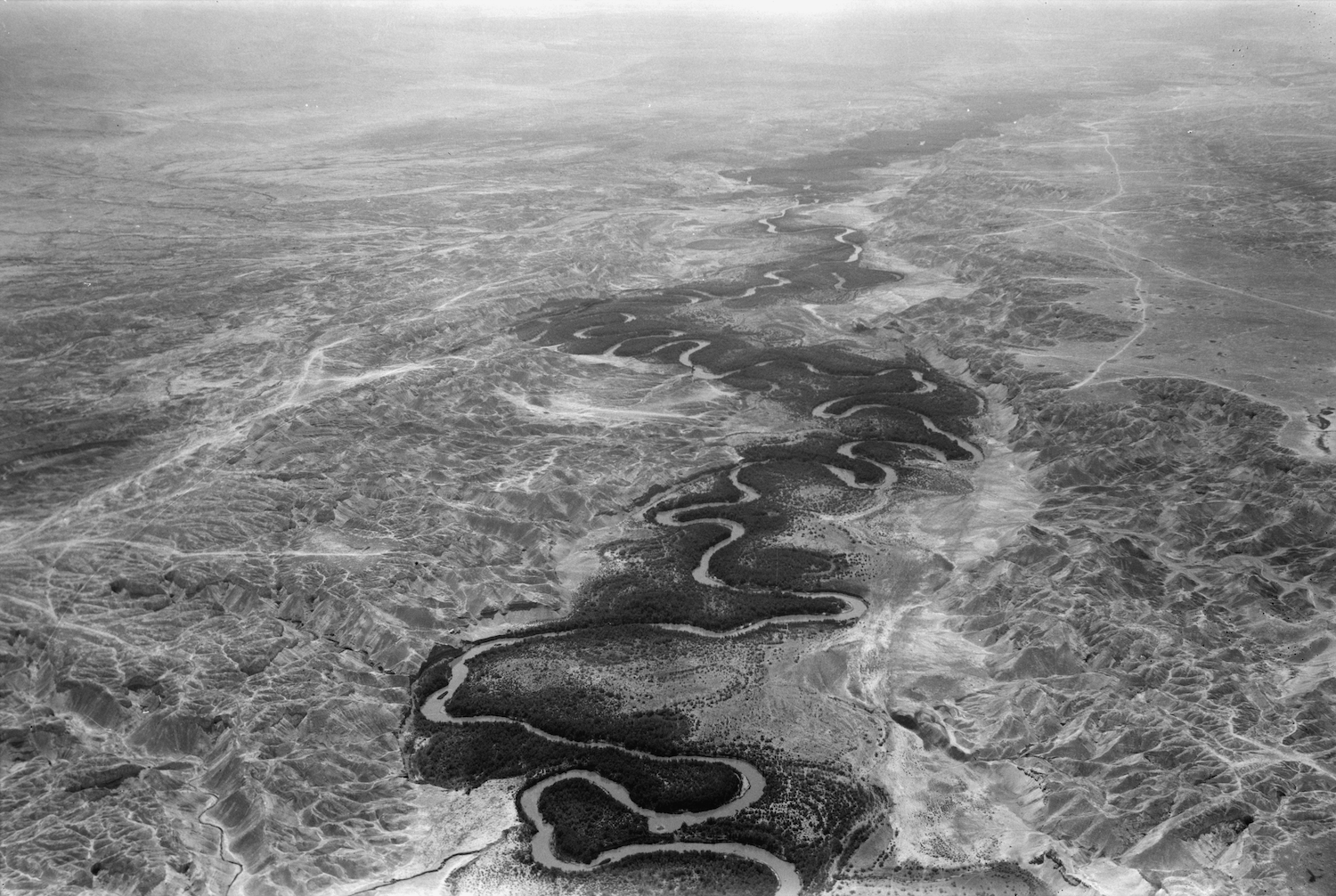
It is unexpected to be able to illustrate this wonderful prayer by 'Abdu'l-Bahá so literally. The Jordan Valley section that follows the southern meanderings of the Jordan River from the Sea of Galilee to the Dead Sea is known as The Ghor, or Al-Ghawr in Arabic. This is the valley 'Abdu'l-Bahá speaks of in the prayer below, and the valley pictured in this stunning image above. 'Adasiyyíh sits at the confluence of the Jordan and Yarmuk rivers as they flow south, and is therefore located in the valley known as Al-Ghawr, or "Ghawr" as 'Abdu'l-Bahá terms it. Source: Library of Congress. October 1931 aerial photograph of the Jordan river and valley, flying southward.
We have recently come across a Persian prayer of ‘Abdu'l-Bahá for the Bahá’ís of ‘Adasíyyih. Below is a provisional translation by Adib Masumian, and while it is not an authorized rendering produced under the auspices of the World Center, they did review this provisional rendering and approve it for inclusion in this chronology.
Revealed in January 1921 for the friends in 'Adasíyyih, this beautiful and moving prayer by 'Abdu'l-Bahá concludes the various chapters in the beautiful story of 'Adasíyyih and the other Bahá'í farming villages that began 20 years previously, in 1901.
‘Adasíyyih
To be recited by the friends
He is the All-Glorious
O Thou kind Lord, Thou Who art independent of all things! These servants of Thine traversed mountains and deserts, and crossed plains and seas, till they reached their desired destination, and now they have entered Ghawr. [1] No haven or refuge do we have but Thee; none other do we wish to render us aid and answer our cries. Admit us into the shelter of Thy support, and protect us from faltering and wavering.
O divine Providence! The tests are intense, the trials without end. Unite us, make us one, that we may take one another in our embrace—that we may follow Thy Path, commune with Thee, and seek Thy good-pleasure.
—‘Abdu’l-Bahá ‘Abbás
6 Jamádíyu’l-Úlá 1339 A.H.
[16 January 1921]
Haifa
[1] A region of the Jordan Valley near Lake Tiberias.
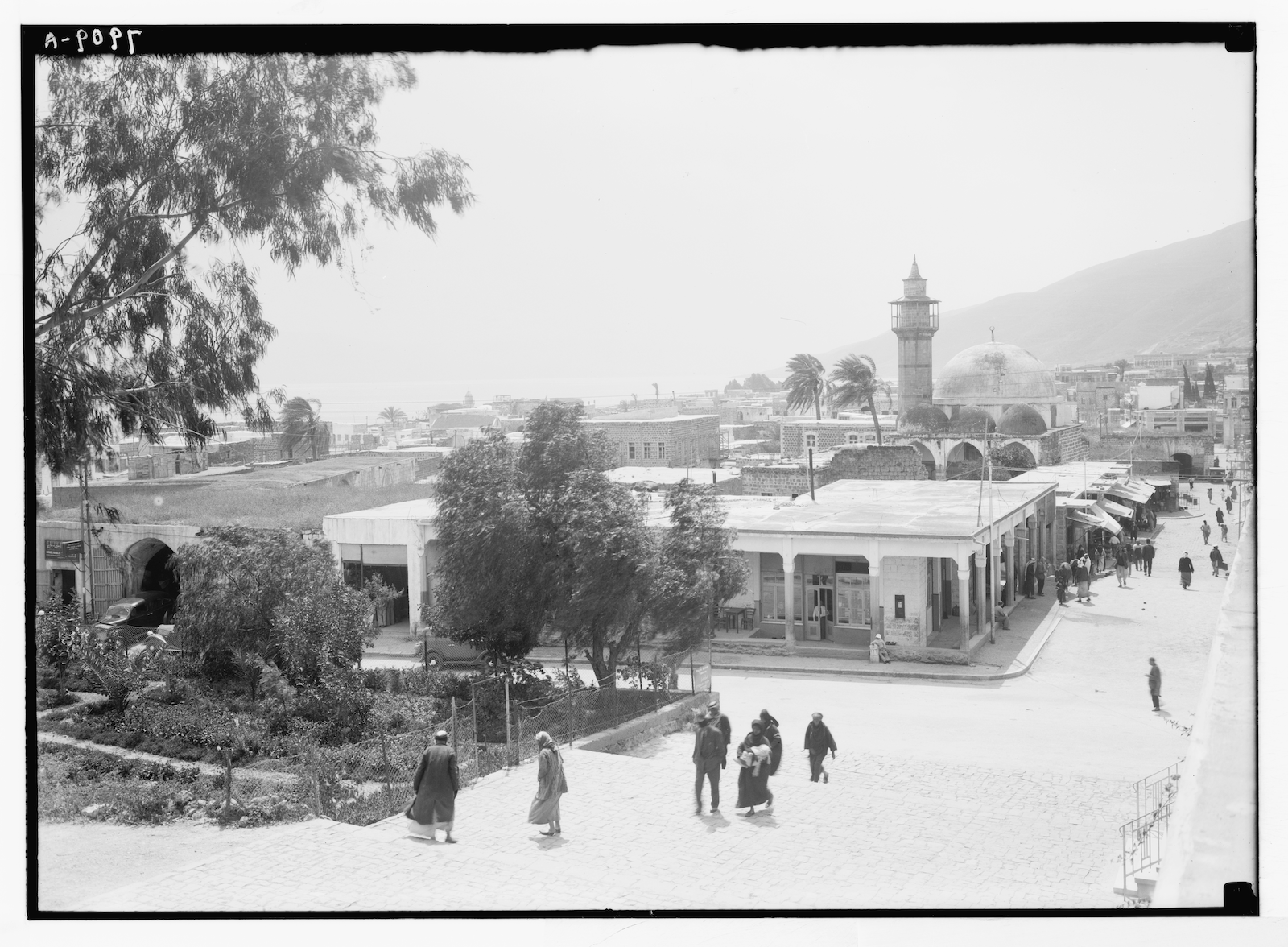
A view of Tiberias from the Tiberias Hotel, the exact hotel ‘Abdu'l-Bahá stays in during His last visit to the lakeside city, photograph circa 1934-1939). Library of Congress.
On March 3, 1921, ‘Abdu’l-Bahá leaves Haifa for Tiberias, in order to make arrangements for the protection of the Bahá’í farmers in the area. The farmers have been attacked by bandits who steal their crops and terrorize the population. We have no details on this aspect of 'Abdu'l-Bahá's trip to Tiberias, but this visit is very special for a different reason. Among probably a much larger number of pilgrims He receives while He is staying in Tiberias, two encounters are deeply significant, each in their own way, given that ‘Abdu'l-Bahá's passing is only a short eight months away. All of these are from Earl Redman's masterful book, Visiting ‘Abdu’l-Baha Volume 2: The Final Years, 1913–1921 and are very summarized version of Mr. Redman's wonderful accounts.
‘Abdu'l-Bahá travels to Tiberias with a pilgrim couple, Mountfort and Adele Mills. When He arrives, He rents a room on the top floor of the Tiberias Hotel, overlooking the Sea of Galilee. Speaking of the spirituality of their surroundings, 'Abdu'l-Bahá points to the lake and tells His companions about Jesus Christ, pointing to a church near the shore:
It was just there that His Holiness met Peter and others and asked what they were doing. They answered, “Fishing,” and Jesus replied, “Throw away your nets and follow me. I will make you fishers of men.”
A few days later, Mason and Will Remey arrive in Tiberias, and Mason Remey, at long last, has his private interview with 'Abdu'l-Bahá. Interestingly, given Mason Remey’s future violation of the Covenant, 'Abdu'l-Bahá speaks at length and emphatically against Covenant-breakers, and says that all of the American Bahá’í community’s problems stemmed from Covenant-breaking, naming Ibrahim Kheiralla and Ameen Fareed. Then, 'Abdu'l-Bahá says:
It is of no importance. These violations cannot achieve any results. They cannot attract nor hold any souls. They simply poison some souls and cause them to wither. But it is temporary. In a short time you will see no trace will be left of them. Observe the life of Ibrahim (Kheiralla), how he was, and how he is. They themselves and their damage to the Cause are like the foam of the surf of the sea – ephemeral. I have adopted you as my own son. You have to appreciate this favour very much indeed. One should see that you are living according to the requirements of this sonship. You should be aware of your responsibilities. At present take a new spirit to the German friends.
To Mason Remey’s ego-blinded vision, 'Abdu'l-Bahá’s words are praise of his steadfastness, and he fails to see the caution laced inside the Master’s words.
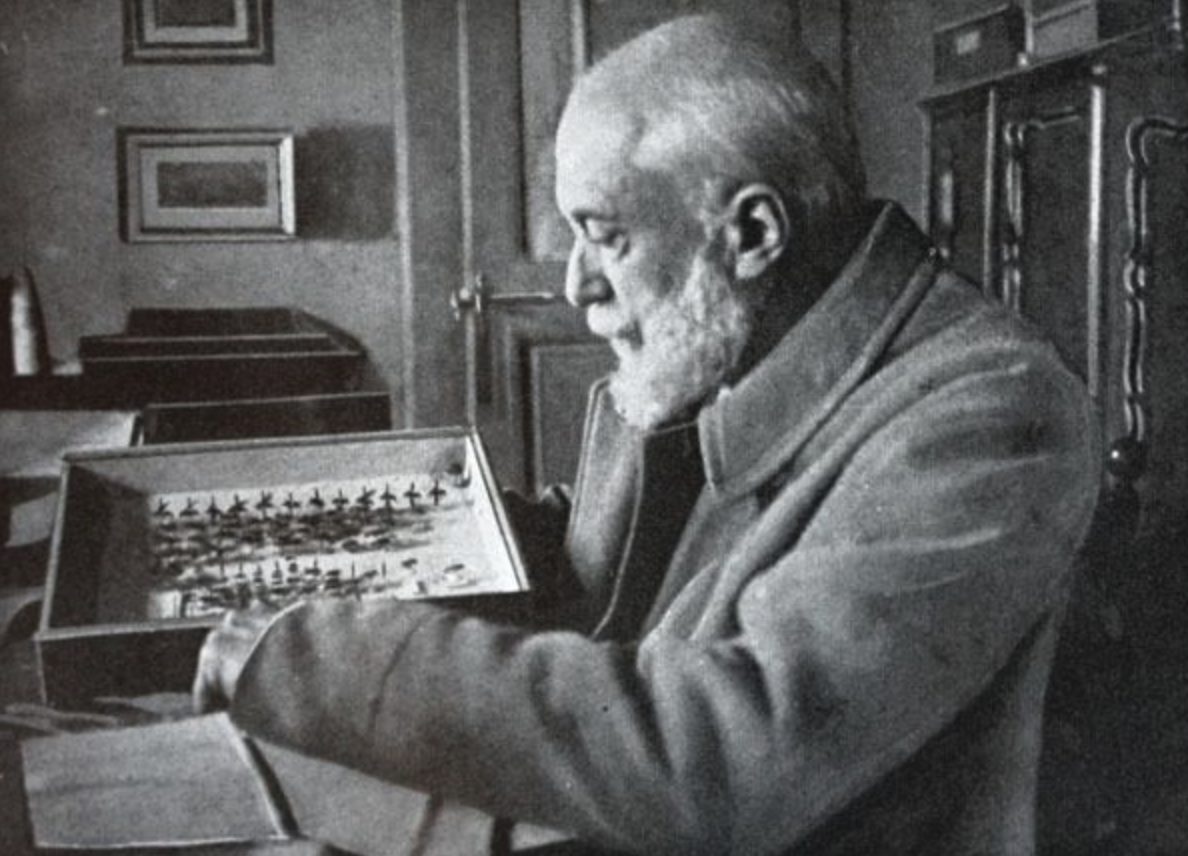
Dr. Forel, working with insects. Source: Alchetron.
Dr. Auguste Forel
Auguste-Henri Forel, is a Swiss neuroanatomist, psychiatrist, and entomologist, distinguishing himself as a true pioneer in every field he took interest in. Dr. Forel is known for his investigations of brain structure and widely considered to be a a co-founder of neuron theory. In 1889 Dr. Forel founded an institute at Zürich for the medical treatment of alcoholism, and worked throughout his career to prevent the disease. When he retired, Dr. Forel dedicated the rest of his life to social reform…and the study of the psychology of ants.
“Religion of Social Good”
Dr. Forel's ideas about religion evolve over several stages until he publishes, in December 1917, what he considers among his most important work, a book entitled “Religion of Social Good.” Which he later elaborates into a new concept of religion he terms “Scientific Religion of Social Good.”
Discovery of the Bahá'í Faith
In the winter months of 1920-1921, Dr. Forel has his first encounter with the Bahá'í Faith, when he spends some months at the home of his daughter, Martha, and her husband, Arthur Brauns, who is a Bahá'í.
28 December 1920 letter
Dr. Forel opens his letter by asking 'Abdu'l-Bahá if indeed he wrote "wonderful letters" to Wilhelm Herrigel, asserting that if they do date from 1910, "I am quite astonished at the prophetic clarity of your vision." Dr. Forel then launches into a long letter essentially about belief systems where he clearly lays out all the tenets of the Bahá'í Faith which deviate from his own beliefs, such as issues concerning materialist philosophers, consciousness, will power, whether his agnosticism is compatible with being a Bahá'í, and other questions.
“one of the most weighty” tablets ever written by ‘Abdu’l-Bahá
Dr. Forel only receives ‘Abdu'l-Bahá's "long and interesting" Tablet in March 1922, three months after ‘Abdu'l-Bahá has passed away. It is enclosed with a kind and thoughtful letter from Shoghi Effendi dated February 27, 1922. In his letter, Shoghi Effendi tells Forel "The Bahá'ís the world over will be delighted to have copies of 'Abdu'l-Bahá's answer to your letter circulated among them as it is unique in many respects and much appreciated in its nature and comprehensiveness." Shoghi Effendi will later refer to the "Tablet to Dr. Auguste Forel" as "one of the most weighty the Master ever wrote" in God Passes By.
The Tablet to Dr. Auguste Forel
‘Abdu'l-Bahá responds to Dr. Forel's two-page letter with a nearly-4,000 word Tablet in Persian He reveals on September 21, 1921, just two months before His passing. In this Tablet ‘Abdu’l-Bahá praises Forel as a “revered personage, lover of truth…” ‘Abdu'l-Bahá also delineates in detail the various kingdoms, mineral, vegetable, animal, and the reality of man, and touches upon electrical energy, schools of philosophy.
But ‘Abdu'l-Bahá truly shines in his explanation of the relationship between the mental faculties and the soul, drawing a powerful parallel between the rays of the sun and the sun. ‘Abdu'l-Bahá explains to Forel that even if the mind loses its capacity to reason, the power of the soul continue to exist. And most importantly, 'Abdu’l-Bahá elaborates at very great length, and to a profound degree, on the question of Divinity, something Forel had been quite disillusioned and discouraged about throughout his life, never finding a satisfactory answer to the question.
The entire Tablet is a work of perfection, so profound and knowledgeable in its argumentation, it is perhaps the crowning achievement of ‘Abdu'l-Bahá's epistolary life and a magnificent written sample of the emanations of His matchless mind. At the end of His life, ‘Abdu'l-Bahá has written more than THIRTY THOUSAND TABLETS. And this one is among the last. His total mastery of scientific and spiritual discourse shines resplendent in this Tablet.
"I am a Bahá'í"
To his credit, Dr. Forel never waited for the reply from ‘Abdu'l-Bahá. He decided on his own that the Bahá'í Faith was not in conflict with his own beliefs and identifies himself as a Bahá'í openly and enthusiastically a few months later, even amending his will in August 1921 with this sentence:
This is the real religion of ‘Social Welfare’ without dogmas or priests, binding together all men of this small terrestrial globe of ours. I have become a Bahá’í. May this religion live and prosper for the good of humanity! This is my most ardent desire.
From the time Dr. Forel embraces the Bahá'í Faith, he proclaims the Faith to many, in private addresses or in public talks. His daughter also becomes a Bahá'í and the Faith becomes known in scientific circles where Dr. Forel is highly respected. He gives regular Sunday talks about Bahá'u'lláh's message in his beautiful nine-sided gazebo overlooking the Lake of Geneva. Perhaps Dr. Forel's most profound testament to the Faith he so loved is one Shoghi Effendi quotes in God Passes By: “The Bahá’í Movement for the oneness of mankind is, in my estimation, the greatest movement today working for universal peace and brotherhood.” Dr. Forel taught the Faith until his last breath: the last night of his life in 1931, he was teaching his gardeners about the Bahá'í Faith.
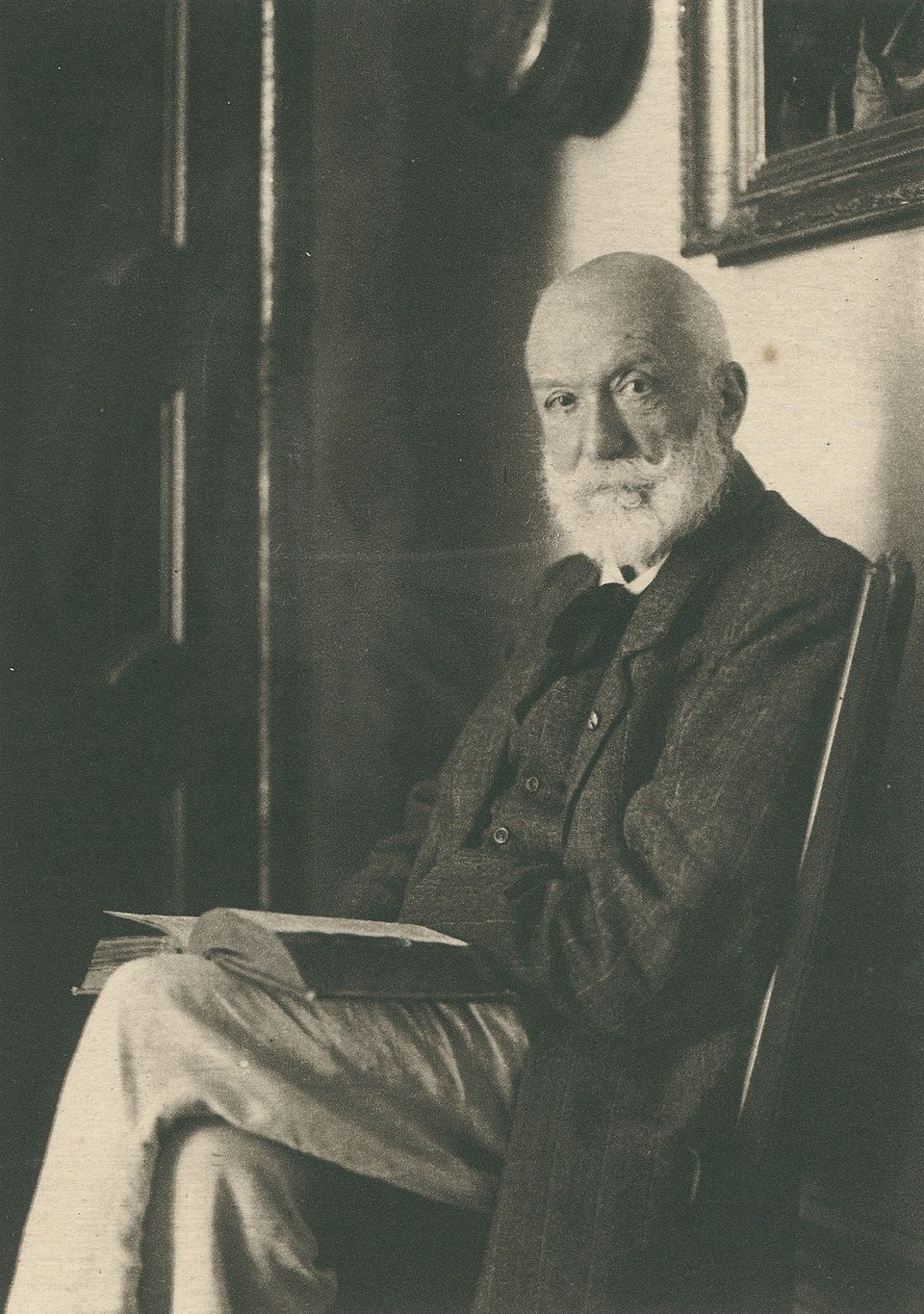
Dr. Auguste Forel in 1900, 21 years before he received the Tablet from 'Abdu'l-Bahá. Source: Wikimedia Commons.
‘Abdu’l‑Bahá’s Tablet to Dr. Forel
Original Persian text first published Cairo 1922. This translation taken from The Bahá’í World, Vol. XV, pp. 37–43.
To read the original on the Bahá'í Reference Library Website, click here.
O revered personage, lover of truth! Thy letter dated 28 July 1921 hath been received. The contents thereof were most pleasing and indicated that, praised be the Lord, thou art as yet young, and searchest after truth, that thy power of thought is strong and the discoveries of thy mind manifest.
Numerous copies of the epistle I had written to Dr. Fisher1 are spread far and wide and every one knoweth that it hath been revealed in the year 1910. Apart from this, numerous epistles have been written before the war upon the same theme, and reference, too, hath been made to these questions in the Journal of the San Francisco University, the date whereof is known beyond any doubt.2 In like manner have the philosophers of broad vision praised highly the discourse eloquently delivered in the above-named University.3 A copy of that paper is thus enclosed and forwarded. Thy works are no doubt of great benefit, and if published, send us a copy of each.
By materialists, whose belief with regard to Divinity hath been explained, is not meant philosophers in general, but rather that group of materialists of narrow vision who worship that which is sensed, who depend upon the five senses only, and whose criterion of knowledge is limited to that which can be perceived by the senses. All that can be sensed is to them real, whilst whatever falleth not under the power of the senses is either unreal or doubtful. The existence of the Deity they regard as wholly doubtful.
It is as thou hast written, not philosophers in general but narrow-minded materialists that are meant. As to deistic philosophers, such as Socrates, Plato and Aristotle, they are indeed worthy of esteem and of the highest praise, for they have rendered distinguished services to mankind. In like manner we regard the materialistic, accomplished, moderate philosophers, who have been of service (to mankind).
We regard knowledge and wisdom as the foundation of the progress of mankind, and extol philosophers who are endowed with broad vision. Peruse carefully the San Francisco University Journal that the truth may be revealed to thee.
Now concerning mental faculties, they are in truth of the inherent properties of the soul, even as the radiation of light is the essential property of the sun. The rays of the sun are renewed but the sun itself is ever the same and unchanged. Consider how the human intellect develops and weakens, and may at times come to naught, whereas the soul changeth not. For the mind to manifest itself, the human body must be whole; and a sound mind cannot be but in a sound body, whereas the soul dependeth not upon the body. It is through the power of the soul that the mind comprehendeth, imagineth and exerteth its influence, whilst the soul is a power that is free. The mind comprehendeth the abstract by the aid of the concrete, but the soul hath limitless manifestations of its own. The mind is circumscribed, the soul limitless. It is by the aid of such senses as those of sight, hearing, taste, smell and touch, that the mind comprehendeth, whereas the soul is free from all agencies. The soul as thou observest, whether it be in sleep or waking, is in motion and ever active. Possibly it may, whilst in a dream, unravel an intricate problem, incapable of solution in the waking state. The mind, moreover, understandeth not whilst the senses have ceased to function, and in the embryonic stage and in early infancy the reasoning power is totally absent, whereas the soul is ever endowed with full strength. In short, the proofs are many that go to show that despite the loss of reason, the power of the soul would still continue to exist. The spirit however possesseth various grades and stations.
As to the existence of spirit in the mineral: it is indubitable that minerals are endowed with a spirit and life according to the requirements of that stage. This unknown secret, too, hath become known unto the materialists who now maintain that all beings are endowed with life, even as He saith in the Qur’án, ‘All things are living’.
In the vegetable world, too, there is the power of growth, and that power of growth is the spirit. In the animal world there is the sense of feeling, but in the human world there is an all-embracing power. In all the preceding stages the power of reason is absent, but the soul existeth and revealeth itself. The sense of feeling understandeth not the soul, whereas the reasoning power of the mind proveth the existence thereof.
In like manner the mind proveth the existence of an unseen Reality that embraceth all beings, and that existeth and revealeth itself in all stages, the essence whereof is beyond the grasp of the mind. Thus the mineral world understandeth neither the nature nor the perfections of the vegetable world; the vegetable world understandeth not the nature of the animal world, neither the animal world the nature of the reality of man that discovereth and embraceth all things.
The animal is the captive of nature and cannot transgress the rules and laws thereof. In man, however, there is a discovering power that transcendeth the world of nature and controlleth and interfereth with the laws thereof. For instance, all minerals, plants and animals are captives of nature. The sun itself with all its majesty is so subservient to nature that it hath no will of its own and cannot deviate a hair’s-breadth from the laws thereof. In like manner all other beings, whether of the mineral, the vegetable or the animal world, cannot deviate from the laws of nature, nay, all are the slaves thereof. Man, however, though in body the captive of nature is yet free in his mind and soul, and hath the mastery over nature.
Consider: according to the law of nature man liveth, moveth and hath his being on earth, yet his soul and mind interfere with the laws thereof, and even as the bird he flieth in the air, saileth speedily upon the seas and as the fish soundeth the deep and discovereth the things therein. Verily this is a grievous defeat inflicted upon the laws of nature.
So is the power of electrical energy: this unruly violent force that cleaveth mountains is yet imprisoned by man within a globe! This is manifestly interfering with the laws of nature. Likewise man discovereth those hidden secrets of nature that in conformity with the laws thereof must remain concealed, and transfereth them from the invisible plane to the visible. This, too, is interfering with the law of nature. In the same manner he discovereth the inherent properties of things that are the secrets of nature. Also he bringeth to light the past events that have been lost to memory, and foreseeth by his power of induction future happenings that are as yet unknown. Furthermore, communication and discovery are limited by the laws of nature to short distances, whereas man, through that inner power of his that discovereth the reality of all things, connecteth the East with the West. This, too, is interfering with the laws of nature. Similarly, according to the law of nature all shadows are fleeting, whereas man fixeth them upon the plate, and this, too, is interference with a law of nature. Ponder and reflect: all sciences, arts, crafts, inventions and discoveries, have been once the secrets of nature and in conformity with the laws thereof must remain hidden; yet man through his discovering power interfereth with the laws of nature and transfereth these hidden secrets from the invisible to the visible plane. This again is interfering with the laws of nature.
In fine, that inner faculty in man, unseen of the eye, wresteth the sword from the hands of nature, and giveth it a grievous blow. All other beings, however great, are bereft of such perfections. Man hath the powers of will and understanding, but nature hath them not. Nature is constrained, man is free. Nature is bereft of understanding, man understandeth. Nature is unaware of past events, but man is aware of them. Nature forecasteth not the future; man by his discerning power seeth that which is to come. Nature hath no consciousness of itself, man knoweth about all things.
Should any one suppose that man is but a part of the world of nature, and he being endowed with these perfections, these being but manifestations of the world of nature, and thus nature is the originator of these perfections and is not deprived therefrom, to him we make reply and say: the part dependeth upon the whole; the part cannot possess perfections whereof the whole is deprived.
By nature is meant those inherent properties and necessary relations derived from the realities of things. And these realities of things, though in the utmost diversity, are yet intimately connected one with the other. For these diverse realities an all-unifying agency is needed that shall link them all one to the other. For instance, the various organs and members, the parts and elements, that constitute the body of man, though at variance, are yet all connected one with the other by that all-unifying agency known as the human soul, that causeth them to function in perfect harmony and with absolute regularity, thus making the continuation of life possible. The human body, however, is utterly unconscious of that all-unifying agency, and yet acteth with regularity and dischargeth its functions according to its will.
Now concerning philosophers, they are of two schools. Thus Socrates the wise believed in the unity of God and the existence of the soul after death; as his opinion was contrary to that of the narrow-minded people of his time, that divine sage was poisoned by them. All divine philosophers and men of wisdom and understanding, when observing these endless beings, have considered that in this great and infinite universe all things end in the mineral kingdom, that the outcome of the mineral kingdom is the vegetable kingdom, the outcome of the vegetable kingdom is the animal kingdom and the outcome of the animal kingdom the world of man. The consummation of this limitless universe with all its grandeur and glory hath been man himself, who in this world of being toileth and suffereth for a time, with divers ills and pains, and ultimately disintegrates, leaving no trace and no fruit after him. Were it so, there is no doubt that this infinite universe with all its perfections has ended in sham and delusion with no result, no fruit, no permanence and no effect. It would be utterly without meaning. They were thus convinced that such is not the case, that this Great Workshop with all its power, its bewildering magnificence and endless perfections, cannot eventually come to naught. That still another life should exist is thus certain, and, just as the vegetable kingdom is unaware of the world of man, so we, too, know not of the Great Life hereafter that followeth the life of man here below. Our non-comprehension of that life, however, is no proof of its non-existence. The mineral world, for instance, is utterly unaware of the world of man and cannot comprehend it, but the ignorance of a thing is no proof of its non-existence. Numerous and conclusive proofs exist that go to show that this infinite world cannot end with this human life.
Now concerning the Essence of Divinity: in truth it is on no account determined by anything apart from its own nature, and can in no wise be comprehended. For whatsoever can be conceived by man is a reality that hath limitations and is not unlimited; it is circumscribed, not all-embracing. It can be comprehended by man, and is controlled by him. Similarly it is certain that all human conceptions are contingent, not absolute; that they have a mental existence, not a material one. Moreover, differentiation of stages in the contingent world is an obstacle to understanding. How then can the contingent conceive the Reality of the absolute? As previously mentioned, differentiation of stages in the contingent plane is an obstacle to understanding. Minerals, plants and animals are bereft of the mental faculties of man that discover the realities of all things, but man himself comprehendeth all the stages beneath him. Every superior stage comprehendeth that which is inferior and discovereth the reality thereof, but the inferior one is unaware of that which is superior and cannot comprehend it. Thus man cannot grasp the Essence of Divinity, but can, by his reasoning power, by observation, by his intuitive faculties and the revealing power of his faith, believe in God, discover the bounties of His Grace. He becometh certain that though the Divine Essence is unseen of the eye, and the existence of the Deity is intangible, yet conclusive spiritual proofs assert the existence of that unseen Reality. The Divine Essence as it is in itself is however beyond all description. For instance, the nature of ether is unknown, but that it existeth is certain by the effects it produceth, heat, light and electricity being the waves thereof. By these waves the existence of ether is thus proven. And as we consider the outpourings of Divine Grace we are assured of the existence of God. For instance, we observe that the existence of beings is conditioned upon the coming together of various elements and their non-existence upon the decomposition of their constituent elements. For decomposition causeth the dissociation of the various elements. Thus, as we observe the coming together of elements giveth rise to the existence of beings, and knowing that beings are infinite, they being the effect, how can the Cause be finite?
Now, formation is of three kinds and of three kinds only: accidental, necessary and voluntary. The coming together of the various constituent elements of beings cannot be accidental, for unto every effect there must be a cause. It cannot be compulsory, for then the formation must be an inherent property of the constituent parts and the inherent property of a thing can in no wise be dissociated from it, such as light that is the revealer of things, heat that causeth the expansion of elements and the solar rays which are the essential property of the sun. Thus under such circumstances the decomposition of any formation is impossible, for the inherent properties of a thing cannot be separated from it. The third formation remaineth and that is the voluntary one, that is, an unseen force described as the Ancient Power, causeth these elements to come together, every formation giving rise to a distinct being.
As to the attributes and perfections such as will, knowledge, power and other ancient attributes that we ascribe to that Divine Reality, these are the signs that reflect the existence of beings in the visible plane and not the absolute perfections of the Divine Essence that cannot be comprehended. For instance, as we consider created things we observe infinite perfections, and the created things being in the utmost regularity and perfection we infer that the Ancient Power on whom dependeth the existence of these beings, cannot be ignorant; thus we say He is All-Knowing. It is certain that it is not impotent, it must be then All-Powerful; it is not poor, it must be All-Possessing; it is not non-existent, it must be Ever-Living. The purpose is to show that these attributes and perfections that we recount for that Universal Reality are only in order to deny imperfections, rather than to assert the perfections that the human mind can conceive. Thus we say His attributes are unknowable.
In fine, that Universal Reality with all its qualities and attributes that we recount is holy and exalted above all minds and understandings. As we, however, reflect with broad minds upon this infinite universe, we observe that motion without a motive force, and an effect without a cause are both impossible; that every being hath come to exist under numerous influences and continually undergoeth reaction. These influences, too, are formed under the action of still other influences. For instance, plants grow and flourish through the outpourings of vernal showers, whilst the cloud itself is formed under various other agencies and these agencies in their turn are reacted upon by still other agencies. For example, plants and animals grow and develop under the influence of what the philosophers of our day designate as hydrogen and oxygen and are reacted upon by the effects of these two elements; and these in turn are formed under still other influences. The same can be said of other beings whether they affect other things or be affected. Such process of causation goes on, and to maintain that this process goes on indefinitely is manifestly absurd. Thus such a chain of causation must of necessity lead eventually to Him who is the Ever-Living, the All-Powerful, who is Self-Dependent and the Ultimate Cause. This Universal Reality cannot be sensed, it cannot be seen. It must be so of necessity, for it is All-Embracing, not circumscribed, and such attributes qualify the effect and not the cause.
And as we reflect, we observe that man is like unto a tiny organism contained within a fruit; this fruit hath developed out of the blossom, the blossom hath grown out of the tree, the tree is sustained by the sap, and the sap formed out of earth and water. How then can this tiny organism comprehend the nature of the garden, conceive of the gardener and comprehend his being? That is manifestly impossible. Should that organism understand and reflect, it would observe that this garden, this tree, this blossom, this fruit would in no wise have come to exist by themselves in such order and perfection. Similarly the wise and reflecting soul will know of a certainty that this infinite universe with all its grandeur and perfect order could not have come to exist by itself.
Similarly in the world of being there exist forces unseen of the eye, such as the force of ether previously mentioned, that cannot be sensed, that cannot be seen. However, from the effects it produceth, that is from its waves and vibrations, light, heat, electricity appear and are made evident. In like manner is the power of growth, of feeling, of understanding, of thought, of memory, of imagination and of discernment; all these inner faculties are unseen of the eye and cannot be sensed, yet all are evident by the effects they produce.
Now as to the infinite Power that knoweth no limitations; limitation itself proveth the existence of the unlimited, for the limited is known through the unlimited, just as weakness itself proveth the existence of power, ignorance the existence of knowledge, poverty the existence of wealth. Without wealth there would be no poverty, without knowledge no ignorance, without light no darkness. Darkness itself is a proof of the existence of light for darkness is the absence of light.
Now concerning nature, it is but the essential properties and the necessary relations inherent in the realities of things. And though these infinite realities are diverse in their character yet they are in the utmost harmony and closely connected together. As one’s vision is broadened and the matter observed carefully, it will be made certain that every reality is but an essential requisite of other realities. Thus to connect and harmonize these diverse and infinite realities an all-unifying Power is necessary, that every part of existent being may in perfect order discharge its own function. Consider the body of man, and let the part be an indication of the whole. Consider how these diverse parts and members of the human body are closely connected and harmoniously united one with the other. Every part is the essential requisite of all other parts and has a function by itself. It is the mind that is the all-unifying agency that so uniteth all the component parts one with the other that each dischargeth its specific function in perfect order, and thereby co-operation and reaction are made possible. All parts function under certain laws that are essential to existence. Should that all-unifying agency that directeth all these parts be harmed in any way there is no doubt that the constituent parts and members will cease functioning properly; and though that all-unifying agency in the temple of man be not sensed or seen and the reality thereof be unknown, yet by its effects it manifesteth itself with the greatest power.
Thus it hath been proven and made evident that these infinite beings in this wondrous universe will discharge their functions properly only when directed and controlled by that Universal Reality, so that order may be established in the world. For example, interaction and co-operation between the constituent parts of the human body are evident and indisputable, yet this does not suffice; an all-unifying agency is necessary that shall direct and control the component parts, so that these through interaction and co-operation may discharge in perfect order their necessary and respective functions.
You are well aware, praised be the Lord, that both interaction and co-operation are evident and proven amongst all beings, whether large or small. In the case of large bodies interaction is as manifest as the sun, whilst in the case of small bodies, though interaction be unknown, yet the part is an indication of the whole. All these interactions therefore are connected with that all-embracing power which is their pivot, their centre, their source and their motive power.
For instance, as we have observed, co-operation among the constituent parts of the human body is clearly established, and these parts and members render services unto all the component parts of the body. For instance, the hand, the foot, the eye, the ear, the mind, the imagination all help the various parts and members of the human body, but all these interactions are linked by an unseen, all-embracing power, that causeth these interactions to be produced with perfect regularity. This is the inner faculty of man, that is his spirit and his mind, both of which are invisible.
In like manner consider machinery and workshops and the interaction existing among the various component parts and sections, and how connected they are one with the other. All these relations and interactions, however, are connected with a central power which is their motive force, their pivot and their source. This central power is either the power of steam or the skill of the mastermind.
It hath therefore been made evident and proved that interaction, co-operation and interrelation amongst beings are under the direction and will of a motive Power which is the origin, the motive force and the pivot of all interactions in the universe.
Likewise every arrangement and formation that is not perfect in its order we designate as accidental, and that which is orderly, regular, perfect in its relations and every part of which is in its proper place and is the essential requisite of the other constituent parts, this we call a composition formed through will and knowledge. There is no doubt that these infinite beings and the association of these diverse elements arranged in countless forms must have proceeded from a Reality that could in no wise be bereft of will or understanding. This is clear and proven to the mind and no one can deny it. It is not meant, however, that that Universal Reality or the attributes thereof have been comprehended. Neither its Essence nor its true attributes hath any one comprehended. We maintain, however, that these infinite beings, these necessary relations, this perfect arrangement must of necessity have proceeded from a source that is not bereft of will and understanding, and this infinite composition cast into infinite forms must have been caused by an all-embracing Wisdom. This none can dispute save he that is obstinate and stubborn, and denieth the clear and unmistakable evidence, and becometh the object of the blessed Verse: ‘They are deaf, they are dumb, they are blind and shall return no more’.
Now regarding the question whether the faculties of the mind and the human soul are one and the same. These faculties are but the inherent properties of the soul, such as the power of imagination, of thought, of understanding; powers that are the essential requisites of the reality of man, even as the solar ray is the inherent property of the sun. The temple of man is like unto a mirror, his soul is as the sun, and his mental faculties even as the rays that emanate from that source of light. The ray may cease to fall upon the mirror, but it can in no wise be dissociated from the sun.
In short, the point is this, that the world of man is supernatural in its relation to the vegetable kingdom, though in reality it is not so. Relatively to the plant, the reality of man, his power of hearing and sight, are all supernatural, and for the plant to comprehend that reality and the nature of the powers of man’s mind is impossible. In like manner for man to comprehend the Divine Essence and the nature of the great Hereafter is in no wise possible. The merciful outpourings of that Divine Essence, however, are vouchsafed unto all beings and it is incumbent upon man to ponder in his heart upon the effusions of the Divine Grace, the soul being counted as one, rather than upon the Divine Essence itself. This is the utmost limit for human understanding. As it hath previously been mentioned, these attributes and perfections that we recount of the Divine Essence, these we have derived from the existence and observation of beings, and it is not that we have comprehended the essence and perfection of God. When we say that the Divine Essence understandeth and is free, we do not mean that we have discovered the Divine Will and Purpose, but rather that we have acquired knowledge of them through the Divine Grace revealed and manifested in the realities of things.
Now concerning our social principles, namely the teachings of His Holiness Bahá’u’lláh spread far and wide fifty years ago, they verily comprehend all other teachings. It is clear and evident that without these teachings progress and advancement for mankind are in no wise possible. Every community in the world findeth in these Divine Teachings the realization of its highest aspirations. These teachings are even as the tree that beareth the best fruits of all trees. Philosophers, for instance, find in these heavenly teachings the most perfect solution of their social problems, and similarly a true and noble exposition of matters that pertain to philosophical questions. In like manner men of faith behold the reality of religion manifestly revealed in these heavenly teachings, and clearly and conclusively prove them to be the real and true remedy for the ills and infirmities of all mankind. Should these sublime teachings be diffused, mankind shall be freed from all perils, from all chronic ills and sicknesses. In like manner are the Bahá’í economic principles the embodiment of the highest aspirations of all wage-earning classes and of economists of various schools.
In short, all sections and parties have their aspirations realized in the teachings of Bahá’u’lláh. As these teachings are declared in churches, in mosques and in other places of worship, whether those of the followers of Buddha or of Confucius, in political circles or amongst materialists, all shall bear witness that these teachings bestow a fresh life upon mankind and constitute the immediate remedy for all the ills of social life. None can find fault with any of these teachings, nay rather, once declared they will all be acclaimed, and all will confess their vital necessity, exclaiming, ‘Verily this is the truth and naught is there beside the truth but manifest error.’
In conclusion, these few words are written, and unto everyone they will be a clear and conclusive evidence of the truth. Ponder them in thine heart. The will of every sovereign prevaileth during his reign, the will of every philosopher findeth expression in a handful of disciples during his lifetime, but the Power of the Holy Spirit shineth radiantly in the realities of the Messengers of God, and strengtheneth Their will in such wise as to influence a great nation for thousands of years and to regenerate the human soul and revive mankind. Consider how great is this power! It is an extraordinary Power, an all-sufficient proof of the truth of the mission of the Prophets of God, and a conclusive evidence of the power of Divine Inspiration.
The Glory of Glories rest upon thee.
Haifa, 21 September 1921.
Note 1: Based on historical documents, it is possible that “Dr. Fisher” refers to Dr. Josephine Fallscheer.
Note 2: ‘Abdu’l‑Bahá refers to His talk at Stanford University, Palo Alto, California, in 1912, which was published in the local newspaper and is also included in the collection of His talks in America, entitled The Promulgation of Universal Peace.
Note 3: There ‘Abdu’l‑Bahá distinguishes the materialistic and empirical philosophy of the modern West from the standard rationalistic philosophy of the Greeks and Persians, and highlights the difference between theories of the essence of nature and of the origin of man.
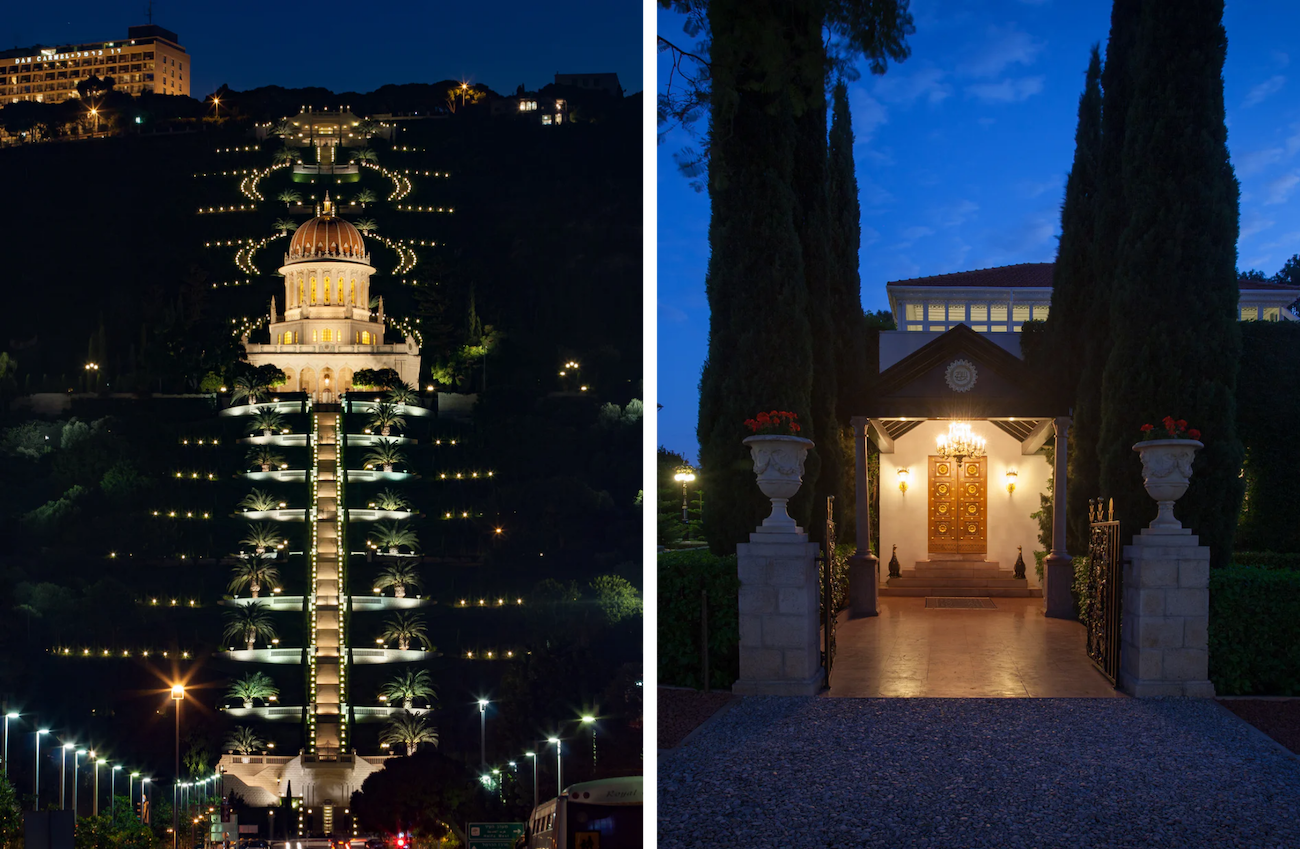
The Shrine of the Báb and the Shrine of Bahá'u'lláh, magnificently illuminated at night, work that began in the last two months of ‘Abdu'l-Bahá's ministry. Bahá'í Media Bank.
In September 1921, Curtis Kelsey arrives in the Holy Land to install three electrical generators, which Roy Wilhelm had offered to ‘Abdu'l-Bahá. During the last two months of ‘Abdu'l-Bahá's life, He who so loved light, Curtis Kelsey works tirelessly to bring electrical light to The Shrine of the Báb, the Shrine of Bahá'u'lláh and the house of the Master, installing one generator in each location, although his work is only completed in March 1922, three months after ‘Abdu'l-Bahá's passing. When Curtis Kelsey works at Bahjí, he finds any excuse he can to come to Haifa, where he can see ‘Abdu'l-Bahá. when he is working at the Shrine of the Báb, each day, Curtis has lunch with ‘Abdu'l-Bahá and Fujita. All three deeply cherish their lunchtimes together and even develop the most adorable routine. Every day, Curtis and Fujita hide Fujita's brown cat in the kitchen before ‘Abdu'l-Bahá arrives. And every day, the Master says "Let the cat out." As soon as Fujita frees the cat, the little animal races to ‘Abdu'l-Bahá to be stroked and fed. Curtis is amazed that ‘Abdu'l-Bahá enjoys their little ritual as much as he and Fujita do. One of His daughters, during this time, asks the Master why He always eats lunch at the Pilgrim House instead of at home, where He could rest. ‘Abdu'l-Bahá tells her: "I like to eat with my friends." It is infinitely comforting to think of ‘Abdu'l-Bahá having such joyful moments during these last few months of His extraordinary life.
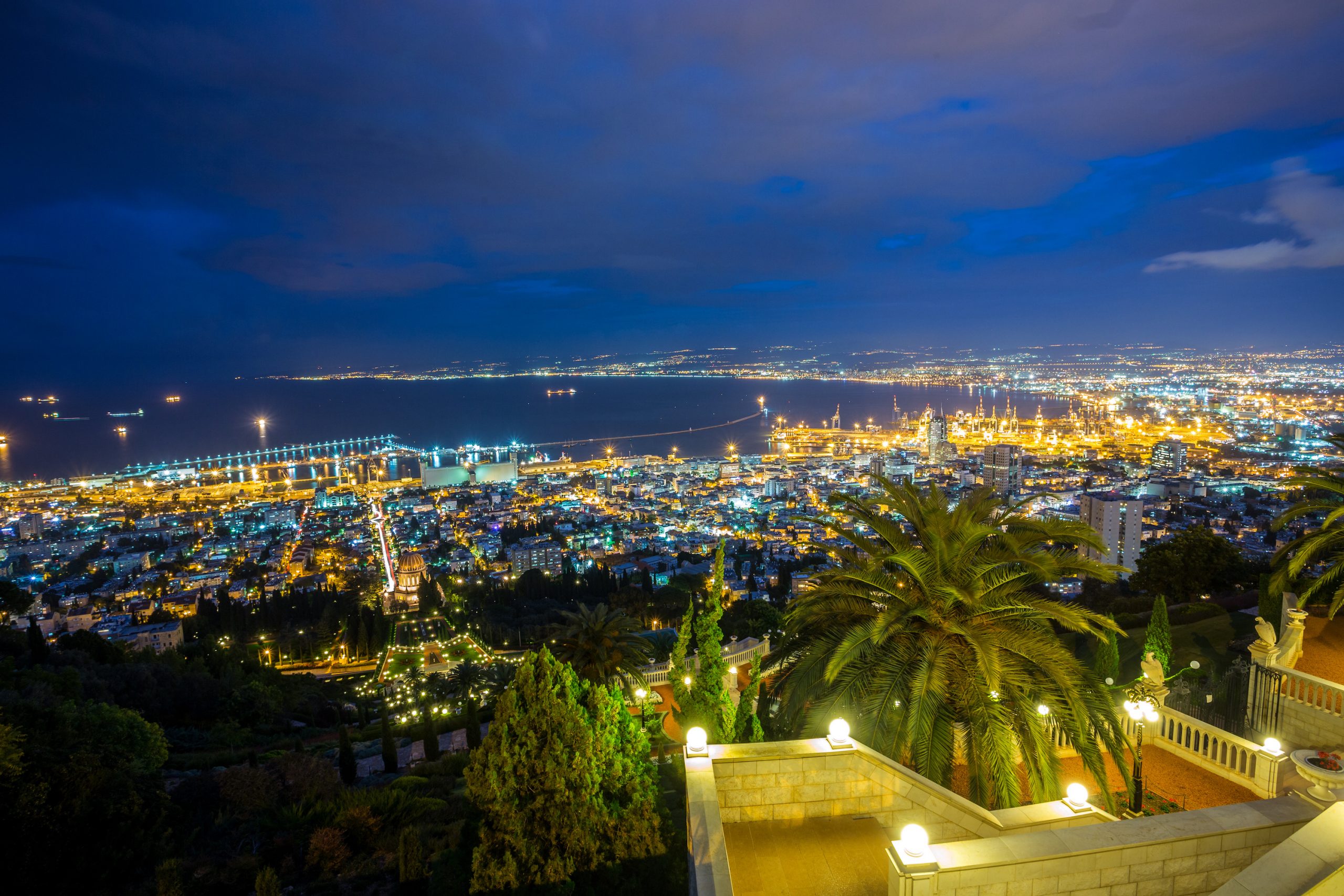
Panorama of Haifa and 'Akká at night from the Bahá'í Gardens. Image purchased and used according to standard license: © malajscy - stock.adobe.com.
John and Louise Bosch arrive on November 13, 1921 and are among the very last pilgrims ever to come to the Holy Land during the ministry of ‘Abdu'l-Bahá and will be present during His Ascension. One day, during their pilgrimage, they are standing at the top of Mount Carmel looking at the magnificent view before them, the arc of the Mediterranean sea between Haifa and 'Akká, and ‘Abdu'l-Bahá gives them a great gift. Less than two weeks before His passing, Louise Bosch records the Master vision of what will become the Bahá'í World Centre in the very distant future. ‘Abdu'l-Bahá's vision is magnificent and interestingly, includes several references to electricity, which ‘Abdu'l-Bahá has Himself agreed to begin installing in the Holy Places. One of His last great acts will be to take practical steps in making this grand vision a reality. Here is ‘Abdu'l-Bahá's vision:
In the future the distance between Haifa and 'Akká will be built up and the two cities will join and clasp hands, becoming the two terminal sections of one mighty metropolis. As I look now over this scene I see so clearly that it will become one of the first emporiums of the world: this great semi-circular bay will be transformed into the finest harbour wherein ships from all nations will seek shelter and refuge; the great vessels of all the people will come to this port, bringing on their decks thousands and thousands of men and women from every part of the globe; the mountains and the plains will be dotted with the most modern buildings and palaces; industries will be established and various institutions of a philanthropic nature will be founded; the flowers of civilization and culture from all nations will be brought here to blend their fragrances together and blaze the way for the brotherhood of man; wonderful gardens, orchards, groves and parks will be laid out on all sides; at night the great city will be lighted by electricity; the entire harbour from Acca to Haifa will be one path of illumination; powerful searchlights will be placed on both sides of Mount Carmel to guide the steamers, and Mount Carmel itself from top to bottom will be submerged in a sea of lights.
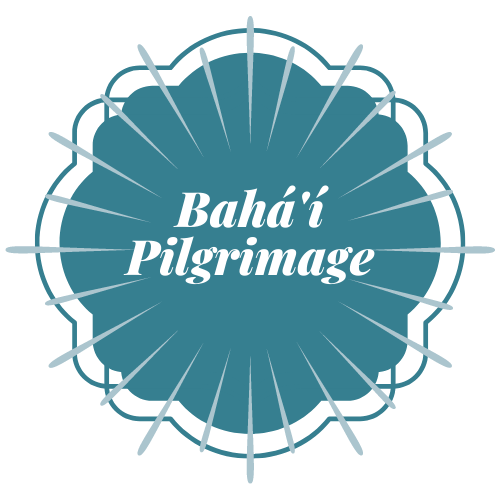
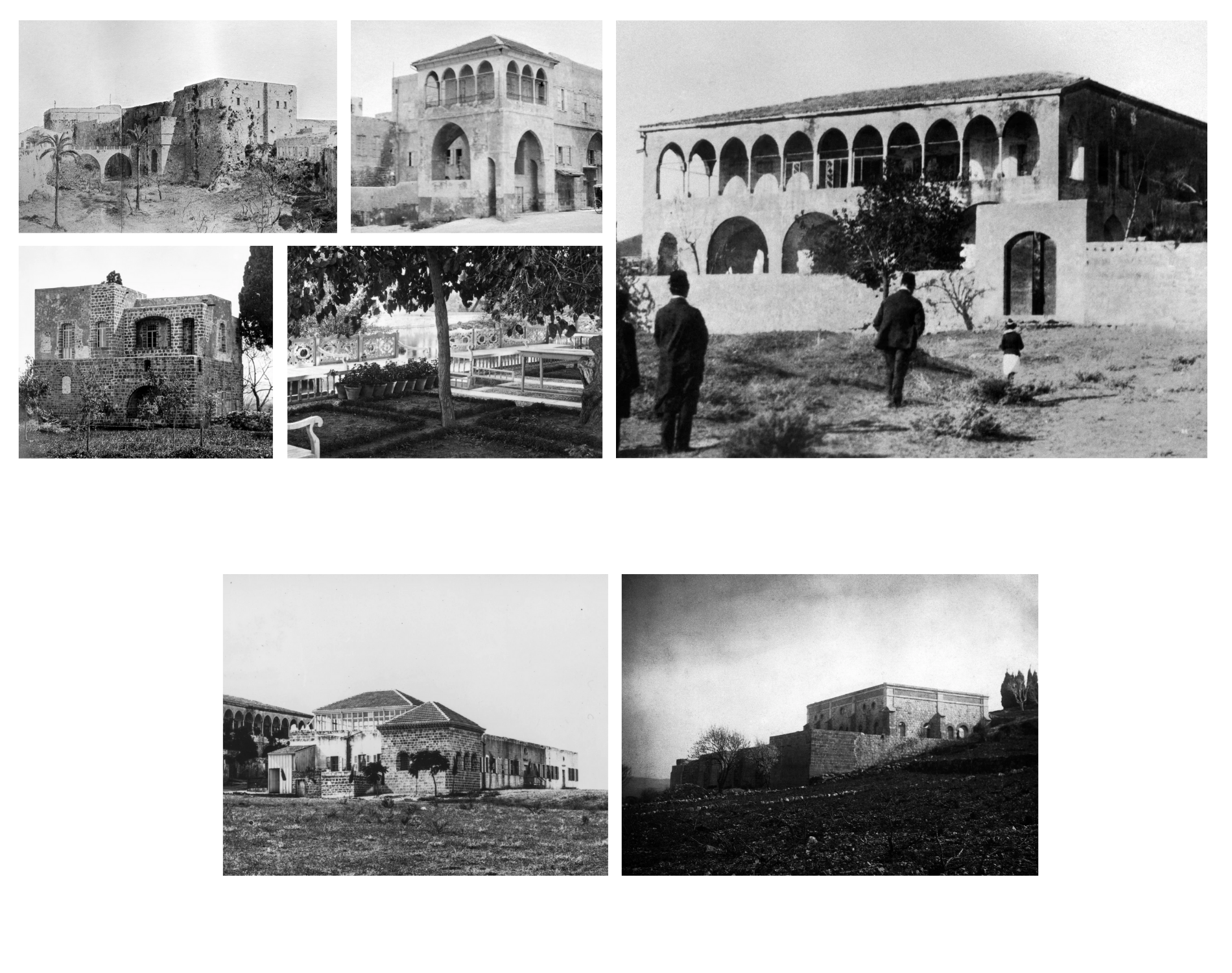
In the time of Bahá'u'lláh, pilgrimage was in essence a "living" pilgrimage. Bahá'ís often walked from Persia to be in the presence of Bahá'u'lláh, the Blessed Beauty. At first, only gazing at a waving handkerchief from within the Most Great Prison, then later in houses within the confines of 'Akká, and still later, in the countryside at the mansion of Bahjí and Mazra'ih or in the Garden of Ridván, wherever Bahá'u'lláh physically was. In the time of ‘Abdu'l-Bahá, His herculean efforts provided Bahá'ís with befitting Holy Shrines for the sacred remains of the twin Manifestations of the Bahá'í Dispensation, which pilgrims, now coming from both the East and the West could visit. All photos from Bahá'í Media Bank.
Bahá’í Pilgrims from the East had been making the long journey to meet Bahá’u’lláh since the days of Adrianople between 1863 and 1868, and since His arrival in ‘Akká in 1868. After His passing, pilgrims continued to make the arduous trek from Iraq, Persia and India to gain spiritual guidance from His son and the Center of His Covenant, ‘Abdu’l-Bahá, starting in 1892 until His passing in 1921. Pilgrims first had one Holy Shrine to visit, Bahjí, in the countryside of 'Akká, where Bahá'u'lláh's earthly remains were interred, but starting in 1909, they also had the bounty of prostrating at the Shrine of the Báb on Mount Carmel, in Haifa.
Eastern Pilgrims
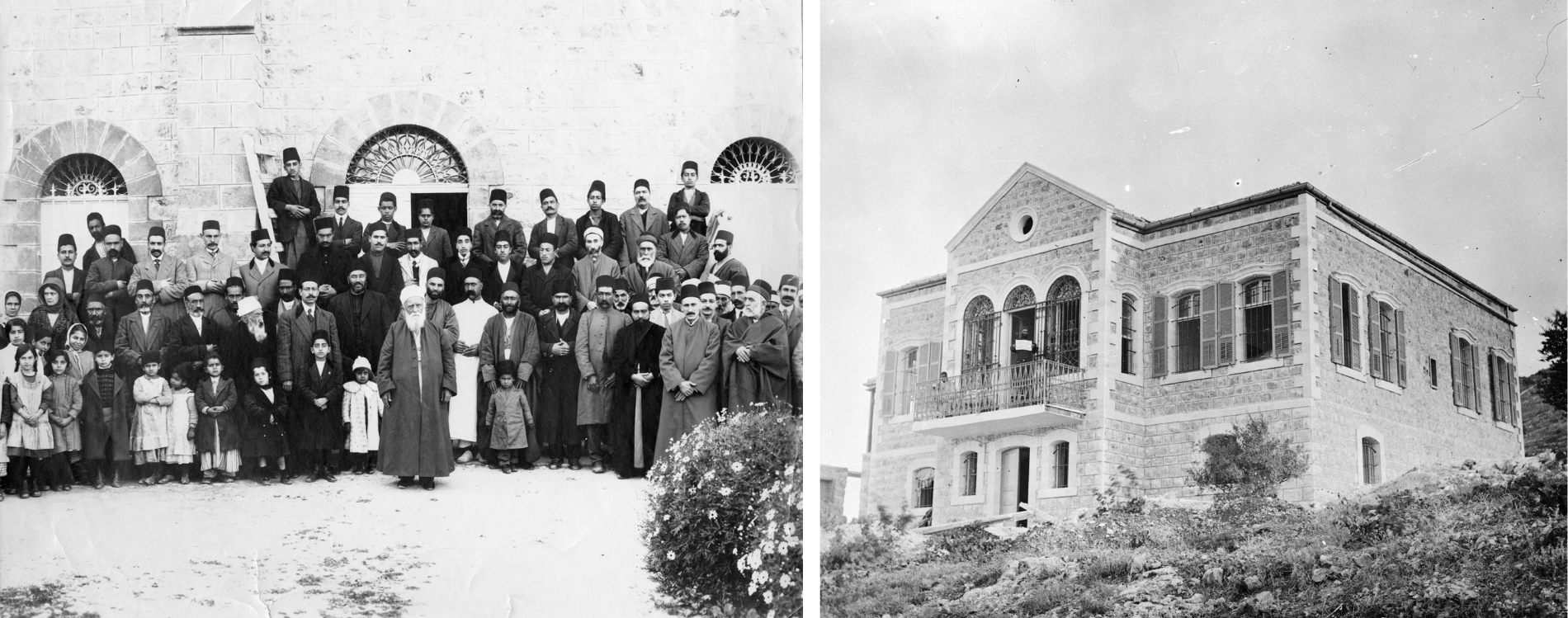
Left: ‘Abdu'l-Bahá at the Shrine of the Báb with Eastern Pilgrims and resident Bahá'ís. Photo: Bahá'í World Center (source) Right: The Eastern Pilgrim House. This photograph of the Eastern Pilgrim House was taken in 1909 upon completion of its construction. The stonework is all fresh and you can still see some building rubble by the lower door. Detailed caption provided by Andrew Blake. Bahá'í Media Bank.

Left: Western Pilgrims in front of the Shrine of the Báb in November 1919; some of the people identified in the photo are Harry Randall, Bahiyyih Randall (Winckler) and Ruth Randall, John Esslemont, Albert Vail, George Latimer, and Lotfullah Hakim, future member of the Universal House of Justice. Photo: Bahá'í World Center (source) Right: Three pilgrims on the steps of the Western Pilgrim House, c. 1925. Bahá'í Media Bank.
There are records for about 700 pilgrims between the years 1894 and 1921, of which 250 were Western pilgrims: approximately 360 pilgrims between 1897 and 1912 (See Visiting ‘Abdu’l-Bahá Volume 1: The West Discovers the Master for the stories and details) and 355 pilgrims between 1913 and 1921 (See Visiting ‘Abdu’l-Bahá Volume 2: The Final Years). A substantial number of pilgrims came and went unrecorded, and though it is impossible to give an accurate estimate of all the pilgrims who came to see ‘Abdu’l-Bahá in the Holy Land during the entire course of His ministry, an educated guess would be that the figure is upwards of 2,000 pilgrims. To download a PDF of all pilgrims identified by Earl Redman in volumes 1 and 2 of his Visiting ‘Abdu'l-Bahá books, part of a tetralogy of the life of ‘Abdu'l-Bahá click below:
During World War I, 'Abdu'l-Bahá had virtually no communication with the Bahá'ís outside the Holy Land. Shoghi Effendi writes in God Passes By that "[‘Abdu'l-Bahá] felt acutely the virtual stoppage of all communication with most of the Bahá'í centers throughout the world."
The graphic below shows the most well-known among the Bahá'í pilgrims who came to the Holy Land between 1918-1921, when communication was re-established, and a very small handful of pilgrims from the period 1913-1918. The individuals below appear mostly in chronological order except for late additions, from Earl Redman's Visiting 'Abdu'l-Baha Vol 2: The Final Years, 1913–1921: Both Apostles of Bahá'u'lláh and Disciples of ‘Abdu'l-Bahá have gold frames of different hues and those later elevated to the rank of Hand of the Cause have silver frames.
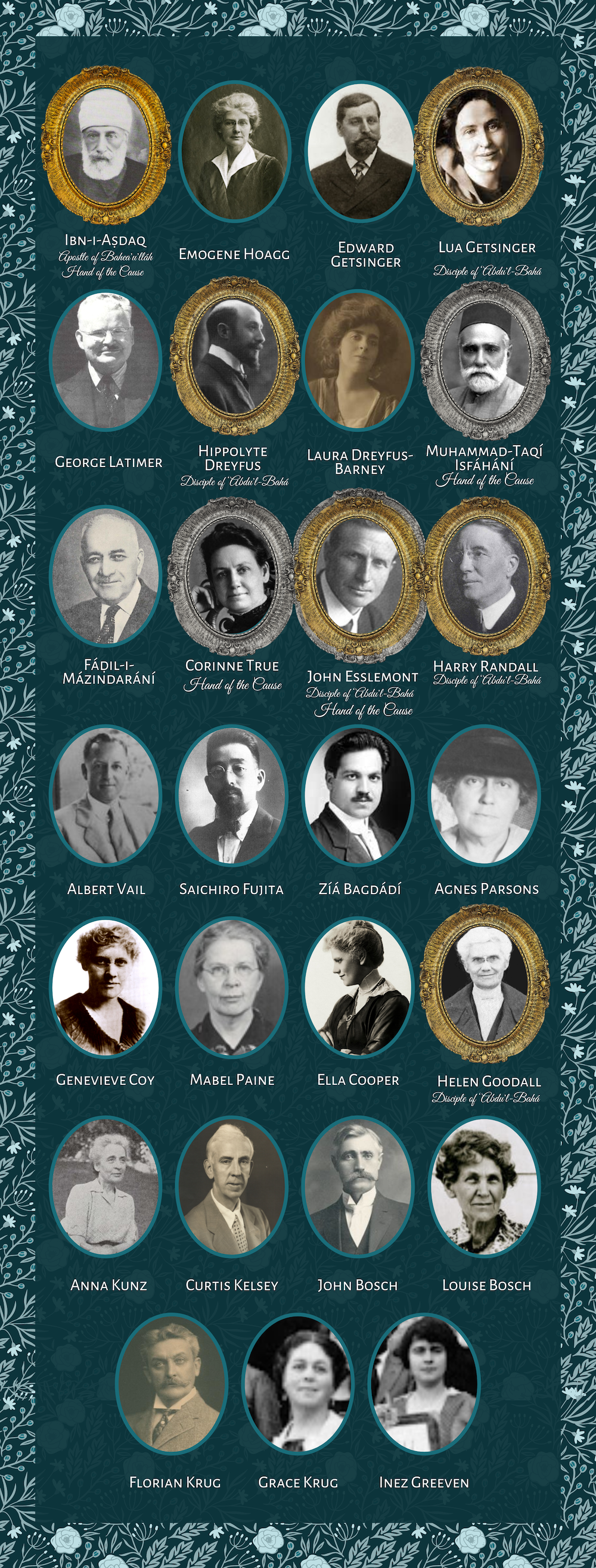

Map of some of the worldwide missions that took place during and shortly after the Ministry of ‘Abdu’l-Bahá, some were mandated by the Master, and some arose spontaneously after the unveiling of the Tablets of the Divine Plan, in April 1919. Original design by Violetta Zein. Base Map: English: Map of the World in 1922 Drawn with Van der Grinten projection. Scale on equator 1 inch = 625 miles (1 : 39,600,000). Wikimedia Commons.
In this map, we are honoring Shoghi Effendi, ‘Abdu'l-Bahá's beloved grandson and the Guardian of the Bahá'í Faith and famed lover of maps, and paying homage to his iconic Map of the Progress of the Ten Year Crusade (see end of section). From the beginning of His Ministry, ‘Abdu'l-Bahá, following in Bahá'u'lláh's footsteps, sent highly-capable individuals on missions around the world. Some were sent with confidential, critical missions, some were asked to undertake teaching trips, some were asked to deepen believers on certain subjects, others were tasked with specific missions of social action, and still others were sent on missions to protect the Covenant, in 1900 in America and again in 1914 in England. The map below attempts to show twenty-three of these missions, and is by no means meant to be exhaustive. Map Markers are clearly identified below the map, with links to the individual sent on the mission and brief details about the task entrusted to them.
Map references:
Map Marker 1: In 1900, 'Abdu'l-Bahá asked William Hoar (later appointed a Disciple of ‘Abdu'l-Bahá) to speak to the Persian Ambassador in Washington DC to try and alleviate the persecution of the Bahá’ís in Iran.
Map Marker 2: At the express request of ‘Abdu'l-Bahá, Mírzá Abul-Faḍl (later appointed Apostle of Bahá'u'lláh) traveled to travelled to Paris and the United States between 1900 and 1904. His talks and writings enabled the fledgling Baháʼí communities there to gain confidence and a clear understanding of the Bahá'í Faith. Laura Clifford Barney, accompanied Mírzá Abul-Faḍl during his travels. In Paris, his talks were translated by Anton Haddad, and over thirty people became Baháʼís. Mírzá Abul-Faḍl then traveled to America, where he had a great task to accomplish in undoing the damage done by Ibrahim Kheiralla's misinformation. Mírzá Abul-Faḍl arrived in Chicago, where the largest American Bahá'í community was located, in the autumn of 1901 and gave a large number of talks. In December 1901, Mírzá Abu'l-Faḍl travelled to Washington D.C. and gave talks to both Baháʼís and the general population.
Map Marker 3: Ḥájí Mírzá Muḥammad-Taqí (Vakílu’d-Dawlih) (a cousin of the Báb, later appointed Apostle of Bahá'u'lláh) went to ‘Ishqábád in 1902 at ‘Abdu'l-Bahá's request to supervise the building of the first Bahá'í House of Worship.
Map Marker 4: In 1902, the Master asked Lua Getsinger (titled by ‘Abdu'l-Bahá "Herald of the Covenant" and later appointed Disciple of ‘Abdu'l-Bahá) and Hippolyte Dreyfus (the first French Bahá'í and later appointed a Disciple of ‘Abdu'l-Bahá) to write and present a petition to the Sháh of Persia when he was in Paris in 1902.
Map Marker 5: Sidney Sprague went to India and Burma in 1905 at ‘Abdu’l-Bahá’ request.
Map Marker 6: Laura Barney (author of Some Answered Questions), Hippolyte Dreyfus (see above), and Madame Lachenay (no website found) to travel through Persia and Turkmenistan (the first Westerners to visit the Mashriqu’l-Adkár there) in 1906.
Map Marker 7: Hooper Harris (no website found) and Harlan Ober went to Iran at the Master’s behest in 1906.
Map Marker 8: In 1907, ‘Abdu’l-Bahá tasked Corinne True, (later appointed Hand of the Cause) with working on the building of the House of Worship in Wilmette. The committee was all-male at the time, and few women, even in Bahá'í affairs, had positions of responsibility.
Map Marker 9: In 1908 some American Bahá’ís visited Persia, and while there, received a very specific request from Persian Bahá’í doctors: they were in need of a female doctor who could be sent to iran to provide medical care for women there. Because of strict moral codes, women could not consult male doctors, and so were not receiving adequate medical treatment. While on pilgrimage in the Holy Land, these Americans consulted with ‘Abdu’l-Bahá regarding the situation and it was decided Susan Moody would be a suitable candidate. ‘Abdu’l-Bahá asked Susan Moody to move to Iran, and Dr. Moody immediately began making travel arrangements upon receiving the Master's letter. She stopped in the Holy Land on the way to Iran where ‘Abdu'l-Bahá gave her advice about her upcoming mission.
Map Marker 10: In 1909, ‘Abdu’l-Bahá instructed Joseph Hannen (later appointed a Disciple of ‘Abdu'l-Bahá) teach the Faith to African Americans in Washington DC.
Map Marker 11: Lillian Kappes (later appointed a Disciple of ‘Abdu'l-Bahá) In early 1911, the Bahá’ís in Tehran appealed to ‘Abdu’l-Bahá for teachers. The Master sent a Tablet to America requesting the Bahá’ís to ‘select a woman teacher who may fill the position of principal as well as teacher, and send her without delay. The woman must have a share of the knowledge of sciences and be proficient in woman’s work, such as sewing, housekeeping, hygiene and household economics.’ After ‘Abdu’l-Bahá’s Tablet had been sent, the Tehran Board of Consultation supplicated ‘Abdu’l-Baha specifically that Lillian Kappes be permitted to come to that city to teach in the Girls’ Baha’i School. When asked, Lillian immediately accepted. Since she had little money, the Bahá’ís of Seattle began a nationwide campaign to raise funds to send her to Iran.
Map Marker 12: Lua Getsinger (see above, accompanied by her husband) was sent to India in 1913, departing from Egypt, where ‘Abdu'l-Bahá counseled her and gave her instructions.
Map Marker 13: Agnes Alexander (Hand of the cause) pioneered to Japan in 1914, at the request of ‘Abdu'l-Bahá. In 1921 she became the first Baháʼí to introduce the Bahá'í Faith in Korea. Except for extended vacations in Hawaii, Agnes spent over thirty years in Japan.
Map Marker 14: George Jacob Augur (Disciple of ‘Abdu'l-Bahá) wrote to ‘Abdu'l-Bahá in 1913 that he wished to go to Japan and received a Tablet from the Master in response that contained the words "Arise thou to perform the blessed intention thou art holding and travel thou to Japan and lay there the foundation of the Cause of God." He lived in Japan on and off until 1919.
Map Marker 15: Emogene Hoagg went on a very long pilgrimage to the Holy Land between November 25, 1913 and July 20, 1914. While she was on pilgrimage, ‘Abdu'l-Bahá asked her to travel to London, Paris and Stuttgart to counteract the disruptive influence of Dr. Aminu'llah Farid who had by now not only disobeyed, but also rejected the authority of ‘Abdu'l-Bahá and were causing serious problems in the community. Because of the onset of the war, she only was able to travel to Britain.
Map Marker 16: Dr. Ḥabíbu’lláh Bahádur, Mírzá ‘Azízu’lláh Khán Bahádur, Mírzá Asadu’lláh (Jináb-i-Fádil-i-ázindarání) and Mírzá Yahah were sent to Germany and London in 1914, also to counter the pernicious Covenant-breaking influence of Dr. Aminu'llah Farid.
Map Marker 17: Mason Remey, George Latimer & Dr Habíb Mu’ayyad were sent to Germany by ‘Abdu'l-Bahá.
Map Marker 18: Margaret Duncan Green became the first Bahá'í pioneer to Alaska in 1915, and worked there as a librarian until 1918. She is one of only four individuals to be named in ‘Abdu'l-Bahá's Tablets of the Divine Plan. (please send us an email if you can provide a photograph of Margaret )
Map Marker 19: Martha Root had written to ‘Abdu'l-Bahá on November 7, 1918 about her desire to travel the world to teach the Bahá'í Faith. ‘Abdu'l-Bahá's reply read: "My hope from the blessings of His Holiness Bahá'u'lláh is that thou mayest forget rest and composure and like unto a swift-flying bird, thou mayest reproduce the melody of the Kingdom and engage in songs and music in the best of tunes." This Tablet of ‘Abdu'l-Bahá was like a clarion call for Martha Root, and when the Tablets of the Divine Plan were unveiled at the annual Bahá'í convention in April 1919, Martha Root not only instantly felt their spiritual force, but in her characteristic literalness in translating the writings of ‘Abdu'l-Bahá (and of Bahá'u'lláh) into directives for action, she set off for South America four months later. ‘Abdu'l-Bahá had urged, in the Tablets of the Divine Plan, that South America receive the Bahá'í teachings. In August 1919, Martha Root arrived in Brazil, visiting many cities, then arriving in Uruguay and Argentina in September 1919. She crossed the freezing Andes on a donkey, a very perilous journey, and arrived in Chile in October 1919, traveling to Panama the same month before arriving in Cuba at the end of 1919, and returning to the United States.
Map Marker 20: Hyde Dunn (later appointed Hand of the Cause) and Clara Dunn (later appointed Hand of the Cause) married in San Francisco in 1917, and in 1919 the couple resolved to travel to Australia to teach the Faith after reading 'Abdu'l-Bahá's Tablets of the Divine Plan. As most of their income had been spent on teaching the faith, Clara suggested that Hyde travel to Australia alone to save money, however when asked about the matter via telegram ‘Abdu’l-Bahá expressed approval of their plan to go together. Clara and Hyde Dunn were the first Bahá’ís in Australia and among the earliest Bahá’ís to teach in New Zealand
Map Marker 21: Fanny Knobloch traveled from Washington to Cape Town, South Africa in July-August 1920 where she stayed for a year to help establish the Bahá’í Faith in that country
Map Marker 22: Leonora Holsapple was the first Baháʼí to live in Brazil. She went there as a pioneer in 1921 when she was only 25 years old and due to her efforts and services for the Baháʼí Faith in Brazil and across Latin America she was named the 'Spiritual Mother of the Baháʼís of South America.
Map Marker 23: Orcella Rexford set out for Alaska in 1922 in direct response to ‘Abdu’l-Baha’s Tablets of the Divine Plan calling for pioneers to spread the Bahá'í Faith. She returned to a land where some of her ancestors had also set out to during the Gold Rush.
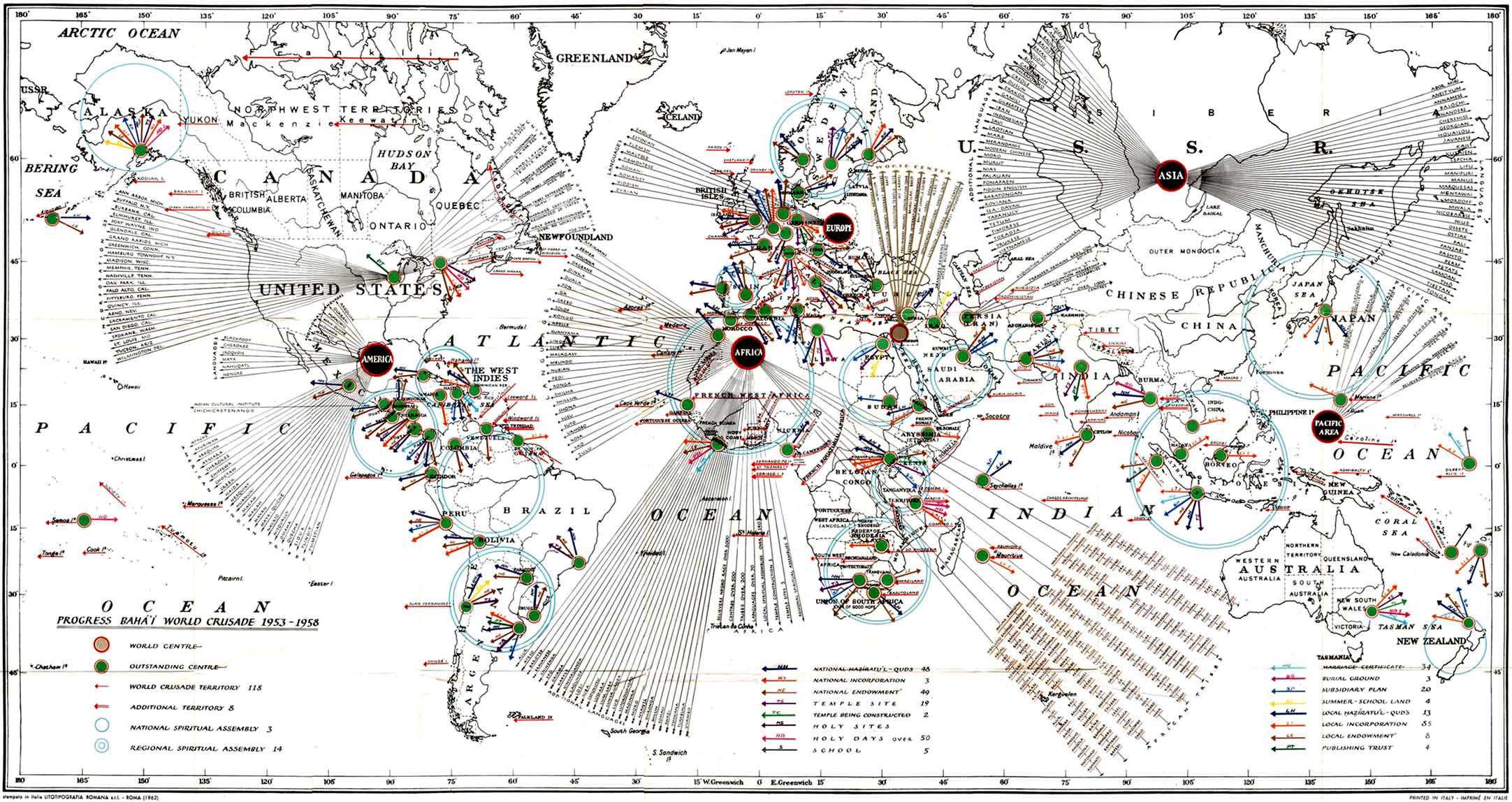
Map of the Progress of the Ten Year Crusade from 1953 to 1958, as created by Shoghi Effendi. Baha'i Media.

This list is taken, mostly in chronological order except for late additions, from Earl Redman's Visiting 'Abdu'l-Baha Vol 2: Volume 2: The Final Years, 1913–1921:
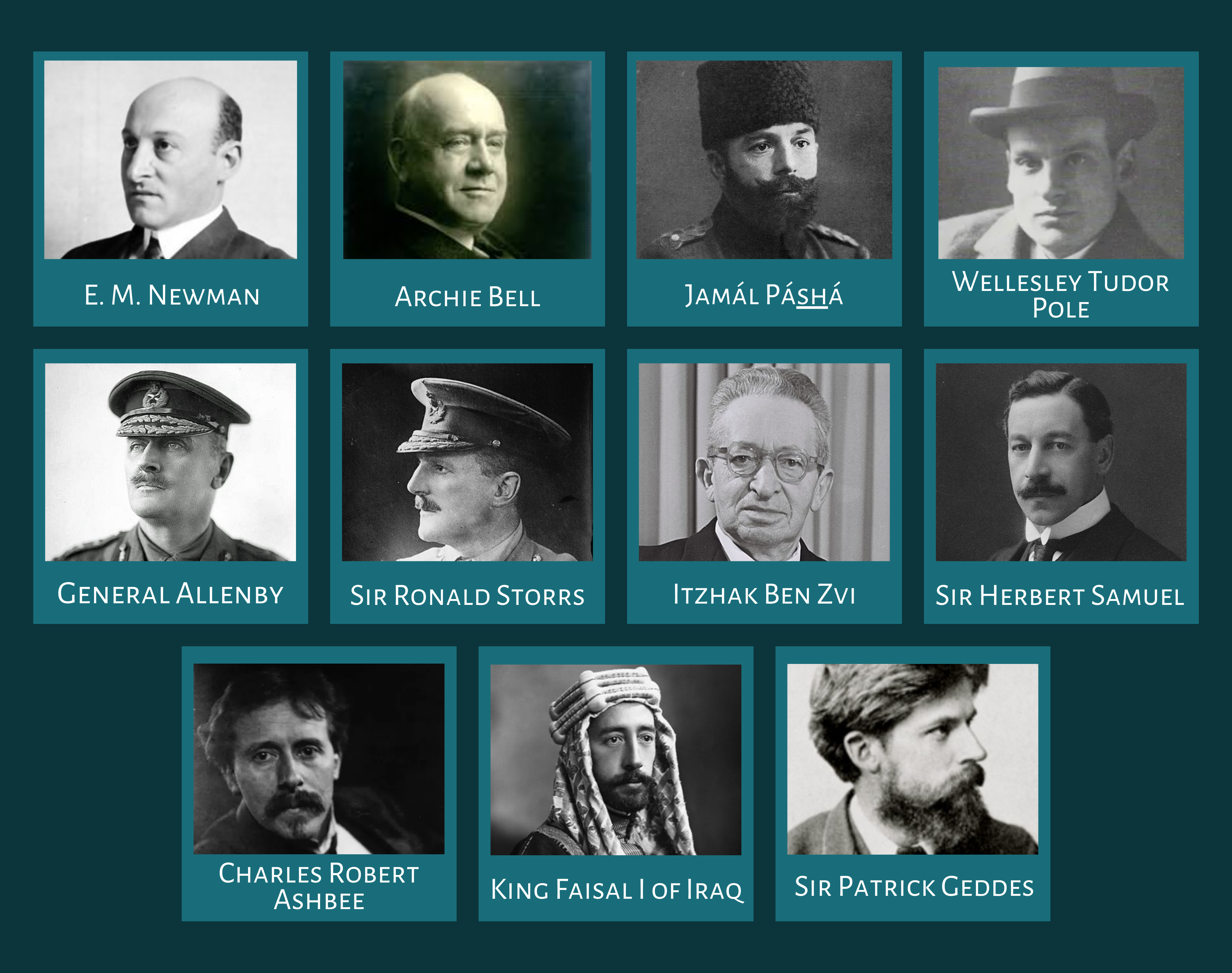
E.M. Newman, a well-known reporter, co-author with Archie Bell and photographer of The Spell of China, The Spell of Egypt, and The Spell of the Holy Land, where appears a long article about ‘Abdu'l-Bahá in the chapter entitled "Meeting a Prophet," including a beautiful photograph (out of series of two or three) taken by E. M. Newman of ‘Abdu'l-Bahá in Tiberias on His balcony;
Archie Bell, a newspaper reporter and editor from Cleveland, Ohio, he covered drama and music for Cleveland newspapers for over 30 years. He was co-author with E. M. Newan, also the photographer, of The Spell of China, The Spell of Egypt, and The Spell of the Holy Land, where appears a long article about ‘Abdu'l-Bahá in the chapter entitled "Meeting a Prophet," including a beautiful photograph (out of series of two or three) taken by E. M. Newman of ‘Abdu'l-Bahá in Tiberias on His balcony;
Jamál Páshá (Djemal Pasha), an Ottoman military leader and one of the Three Pashas that ruled the Ottoman Empire during World War I. He was instigated by the Covenant-breakers and turned against ‘Abdu'l-Bahá
Wellesley Tudor Pole, a British Spiritualist, and a great friend of ‘Abdu'l-Bahá's and of the Bahá'í Faith. ‘Abdu'l-Bahá visited him twice at his home in Bristol during His Journeys to the West, and Tudor Pole moved heaven and earth to ensure ‘Abdu'l-Bahá's safety during the First World War;
General Edmund Allenby, an English soldier and British Imperial Governor. He fought in the Second Boer War and also in the First World War, in which he led the British Empire's Egyptian Expeditionary Force (EEF) during the Sinai and Palestine Campaign against the Ottoman Empire in the conquest of Palestine. He also personally enquired after and visited with ‘Abdu'l-Bahá when the British after the British took over Palestine from the Ottomans;
Sir Ronald Storrs, an official in the British Foreign and Colonial Office. He served as Oriental Secretary in Cairo, Military Governor of Jerusalem, Governor of Cyprus, and Governor of Northern Rhodesia. He also personally called on ‘Abdu'l-Bahá after the British after the British took over Palestine from the Ottomans;
Itzhak Ben Zvi, a historian, Labor Zionist leader and the longest-serving President of Israel. When ‘Abdu'l-Bahá met Itzak Ben Zvi in 1919, he was a 35-years old and walking through Israel with his wife. Elected president in 1952, he will be the first head of state ever to pay an official visit to the Shrine of the Báb and ‘Abdu'l-Bahá in 1954;
Sir Herbert Samuel, a British Liberal politician and Viscount who was the party leader from 1931 to 1935. Sir Samuel was Jewish and promoted Zionism within the British Cabinet, beginning with his 1915 memorandum entitled The Future of Palestine. In 1920 he was appointed as the first High Commissioner for Palestine. He met ‘Abdu'l-Bahá in 1920;
Charles Robert Ashbee, a British architect and designer who was a prime mover of the Arts and Crafts movement, he was appointed Civic Adviser to the City of Jerusalem in 1918. He visited Haifa with his wife, Janet, in March 1920 and wrote about meeting ‘Abdu’l-Bahá;
King Faisal I of Iraq, a 38th-generation descendent of Prophet Muḥammad, his full name is Faisal I bin Al-Hussein bin Ali Al-Hashemi, He was King of the Arab Kingdom of Syria or Greater Syria in 1920, and King of Iraq from 23 August 1921 to 1933. He met ‘Abdu'l-Bahá in 1920;
Sir Patrick Geddes, a Scottish biologist, sociologist, Comtean positivist, geographer, philanthropist and pioneering town planner. He is known for his innovative thinking in the fields of urban planning and sociology. ‘Abdu'l-Bahá previous met Sir Patrick Geddes when He visited Scotland in January 1913 and the former gave Him a tour of the Outlook Tower. He encounters ‘Abdu'l-Bahá again in Haifa when doing city planning and ‘Abdu'l-Bahá not only agrees for the roads to cross Bahá'í property, but also donates land for a school;
No photos found for the following individual, (contact us if you can provide a photo):
Dr Joseph Kruszynski, a Polish theologian and President of the Roman Catholic Theological University at Lublin University in Poland. He met ‘Abdu'l-Bahá in Haifa on July 14, 1914, and was interviewed by Martha Root in 1934 for Star of the West;
References for Part VIII
‘Abdu’l-Bahá’s Return to the Holy Land
2 December 1913 – BETWEEN ALEXANDRIA AND PORT SAID – “We are now returning home after accomplishing our work”: The Diary of Ahmad Sohrab, 2 December 1913.
3 December 1913 – BETWEEN PORT SAID AND JAFFA – The definitive answer to “Why do we need a new religion?”: The Diary of Ahmad Sohrab, 3 December 1913.
4 December 1913 – JAFFA – Dropping anchor in the Holy Land: The Diary of Ahmad Sohrab, 4 December 1913.
5 December 1913 – BETWEEN JAFFA AND HAIFA – “He lived among us for 45 years and we never appreciated Him”: The Diary of Ahmad Sohrab, 5 December 1913.
2 – 5 December 1913 – HAIFA – The Holy Family prepares for ‘Abdu’l-Bahá’s arrival: Rúḥá Aṣdaq, One Life, One Memory: Memories of Pilgrimage in 1914.
5 December 1913 – HAIFA – “The master has come”: Rúḥá Aṣdaq, One Life, One Memory: Memories of Pilgrimage in 1914.
6 December 1913 – ‘Abdu’l-Bahá visits the Shrine of the Báb: The Diary of Ahmad Sohrab, 6 December 1913.
7 December 1913 – BAHJÍ – At long last, reunited: ‘Abdu’l-Bahá visits the shrine of Bahá’u’lláh: The Diary of Ahmad Sohrab, 7 December 1913.
8 – 20 December 1913 – The Master is back in ‘Akká: The Diary of Ahmad Sohrab, 8-20 December 1913.
9 December 1913 – ‘Abdu’l-Bahá speaks about Bahjí: The Diary of Ahmad Sohrab, 9 December 1913.
December 1913 – April 1914- HAIFA AND ‘AKKÁ: Summary from The Diary of Ahmad Sohrab, December 1913 – April 1914.
1 – 16 May 1914 – AL-HAMMAH – ‘Abdu’l-Bahá’s desert respite: The Diary of Ahmad Sohrab, 1-16 May 914.
16 May 1914 – ‘ADASSIYÍH – ‘Abdu’l-Bahá’s first visit: The Diary of Ahmad Sohrab, 16 May 1914.
17 May – 15 June 1914 – TIBERIAS: The Diary of Ahmad Sohrab, 17 May – 15 June 1914.
5 June 1914 – AL-NUQAYB – ‘Abdu’l-Bahá’s enchanted outing on the Sea of Galilee: The Diary of Ahmad Sohrab, 5 June 1913.
9 June 1914 – TIBERIAS – Photograph of ‘Abdu’l-Bahá in Tiberias: The Diary of Ahmad Sohrab, 9 June 1913 and Archie Bell, The Spell of the Holy Land.
15 June 1914 – HAIFA – ‘Abdu’l-Bahá returns after six weeks away: Earl Redman, Visiting ‘Abdu’l-Baha Volume 2: The Final Years, 1913–1921.
The War Years
28 June 1914 – WAR: Wikipedia: World War I and Earl Redman, Visiting ‘Abdu’l-Baha Volume 2: The Final Years, 1913–1921.
29 June 1914 – HAIFA – ‘Abdu’l-Bahá sends all the pilgrims home: Earl Redman, Visiting ‘Abdu’l-Baha Volume 2: The Final Years, 1913–1921.
June to October 1914 – HAIFA – The pressures of war begin to show in Haifa: Earl Redman, Visiting ‘Abdu’l-Baha Volume 2: The Final Years, 1913–1921.
Years prior to World War I – ‘Abdu’l-Bahá’s preparations: Earl Redman, Visiting ‘Abdu’l-Baha Volume 2: The Final Years, 1913–1921.
September 1914 – May 1915 – ABU SINAN – ‘Abdu’l-Bahá moves the Holy Family and Haifa Bahá’ís to the Druze Village: Hasan M. Balyuzi: ‘Abdu’l-Bahá: The Centre of the Covenant of Bahá’u’lláh, and Earl Redman, Visiting ‘Abdu’l-Baha Volume 2: The Final Years, 1913–1921.
January – February 1915 – HAIFA – The Bloodthirsty Jámál Páshá: Wikipedia : Djemal Pasha; Wikipedia: Raid on the Suez Canal; Shoghi Effendi, God Passes By; Earl Redman, Visiting ‘Abdu’l-Baha Volume 2: The Final Years, 1913–1921.
Early months of 1915 – HAIFA – ‘Abdu’l-Bahá wishes He had gone to India: Hasan M. Balyuzi: ‘Abdu’l-Bahá: The Centre of the Covenant of Bahá’u’lláh pages 415.
March – October 1915 – Famine in the Holy Land: Wikipedia: 1915 Ottoman Syria locust infestation; Wikipedia: Wikipedia: The Great Famine of Mount Lebanon; Earl Redman, Visiting ‘Abdu’l-Baha Volume 2: The Final Years, 1913–1921.
‘Abdu’l-Bahá constant sense of humor: Hasan M. Balyuzi: ‘Abdu’l-Bahá: The Centre of the Covenant of Bahá’u’lláh pages 415.
March – April 1915 – EGYPT – Martha Root brings gold for ‘Abdu’l-Bahá: M.R. Garis, Martha Root, Lioness at the Threshold.
May – End 1915 – Memorials of the Faithful: ‘Abdu’l-Bahá, Memorials of the Faithful and preface by Marzieh Gail.
22 March – 22 April – HAIFA – THE TABLETS OF THE DIVINE PLAN PART I: SPRING 1916: Lameh Fananapazir, Themes of ‘Abdu’l-Bahá’s Tablets of The Divine Plan Illustrated by Scriptural References to the Bible and the Qur’án, Lights of Irfán Volume 18 (2017)
22 March – 22 April – BAHJÍ – THE EIGHT TABLETS OF THE DIVINE PLAN REVEALED IN SPRING 1916: Hasan M. Balyuzi: ‘Abdu’l-Bahá: The Centre of the Covenant of Bahá’u’lláh pages 420-424.
End of March 1916 – ‘ADASSIYÍH – ‘Abdu’l-Bahá’s second visit: Iraj Poostchi. 2010. ‘Adasiyyah: A Study in Agriculture and Rural Development. Baha’i Studies Review 16, pp. 61–105.
1915 – 1918 TIBERIAS: Hasan M. Balyuzi: ‘Abdu’l-Bahá: The Centre of the Covenant of Bahá’u’lláh pages 418-419.
Early 1916 – NAZARETH – ‘Abdu’l-Bahá visits Jamál Páshá: Hasan M. Balyuzi: ‘Abdu’l-Bahá: The Centre of the Covenant of Bahá’u’lláh pages 413-414.
2 FEBRUARY – 8 MARCH – HAIFA AND ‘AKKÁ – THE TABLETS OF THE DIVINE PLAN PART II: SPRING 1917: Shoghi Effendi, God Passes By; Hasan M. Balyuzi: ‘Abdu’l-Bahá: The Centre of the Covenant of Bahá’u’lláh pages 423-424, and Baha’i Blog: What are the Tablets of the Divine Plan?
March – April 1917 – WAR – The mounting ravages of war: Hasan M. Balyuzi: ‘Abdu’l-Bahá: The Centre of the Covenant of Bahá’u’lláh pages 419-420, Wikipedia: Mesopotamian Campaign, and Wikipedia: American entry into World War I.
July 1917 – ‘ADASSIYÍH – ‘Abdu’l-Bahá’s third visit – A caravan of 200 camels: Iraj Poostchi. 2010. ‘Adasiyyah: A Study in Agriculture and Rural Development. Baha’i Studies Review 16, pp. 75–76.
April 1917 – March 1918 – WAR – Britain finally arrives in Ottoman Palestine: Wikipedia: Sinai and Palestine Campaign
December 1917 – Spring 1918 – ‘Abdu’l-Bahá’s British friends move heaven and earth to ensure the Master’s safety: Earl Redman, Visiting ‘Abdu’l-Baha Volume 2: The Final Years, 1913–1921.
Summer 1918 – Shoghi Effendi returns from Syria: Riaz Khadem: Prelude to the Guardianship, pages 8, 17-19.
FALL-WINTER 1918 – THE END OF THE WAR – The Jodhpur and Mysore Lancers of the 15th Imperial Service Brigade capture Haifa: Wikipedia: The Battle of Haifa, Earl Redman, Visiting ‘Abdu’l-Baha Volume 2: The Final Years, 1913–1921 and Wikipedia: World War I.
Fall 1918 – HAIFA – “I have corn for the British Army”: Earl Redman, Visiting ‘Abdu’l-Baha Volume 2: The Final Years, 1913–1921.
The Years of Prestige
October 1918 – HAIFA – Peace, at Last: Star of the West, Volume IX, Number 17, pages 188-189.
Shoghi Effendi – ‘Abdu’l-Bahá’s secretary, translator, and assistant: Riaz Khadem: Prelude to the Guardianship, pages 8, 17-19, Ruhiyyíh Rabbáni, The Priceless Pearl, and Earl Redman, Visiting ‘Abdu’l-Baha Volume 2: The Final Years, 1913–1921.
Sometime in 1918 – Shoghi Effendi, the future Guardian, deals with a British major to let ‘Abdu’l-Bahá’s camel caravan into Haifa: Iraj Poostchi. 2010. ‘Adasiyyah: A Study in Agriculture and Rural Development. Baha’i Studies Review 16, p 76.
End of October 1918 – BAHJÍ – The first photograph of ‘Abdu’l-Bahá after the War: Star of the West, Volume IX, Number 17, pages 188-189.
21 November 1918 – Wellesley Tudor Pole visits ‘Abdu’l-Bahá: Earl Redman, Visiting ‘Abdu’l-Baha Volume 2: The Final Years, 1913–1921.
10 February 1919 – HAIFA – The Haifa Relief Fund: Ruhiyyíh Rabbáni, The Priceless Pearl, Annamarie Honnold, Vignettes from the Life of ‘Abdu’l-Bahá, p. 77, Hasan M. Balyuzi: ‘Abdu’l-Bahá: The Centre of the Covenant of Bahá’u’lláh, page 435
14 February 1919 – HAIFA – Wellesley Tudor Pole’s article about the Faith generates interest from active service men: Star of the West, Volume XI, Number 3, pages 50-51.
April 1919 – HAIFA – The first pilgrims start to arrive: Earl Redman, Visiting ‘Abdu’l-Baha Volume 2: The Final Years, 1913–1921.
26 – 30 April 1919 – THE TABLETS OF THE DIVINE PLAN – The unveiling of the Tablets of the Divine Plan at the Bahá’í Congress in New York: Star of the West Volume XI, Number 4.
July and August 1919 – ‘Abdu’l-Bahá meets with high-ranking British personalities: Hasan M. Balyuzi: ‘Abdu’l-Bahá: The Centre of the Covenant of Bahá’u’lláh, page 440.
1 October 1919 – HAIFA – First Holy Day with Western pilgrims in more than four years: Riaz Khadem: Prelude to the Guardianship, pages 91-93.
4 October 1919 – HAIFA – ‘Abdu’l-Bahá visits a battleship: Riaz Khadem: Prelude to the Guardianship, pages 95.
Sometime in 1919 – HAIFA – Abdu’l-Bahá meets a future President of Israel: Earl Redman, Visiting ‘Abdu’l-Baha Volume 2: The Final Years, 1913–1921 and Ruhiyyíh Rabbáni, The Guardian of the Bahá’í Faith, Chapter X: The Heart and Nerve Centre
November 1919 – HAIFA – 10 Haparsim, the Western Pilgrim House: David S. Ruhe, Door of Hope: The Bahá’í Faith in the Holy Land.
11 February 1916 – December 1919 – THE TABLETS TO THE HAGUE – PART I: The invitation: Hasan M. Balyuzi: ‘Abdu’l-Bahá: The Centre of the Covenant of Bahá’u’lláh; National Spiritual Assembly of the Bahá’ís of the Netherlands, entitled “The Journey of ‘Abdu’l-Bahá’s Tablet to the Hague” and Wikipedia: Tablet to The Hague
17 December 1919 – THE TABLETS TO THE HAGUE – PART I: ‘Abdu’l-Bahá reveals the First Tablet to the Hague: Hasan M. Balyuzi: ‘Abdu’l-Bahá: The Centre of the Covenant of Bahá’u’lláh; National Spiritual Assembly of the Bahá’ís of the Netherlands, entitled “The Journey of ‘Abdu’l-Bahá’s Tablet to the Hague” and Bahá’í World News Service: 67 selections from Baha’i writings published online
1919 – 1920 – HAIFA – ‘Abdu’l-Bahá relationship with the City of Haifa: Star of the West, Letter from Sir Patrick Geddes published in Volume XII, number 7, pages 136-137.
1920 – HAIFA – King Faisal meets ‘Abdu’l-Bahá: Star of the West Volume XX, Number 10, Pages 365-366: Martha Root: An Audience With King Faisal
January 1920 – ‘Abdu’l-Bahá’s car: Baha’i Library Online (search term: Cunningham), Earl Redman, Visiting ‘Abdu’l-Baha Volume 2: The Final Years, 1913–1921, Reflections on the Bahai Writings: The Master’s Car (The Cunningham)
17 January 1920 – HAIFA – ‘Abdu’l-Bahá asks Agnes Parsons to work for race relations: Earl Redman, Visiting ‘Abdu’l-Baha Volume 2: The Final Years, 1913–1921
‘Abdu’l-Bahá meets two high-ranking British officials: Earl Redman, Visiting ‘Abdu’l-Baha Volume 2: The Final Years, 1913–1921
1920 – ‘ADASSIYÍH – ‘Abdu’l-Bahá’s fourth and last visit to ‘Adasiyyíh: ‘Adasiyyah: A Study in Agriculture and Rural Development. Baha’i Studies Review 16, pp. 77–78.
27 April 1920 – HAIFA – THE KNIGHTHOOD OF ‘ABDU’L-BAHÁ: Hasan M. Balyuzi: ‘Abdu’l-Bahá: The Centre of the Covenant of Bahá’u’lláh, Earl Redman, Visiting ‘Abdu’l-Baha Volume 2: The Final Years, 1913–1921, Honnold, Annamarie, Vignettes from the Life of ‘Abdu’l-Bahá, Lady Blomfield, The chosen Highway, Baha’i Library Online Chronology: “Abdul-Baha, Knighthood (KBE)”, The Sentinel: Faith in Focus: Abdu’l-Baha, knight of the British Empire, Baha’i Teachings: Saved from Starvation—the Master Feeds the Masses, Wikipedia: Order of the British Empire, Senn McGlinn’s Blog, reflections on the Bahai teachings: Abdu’l-Baha’s British Knighthood
1920 – ‘ADASSIYÍH – ‘Abdu’l-Bahá’s fourth and last visit to ‘Adasiyyíh: Iraj Poostchi. 2010. ‘Adasiyyah: A Study in Agriculture and Rural Development. Baha’i Studies Review 16, pp. 77-78.
‘Abdu’l-Bahá’s bananas: Iraj Poostchi. 2010. ‘Adasiyyah: A Study in Agriculture and Rural Development. Baha’i Studies Review 16, p. 89.
May – June 1920 – THE TABLETS TO THE HAGUE – PART III: The delivery and
July -August 1920 – THE TABLETS TO THE HAGUE – PART IV: The Second Tablet to the Hague:
Hasan M. Balyuzi: ‘Abdu’l-Bahá: The Centre of the Covenant of Bahá’u’lláh; National Spiritual Assembly of the Bahá’ís of the Netherlands, entitled “The Journey of ‘Abdu’l-Bahá’s Tablet to the Hague” and Bahá’í World News Service: 67 selections from Baha’i writings published online
Spring 1920 – HAIFA – Shoghi Effendi leaves for Oxford: Riaz Khadem: Prelude to the Guardianship
3 March – 30 April 1921 – TIBERIAS – ‘Abdu’l-Bahá’s last visit to His beloved Galilee: arl Redman, Visiting ‘Abdu’l-Baha Volume 2: The Final Years, 1913–1921.
21 September 1921 – HAIFA – THE TABLET TO DR. AUGUSTE FOREL: John Paul Vader, For the Good of Mankind: Auguste Forel and the Bahá’í Faith, A. M. Ghadirian, M.D., Auguste Forel; His Life and Enlightenment, Wikipedia: Auguste Forel, Encyclopedia Britannica: Auguste-Henri Forel,
September 1921 – HAIFA – ‘Abdu’l-Bahá brings electricity to the Holy Places
‘Abdu’l-Bahá’s vision for the Bahá’í World Centre
![]()
